
- Travel Guides
- Spirituality
- Content Creation

Most-Visited Southeast Asia Tourism Countries in 2022
B rutal Covid lockdowns and complex vaccine mandates crippled SE Asia’s tourism industry. In 2022, Thailand led the charge on a tourism resurgence in the region. Other countries that drew plentiful tourists in 2022 included Indonesia, Singapore, and the Philippines. Meanwhile, Vietnam’s tourist sector has struggled. Planning a trip to Southeast Asia in 2023? Here are the countries most visited by tourists last year.

In 2019, the SE Asian tourism industry was booming. When Covid hit, most countries locked down in April 2020 . 2021 was the most brutal year.

2022 brought a resurgence. Thailand led the way with 11.2 million tourist visitors (1) . That’s well below 2019’s 39.9 million.
Even so, numbers are trending in the right direction. Here’s a look at tourist visitor numbers for the top 5 SE Asia travel destinations:
State Of SE Asia Tourism In 2023
Four of the top five tourist countries in SE Asia have dropped Covid mandates. That means no more proof of vaccination or testing upon entry. The Philippines is the exception: vaccination status is still checked; unvaccinated travelers need to test negative.
Entry rules in four out of the top 5 countries are similar for North American, EU, and UK passport holders : visa-free entry for 30 days. Vietnam is the exception, with complex, inconvenient entry rules that have kept visitors away.
Find below a summary of key Southeast Asia tourism statistics and trends.

Thailand: Booming Marijuana Hotzone
Entry requirements: visitors can enter for 30 days with a ‘visa on arrival’. Covid restrictions: dropped (Jan. 2023); proof of vaccination / PCR tests not required (7) .
Thailand’s tourism industry is bouncing back. The government is also taking steps to boost growth further. To speed customs processing, entry forms are no longer required. Then, in June 2022, the government legalized marijuana for ‘therapeutic’ and culinary uses.

Starting March 31 this year, visitors will get 45-day visas on arrival (8) (instead of the current 30-day limit). On the downside, starting in June, all visitors will be required to pay a $12 entry fee (400 TBH) on arrival.
Absolutely! Thailand offers easy entry requirements, affordable luxury, legal marijuana, great beaches, amazing food, and fun-loving, hospitable locals. I’ve been to Bangkok twice this year for solo adventures and had a blast each time.
While tourist numbers are up, they’re still a fraction of what they were in 2019. As a result, there’s a lot of enthusiasm in the air to keep the tourist party train going.

These days, expect great prices, enthusiastic locals, and enough tourists around to keep things fun without getting overcrowded. Check out my single-guy trip report:
Solo Introvert Travel: 5 Single Man Days In Bangkok
Singapore: Futuristic Disneyland
Entry requirements: 30-day visa-free entry for citizens from most G8 countries. Covid restrictions: dropped (February 2023).
In 2022, Singapore’s tourism reached S$13.8 billion — about 50% of 2019’s tourism revenue (9) . Per the Singapore Tourism Board, tourists spent mostly on accommodation, shopping, and higher flight fees into the country.
Is Singapore Worth Visiting In 2023?
Hong Kong is the most expensive Asian country to visit; a business trip there now averages USD$ 520 per day. Singapore is the second-most expensive, averaging $515 per day (10) .
- Hong Kong: $520/ day for a typical business trip
- Singapore: $515 per day
- Tokyo: $424 per day
- Shanghai: $392 per day
- Seoul: $280 per day
Singapore is super-clear and orderly; English is widely spoken. Most activities here involve eating rich foods, shopping for luxury goods, or sightseeing. Popular attractions include the Zoo, Night Safari, Botanical Gardens, and Chinatown.
Bottom line: in 2023, Singapore is a nice but pricey break from the chaos of SE Asia’s wildest spots. In my experience, a 3-4 day stint here is plenty. After that, I find the super-orderly dynamic feels a bit sterile and restrictive.
Indonesia: Bintang Bogan Chaos
Entry requirements: 30-day visa-free entry for citizens from 86 countries. Covid restrictions: dropped (Dec. 2022).
Every year, Indonesia draws the most visitors from Malaysia, Singapore, and Australia. In 2021, only 3,196 Aussies visited the country. In 2022, that number soared to 654,464 bogans causing a ruckus (4) .

Early this year, Indonesian President Joko Widodo outlined a plan to lure 7.5 million tourists to Indonesia this year (11) . The country will host 110 festivals and 65 sports, music, and creative events this year.
Notables planned include F1 Powerboat, the U-20 FIFA World Cup, the FIBA World Cup, the ANOC World Beach Games, the MotoGP, and the World Superbike (WSBK) race.
Indonesia is made up of over 18,000 islands, with only around 6,000 inhabited. The opportunities to explore here are endless. On the downside, Indonesia has scored the most polluted air in the region for several years running.
Bogans looking for a ‘curry and a fight’ will love the chaos. Kuta Cowboys (local gigolos) are also well-employed by legions of lusty Aussie and Kiwi lasses (12) . It’s so wild that the government is trying to crack down.
Last year, the government began issuing fines for Bogans caught ‘bonking’. In 2023, dress and conduct codes are being put in place (13) . There’s also talk of banning foreigners from renting scooters. In short, the tourist experience here is a special type of madness that might not be for everyone.
Vietnam: Stunted By Regulations
Entry requirements: complex. Visa waivers for some countries, e-visas for others. Covid restrictions: dropped (May. 2022).
Vietnam welcomed 18 million foreign tourists in 2019. In 2022, that figure rebounded to just 3.6 million, around 1/5 of pre-pandemic levels. Lifting all Covid restrictions in May 2022 didn’t help much.
Notably, while Thailand streamlined its entry requirements to lure tourists, Vietnam remains convoluted:
- Visa waivers: visitors from 13 nations (11 in Europe and two in Asia) can stay for 15 days.
- ASEAN nations: visitors from 9 ASEAN countries can stay visa-free for 30 days.
- E-Visas: visitors from 80 countries have to procure online e-visas before arriving.
To goose tourist numbers, Vietnamese PM Pham Minh Chinh recently ordered officials to relax visa rules (14) . Proposed measures include fixing smelly toilets, granting more visa waivers, and extending stays for up to 30 days.
Is Vietnam Worth It In 2023?
Vietnam has amazing food, beautiful women, good beaches, and plenty of cultural attractions. But in 2023, the clunky entry rules are a deterrent. For instance, Canadians must apply for an e-visa on an old and clunky website .
Inconvenient entry rules are just a start. The streets of most major cities are jammed with unending seas of very aggressive drivers. Another issue for tourists is that English is only sporadically spoken. This leaves tourists susceptible to scams.
In fact, the Government of Canada website warns Vietnam is a ‘high risk’ country for scams (15) . These include:
- Frequent thefts in tourist areas (markets, beaches, sleeper trains).
- Criminals have posed as airport taxi drivers to rob tourists by forcing them to withdraw ATM cash.
- Getting duped into ‘too good to be true’ gambling scams.
Also, Vietnam is heavily censored. Local authorities may review your phone or search your hotel room without your consent.
Philippines: Covid Rules Still Enforced
Entry requirements: 30-day visa-free entry for citizens from most G8 countries. Covid restrictions: visitors must show proof of vaccination or a negative antigen test.
The Philippines is the only country on the SE Asian tourist trail still demanding proof of vaccination for entry. Unvaccinated tourists are also welcome, but they need insurance and proof of a negative test to clear customs.
In 2022, the country attracted 2 million tourists. This year, the Department of Tourism targets 4.8 million (16) . The plan to reach those numbers: marketing at travel trade fairs.
Is The Philippines Worth It In 2023?
On the plus side, the country offers amazing scenery, friendly people, and cheap prices. English is widely spoken. This clip of Bohol shows off one of the country’s top beach destinations:
Downsides include perhaps the slowest Wi-Fi in the region, corruption, extreme poverty, and many signs of environmental degradation. If you can handle those, the stunning scenery and friendly people make a trip here well worth it.
Out of the most visited SE Asia countries of 2022, these are my top picks for travelers in 2023:
- Thailand: easy entry rules, legal marijuana, great prices, and world-class beaches make this the best destination of them all.
- Singapore: this super-orderly island city-state is the priciest SE Asia tourist destination. Good for those into fancy sightseeing spots, luxury shopping, and luxurious cuisine.
- Indonesia: Bogan brawlers and Kuta Cowboy gigolos give this place a hedonistic, raunchy, ‘anything goes’ type of feel.
- Vietnam: inconvenient entry rules, super-dense traffic, and tons of tourist scams hinder the experience.
- Philippines: beautiful beach enclaves are broken up by large swaths of crushing poverty and environmental degradation.
- James Guild. ‘Southeast Asia’s Post-Pandemic Tourism Revival’. March 21, 2023, https://thediplomat.com/2023/03/southeast-asias-post-pandemic-tourism-revival/ , (accessed 24 April 2023).
- ‘Number of international tourist arrivals in Thailand from 2015 to 2022’. February 15, 2023, https://www.statista.com/statistics/994693/thailand-number-international-tourist-arrivals/ , (accessed 24 April 2023).
- ‘Singapore Tourism Statistics 2023’. February 2023, https://www.budgetdirect.com.sg/travel-insurance/research/singapore-tourism-statistics , (accessed 24 April 2023).
- ‘Tourism in Indonesia’. Last edited 25 March 2023, https://en.wikipedia.org/wiki/Tourism_in_Indonesia , (accessed 24 April 2023).
- ‘Tourism in Vietnam’. Last edited 2 April 2023, https://en.wikipedia.org/wiki/Tourism_in_Vietnam , (accessed 24 April 2023).
- ‘Tourism in the Philippines’. Last edited 19 April 2023, https://en.wikipedia.org/wiki/Tourism_in_the_Philippines , (accessed 24 April 2023).
- Tommy Walker. ‘Thailand Reverses New COVID Vaccine Rules for Visitors’. January 9, 2023, https://www.voanews.com/a/thailand-reverses-new-covid-vaccine-rules-for-visitors-/6910820.html , (accessed 24 April 2023).
- Donald Wood. ‘Thailand Drops New Entry Rules, Adds Tourist Fee’. January 13, 2023, https://www.travelpulse.com/News/Impacting-Travel/Thailand-Drops-New-Entry-Rules-Adds-Tourist-Fee , (accessed 24 April 2023).
- Chew Hui Min. ‘Visitor arrivals in Singapore creep back to pre-pandemic levels as tourism sector rebounds’. January 17, 2023, https://www.channelnewsasia.com/singapore/tourism-visitor-arrivals-receipts-2022-singapore-tourists-3209721 , (accessed 24 April 2023).
- Goh Chiew Tong. ‘Traveling to Asia for work? This city is its most expensive business destination’. March 21, 2023, https://www.cnbc.com/2023/03/22/hong-kong-retains-spot-as-most-expensive-business-destination-in-asia.html , (accessed 24 April 2023).
- VNA. ‘Indonesia accelerates tourism growth in 2023’. January 30, 2023, https://vir.com.vn/indonesia-accelerates-tourism-growth-in-2023-99433.html , (accessed 24 April 2023).
- ‘Travel to Bali Trilogy: The Conclusion. Temples, Waterfalls, and Kuta Cowboys’. July 16, 2022, https://jenniferspath.org/travel-to-bali-travel-blog/ , (accessed 24 April 2023).
- Carly Bass. ‘Bali gets tough on ‘Aussie bogans’ with new campaign teaching tourists etiquette’. March 8, 2023, https://au.news.yahoo.com/bali-tough-aussie-bogans-new-campaign-teaching-tourists-etiquette-013331116.html , (accessed 24 April 2023).
- Mai Ngoc Chau. ‘Vietnam Looks to Ease Visa Requirements to Woo More Tourists’. March 16, 2023, https://www.bloomberg.com/news/articles/2023-03-16/vietnam-looks-to-ease-visa-requirements-to-woo-more-tourists , (accessed 24 April 2023).
- ‘Vietnam travel advice’. March 16, 2023, https://travel.gc.ca/destinations/vietnam , (accessed 24 April 2023).
- Zacarian Sarao. ‘1.15 million international tourist arrivals in Q1 2023’. March 15, 2023, https://newsinfo.inquirer.net/1743455/dot-records-over-1-1-million-international-tourist-arrivals-in-2023 , (accessed 26 April 2023).
- Monger In Asia Guide: The Culture, Locations, And Experiences
What goes on in an Asian girlie bar?
Related posts.

- Recap: The Top 11 Most Visited Countries In Asia In 2023

Southeast Asia Countries With The Cleanest Air Quality 2022

Sad farwell: China’s Golden Era for expats is done

Crowd-sourced news, trends, and advice for tourists and expatriates in Asia.
Recent Posts
- Ultimate Phnom Penh Girly Bar Tour For Beginners
- About Planet Asia
- Privacy Policy
- Affiliate Disclosure
© 2023 PlanetAsia.org
- Travel, Tourism & Hospitality ›
Leisure Travel
Tourism industry in the Asia-Pacific region - statistics & facts
Tourism in southeast asia, the setback and outlook on the industry, key insights.
Detailed statistics
Inbound tourism visitor growth worldwide 2020-2025, by region
Total travel and tourism GDP contribution APAC 2022-2033, by country
Travel and tourism's direct contribution to employment APAC 2022, by country
Editor’s Picks Current statistics on this topic
Current statistics on this topic.
Travel, Tourism & Hospitality
Tourist arrivals SEA 2021, by country
Number of international tourist arrivals APAC 2013-2022, by subregion
Total travel and tourism GDP contribution Southeast Asia 2015-2033
Related topics
Recommended.
- Domestic tourism in Japan
- Travel and tourism industry in Australia
- Business travel and exhibition industry in China
- Online travel market in Vietnam
- Tourism and hotel industry in Singapore
Recommended statistics
- Basic Statistic Travel and tourism: share of global GDP 2019-2033
- Basic Statistic Total travel and tourism GDP contribution APAC 2022-2033, by country
- Basic Statistic Total travel and tourism GDP contribution Southeast Asia 2015-2033
- Premium Statistic Inbound visitor growth APAC 2021-2025, by subregion
- Premium Statistic Outbound visitor growth APAC 2021-2025, by subregion
- Premium Statistic Number of international tourist arrivals APAC 2013-2022, by subregion
Travel and tourism: share of global GDP 2019-2033
Share of travel and tourism's total contribution to GDP worldwide in 2019 and 2022, with a forecast for 2023 and 2033
Total contribution of travel and tourism to GDP in the Asia-Pacific region in 2022, with forecasts for 2023 and 2033, by country or territory (in billion U.S. dollars)
Total contribution of travel and tourism to the GDP in Southeast Asia from 2015 to 2022, with forecasts for 2023 and 2033 (in billion U.S. dollars)
Inbound visitor growth APAC 2021-2025, by subregion
Inbound visitor growth in the Asia-Pacific region from 2021 to 2025, by subregion
Outbound visitor growth APAC 2021-2025, by subregion
Outbound visitor growth in the Asia-Pacific region from 2021 to 2025, by subregion
Number of international tourist arrivals in Asia-Pacific region from 2013 to 2022, by subregion (in millions)
Economic impact
- Basic Statistic Travel and tourism's direct contribution to employment APAC 2022, by country
- Premium Statistic Travel services share of service exports APAC 2022, by country
- Premium Statistic Travel services share of service imports APAC 2022, by country
- Premium Statistic Online travel market scale APAC 2023, by country
Travel and tourism's direct contribution to employment APAC 2022, by country
Direct contribution of travel and tourism to employment in the Asia-Pacific region in 2022, by country or territory (in millions)
Travel services share of service exports APAC 2022, by country
Travel services exports as a share of service exports in the Asia-Pacific region in 2022, by country
Travel services share of service imports APAC 2022, by country
Travel services imports as a share of service imports in the Asia-Pacific region in 2022, by country or territory
Online travel market scale APAC 2023, by country
Online travel market size in the Asia-Pacific region in 2023, by country (in billion U.S. dollars)
Tourism expenditure
- Basic Statistic Value of international tourism spending APAC 2022, by country
- Basic Statistic Value of domestic tourism spending APAC 2022, by country
- Basic Statistic Value of domestic tourism expenditure Southeast Asia 2013-2022
- Premium Statistic Most expensive cities for business travel APAC Q4 2022, by daily cost
Value of international tourism spending APAC 2022, by country
Value of international tourism expenditure in the Asia-Pacific region in 2022, by country or territory (in billion U.S. dollars)
Value of domestic tourism spending APAC 2022, by country
Value of domestic tourism expenditure in the Asia-Pacific region in 2022, by country or territory (in billion U.S. dollars)
Value of domestic tourism expenditure Southeast Asia 2013-2022
Value of domestic tourism expenditure in Southeast Asia from 2013 to 2022 (in billion U.S. dollars)
Most expensive cities for business travel APAC Q4 2022, by daily cost
Most expensive cities for business travel in the Asia-Pacific region in fourth quarter of 2022, by daily cost (in U.S. dollars)
- Premium Statistic YoY change in monthly international tourist arrivals APAC 2023, by subregion
- Premium Statistic Tourist arrivals ASEAN 2013-2022
- Premium Statistic Tourist arrivals SEA 2021, by country
- Premium Statistic Tourist arrivals ASEAN 2021, by country or region of origin
YoY change in monthly international tourist arrivals APAC 2023, by subregion
Year-over-year (YoY) change in monthly number of international tourist arrivals in the Asia-Pacific region in 2023, by subregion
Tourist arrivals ASEAN 2013-2022
Tourist arrivals in the ASEAN region from 2013 to 2022 (in million arrivals)
Tourist arrivals in Southeast Asia in 2020 to 2021, by country (in 1,000s)
Tourist arrivals ASEAN 2021, by country or region of origin
Tourist arrivals in the ASEAN region in 2021, by country or region of origin (in 1,000s)
Occupancy rates
- Premium Statistic Monthly travel accommodation occupancy rate APAC 2020-2023
- Premium Statistic YoY change in monthly number of hotel bookings APAC 2023, by subregion
- Premium Statistic YoY change in monthly international seat capacity APAC 2023
- Premium Statistic YoY change in monthly domestic seat capacity APAC 2023
Monthly travel accommodation occupancy rate APAC 2020-2023
Monthly travel accommodation occupancy rate in the Asia-Pacific region from 2020 to 2023
YoY change in monthly number of hotel bookings APAC 2023, by subregion
Year-over-year (YoY) change in monthly number of hotel bookings in the Asia-Pacific region in 2023, by subregion
YoY change in monthly international seat capacity APAC 2023
Year-over-year (YoY) change in monthly international seat capacity in the Asia-Pacific region in 2023
YoY change in monthly domestic seat capacity APAC 2023
Year-over-year (YoY) change in monthly domestic seat capacity in the Asia-Pacific region in 2023
Online travel
- Premium Statistic Usage of online travel agencies Asia 2023, by country
- Premium Statistic Usage of online travel agencies for package holidays Asia 2023, by country
- Premium Statistic Usage of online travel agencies for transportation Asia 2023, by country
- Premium Statistic Usage of online travel agencies for accommodation Asia 2023, by country
- Premium Statistic Usage of online travel agencies for car rental Asia 2023, by country
- Premium Statistic Most used online travel agencies Asia 2023, by country
Usage of online travel agencies Asia 2023, by country
Share of consumers who have used online travel agencies before in Asia as of June 2023, by country or territory
Usage of online travel agencies for package holidays Asia 2023, by country
Share of online travel agency users who have booked package holidays in Asia as of June 2023, by country or territory
Usage of online travel agencies for transportation Asia 2023, by country
Share of online travel agency users who have purchased flight, train, or bus tickets in Asia as of June 2023, by country or territory
Usage of online travel agencies for accommodation Asia 2023, by country
Share of online travel agency users who have booked accommodation in Asia as of June 2023, by country or territory
Usage of online travel agencies for car rental Asia 2023, by country
Share of online travel agency users who have rented cars in Asia as of June 2023, by country or territory
Most used online travel agencies Asia 2023, by country
Most used online travel agencies in Asia as of June 2023, by country or territory
Further reports Get the best reports to understand your industry
Get the best reports to understand your industry.
Mon - Fri, 9am - 6pm (EST)
Mon - Fri, 9am - 5pm (SGT)
Mon - Fri, 10:00am - 6:00pm (JST)
Mon - Fri, 9:30am - 5pm (GMT)
Latest News

P&G Appoints Neal Reed as Senior Vice President and Managing Director, P&G Australia and New Zealand
“Thaiconic Songkran Celebration” attracts international tourists along the Chao Phraya river in Bangkok
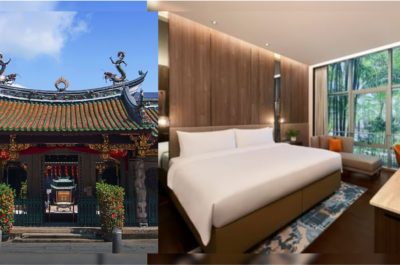
Amara Hotels redesigns flagship Singapore properties

Sabre and InterparkTriple forge AI-driven travel partnership
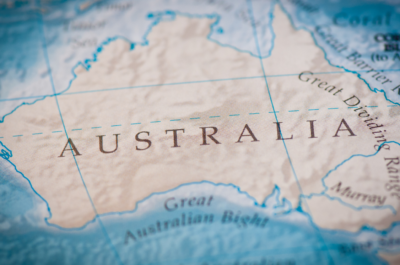
Northern Territory boosts tourism with $68m investment
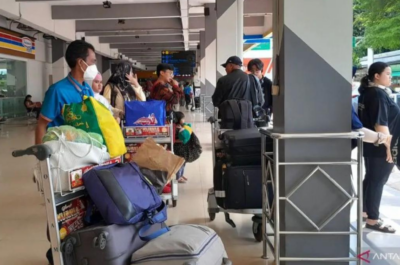
Halim Perdanakusuma Airport manages surge in Eid return traffic
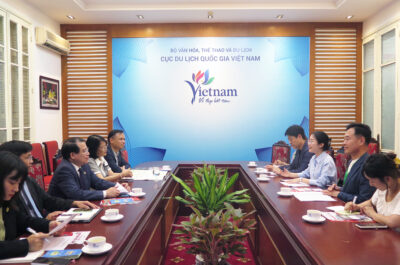
Vietnam and Korea bolster tourism and cultural ties

Macao celebrates 25 years with grand international travel expo

Singapore unveils ‘The Dream Sphere’ Pavilion at Expo 2025 Osaka

Air Astana launches summer flight schedule with expanded services

Southeast Asia’s tourism revival in 2023: Which country is leading the international arrivals
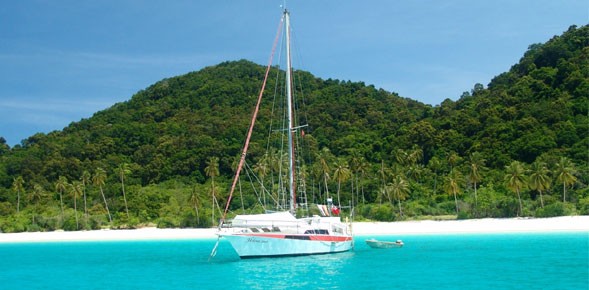
Southeast Asia’s tourism sector in 2023 witnessed significant growth, with Thailand and Vietnam among the key contributors. The region displayed a strong post-pandemic resurgence, marked by increased international tourist arrivals.
The tourism industry in Southeast Asia experienced a robust recovery in 2023, with international arrivals, aviation, and hospitality sectors showing promising trends. This positive outlook is a result of the strong performance in 2022 and the continued efforts of Southeast Asian governments to boost visitor arrivals. Key developments include enhanced connectivity for tourism, such as the ASEAN Framework Agreement on the Facilitation of Cross Border Transport of Passengers by Road Vehicles, which aims to streamline cross-border movement of tourists and promote over-land travel between ASEAN states. Additionally, collaborations like the Lancang Mekong Tourist Cities Cooperation Alliance , involving Cambodia, Lao PDR, Myanmar, Thailand, Vietnam, and China, are indicative of a regional approach to tourism development.
Malaysia led the region with the highest number of foreign tourist arrivals, recording approximately 26 million visitors from January to November. Thailand followed closely, welcoming around 24.6 million tourists during the same period.
Vietnam also saw a notable number of international visitors, with the country hosting 12.6 million foreign tourists over the year. This figure, while substantial, was still around 70% of the pre-pandemic levels. The country’s main source of tourists included South Korea, mainland China, Taiwan, the U.S., and Japan.
The recovery rates of tourism in Southeast Asia varied across countries. Cambodia demonstrated an outstanding recovery, nearly achieving full recovery with a rate of 92.48%. Vietnam and Indonesia also showed strong recovery rates at 82.25% and 74.11%, respectively.
Southeast Asia offers a rich tapestry of experiences for travelers. In Vietnam, tourists can enjoy cultural activities like exploring the old quarter of Hanoi, meeting local craftsmen, and touring historic sites like the Cu Chi tunnels. Thailand provides diverse itineraries, combining sights like Bangkok’s vibrant city life, Chiang Mai’s mountains, and Kanchanaburi’s lush nature. Cambodia offers unique experiences from exploring the Angkor temples to visiting its southern beaches. These destinations are not just about sightseeing; they offer immersive cultural experiences, including the exploration of iconic movie sets and engagement in local arts and handicrafts.
The tourism trends in Southeast Asia are evolving, with a growing interest in wellness and nature trips. This shift reflects a post-pandemic change in tourist preferences, where people are increasingly seeking wellness or outdoor experiences. For instance, in Vietnam, the Avana Retreat provides a blend of wellness services, including yoga classes, spa treatments, nature walks, and local culture tours. This trend aligns with the global emphasis on mental health and well-being, positioning Southeast Asia as a top wellness destination.
The reopening of China ‘s borders is expected to significantly contribute to the recovery of the tourism sector in Southeast Asia. The anticipation of Chinese tourists returning to the region is high, and airlines are preparing to restore and increase flight connections. This development is particularly notable given the International Monetary Fund’s prediction of a strong recovery for Southeast Asia in 2023, despite a dimming global economy. The rise in vaccination rates and a desire to revive hospitality and travel to pre-pandemic levels are expected to increase competitiveness in the region to attract key international tourist markets. Furthermore, technological advancements like VR destination simulators, AI-based personalized travel accommodations, and metasearch engines are poised to enhance the travel experience and provide a competitive edge in the evolving tourism landscape.

Vicky Karantzavelou
Vicky is the co-founder of TravelDailyNews Media Network where she is the Editor-in Chief. She is also responsible for the daily operation and the financial policy. She holds a Bachelor's degree in Tourism Business Administration from the Technical University of Athens and a Master in Business Administration (MBA) from the University of Wales. She has many years of both academic and industrial experience within the travel industry. She has written/edited numerous articles in various tourism magazines.
- Vicky Karantzavelou https://www.traveldailynews.asia/author/vicky-karantzavelou/ jüSTa Hollow Oak opens in Mussoorie: A new luxury experience
- Vicky Karantzavelou https://www.traveldailynews.asia/author/vicky-karantzavelou/ Jinhua delegation enhances trade and cultural ties in Africa
- Vicky Karantzavelou https://www.traveldailynews.asia/author/vicky-karantzavelou/ Sydney Seaplanes to launch direct flight from Sydney to Canberra
- Vicky Karantzavelou https://www.traveldailynews.asia/author/vicky-karantzavelou/ Madhya Pradesh Tourism Board shines at MITT Moscow
Related posts

GenZ women lead rebound in Chinese outbound travel
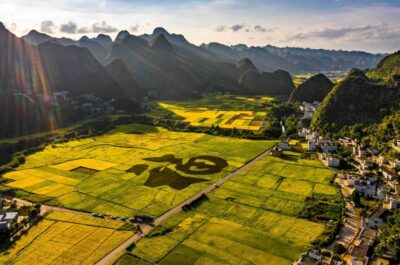
Guizhou Tourism conference aims to create world-class destination
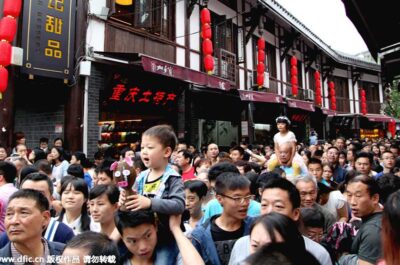
ICBC pledges $41 billion to boost China’s tourism sector

Vietnam ramps up global tourism promotion efforts in 2024
Previous article, next article, media evolution 2024: social media decline, ai fatigue, and journalism's crisis, hungry hub expands global reach through supply partnership with leading online travel agencies and activities platform.
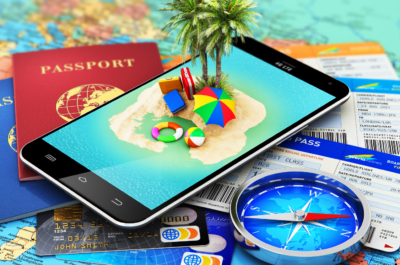
EaseMyTrip expands with new franchise store in Karnal, Haryana
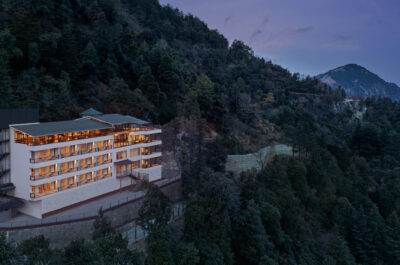
jüSTa Hollow Oak opens in Mussoorie: A new luxury experience
Mercure opens its largest hotel in Singapore’s central business district

Shaping Balanced Tourism: Leveraging Social Influencers, Content Creators, and Bloggers
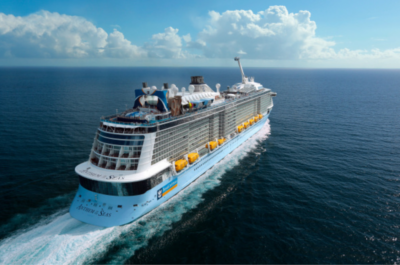
Royal Caribbean reveals exciting 2025-2026 Australia season

Korean Air partners with Ramco Systems to enhance engine maintenance

Jinhua delegation enhances trade and cultural ties in Africa
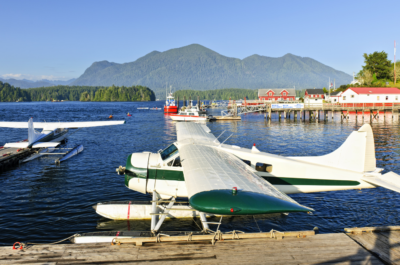
Sydney Seaplanes to launch direct flight from Sydney to Canberra
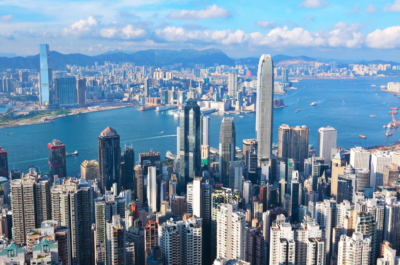
HKTB and Xiaohongshu strengthen partnership to boost Hong Kong tourism
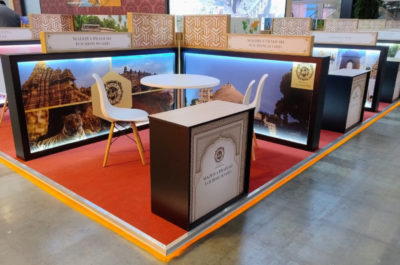
Madhya Pradesh Tourism Board shines at MITT Moscow

Air India expands global customer support with new contact centers
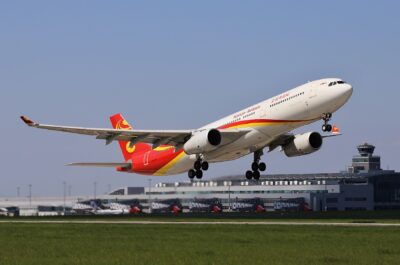
Prague to Beijing direct flights resume, boosting tourism
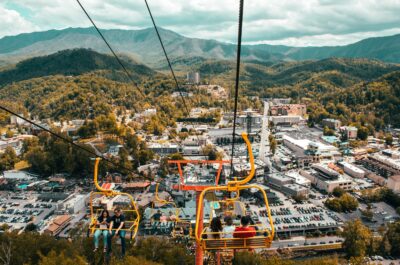
Top must-visit indoor attractions in Pigeon Forge
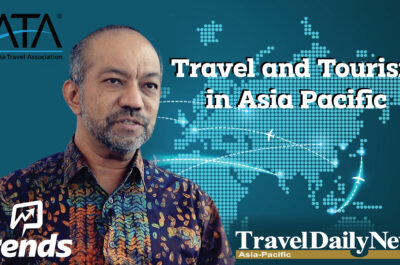
Unveiling Travel Trends: Insights from PATA’s CEO, Noor Ahmad Hamid

Maha Songkran World Water Festival 2024 Unveiled with Epic Spectacle

Addressing Quality Assurance concerns: A critical analysis of Boeing’s production practices
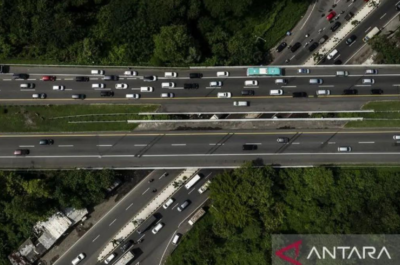
Jakarta police prepare for post-Eid traffic surge, urge strategic planning
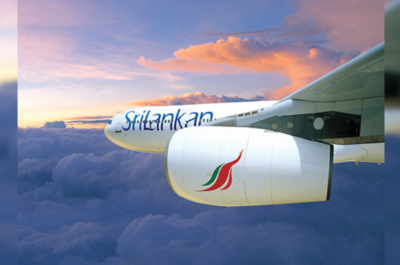
SriLankan Airlines strengthens its global reach as UATP merchant
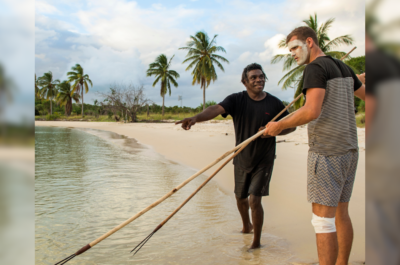
$1 million boost for Aboriginal Tourism in Northern Territory

Ascott partners with Canopy Sands for two new properties in Cambodia
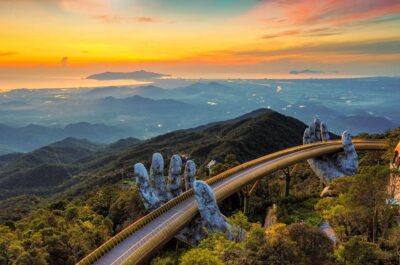
Da Nang joins Vietnam’s MICHELIN Guide culinary destinations
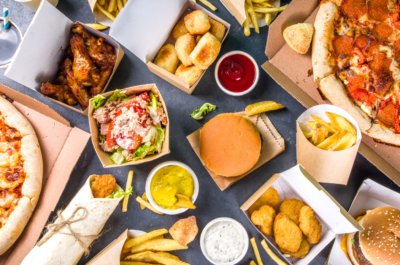
Yum China announces expansion and enhanced stockholder returns in 2023 annual letter
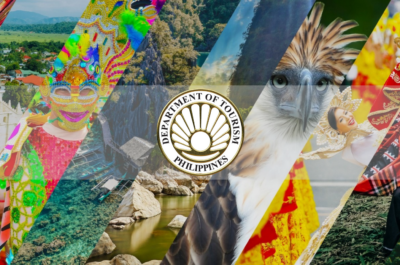
Philippines vies for seven accolades at World Travel Awards 2024
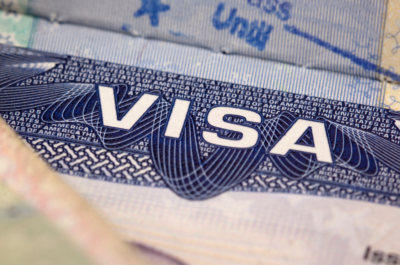
Thailand proposes single-visa scheme with Southeast Asian neighbors

WA Government boosts tourism workforce with training workshops

Courtyard by Marriott Pune Chakan welcomes new F&B Director
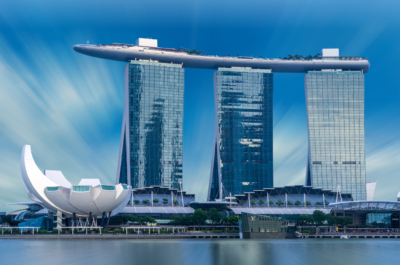
Taylor Swift concerts boost Singapore hotel industry records
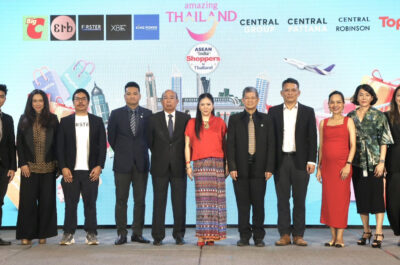
TAT launches ‘ASEAN + India Shoppers in Thailand’ for tourist engagement
BWH Hotels expands with new SureStay in Suvarnabhumi, Bangkok
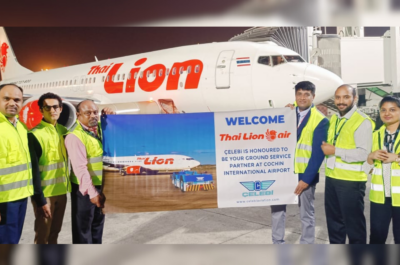
Çelebi India partners with Thai Lion Air at Cochin International Airport
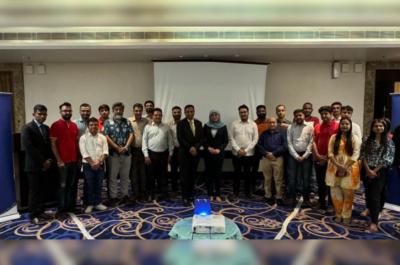
Malaysia Airlines and Tourism Malaysia host events to promote to Indian travellers
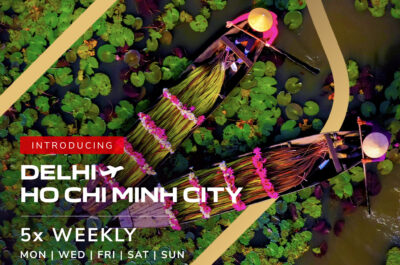
Air India launches direct flights between Delhi and Ho Chi Minh City

HSMAI’S Revenue Optimization Conference (ROC)
Hsmai roc apac 2024: elevating hospitality revenue optimization.

TAT launches global Songkran festival campaign on BBC
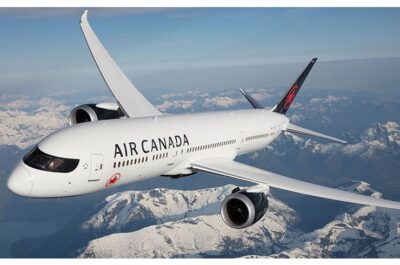
Air Canada resumes Vancouver-Bangkok flights in partnership with TAT

Traveloka partners with Hong Kong Tourism Board to boost Southeast Asian travel
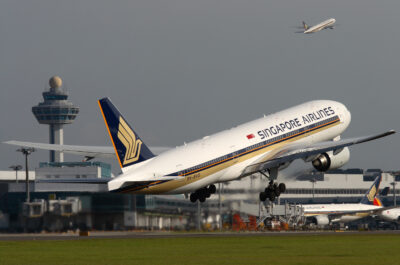
Singapore Airlines relaunches Brussels flights after 20 years

ICC Sydney unveils immersive AV projection in Darling Harbour theatre

Dean Dimitriou appointed General Manager of The Murray, Hong Kong

Ant Group launches program for International Consumer-Friendly Zones in China
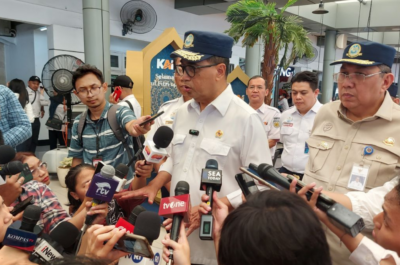
Jakarta shifts Eid Holiday focus to tourist safety, enforces strict bus regulations
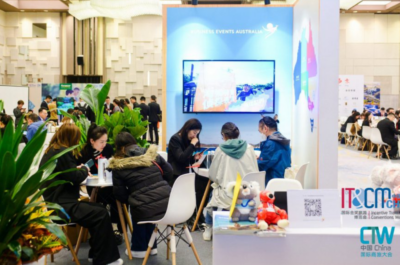
IT&CM China and CTW China 2024 celebrate successful in-person event

Amadeus completes acquisition of Vision-Box, enhancing traveler experience
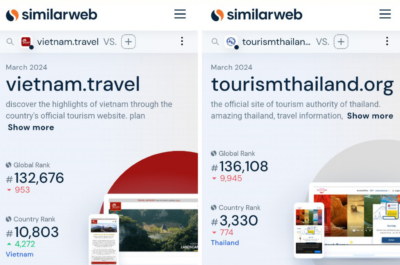
Vietnam’s Tourism website outranks regional competitors, attracting global attention
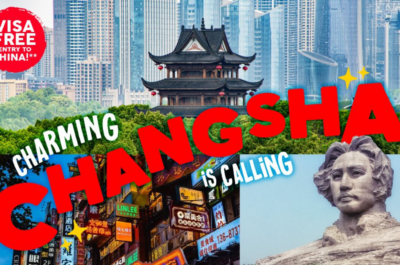
AirAsia X resumes Kuala Lumpur-Changsha flights, expanding China network
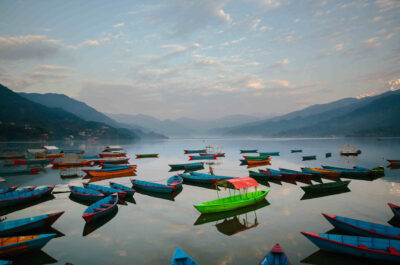
Nepal Tourism Surges with Record-Breaking March Arrivals

Hong Kong Airlines reignites student travel program with 1,000 sponsored tickets

Hotel101 Global det for US NASDAQ listing through merger
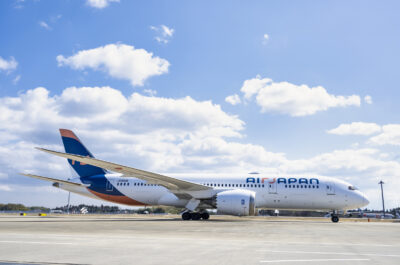
AirJapan elevates travel experience with Sabre’s Radixx technology
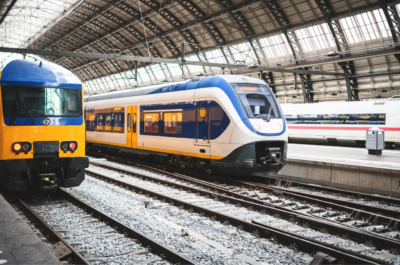
Western Australia celebrates local manufacturing milestone with first C-Series train journey

Air India and BIAL partner to boost Bengaluru as Southern India’s aviation hub
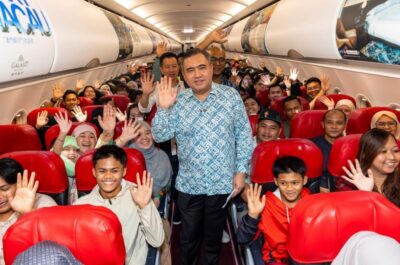
AirAsia launches first late-night fixed fare flights for Hari Raya to Miri
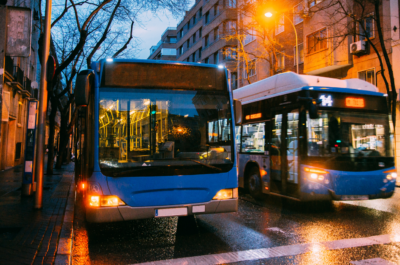
Flipkart expands into bus bookings, offering 10 lakh connections
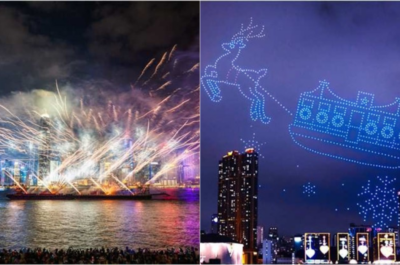
HKTB to launch regular pyrotechnic and drone shows for festivals
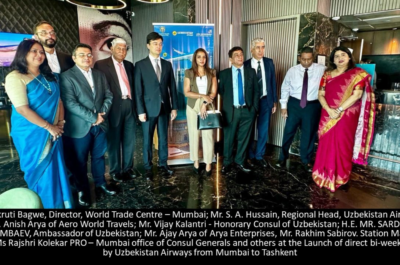
Direct Mumbai to Tashkent flight launched, boosting India-Uzbekistan ties

Wyndham expands in Vietnam with first hotel in Hai Duong

Air India welcomes new Head of Global Airport Operations
clock This article was published more than 1 year ago
Covid gave Southeast Asia a break from overtourism. Now what?
BANGKOK —Beaches brimming with sunbathers. Coves crowded with boats and snorkelers. Trails busy again with hikers and their porters.
More than two years after the coronavirus pandemic brought international travel to a halt, most countries in Southeast Asia have reopened their borders with minimal requirements for vaccinated travelers. Millions arrived over the summer, fueled by pent-up wanderlust. The return of these tourists is a relief for an economically battered region — but it comes with its own costs.
While the pandemic crippled Southeast Asia’s $393 billion tourism industry and erased millions of jobs , it also allowed many of its natural landscapes and heritage sites to recover from years of being trampled and polluted. Now, some government officials and community leaders are pushing against a return to the unbridled tourism that scientists warned for years was causing irreparable environmental harm. At the same time, those who rely on tourist revenue are desperate to welcome back visitors — as many of them as possible.
Welcome to summer travel. It’s hell.
“The industry is very much in flux right now,” said Liz Ortiguera, chief executive of the Pacific Asia Travel Association, a nonprofit that advocates for sustainable travel. A growing number of governments and businesses are asking for ways to make tourism less destructive, she said, but as the pandemic fades, the revival of some ecologically damaging mass tourism is “a given.”
A month after Thailand closed its borders in 2020, a herd of dugongs — among the most endangered marine mammals in the world — were seen floating serenely in the shallow waters off the country’s southern coast. Leatherback turtles took the place of tourists in Phuket, nesting on the beaches at rates that shocked local scientists.
“The pandemic was an excellent opportunity, in a way, to show what happens when humans are able to give nature a break," Varawut Silpa-archa, Thailand’s minister of Natural Resources and Environment, told The Washington Post.
In 2020, Thailand closed all 155 of its natural parks to visitors for the first time ever. While they were reopened in July, Varawut has ordered that every park shut down for at least a month every year. He has also banned single-use plastics from the parks and said he “will not hesitate” to shut down a destination long-term if tourists wreak havoc. He has little concern, he added, for potential opposition from businesses.
“To be blunt, I really don’t care if they agree," Varawut said. “My job is to preserve nature for our future generations.”
Not all attempts in the region to regulate tourism have been successful. In June, Indonesian officials ran into local opposition after proposing that visitors to the ancient Borobodur Temple in Java be limited to 15 at a time and that tickets for foreigners be raised from $25 to $100 to fund conservation. When the government announced plans to hike ticket prices for the Komodo National Park in East Nusa Tenggara, hundreds of tourism workers went on strike . Price increases for both locations are now on hold .
“The challenge,” said Steven Schipani, a tourism industry specialist at the Asian Development Bank, “is that there’s so much sunk investment.”
The number of annual tourist arrivals to Southeast Asia doubled from 2010 to 2019, peaking just before the pandemic at 137 million . This growth was expected to continue at least until 2030, in large part because of a rising regional middle class. In Southeast Asia, businesses and government agencies made major investments to prepare for and profit off these visitors. Much of that infrastructure — airports, hotels, sewage systems — is still in place, said Schipani.
Asia is slowly reopening to travelers. Here’s where you can go.
“There’s capacity for 140 million people,” he noted. And there’s “immense pressure” to make sure that capacity is fulfilled.
In 2018, then-Philippines president Rodrigo Duterte closed the white sand island of Boracay for six months, saying overtourism had transformed it into a “cesspool.” Since reopening , the island has kept certain sustainability measures in place, though these are now being tested. Over Easter weekend in April, Boracay exceeded its daily visitor cap multiple times, authorities said.
Nowie Potenciano, 44, runs several restaurants and a boutique hotel on the island. The tourists returning to Boracay in recent months have been quite literally “hungry” for new experiences, he said, with many ordering more food than they might have in the past. He’s glad they’re back but doesn’t think things can return to “business as usual" post-pandemic.
“It’s something we’re all still figuring out,” Potenciano said. “How do we maintain the volume of visitors without upsetting the delicate balance of the entire island?”
In 2019, nearly 40 million tourists visited Thailand, and many spent time along its dazzling Southern coast. Research shows that from 2017 t0 2019, at least two locations in the south — Patong Beach and Maya Bay — regularly exceeded their “carrying capacity," which refers to the number of people a place can reasonably accommodate without damaging the environment or local community.
Somyot Sarapong, who works for an ecotourism agency in Bangkok, lived and worked on the Phi Phi Islands in the 1990s but left in 2003 when outside developers started to erect tall, concrete hotels on the beachfront that displaced locally run resorts. When Somyot, 56, returned in 2019 to visit friends, he no longer recognized the place he used to consider a “slice of heaven.” Brightly colored fish, once so abundant, had become hard to spot.
Somyot made another trip to the islands earlier this year before Thailand reopened its borders to international visitors. While swimming in the sea, he saw a swarm of blacktip reef sharks, which had become increasingly rare around the islands before the pandemic.
“It gave me the feeling of my first day at Phi Phi,” he said.
China is key to saving the planet from climate change. But it can’t quit coal.
Somyot wants to see the government do more to stave off overtourism, though some experts in sustainability are skeptical that officials will do what’s necessary.
Thailand is renowned for its hospitality and counted on tourism for 11 percent of its gross domestic product pre-pandemic. Like many countries in Southeast Asia, it lacks the kind of zoning, land use regulations and hotel permitting that would allow the government to effectively manage the impact of tourism, experts say, even if there was political will.
But Thon Thamrongnawasawat, a marine scientist at Kasetsart University in Bangkok, believes there’s reason to be optimistic.
“When you drive at a very high speed, it’s hard to slow down. With covid, it’s like the car engine stopped," he said. “Now we’re starting again and we can go carefully, slowly."
The pandemic allowed more Thai people to reacquaint themselves with the beauty of their own country, Thon added. When it comes to protecting it now, he added, “we have a much, much better chance than before.”
Regine Cabato reported from Manila. Wilawan Watcharasakwet contributed reporting from Bangkok.

Advertisement
Supported by
Some Southeast Asian tourism spots reopen, but arrivals are down from millions to dozens.
Hopes for a revival of international tourism have fizzled amid restrictions, paperwork, a lack of flights and uncertainty around the Omicron variant.
- Share full article

By Mike Ives and Muktita Suhartono
Indonesia reopened the island of Bali to fully vaccinated tourists from 19 countries in October. But only two foreign nationals arrived that month — both by sea — and its airport is not yet receiving international flights.
Bali, one of the world’s most popular destinations, is among several tourism hot spots in Southeast Asia that have reopened — technically, at least — to international visitors in recent weeks. For local hotels, tour operators and other businesses whose income was obliterated during the early part of the pandemic , the news originally brought a smidgen of hope that 2021 might end on a positive note.
But traveling to these destinations from other countries is such an undertaking — amid rules, fees, a lack of flights and lingering uncertainty around new outbreaks — that very few people have bothered.
“For all but the most determined, it’s a pretty convoluted process to plan a short holiday,” Stuart McDonald, a co-founder of Travelfish.org , a guide to Southeast Asia, said of international travelers who want to vacation in the region.
Bali, where tourism accounted for more than half of the prepandemic economy, had more than six million international arrivals in 2019. But so far this year, the figure is just 45, said Dayu Indah, the head of the marketing division at the island’s official tourism office. All of those travelers arrived by sea at Benoa Port, down the road from the international airport.
Recent arrival numbers at other Southeast Asian tourist hot spots are not quite as extreme, but they are still miserable by prepandemic standards.
In Malaysia, only a few hundred foreign tourists have visited the resort island of Langkawi since the government partially opened it to visitors this fall — far fewer than the thousands that a local development authority had anticipated.
In Thailand, more than 100,000 foreign visitors arrived in November as part of a quarantine-free entry program for fully vaccinated tourists from dozens of countries. But the country’s total arrival figure for the year — less than 270,000 — is still a tiny fraction of the 40 million who came in 2019.
In Vietnam, foreign tourists began trickling in by the dozens under pilot programs in November, but such numbers are nowhere near the 1.8 million international arrivals that the country recorded in November 2019, according to official data . The programs were started before the Omicron variant was discovered and the country’s case numbers hit a new high.
Part of the problem for Southeast Asia’s tourism industry is that China, a major source of visitors, has imposed so many restrictions on its citizens who travel overseas — including a 14-day quarantine when they return — that very few of them are leaving .
Another problem is a lack of direct flights. Cambodia, for example, reopened to international travelers last month and has waived quarantine for those who are fully vaccinated and submit to testing. But most travelers from outside Asia who want to visit the country would need to transit through aviation hubs elsewhere in the region, such as Malaysia, Mr. McDonald said. That means additional Covid screenings.
“It’s just too complicated,” he said. “You get stuck in quarantine and you test positive. Who wants to have a holiday like that?”
As for Bali, the reasons not to visit include not only a lack of direct international flights, but also Indonesia’s 10-day quarantine for fully vaccinated people and the paperwork required to secure a business visa. (Tourist visas have been suspended.)
Ms. Indah said that Bali’s focus for now was on domestic tourists, and that 12,000 of them arrived by air last weekend.
Muktita Suhartono reports for The New York Times in Indonesia and Thailand. She joined The Times in 2018 and is based in Bangkok. More about Muktita Suhartono
Southeast Asia

- 1 Countries
- 3 Other destinations
- 4.1 History
- 4.2 Culture
- 4.3 Religion
- 4.4 Climate
- 6.1 By plane
- 6.2 By train
- 6.3 By boat
- 7.1 By plane
- 7.2 By train
- 7.4 By boat
- 8.1 Landscapes and nature
- 8.2 Museums
- 8.3 Archaeological sites and precolonial heritage
- 8.4 Colonial heritage
- 8.5 Other sights
- 8.6 Itineraries
- 9.1 Water sports
- 9.2 Massage
- 10.2 Shopping
- 10.3 Bargaining
- 13 Stay safe
- 14 Stay healthy
Southeast Asia is a group of diverse tropical countries between the Indian Ocean and the Pacific Ocean, featuring cultures influenced by both India and China and hosting large communities of Overseas Chinese. The region includes Indonesia, the most populous Muslim country in the world, as well as very prominent Buddhist countries, and quite significant Christian, Hindu and Animist communities. Southeast Asia has long been a favourite corner of the world for globe-tramping backpackers, known for its perfect beaches, tasty cuisine, low prices, and good flight connections.
Countries [ edit ]
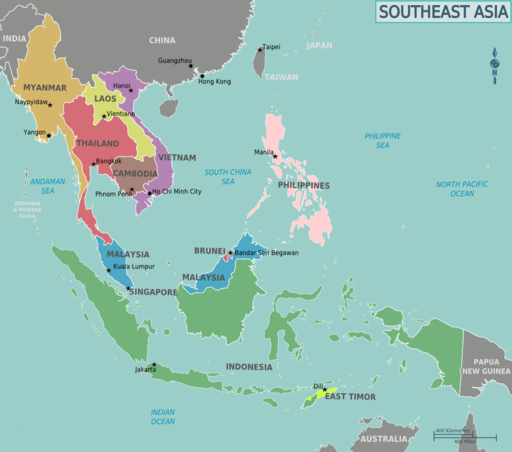
The Australian Indian Ocean Territories of Christmas Island and the Cocos (Keeling) Islands are both geographically and culturally linked to Southeast Asia. However, as they are Australian possessions, they are covered under Australia .
Parts of southern China and Taiwan have similar nature and cultural heritage to Southeast Asia.
North-Eastern India and Bangladesh are influenced by Southeast Asia, but on Wikivoyage they are covered in South Asia .
Disputed territories in the region are:
- Paracel Islands – administered by China but also claimed by Vietnam and Taiwan, not visitable by foreign tourists
- Spratly Islands – a bunch of mostly uninhabited islands and reefs subject to a dizzying mess of territorial disputes, but the only destination of note is the dive resort Layang Layang , which is under Malaysian control.
Aside from East Timor, the other ten nations listed above are members of ASEAN, the Association of Southeast Asian Nations. East Timor is an observer in ASEAN and is in the process of seeking full membership. Papua New Guinea is also an observer, but is rarely considered to be part of Southeast Asia.
Cities [ edit ]
Nine of the most prominent cities in Southeast Asia include:
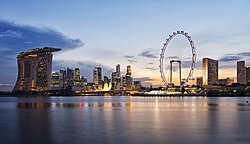
- 13.75 100.516667 1 Bangkok — the world's most popular tourist destination, Thailand's capital is justly famous for temples, food, shopping and nightlife
- 10.775556 106.701944 2 Ho Chi Minh City (formerly Saigon) — Vietnam's largest city is at the epicenter of the country's frenetic economic boom
- -6.175 106.8275 3 Jakarta — sprawling, congested and vibrant, the Indonesian capital is the largest city in southeast Asia
- 3.147778 101.695278 4 Kuala Lumpur — Malaysia's capital has grown from a small sleepy Chinese tin-mining village to a bustling metropolis
- 19.89 102.134722 5 Luang Prabang — a UNESCO World Heritage City in Laos known for its numerous temples, colonial-era architecture and vibrant night market
- 14.595833 120.977222 6 Manila — the enormous Philippine capital spans the gamut from the Spanish colonial era to skyscrapers
- 11.569583 104.921028 7 Phnom Penh — Cambodia's capital took a battering during the Khmer Rouge years, but is striving to reclaim its old title as "The Pearl of Asia"
- 1.3 103.8 8 Singapore — supermodern, dense, affluent city with a medley of Chinese, Indian, Malay and British influences
- 16.795 96.16 9 Yangon (formerly Rangoon) — the commercial capital of Myanmar, known for its pagodas and colonial architecture
Other destinations [ edit ]

Outside of major cities here are some of the most rewarding destinations:
- 13.433333 103.833333 1 Angkor Archaeological Park — magnificent remains of several capitals of the Khmer Empire
- -7.60793 110.20384 3 Borobudur — one of the largest Buddhist temples in the world
- 4.0425 114.8125 4 Gunung Mulu National Park — fantastic limestones caves and karst formations
- 20.9 107.2 5 Ha Long Bay — literally translated as "Bay of Descending Dragons", famous for its scenic rock formations
- -8.651625 119.576569 6 Komodo National Park — the only home of the komodo, the biggest reptile in the world
- 8.057778 98.916944 7 Krabi Province — beach and water sports mecca, includes Ao Nang , Rai Leh , Ko Phi Phi and Ko Lanta
- 10 118.833333 8 Palawan — an ecologically diverse and relatively unclogged island at the western fringe of the Philippines with some of the most rewarding diving and swimming sites in the world
- 14.390556 104.680278 9 Preah Vihear — cliff-top temple pre-dating Angkor Wat
Understand [ edit ]
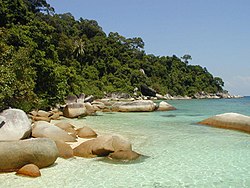
Southeast Asia is one of the world's most popular tourist destinations, and for a reason. Some of the countries here have it all: a tropical climate , warm (or hot!) all year around, rich culture , gorgeous beaches , wonderful food and last but not least, low prices . While its history and modern-day politics are complex, most of it is also quite safe and easy to travel around in.
The region is also a very popular destination for retiring abroad , and several governments in the region offer special long-term visas specifically for retirees.
History [ edit ]

Southeast Asia is a very diverse region, with numerous ethnic groups of different origins.
Pre-historic Southeast Asia was lightly populated. The first group of people known to populate Southeast Asia were the Austroasiatic peoples, who were believed to have originated in what is today southern China, and are believed to be the ancestors of today's Vietnamese, Khmer and Mon peoples. Later groups to follow including the Tai people, who are believed to be the ancestors of today's Thai, Lao and Shan peoples, Sino-Tibetan peoples who are believed to be the ancestors of today's Bamar and Rakhine peoples, and the Hmong. The Malay Archipelago and Malay Peninsula were mainly populated by Austronesian peoples, who are believed to trace their origins to the indigenous peoples of Taiwan .
Indian influences would begin to grow among the various Southeast Asian peoples starting from the first century AD, in a process known as Indianization . The exact way through which this happened is disputed, though the most popular theory is that Brahmins travelling in the ships or caravans of traders from India brought Hinduism and later, Buddhism with them and spread it to the elite classes, from whom it trickled down to the rest of the population. The Indic scripts still used to write modern Thai, Lao, Burmese and Khmer have their roots from this process, and those languages, along with others such as Javanese, Balinese, Malay and Cham would adopt many loan words from Sanskrit. Many of these peoples would eventually build powerful Indianized kingdoms, including the Khmer Empire , Champa, Funan, Bagan Empire, Sukhothai Kingdom, Srivijaya and Majapahit. Today, Hinduism is primarily concentrated on the Indonesian island of Bali , though many traditions and stories of Hindu origin continue to survive throughout the region, even among peoples who are Buddhist, Muslim or Christian. Theravada Buddhism, on the other hand, is the dominant religion in Thailand, Myanmar, Cambodia and Laos, albeit still syncretised with Hinduism and local folk religions to varying extents.
Vietnam, on the other hand, would come to be heavily influenced by China, having been occupied by the Chinese Han, Tang and Ming dynasties. While the Vietnamese eventually succeeded in driving the Chinese out each time, the Chinese would leave a deep impact on Vietnamese society, with Confucianism and Taoism being hugely influential in shaping Vietnamese social etiquette, and the Chinese system of bureaucracy being adopted by many Vietnamese dynasties. Mahayana Buddhism also made its way into Vietnam via China, and although the official census today says that most Vietnamese are non-religious, most Vietnamese still practise a syncretic mix of Taoism, Confucianism, Mahayana Buddhism and Vietnamese folk religion to one degree or another. Vietnam also adopted Chinese characters to write the Vietnamese language, though this was replaced by the Latin alphabet during the French colonial period, and today, the old Chinese-based writing system only survives among the small ethnic Vietnamese minority in China.
Islam would arrive with Arab traders in the 7th century, and start spreading throughout much of the Malay Archipelago in the 12th century. The Malacca sultanate was initially founded as a Hindu kingdom, but converted to Islam in the 15th century, thus becoming the first powerful Muslim kingdom in the region, and leading to Islam becoming the dominant religion in the Malay Archipelago. The Arabic script would also be adopted to write the Malay language, though it was largely replaced by the Latin alphabet under British colonial rule. The Arabic script continues to be official in Brunei, and is used by some in more conservative Malaysian states such as Terengganu and Kelantan, though it is far less common than the Latin alphabet in both countries outside of religious publications.
Southeast Asian history is very diverse and often tumultuous, and has to an important extent been shaped by European colonialism . The very term Southeast Asia was invented by American Naval strategists around 1940. Prior to WWII, Southeast Asia was referenced in terms of their colonial powers; farther India for Burma and Thailand , with reference to the main British colony of India, although Thailand itself was never colonised; Indochina referred to the French colonies of Cambodia , Vietnam and Laos , while Indonesia and parts of maritime Southeast Asia were called the Dutch East Indies . Peninsular Malaysia and Singapore were known as British Malaya , while Sabah was known as British North Borneo . Sarawak , on the other hand, was the Kingdom of Sarawak , ruled by a British family known as the White Rajahs . Brunei was also made into a British protectorate, with the British taking charge of its defence and foreign affairs. The Philippines was named the Spanish East Indies during the initial period of Spanish colonial rule, and later came to be known by its current name in honour of King Philip II of Spain, a name which stuck even after the islands were transferred from Spanish to American colonial rule. East Timor was colonized by Portugal for 273 years, then occupied by Indonesia for 27 years before becoming the first nation to gain independence in the 21st century. This massive colonisation effort was fueled by the lucrative spice trade , which in turn encouraged heavy immigration of workers to support the harvest and sale of plantation crops like nutmeg, rubber and tea.
World War II was disastrous to Southeast Asia (see Pacific War for a detailed guide), and also saw the beginning of the end of Western colonialism, as the Western powers surrendered to Japan one by one in disgrace. By the end of 1942, the Japanese had conquered virtually the whole of Southeast Asia, with only Thailand remaining unconquered, as the Thais signed a treaty of friendship with the Japanese that allowed the Japanese to establish military bases in Thailand, and allowed Japanese troops free passage through Thailand. The Japanese occupation was a time of great hardship for many of the natives, as the Japanese took all the resources for themselves, and exploited and in many cases outright enslaved the locals for their own gain. They were also for the most part more brutal than the Western colonial powers to the people under occupation, especially towards the ethnic Chinese. However, the Japanese occupation convinced many locals that the Western powers were not invincible after all, and thereby had the effect of helping the independence movements to gain pace after the end of the war.
After the war, the decolonisation process started in Southeast Asia, with the Americans granting independence to the Philippines in 1946, while the British granted independence to Burma in 1948, followed by Malaya in 1957 and eventually Singapore, Sarawak and North Borneo in 1963, which federated with Malaya to form Malaysia. After some ideological conflicts, Singapore was expelled from Malaysia in 1965 and became a sovereign state. In contrast to the relatively peaceful withdrawals by the British and Americans, the Dutch and the French fought bloody wars in an effort to hold on to their colonies, and earned humiliating defeats. Indonesia gained independence from the Dutch in 1949, and Indochina forced the French military to withdraw and separated into the countries of Laos, Cambodia, and Vietnam in 1954; see Indochina Wars . However, Vietnam would be split into two, with Ho Chi Minh establishing a communist regime with the support of the Soviet Union in the north, and Ngo Dinh Diem establishing a capitalist regime with the support of the United States in the south. This ideological conflict would spark off the Vietnam War in 1955, and it only ended in 1975 when a North Vietnamese tank drove into the Presidential Palace of South Vietnam in Saigon, and unified the country under communist rule.
European colonialism came to an end in Southeast Asia in 1984, when Brunei was granted full independence by the British. Indonesia occupied East Timor in 1975 after it declared independence from the Portuguese following a coup in Portugal, and only left in 1999 following a United Nations referendum. East Timor was then occupied by a United Nations peacekeeping force, before finally becoming independent in 2002. The 2004 Indian Ocean tsunami was devastating to parts of the Indonesian island of Sumatra (especially Aceh , which lost well over 100,000 people to the roiling waters), Thailand, Myanmar and Malaysia.
Since the 1990s, Southeast Asia has had a relatively high rate of economic growth, with Malaysia , Indonesia , the Philippines , Thailand and Vietnam often being called the "Tiger Cub Economies" (in reference to the original East Asian Tigers of Singapore , Hong Kong , Taiwan and South Korea ). Nevertheless, despite being one of the most fertile and resource rich regions in the world, widespread corruption means that poverty is still an issue in many countries, with much of the wealth concentrated in the hands of an elite few. In the 21st century, China is increasingly becoming a major player in the region; China is now the largest source of international tourists to most Southeast Asian countries, and has also invested substantially in infrastructure under the auspices of the Belt and Road Initiative.
Culture [ edit ]

Southeast Asia's culture is dominantly influenced by the Indians and Chinese as well as its colonizers, and also natives of the Malay archipelago. For at least 2000 years (and to this day), Southeast Asia has acted as a conduit for trade between India and China. Large-scale immigration, however, only began with the advent of the colonial era. In Singapore, the Chinese form a majority of the population, but there are substantial Chinese, Indian and other minorities, assimilated to varying degrees, across all countries in the region.
Many large businesses in Southeast Asia are owned by ethnic Chinese, who tend to have a disproportionately large economic clout relative to their population. They have long been resented by other segments of the population, and are often the target of discriminatory laws and in extreme cases, even ethnic violence. However, progress is being made, with some countries such as Indonesia, Thailand and Vietnam having since repealed many of the said discriminatory laws.
Thai, Burmese, Cambodian and Lao cultures are heavily Indian-influenced in areas such as faith, folklore, language and writing, but have also absorbed heavy Chinese influences in their cuisines. Malaysia, Indonesia and Brunei are also influenced by the Indians, Malays and Chinese with a touch of Arab culture due to the large Muslim populations. Vietnam is the most Chinese-influenced. East Timor's culture is influenced notably by the Portuguese and the Malays. Singaporean and Filipino cultures are the most diverse: Singapore's is a mix of Malay, Indian, Peranakan, British, American and Chinese cultures while the Philippines is heavily influenced by American, Spanish, Malay, Chinese, Japanese and Portuguese influences with less coming from India, Mexico and non-Iberian parts of Europe, making it perhaps the most Westernized nation in the region.
Although Hinduism used to be dominant in the region, these days most Southeast Asians adhere to either Islam, Christianity or Buddhism. However, vestiges of Hinduism continue to survive in the folk tales and cultural practices of many Southeast Asians regardless of religion, and some nominally Muslim Javanese people practise a syncretic religion known as Kejawen that fuses Muslim, Hindu and animist beliefs.
Religion [ edit ]

Southeast Asia is religiously diverse. Malaysia , Indonesia and Brunei are predominantly Sunni Muslim , while East Timor and the Philippines are predominantly Roman Catholic . Buddhism is the dominant religion in Thailand , Myanmar , Laos , Cambodia and Vietnam , with Mahayana Buddhism being the dominant form in Vietnam, and Theravada Buddhism being the dominant form in the other countries. Singapore is by some measures the most religiously diverse country in the world and does not have a majority religion, though Mahayana Buddhism forms a plurality.
However, religious minorities exist in every country. The ethnic Chinese minorities in the various countries practice a mix of different religions, including Taoism and Mahayana Buddhism. Hinduism is still observed in parts of Indonesia, most notably Bali , as well as by the Cham community in Vietnam, and a sizeable proportion of the ethnic Indian communities in Malaysia, Singapore, Thailand and Myanmar. The southern parts of Thailand and the Sulu Archipelago of the southern Philippines are home to ethnic Malays who mostly practice Islam, and the Philippine island of Mindanao is also home to a sizable Muslim community. Christian minorities also exist in every country, most notably in Papua , East Nusa Tenggara and North Sulawesi in Indonesia, as well as in East Malaysia , and in the border area of Thailand and Myanmar. Animistic tribal religions are also practised, especially by some of the people living in remote jungle or mountainous areas.
Climate [ edit ]
Southeast Asia is tropical : the weather hovers around the 30°C mark throughout the year, humidity is high and it rains often.

The equatorial parts of Southeast Asia, including Malaysia, Brunei, Indonesia, Singapore, the Philippines and southern Thailand, have two or three seasons — wet , dry , and a nameless rest of the year when it sometimes rains and sometimes does not — with the dry season somewhat hotter (up to 35°C) and the wet season somewhat cooler (down to 25°C). The wet season usually occurs in winter, and the hot season in summer, although there are significant local variations.
In Indochina (north/central Thailand, Laos, Cambodia, southern Vietnam, Myanmar), the seasons can be broken down into hot , wet and dry , with the relatively cool dry season from November to February or so being the most popular with tourists. The scorching hot season that follows can see temperatures climb above 40°C in April, cooling down as the rains start around June. However, even in the "wet" season, the typical pattern is sunny mornings with a short (but torrential) shower in the afternoon, not all-day drizzle, so this alone should not discourage you from travel.
Northern Vietnam has four distinct seasons, with a climate similar to that of Hong Kong and Taiwan .
Southeast Asia is also home to many mountains, and conditions are generally cooler in the highlands. In equatorial Southeast Asia, highland temperatures generally range from about 15-25°C. Some of the highest mountains in Indonesia, Vietnam, and Myanmar are so high that snow falls every year, and Indonesia and Myanmar are even home to permanent glaciers.
In Malaysia , Brunei , Singapore , and parts of Indonesia (notably Sumatra and Borneo ) and the Philippines (notably Palawan ), haze from forest fires (usually set intentionally to clear land for agriculture) is a frequent phenomenon in the dry season from May to October. Haze can come and go rapidly with the wind.
Talk [ edit ]
English is a traveller's most useful language overall, although for longer stays in almost any Southeast Asian country except Singapore, picking up at least some of the local language is useful, and may be essential outside the cities.
The main language groups are:
- Austroasiatic - Vietnamese and Khmer are spoken in Vietnam and Cambodia respectively. Also includes the Mon language, spoken by the Mon ethnic minority in Myanmar
- Austronesian - Malay , Indonesian , Javanese , Tagalog , Cebuano , Ilocano , Tetum and related languages are spoken throughout the island nations of Malaysia , Indonesia , the Philippines , East Timor and Brunei , and by a significant minority in Singapore . Malay and Indonesian are very similar to each other, and speakers of either language can generally understand the other. Also includes the Cham language spoken by the Cham ethnic minority in Vietnam and Cambodia.
- Kra–Dai (Tai–Kadai) - Thai and Lao are spoken in Thailand and Laos respectively. Both languages are mutually intelligible to a certain extent. Also includes the Shan language, spoken by the Shan ethnic minority in Myanmar .
- Sino-Tibetan - Burmese is closely related to Tibetan, and more distantly related to the Chinese family of languages. Mandarin is an official language of Singapore, and widely spoken by the ethnic Chinese minorities in Malaysia, Brunei and Myanmar. Various Chinese dialects are spoken by the sizeable Chinese communities throughout the region. The Rakhine language of Myanmar's Rakhine ethnic minority is similar to Burmese, and often considered to be a dialect of it.
The Chinese languages have a large influence, with Mandarin being an official language in Singapore and southern variants such as Cantonese , Hokkien , Teochew , Hakka , Fuzhou dialect and Hainanese being spoken in ethnic Chinese communities across the whole region. Many of the local languages contain loan words from various Chinese dialects, particularly when it comes to culinary terms. In addition, due to centuries of Chinese cultural dominance, much of Vietnamese vocabulary consists of loan words from Chinese. Southeast Asia is a prime destination for China's rising tourism industry, and Mandarin is becoming more prevalent in order to cater for it.
Various Indian languages are also spoken by much of the Indian diaspora in the former British colonies of Malaysia, Singapore and Myanmar, the most widely spoken of them being Tamil , which is one of the official languages in Singapore. Other Indian languages that you might hear include Malayalam and Punjabi . Due to a long history of Indian influences in the region, many Southeast Asian languages, including Malay, Indonesian, Thai, Lao, Burmese and Khmer contain many loan words from Sanskrit . Moreover, the Thai, Khmer, Lao and Burmese languages continue to use Indic scripts related to those used by most Indian languages as their writing systems.
Portuguese remains an official language of East Timor , and a Portuguese-based creole is still being spoken in some Malaysian communities.
English the main language of business and administration in Singapore, and a common second language in the Philippines, Malaysia and Brunei. In areas popular among tourists in the region such as Bali , Phuket and Luang Prabang , English is widely spoken by people working in the tourism industry, although with varying degrees of proficiency. Business people who deal with international clients generally speak a decent level of English.
French is still spoken and taught in Vietnam, Laos and Cambodia, although its situation varies by country. In Vietnam, it is known by many educated Vietnamese, especially those schooled before 1975, though today English is the more preferred second language among youths. In Laos, French is widely used among the educated populace and features on most public signage. In Cambodia, French is limited chiefly to urban and elderly elites and a handful of university educated students.
The other languages of the former colonial countries are generally not spoken so widely anymore or at all. You may notice English words in Malay , Dutch words in Indonesian and Spanish words in Tagalog (Philippines).
Get in [ edit ]
Malaysia , Brunei , the Philippines , Singapore and Thailand do not require visas for most Western visitors. Indonesia , Cambodia , Laos , and East Timor offer visas on arrival for citizens of most Western countries at most points of entry. Vietnam and Myanmar require advance paperwork for most visitors, but most Western visitors are eligible for eVisas, thus saving you the hassle to needing to make your way to an embassy or consulate.
Travellers to ASEAN nations (all nations covered in this article except East Timor) may need to be aware of the effects on visas . ASEAN citizens are entitled to visa-free tourist travel to most other ASEAN countries, and agreements are in place with nearby nations such as China which affect visas in either direction. Visa-free travel may be for a shorter period than travel with a visa, limited to as little as 14 days. A common ASEAN travel area, similar to the Schengen Agreement for Europe, is proposed but has not yet been implemented. Visitors from outside the ASEAN area still need to consult the specific visa requirements for the countries they are visiting. Business travellers may wish to take advantage of tariff reductions and other economic measures between the nations. For visitors, however, normal duty free limits on cigarettes, alcohol, perfume and the like, apply when travelling between them.
By plane [ edit ]

The main international gateways to Southeast Asia are Bangkok ( BKK IATA ), Singapore ( SIN IATA ), Kuala Lumpur ( KUL IATA ), and Jakarta ( CGK IATA ). Other airports with good connections outside the region include Manila ( MNL IATA ), Denpasar ( DPS IATA ), Phuket ( HKT IATA ), Ho Chi Minh City ( SGN IATA ) and Hanoi ( HAN IATA ). Hong Kong also makes a good springboard into the region, with many low-cost carriers flying into Southeast Asian destinations.
Travellers from the U.S. and Canada can often find competitive prices on Taiwan's EVA Air, Hong Kong's Cathay Pacific, Japan's ANA and Japan Airlines, and South Korea's Korean Air connecting through their respective hubs, while travellers from Latin America, Africa and Europe can often find competitive prices on the Gulf trio of Emirates, Qatar Airways and Etihad Airways.
Singapore Airlines , Malaysia Airlines and Thai Airways are all known for their great service and safety records. Philippine Airlines is the oldest airline in this part of the world still flying under the original name, while Vietnam Airlines and Garuda Indonesia are slowly but surely growing their intercontinental networks. Rapidly expanding AirAsia flies out of its Kuala Lumpur hub to many major East Asian and South Asian cities, as well as long-haul routes to Sydney , Melbourne , Perth and Auckland , with connections available to other Southeast Asian cities through its Kuala Lumpur hub. AirAsia also operates several secondary hubs in Jakarta, Bangkok and Manila, as well as a dense network into Singapore. In addition to AirAsia, long-haul budget flights can be booked into the Jetstar and Scoot hub in Singapore or the Cebu Pacific hub in Manila.
Travellers to ASEAN nations are starting to benefit from the ASEAN Single Aviation Market policy, a gradual process of opening up the markets which is moving slowly but surely.
By train [ edit ]
There is a railway line to Hanoi , Vietnam from Nanning , China . There are no connections between Vietnam and other Southeast Asian countries yet, although there are plans for links through both Cambodia and Myanmar onward to the existing Thailand - Malaysia network. A new railway line from Kunming , China to Vientiane , Laos was completed in December 2021, with one international train in each direction daily since April 2023. There are plans to eventually extend the railway all the way to Bangkok, Kuala Lumpur and Singapore, but completion is still a long way away. Such plans have existed since the colonial era, but China's Belt and Road Initiative has injected them with new vigor and capital.
By boat [ edit ]
Southeast Asia is a popular destination for round the world cruises, and many of them make several stops in Southeast Asia with the option to go for shore excursions. Popular ports of call include Singapore , Langkawi , Penang , Tioman , Redang , Phuket , Nha Trang , Ha Long Bay , Ho Chi Minh City and Ko Samui .
Get around [ edit ]
With the exception of Singapore , public transport networks in Southeast Asia tend to be underdeveloped. However, due to reckless driving habits, driving is also usually not for the faint-hearted. Most of the time, plane, bus or rail travel tends to be the best way to get around.
There are local means of transport based on converting a motorcycle, truck, van or even bicycle to haul passengers. These include jeepneys , UV Express and traysikels in the Philippines, songthaews and tuk-tuks in Thailand, and similar vehicles elsewhere. Unmodified motorcycles also provide taxi services in various places. All these modes of transport are generally cheap and rather colorful, but somewhat uncomfortable and perhaps dangerous.
Be aware of various scams when crossing international borders. If someone offers to help you obtain a visa for the next country, or tries to direct you to a "health check", you can be certain that that person is trying to scam you. In Thailand , Vietnam , Myanmar , Cambodia and Laos , it is not uncommon for immigration officers to ask for bribes to stamp you in or out of the country; this is usually not a problem at airports, but bribes of up to US$10 per person are often demanded at land borders.
The most popular ride sharing apps with a strong presence in multiple Southeast Asian countries are Malaysia's Grab and Indonesia's Gojek . Uber and Lyft do not have a presence.

Much of Southeast Asia is now covered by a dense web of low-cost carriers, the largest being Malaysian carrier AirAsia and its Thai, Indonesian and Filipino affiliates, making this a fast and affordable way of getting around. Bangkok , Jakarta , Kuala Lumpur and Singapore are the main hubs for budget airlines in the area.
Full-service carriers have spun off their own low-cost airlines to compete, which have taken over many leisure routes completely. Examples include Scoot in Singapore, Thai Smile [dead link] in Thailand and Firefly in Malaysia. These larger multinational budget airlines and most national carriers are respectable, but some of the smaller airlines have questionable safety records, especially on domestic flights using older planes. Do some research before you buy.
Services along the main Jakarta - Singapore - Kuala Lumpur - Bangkok business corridor are extremely frequent, with frequencies almost like a bus service in the daytime, meaning that competition is stiff and prices are low if you book in advance.
Due to the high rates of road accidents in most the region, trains in Southeast Asia are generally considered to be a safer option than buses, especially during the night, although in most cases the journey by train takes longer than by bus. Most of Southeast Asia's railways are relics of the colonial era, meaning that they are mostly single track and use diesel locomotives, so delays are common, and speeds are rather slow.
Thailand has the most extensive network, with relatively frequent and economical (albeit slow, compared to most buses) and generally reliable services. The main lines from Bangkok are north to Chiang Mai ; northeast via Nakhon Ratchasima (Khorat) to Nong Khai and also east to Ubon Ratchathani ; east via Chachoengsao to Aranyaprathet and also southeast via Pattaya to Sattahip ; and south via Surat Thani (province) to Ko Samui , Ko Pha Ngan , Ko Tao and Hat Yai , through Malaysia via Butterworth , Kuala Lumpur , and Johor Bahru , to Singapore .
Vietnam has a line linking the country from north to south but again, speeds are rather slow.
The networks in Indonesia and Myanmar are more limited and decrepit and perhaps best experienced for their nostalgic value. The sole exception in Indonesia is the new high-speed train between Jakarta and Bandung . The Philippines has a limited railway network in Luzon island, which fell into neglect, but is slowly being rebuilt and expanded through foreign aid. Cambodia 's railways were badly hit by the civil war, but have been rehabilitated in the 2010s; there are two lines radiating out of Phnom Penh ; one to the seaside resort town of Sihanoukville , and the other to the second largest city Battambang .
Malaysia and Laos have relatively fast, modern and comfortable electrified and doubled-tracked railways. The Kunming - Vientiane railway line has trains travelling at up to 160 km/h in the Lao section, which crossing the border into Laos from China at Boten , before continuing through on to Vientiane via Luang Prabang and Vang Vieng . In Malaysia, KTM's ETS service runs along the West Coast of Peninsular Malaysia from Gemas to Padang Besar at the Thai border, passing through Kuala Lumpur and Ipoh along the way, and with a branch line heading from Bukit Mertajam to Butterworth (for transfers to the ferry to George Town ). Trains on this line can hit a top speed of 140 km/h.
By bus [ edit ]
Buses are a cheap and popular mode of transport in Southeast Asia. They tend to be faster than the train and serve more cities in countries with limited to non-existent rail networks, but less safe due to the local driving habits and road conditions.
Classes and styles of buses vary by country, but most Southeast Asian countries have luxury or first-class buses on long-haul routes between major cities. Minibuses or buses without air-conditioning are common in poorer regions. Local buses tend to be available only in the large cities. Cross-border bus services are also available.

International ferry links are surprisingly limited, but it's possible to cross over from Malaysia to Sumatra (Indonesia) and from Singapore to the Riau Islands (Indonesia) and Johor (Malaysia). Various cruises also operate between Singapore, Malaysia, and Thailand, occasionally venturing as far as Cambodia, Vietnam, and even Hong Kong.
Domestic passenger ferries link various islands in Southeast Asia, particularly in Indonesia and the Philippines , but safety regulations are often ignored, boats overloaded and sinkings are not uncommon. Be sure to inspect the boat before you agree to get on, and avoid boats that look overcrowded or too run down.
By car [ edit ]
Getting around continental Southeast Asia as well as intra-island travel in the various islands of Southeast Asia by car is possible, but definitely not for the faint-hearted. While you can drive yourself around Singapore , Malaysia , Thailand and Brunei without any major problems after giving yourself some time to get used to the relative lack of road courtesy, traffic conditions elsewhere range from just bad to total chaos. As such, it is advisable to rent a car with a driver, and not try to drive yourself around.
Traffic moves on the left in Indonesia , Malaysia , Thailand , Brunei , East Timor and Singapore , and moves on the right elsewhere.
See [ edit ]
Landscapes and nature [ edit ].

From active volcanoes to spectacular coastlines, from pristine rainforests to equatorial glaciers, and from impressive rice terraces to great river systems. Southeast Asia has it all. There are fourteen natural UNESCO World Heritage sites in the region, with dozens more on the tentative list, and hundreds of national parks and otherwise protected nature areas.
Most countries in Southeast Asia have impressive mountain ranges . The highest mountains of the region (more than 5,000 m) can be found in the eastern end of the Himalayas in Northern Myanmar , but almost equally high are the mountains of the Lorentz National Park of Indonesia's Papua province, known for their equatorial glaciers. Another high mountain (almost 4,100 m), that is easier to reach and therefore popular for climbing, is Mount Kinabalu in the Malaysian part of Borneo. As Southeast Asia is on the Ring of Fire of the Pacific Ocean, there is a large number of (active) volcanoes , mainly in Indonesia and the Philippines. The highest volcano of the Philippines is Mount Apo . The Indonesian archipelago has more than 100 active volcanoes, with the most active one being Mount Merapi (including eruptions in 2020), and the most popular tourist destination being Mount Bromo .

Tropical rainforests dominate the landscape in much of Southeast Asia, from the monsoon forests of the mainland to the equatorial evergreen rainforests of the islands of Indonesia and the Philippines. Some of the key rainforest national parks on the mainland include Khao Sok and Khao Yai in Thailand and Taman Negara in Malaysia. The rainforests of Sumatra and Borneo are known as the habitat of the orangutan . Many of the rainforests and other landscapes in Southeast Asia are home to (critically) endangered animal species, such as several primate species in Vietnam's Cuc Phuong area, the Javan rhinoceros in Indonesia's Ujung Kulon lowland rainforest, and the Indochinese tiger in several areas of Southeast Asia's mainland, notably the Thungyai-Huai Kha Khaeng Wildlife Sanctuaries . The Komodo National Park in Indonesia is home to the world's largest lizard, the Komodo dragon .
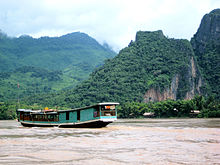
The key river of Southeast Asia, often called the lifeblood of the Indochina region, is the Mekong , that flows from China towards the South China Sea, passing five Southeast Asian countries on its way: Myanmar, Laos, Thailand, Cambodia, and Vietnam (the Mekong Delta ). In Cambodia, the Mekong creates the unique ecological phenomenon of the Tonle Sap lake. Also in Cambodia, around the town of Kratie , river dolphins can be found. The second-longest river of the region is the Salween , flowing mostly in Myanmar. An interesting river is the subterranean river of Puerto Princesa in the Philippines, with 8 km in length possibly the longest underground river in the world. Apart from Tonle Sap, other large lakes in the region include the densely populated Inle Lake of Myanmar, and Indonesia's Lake Toba , that is actually a huge volcano crater. In several places in Southeast Asia, rivers and lakes are used for floating markets or villages, with famous examples including the floating villages surrounding Siem Reap (Cambodia), and the floating markets of Thailand including Damnoen Saduak and of Indonesia including Banjarmasin .
Geological formations and landscapes of interest are plenty in Southeast Asia. Prime examples include the karsts of Vang Vieng in Laos, the chocolate hills of Bohol in the Philippines, and the caves and grottos of Phong Nha-Ke Bang in Vietnam. Interesting coastal and marine landscapes include the limestone rock formations of Ao Phang Nga in Thailand, and ocean karsts at Ha Long Bay in Vietnam and Raja Ampat in Indonesia. More information on spectacular beaches (including for surfing) and underwater life (for diving and snorkelling) can be found in the Do section below.

In addition to natural landscapes, also many agricultural landscapes in Southeast Asia are spectacular. The key crop in most of the region is rice, with five Southeast Asian countries in the world's top 10 of rice producing countries. Some regions that are known for their stunning rice terraces include the Cordillera region of the Philippines, the region surrounding Sa Pa in Vietnam, and the Indonesian island of Bali . The cultural landscape of Bali, including the traditional subak irrigation system dating back to the 9th century, is on the World Heritage List. Other common crops in Southeast Asia include coffee, tea, rubber, sugar, tobacco, and a wide variety of tropical fruits. Famous regions with extensive tea plantations include the Cameron Highlands of Malaysia, and the Puncak mountain pass area of Indonesia.
Museums [ edit ]

All of the larger cities in Southeast Asia boast a range of museums, with the capital cities standing out. The region's best-known culture and history museums include Singapore's National Museum (in Orchard ) and Asian Civilisations Museum (in Riverside ). Also most of the other capital cities have a National Museum focusing on the country's culture and history, including Bangkok ( Rattanakosin ), Jakarta ( Central ), Phnom Penh , Hanoi , Manila ( Ermita ), and Kuala Lumpur ( Brickfields ). Also in Brickfields, the Islamic Arts Museum Malaysia provides the largest collection of Islamic art in the region. The Vietnamese capital, Hanoi, also has several great culture and history museums, such as the Fine Arts Museum and the Vietnam Museum of Ethnology. The historical city of Malacca is home to the Baba & Nyonya Heritage Museum , which showcases the culture of the Peranakans, the descendants of 15th-century Chinese immigrants who married the local Malays.
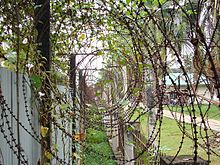
Throughout the region, there are museums commemorating specific events in the regional and local history . This includes for example the War Remnants Museum in Ho Chi Minh City on the Vietnam War, the Tuol Sleng Genocide Museum in Phnom Penh on the Cambodian genocide, the Aceh Tsunami Museum in Banda Aceh , Indonesia on the 2004 Boxing Day tsunami that killed about 250,000 people (more than half of them in Aceh), and the Resistance Museum in Dili on the East Timorese struggle for independence.
Among the key places to go for modern art collections are Singapore (for example the National Gallery in the Riverside district) and the town of Ubud in Bali, which boasts dozens of art galleries and museums.
Botanical gardens are plentiful throughout the region. The most extensive and well known among them include the Botanic Gardens in Singapore's North and West district, the Nong Nooch Tropical Garden near Pattaya in Thailand, and the Botanical Gardens of Bogor in Indonesia.
Archaeological sites and precolonial heritage [ edit ]

Southeast Asia has a huge number of archaeological sites , ranging from prehistoric remains of early humans that may be more than 1 million years old to great Hindu and Buddhist temples from the 8th to 14th centuries. Historic sights from the precolonial era are covered in this section, while colonial heritage is covered in the next section.
Three prehistoric archaeological sites in Southeast Asia are on the World Heritage List. The so-called Sangiran Early Man Site can be found near Solo in Indonesia, with fossils of early humans (related to the 'Java Man') that are estimated to be between 700,000 and 1,000,000 years old, possibly older. In Malaysia's Perak state, the Lenggong Valley contains four archaeological sites with tools, weapons jewellery and other equipment from various ages, and the 'Perak Man' skeleton. The archaeological site of Ban Chiang near Udon Thani in Thailand includes pottery that was painted red and dates to 2,000-4,000 years ago.

Nowadays, Hinduism in Southeast Asia is mostly limited to the Indonesian island of Bali , the Cham community of Vietnam , and the Indian communities of Malaysia , Myanmar , Thailand and Singapore , while Buddhism is concentrated in Indochina , Thailand and Myanmar and among overseas Chinese communities throughout the region. However, from about the 4th to the 15th centuries, Hinduism, Buddhism and a combined observance of both were adhered to by the vast majority of Southeast Asians, and this led to the construction of many Hindu and Buddhist temples across the region. Two world-famous Buddhist temples, and major tourist attractions, are Borobudur in Indonesia (8th-9th centuries) and Angkor Wat in Cambodia (12th century, and partly a Hindu temple complex). Major Hindu temples include My Son (4th-14th centuries) in Vietnam, Prambanan (9th century; near the Borobudur temple) in Indonesia, Preah Vihear (11th-12th centuries) in Cambodia, and Vat Phou (11th-13th century) in Laos. All of these temples are World Heritage Sites.
Other key historic sights in Southeast Asia from precolonial times include the Sukhothai Historical Park in Thailand that used to be the capital of the Sukhotai Kingdom (13th-15th centuries), the Pyu Ancient Cities in Central Myanmar (2nd century BCE to 11th century), the ancient town and trading port of Hoi An in Vietnam (15th to 19th century), and the ancient capital of Ayutthaya in Central Thailand (14th century). Myanmar also boasts the archaeological sites of Bagan and Mrauk U , which were once the great capitals of ancient kingdoms of the Bamar and Rakhine ethnicities respectively, and each home to literally thousands of ancient temples. Near the city of Mandalay is Inwa , which served as one of the last capitals of the Burmese kingdom before it was conquered by the British. Two famous old citadels can be found in Vietnam: the 11th-century Hanoi Citadel and the 14th-century Citadel of the Ho Dynasty in the Central Coast region. The Central Coast also boasts the city of Hue , the last capital of the Nguyen Dynasty, which continued to rule in name under French suzerainty until 1945.
Colonial heritage [ edit ]
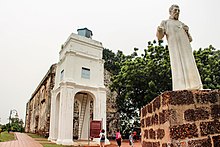
With the exception of Thailand, all Southeast Asian countries were under European colonial rule for varying lengths of time between the 16th and 20th centuries. As a result, there is a considerable colonial heritage in the region, including fortifications, infrastructure and buildings. Despite remaining independent, even Thailand did not escape European influence, and it too boasts several impressive European-style buildings.
One of the key historic towns of Southeast Asia is Malacca , the capital of the Malacca Sultanate that was subsequently under Portuguese, Dutch and British rule. Some of the highlights of Malacca include the Portuguese fortress A Famosa (1511) and St. Paul's Church (1521), and the Dutch Stadthuys (city hall, 1650). British colonial architecture can be found among others in Central Kuala Lumpur (such as the Government Offices built at the end of the 19th century) and in Singapore's Riverside area. Arguably the greatest concentration of British colonial architecture can be found in George Town and Yangon .
From 1619 to Indonesian independence, the capital of the Dutch East Indies was Batavia (present-day Jakarta ). A huge number of colonial remnants can therefore be found in the city, ranging from the Batavia City Hall (built 1707–1710, now the Jakarta History Museum) in West Jakarta to the Neo-Gothic Jakarta Cathedral (built 1891-1901) in Central Jakarta . Also throughout the rest of the Indonesian archipelago, virtually every city and town has sights from the colonial time, such as the 17th-century Fort Rotterdam in Makassar , the 18th-century Fort Vredeburg in Yogyakarta , and many early 20th-century Art Deco masterpieces in Bandung . In the early 19th century, the Great Post Road was constructed across Java , enabling quick trade and development of the entire island.
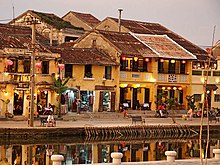
A large number of Catholic churches were built in the Spanish Philippines , with four baroque churches listed on the UNESCO World Heritage List (among others the San Agustín Church in Manila's historic centre and the Miagao church in Iloilo ). The historic town of Vigan is a Hispanic town well known for its cobblestone streets and unique mixed European-Oriental architecture. After the Philippines came under American rule, many Art Deco civil government buildings were constructed.
French colonial architecture can be found throughout former French Indochina . The former capital of Laos, Luang Prabang , is on the World Heritage List for its well-preserved blend of colonial and pre-colonial architecture. Similarly, the old towns of Hanoi and Hoi An in Vietnam have lots of buildings in French Colonial style, while its largest city, Ho Chi Minh City , is also home to several impressive French colonial buildings such as the Saigon Central Post Office, City Hall and the Saigon Opera House.
Other sights [ edit ]
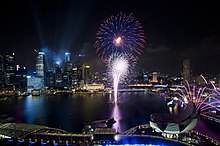
There are dozens of cities with a population of more than a million in Southeast Asia, and many of these have impressive cityscapes . The main modern city of the region is Singapore, whose Marina Bay area has a particularly recognizable skyline. The other main cities also have a large number of skyscrapers and office towers, notably Jakarta , Kuala Lumpur , Manila , Bangkok , and Ho Chi Minh City . The administrative capital of Malaysia, Putrajaya , is a planned city with a surreal mix of modernity and tradition.
Brunei is the only country of Southeast Asia that is a sultanate , and the residential palace of the sultan, Istana Nurul Iman , is considered the largest palace in the world. However, it is usually not accessible to the public, the exception being the second to fourth days of Hari Raya Aidilfitri (Eid al-Fitr), when the sultan holds an open house, exchanges greetings with male members of the public, and hosts the public to a free lunch. Throughout history, numerous sultanates have reigned over several parts of Southeast Asia, with some of the most powerful ones being the Mataram Sultanate (of which the remaining sultanates of Solo and Yogyakarta are successors) and the Malacca sultanate. Sultan palaces and related museums can be found throughout the region, especially in Malaysia and Indonesia.
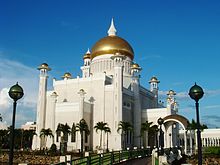
With Malaysia, Brunei, and Indonesia being majority Muslim countries, there are many mosques in the region. Prominent mosques include the Istiqlal Mosque in Central Jakarta (the largest mosque of the region, with a capacity of 200,000), the Blue Mosque in Shah Alam , and the Omar Ali Saifuddien Mosque in Bandar Seri Begawan .
War-related sights (apart from the museums mentioned above) can be found in most of the countries in the region. In Cambodia, the Killing Fields of Choeung Ek near Phnom Penh offer a reminder of the Cambodian Genocide. In Vietnam, there are many sights related to the Vietnam War, such as the Demilitarized Zone around the former border between North and South Vietnam, and the Cu Chi tunnel system. In Indonesia, there are numerous sights related to the War of Independence, such as the Monas national monument in Central Jakarta .
Visitors with an interest in military history can find many remnants from the Pacific War and the Indochina Wars .
Itineraries [ edit ]
- Banana Pancake Trail
- Bangkok to Ho Chi Minh City overland
Do [ edit ]
Water sports [ edit ].

- Scuba diving is a major draw for visitors to Southeast Asia, with Indonesia , Malaysia , the Philippines and Thailand all boasting world-class diving locations.
- Surfing is also an increasing popular sport especially in Indonesia (with Nias and Bali the top draws) and the Philippines .
- Sailing is popular, especially in Southern Thailand
- Try wake boarding at Southeast Asia's largest wake boarding centre in Camarines Sur , Philippines .
- Explore one of the world's longest underground rivers in the Puerto Princesa Subterranean River National Park located in Palawan , Philippines .
Massage [ edit ]
Southeast Asia, in particular Indonesia and Thailand , is well known throughout the world for its traditional massages. While the conditions of massage parlours vary, those in major hotels in touristy areas are usually clean, though you would generally pay a premium for them. Nevertheless, prices remain much lower than in most Western countries, with 1-hour massages starting from around US$5–20.
Sports [ edit ]
- Southeast Asian Games - Known in short as the SEA Games, it is held every two years among the 11 countries of Southeast Asia in odd-numbered years. It is structured similarly to the Olympics, albeit on a much smaller scale, and also features several sports that are only popular within Southeast Asia such as sepak takraw (essentially volleyball played with the feet instead of hands, known for its spectacular overhead kicks), and silat (a Malay martial art). The last edition was held in Cambodia in 2023, and the next edition will be held in Bangkok, Thailand in 2025.
Buy [ edit ]
Every Southeast Asian country has its own currency except for East Timor. The U.S. dollar is the official currency of East Timor , the unofficial currency of Cambodia and Laos , and (for larger payments) is widely accepted in some Southeast Asian cities. Euros are also widely accepted in the major cities, although rates are rarely as good as for dollars. Thai baht are widely accepted in the border regions of Cambodia , Laos and Myanmar . As Singapore is considered to be the main financial centre of Southeast Asia, Singapore dollars would generally be accepted in major tourist areas if you're in a pinch (and are legal tender in Brunei), though the conversion rate might not be very favourable. Exchange rates for Southeast Asian currencies tend to be very poor outside the region, so it's best to exchange (or use the ATM) only after arrival. Alternatively, Singapore and Hong Kong have many money changers who offer competitive rates for Southeast Asian currencies, so you might plan to spend a night or two in transit for you to get your money changed.
When bringing U.S. dollars, ensure that your bills are in pristine condition. Outside Singapore, even slight creases in U.S. dollar bills will cause them to be rejected by most shops and money changers, and even those that accept them will give you a far worse rate.
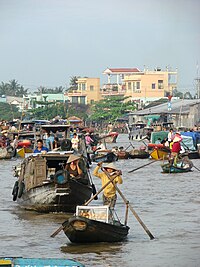
Costs [ edit ]
Southeast Asia is cheap , so much so that it is among the cheapest travel destinations on the planet . US $20 is a perfectly serviceable daily backpacker budget in most countries in the region, while the savvy traveller can eat well, drink a lot and stay in luxury hotels for US $100 per day.
Some exceptions do stand out. The rich city-states of Singapore and Brunei are about twice as expensive as their neighbours, while at the other end of the spectrum, the difficulty of getting into and around underdeveloped places like Myanmar , East Timor and the backwoods of Indonesia drives up prices there too. In Singapore in particular, the sheer scarcity of land drives accommodation rates up and you would be looking at more than US $200 per night for a four-star hotel. Also, many countries in the region do not list taxes and service charges in their advertised accommodation prices so your actual room rate is up to 20% more than the what you see in search engines.
Shopping [ edit ]
Southeast Asia is a shopping haven, with both high end branded goods and dirt cheap street goods. The most popular city for shopping in Southeast Asia is Bangkok , although Jakarta , Kuala Lumpur , Manila , Ho Chi Minh City and Singapore all have extensive arrays of exclusive shopping malls stocked with haute couture labels. On the other end of the spectrum, street markets remain a part of daily life (except in Singapore) and are the place to go for dirt cheap or counterfeit items. Some towns like Chiang Mai in Thailand and Ubud in Bali, Indonesia are well known for enormous markets selling traditional artworks, and it's often possible to buy directly from local artists or have dresses, jewellery, furniture, etc., made to order.
Clothes and accessories of international brands are usually just as expensive as in developed countries, or even more expensive. Branded products that seem considerably cheaper (such as Polo Ralph Lauren shirts in Indonesia ) are typically counterfeit , even when they are not sold in the streets but in a legit-looking shop or air-conditioned shopping mall. If you need a good compromise between low price of street sold items and the quality of branded products, look for stores of domestic brands such as Malaysia 's F.O.S or Philippines ' Bench.
For slightly higher-end gifts, Malaysia's Royal Selangor is the world's foremost manufacturer of pewter products.
Bargaining [ edit ]
Bargain in public markets and flea markets where prices aren't fixed. Southeast Asians actually will give you a bargain if you make them laugh and smile while naming your price; if they don't, try saying bye bye and smile and maybe the vendor might change his mind and give you a discount. When bargaining for simple things like watches, sunglasses, and shoes remember that these are often marked up hugely and, given some bargaining skill, can often be brought down to something like 20% of the asking price. If you can't seem to get them down to a reasonable price, then you're doing it wrong. See Bargaining for more tips.
As a rule of thumb, if a price is not explicitly posted, you need to haggle for it. However even posted prices can often be haggled down as well.
Eat [ edit ]

Southeast Asian cuisine reflects the countries' diverse history and culture. It can be roughly split into Mainland Southeast Asia (Thailand, Vietnam, Cambodia, Laos and Myanmar ) and Maritime Southeast Asia (Malaysia, Singapore, Brunei , Indonesia, East Timor ), and even then still differs considerably from area to area. Chinese and Indian influences have been fused with local ingredients, techniques and tastes in many parts of Southeast Asia. The Philippines ' food culture is the most varied due to their additional influences from Spain and America .
Street vendors or hawkers are a culinary cornerstone of the region, offering wonderful food at a very inexpensive cost; if you're scrupulous about hygiene, go for the char-grilled, deep-fried or boiled-silly options. Thai and Vietnamese dishes like the ubiquitous pad Thai and beef pho have been widely exported around the world after the Vietnam War, followed closely by Malaysian restaurants, but a common refrain is that they simply cannot compare with a fresh bowl served by the roadside. Singapore probably serves as the easiest introduction to street food, though Bangkok and Penang have the better hawkers, with Ho Chi Minh City not far behind.
Rice is the main Southeast Asian staple, with noodles of all sorts an important second option. It's common to take a rich soupy bowl of noodles or some congee (rice porridge) for breakfast. Roti canai in Malaysia , known as roti prata in Singapore , is based on the South Indian parotta (layered flatbread) while Vietnam, Cambodia and Laos have a fondness for French-influenced baguettes courtesy of their colonial history, epitomised by banh mi (Vietnamese sandwich), though they often use a combination of wheat and rice flour to make them.
Love of the spicy chilli is also shared throughout the region, and many of its most famous dishes incorporate chilli whether as a core ingredient or as a separate garnishing, from Thai curries and tom yum soup to the Indonesian beef rendang to Malaysia's assam laksa to Cambodia 's amok . The unsuspecting diner may end up downing glass after glass of water to try and quench the burning sensation, but the local advice is to drink hot tea instead. Asking the cook to tone down the spiciness will not always work, and often your eyes will water when eating an adjusted version even as nearby locals happily slurp down their meals. Chilli is just one of the many spices used in Southeast Asian cooking, with lemongrass, tamarind and cloves popular choices to lend strong aromatic flavours to dishes.
Living next to seas and rivers, seafood is a crowd favourite. Fish and prawns feature prominently, with fermented fish sauce and shrimp paste frequently used in everyday cooking, although shellfish such as Singapore chilli crab is much more expensive and usually saved for special occasions or enjoyed by the well-off.
A variety of delicious fruit is available everywhere in all shapes and sizes, and pretty much all year round thanks to the tropical weather. Mangoes are a firm favourite among travellers. The giant spiky durian , perhaps the only unifying factor between Southeast Asia's countries, is infamous for its pungent smell and has been likened to eating garlic ice cream next to an open sewer. Other distinctive Southeast Asian fruits are the purple mangosteen, the hairy rambutan and the jackfruit-like cempedak , whose exteriors hide juicy fleshy insides. Pay attention to what's in season for better taste and prices.
Fine dining is increasingly an option in the more developed countries of Southeast Asia. Bangkok is generally considered to have the best fine dining scene in Southeast Asia, with Singapore not too far behind, and Ho Chi Minh City rapidly catching up, though there are also good options to be found elsewhere. Although fine dining is far out of the reach of the average working class Southeast Asian, with the notable exception of Singapore, prices tend to be a lot more affordable than food of a similar standard in Western countries and East Asia.
Western restaurant review websites such as Yelp are not generally reliable for South East Asian countries, as locals do not often post reviews there. Instead, there are local review websites that cover South East Asian countries, such as Eatigo , Openrice and Zamato . Some countries have their own domestic apps that are generally the most reliable within those countries, with the obvious caveat that almost all reviews are only in the local language; examples include Wongnai in Thailand and Foody in Vietnam .
Drink [ edit ]
Rice-based alcoholic drinks — Thai whisky , Tuba , lao , tuak , arak and so on — are ubiquitous and potent, if rarely tasty. In some areas, notably the Philippines, rum is also common, made from the local sugarcane. As a rule of thumb, local booze is cheap, but most countries levy very high taxes on imported stuff.

Beers are a must try in Southeast Asia, and are often very inexpensive. Check out San Miguel (Philippines), Singha, Chang beer (Thailand), Bir Bintang, Angker Beer (Indonesia), Tiger Beer (Singapore and Malaysia), Saigon Beer, Hanoi Beer, Huda Beer, 333 Beer, Bia hơi (Vietnam), Beerlao (Laos), Angkor and Angkor Stout (Cambodia). Lager is by far the most popular style, although stout (especially Guinness) is also popular and the larger cities have plenty of microbreweries and imported brews. Beer in SE Asia is primarily consumed by locals to simply get drunk, and not for taste. As such, by Western standards, most locally produced SE Asian beers are often of comparable quality to a low-end Western beers. Don't be surprised by the local habit of adding ice to your beer: not only does it help keep it cool, but it dilutes the often high alcohol content (6% is typical) as well.
Hampered by heavy taxation and a mostly unsuitable climate, wine is only slowly making inroads, although you can find a few wineries in central and northern Thailand, Bali, and Vietnam. Don't buy wine in a restaurant unless you're sure it's been kept properly, since a bottle left to simmer in the tropical heat will turn to vinegar within months. The exception is the former French colonies of Laos and Cambodia which have a respectable collection of vintages available in the larger cities of Vientiane and Phnom Penh .
Nearby Australia exports a good deal of wine to this region; it will be found mainly in high-end hotels or restaurants, though places catering to the budget/backpacker part of the tourist trade may have some as well. The cheap local restaurants generally will not have any.
Fruit juices and coconut water are widely available, especially among Muslims, and in other communities where alcohol is not customary.
Tea and coffee are available in different regional styles throughout Southeast Asia. Vietnamese coffee and Thai tea are some prominent examples, as is teh tarik of the Indian Muslim community in Malaysia and Singapore. The Australian chocolate malt drink Milo is also popular in Singapore and Malaysia.
Stay safe [ edit ]
Generally speaking the traveller trail in Southeast Asia is perfectly safe, but there are low-level insurgencies in the remote areas of Indonesia , Myanmar , the Philippines , Thailand , and East Timor .
Violent crime is rare in Southeast Asia, but tourists have been attacked in beach resorts in a few isolated but well publicised cases.
Opportunistic theft is more common, so watch out for pickpockets in crowded areas and keep a close eye on your bags when travelling, particularly on overnight buses and trains.
Major dangers are very poor road safety, as well as little or no oversight of physical activities such as white water rafting and bungee jumping.
In 2004 an Indian Ocean tsunami killed an estimated 230,000 people, with Thailand and Indonesia 's Aceh province being severely affected. Many foreign tourists were injured or killed in this very rare yet very dangerous event.
While plenty of narcotics are produced, distributed and consumed around the region, most countries (especially Thailand, Singapore and the Philippines) have harsh penalties for possession of small amounts, and capital punishment for organized drug trafficking. Neither foreign citizenship nor bribes will save visitors from sentences.
Stay healthy [ edit ]
Singapore and Thailand are two of the world's main medical tourism hubs. In Singapore, the healthcare system is of a high standard in both government and private hospitals, though prices are also the most expensive in Southeast Asia (but cheaper than most Western countries). Healthcare costs in Thailand are much cheaper than in Singapore and Western countries, making it a popular medical tourism destination for people on tight budgets. While private hospitals in general conform to international standards, and some private hospitals in Bangkok are widely regarded as among the best in the world, public hospitals often leave much to be desired.
Malaysia and Brunei in general have high standards in both private and public hospitals. In the Philippines , while the standard of care is uniformly good at both public and private hospitals in Manila, conditions are often bad in rural areas and smaller cities. In Vietnam and Indonesia , while public hospitals most certainly lag far behind the standards of the West, there are internationally accredited private hospitals in the major cities that are run to international standards. Myanmar , Laos , Cambodia and East Timor generally have poor healthcare standards, so you will almost certainly want to travel to Thailand or Singapore for any major procedures; ensure that your insurance covers this.
The Joint Commission International accredits hospitals internationally based on U.S. standards; though you will be paying a premium for these hospitals, you can ensure that the care and treatment you receive will be aligned to Western standards.
Respect [ edit ]
You may be asked to take off your shoes quite often, especially when entering temples, mosques or guesthouses. Wear shoes that can be slipped on and off easily, particularly if you're planning to visit a lot of temples, and make sure your socks aren't full of holes. At Buddhist temples, the areas where you have to go barefoot differ by country; in Myanmar, you will have to take your shoes off before entering the entire temple complex, while in Thailand, you are only required to take your shoes off before entering temple buildings.
- Has custom banner
- Has mapframe
- Maps with non-default alignment
- Maps with non-default size
- Has map markers
- Articles with dead external links
- Has Geo parameter
- All destination articles
- Usable regions
- Usable articles
- Region articles
- Regions with more than 9 subregions
- Pages with maps
Navigation menu

15 Best Places to Visit in Southeast Asia
Written by Diana Bocco Updated Jul 13, 2022 We may earn a commission from affiliate links ( )
The countries that fall in the Southeast Asia region have so much going for them, it's almost impossible to keep them off anybody's travel bucket list . From white, soft beaches and major cities to the rich history, culture, and the must-try food, this part of the world has something for everybody.
While some destinations, such as Thailand's beaches and islands and the majestic Angkor Wat in Cambodia, are known everywhere, some places in Southeast Asia remain more elusive and off the main tourist radar. This gives visitors a chance to mix things up – to go with the crowds to see the most popular spots, but also make time to discover new and different corners of Southeast Asia.
Whatever your heart is set on, here is a list of the best places to visit in Southeast Asia.
1. Angkor Wat, Cambodia
2. ha long bay, vietnam, 3. koh samui, thailand, 4. boracay, philippines, 5. bagan, myanmar, 6. kuala lumpur, malaysia, 7. bangkok, thailand, 8. singapore, 9. yangon, myanmar, 10. luang prabang, laos, 11. palawan island, philippines, 12. tegalalang rice terraces, bali, 13. komodo island, indonesia, 14. chiang mai, thailand, 15. hanoi, vietnam, map of places to visit in southeast asia.
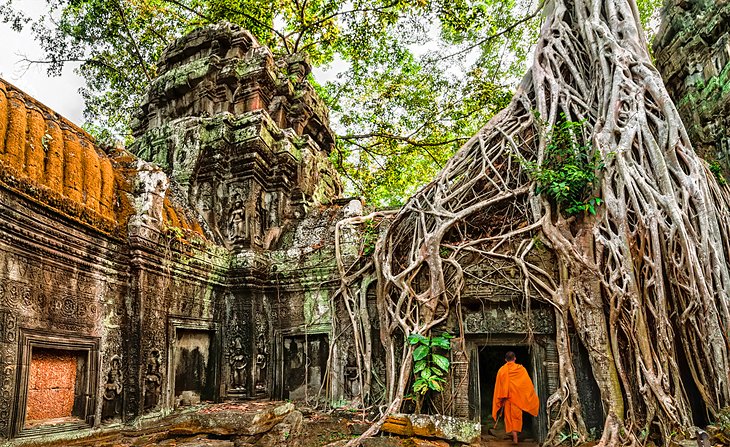
Located in northwestern Cambodia, the city is best known for being the gateway to the Angkor region, but Siem Reap has much to offer on its own. A mix of Chinese and colonial architecture gives the city a unique vibe, where countryside residents and old motorbikes blend with a vibrant café culture and a modern club scene.
Siem Reap is home to two important museums: The Cambodia Landmine Museum and Relief Center , which offers a chance to learn more about landmines and their ongoing impact on Cambodia and other Asian countries, and the War Museum , which covers the involvement of Cambodia in several wars.
There are also a number of massive markets in the city, including Psah Chas, which caters to both locals and tourists with a variety of souvenirs, fresh food, and more.
Angkor Wat , the largest religious monument and one of the top World Heritage Sites , lies less than six kilometers north of Siem Reap. The ruins of this 12 th -century temple complex cover a space of over 162 hectares, with hundreds of structures built using sandstone blocks. There are a number of other temples, also built in Khmer style, in the area, including Angkor Thom, Ta Prohm, and Pre Rup.
- Best Places to Visit in Cambodia
- Top-Rated Tourist Attractions in Siem Reap
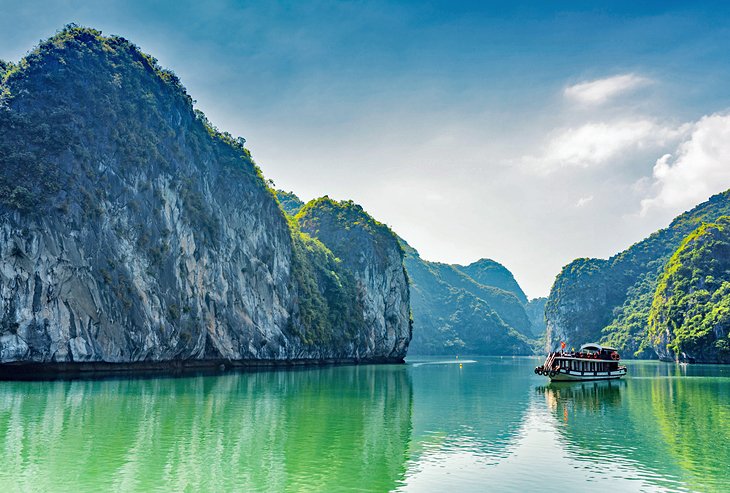
Ha Long Bay consists of a group of islands and limestone karsts that have been declared a UNESCO World Heritage Site . Many of the islands are actually tall monolithic cliffs that cannot be walked on, covered in green, lush jungle. Some of these are hollow and house beautiful caves. Dau Go Cave (Wooden Stake Cave) is a good example, a massive cave with three main chambers, multicolored stalagmites, and rock paintings. Many of the islands also have their own enclosed lakes.
Of the almost 2,000 islands here, less than 40 have permanent residents, often in the form of small communities that live in floating houses and fishing villages.
Ha Long Bay's largest island, Cat Ba , is the most common overnight stop for tourists coming to Ha Long Bay for cruises and tours. Kayaking the turquoise-green waters of the bay is a popular activity here, as well as cruising the bay in traditional junk boats.
- Read More: Things to Do in Halong Bay
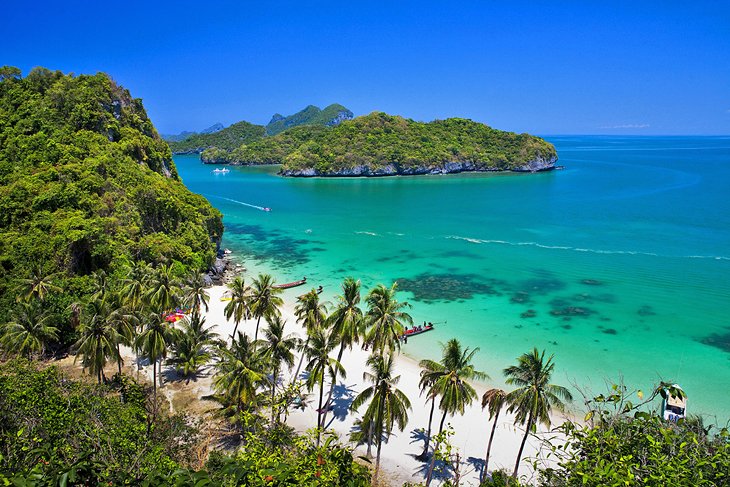
While Koh Samui has always been a beloved destination for sun worshippers and snorkelers, the crowd the island attracts has changed over the years.
Once a favorite of backpackers, Koh Samui has undergone a remarkable transformation. It now boasts high-end resorts, posh spas, and some of the whitest palm-fringed beaches in Thailand. Chaweng and Lamai beaches attract the bulk of the travelers and are well developed, clean, and full of activities, including opportunities to sail, scuba dive, and swim.
While most visitors come to Koh Samui for the beach , there's much more to see and do. Take time to explore the mangroves and hidden lakes of Ang Thong Marine National Park ; the 12-meter-tall golden Buddha at the hilltop Big Buddha shrine; and the Na Muang waterfalls, reached after a trek uphill through thick tropical forest.
Read More: Top-Rated Attractions & Things to Do in Koh Samui
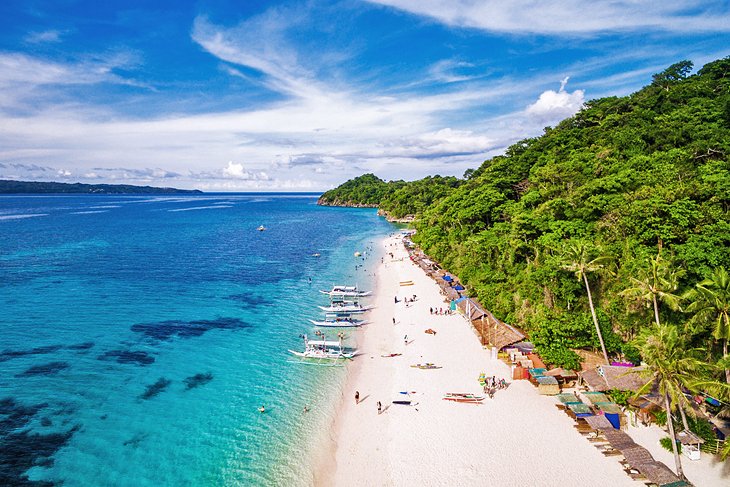
The tiny island of Boracay is just across the water from Panay Island, one of the Philippines' largest islands. Despite being only 10 square kilometers in size, Boracay attracts thousands of visitors a year, who come here for the four-kilometer-long beach and its powdery white sands that wash right into the turquoise waters and the sailboats rocking away on the waves. This is one of the best beaches in the Philippines .
In addition to scuba diving and snorkeling, Boracay is well-known for its parasailing, kiteboarding, and swimming-and, perhaps more unexpectedly, its cliff diving . Diving boards ranging from three to 15 meters high over the water are placed on certain parts of the island, with lifeguards waiting and watching as divers fly up in the air over the mirror-like waters below.
- Read More: Top-Rated Tourist Attractions & Things to Do in the Philippines
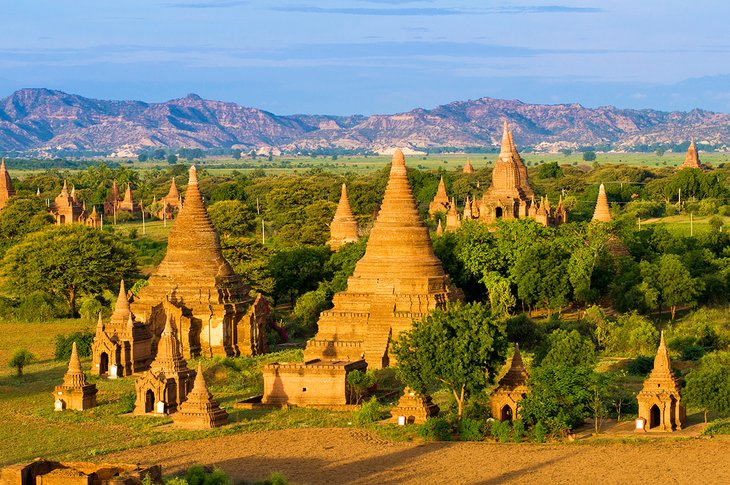
A UNESCO World Heritage Site , the ancient city of Bagan was once the capital of the first kingdom of Myanmar. Between the 11th and 13th century, over 10,000 pagodas and Buddhist temples were built here. Over 3,500 still stand today in the area known as the Bagan Archaeological Zone, which spreads over 41 square kilometers.
One of the most famous temples in Bagan is the Ananda Temple , a Buddhist temple built in a unique fusion of Mon and Indian styles. Dhammayangyi Temple , the largest religious structure in Bagan, is visible from all corners of the city and is famous for its mysterious bricked up interior.
The Bagan Archaeological Museum , located within the Archaeological Zone, is home to artifacts recovered from the area, such as stucco works, lots of lacquer and metal artifacts, and stone sculptures, including a Rosetta Stone dating back 1,000 years.
Just outside the Bagan Archeological Zone sits the sleepy village of Myinkaba, famous for the ancient art of lacquerware. Visitors can stop by workshops to see items being painted by hand, and then grab some souvenirs at the many shops around.
For the most famous sunset-viewing spot in town, head to the white Shwesandaw Paya pagoda. Here, you can climb part of the building to catch the 360-degree views over the hills and other temples around.
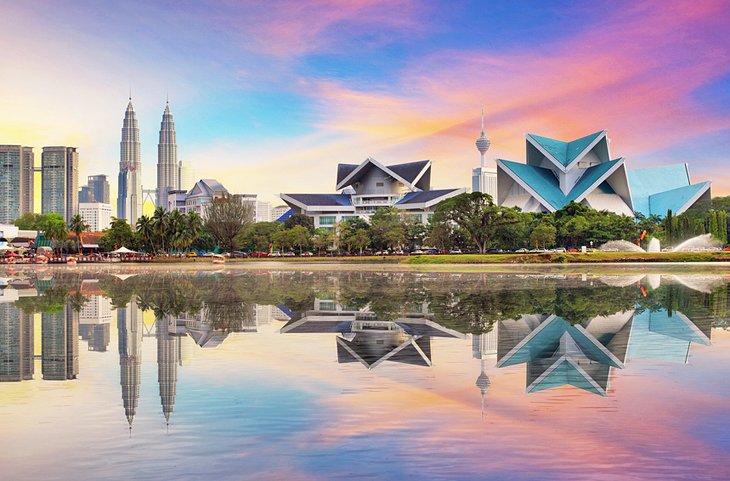
Malaysia's capital is a city of contrasts: the cultural and financial heart of the nation, with magnificent skyscrapers and three of the world's largest shopping centers-but also a great example of colonial architecture, Malay Islamic details, and old Chinese shophouses. Walking through the city is a great way to appreciate the eclectic look of this relatively new Asian capital and see the different cultures and styles melting into each other.
KL is home to the tallest twin buildings in the world , the Petronas Towers – architectural marvels of steel and glass that stand 452 meters tall. The towers are surrounded by a large urban park and are home to a massive shopping center with over 350 stores, a theater housing the Malaysian Philharmonic Orchestra, and even an underwater aquarium.
KL is a very green city, with many parks, gardens, and open spaces everywhere you go. The 92-hectare Lake Gardens is a major urban park that contains a butterfly park, the world's largest aviary bird park , and an orchid garden. You'll also find three forest reserves within the city, perfect for trekking and catching sight of rare fauna.
The limestone Batu Caves (which contain several Hindu shrines); the Cameron Highlands with its tea plantations ; and the colorful town of Malacca, established by Portuguese settlers, are all great day-trip destinations from Kuala Lumpur.
- Top-Rated Tourist Attractions in Kuala Lumpur
- Top-Rated Tourist Attractions in Malaysia
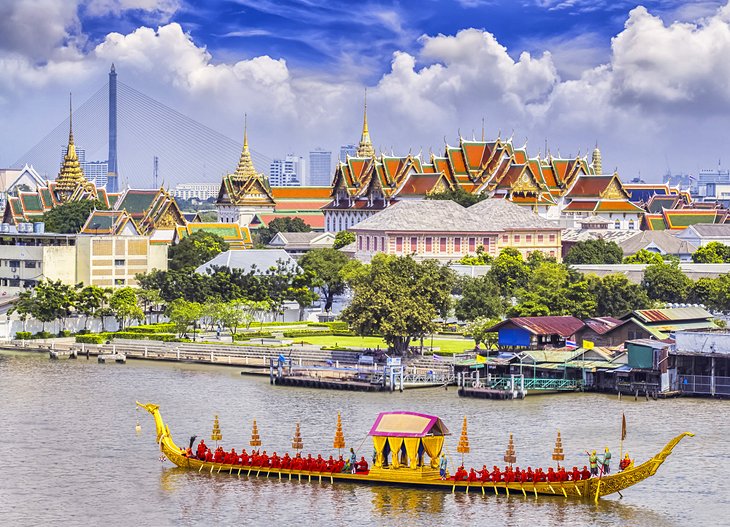
Thailand's capital has lots going for it. Not only is this the main gateway for all major destinations within the country, but this cosmopolitan city also has much to offer on its own. With over 24 million visitors arriving here every year, this is also one of the top cities in the world to visit .
Sitting right on the Chao Phraya River and full of stunning skyscrapers that share the sidewalk with major Buddhist temples and popular cafés and hangouts, Bangkok's multi-faceted sights will please a wide range of visitors, from those looking for excitement and shopping opportunities, as well as those wanting to dive into cultural and historical landmarks.
Even tourists who are only here briefly on their way to the islands should make time to visit the Grand Palace , a former royal residence converted into a museum. For those with more time in the capital city, the royal Vimanmek Mansion (the largest teak building in the world) and the Jim Thompson House, a museum dedicated to the American businessman who revolutionized the local silk industry, are also worth a visit.
For a completely different view of the city, get on a classic tuk-tuk taxi or jump on a water bus.
- Read More: Top-Rated Tourist Attractions in Bangkok
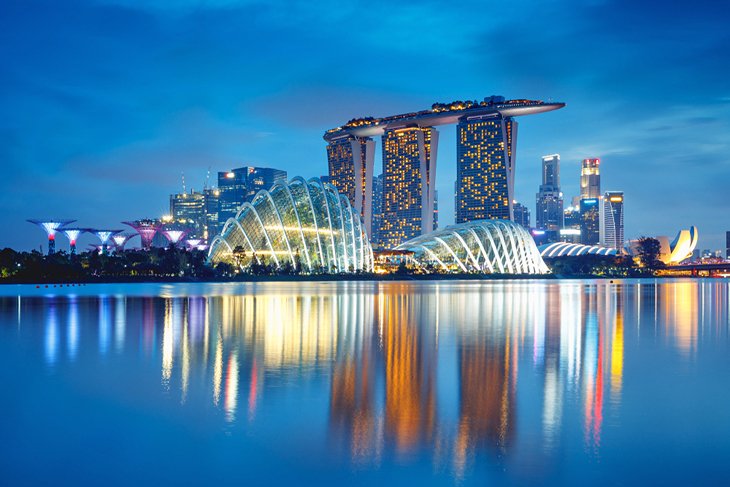
Singapore is a unique spot in Southeast Asia. This island city-state is modern and cosmopolitan , a place where multi-story shopping centers mix with stunning and unexpected natural attractions.
The Marina Bay Sands , an integrated resort, is a good example of that-it offers not only a hotel, but also a museum, art-science exhibits, and the best terraced views over the city and bay from the infinity pool set on their roof.
Sentosa Island is another example, an entertainment complex that includes everything from a two-kilometer-long beach and a restored coastal fort to Southeast Asia's first 4D theater, a Butterfly Park and Insect Kingdom, and even a Universal Studios Singapore theme park.
Singapore's airport has been named the best in the world, and it's an attraction all in itself, home to the world's tallest indoor waterfall, a five-story tall indoor garden, a mirror and haze maze, and a massive butterfly garden with over 1,000 species flying free in tropical greenery.
- Top-Rated Tourist Attractions in Singapore
- Best Beaches in Singapore
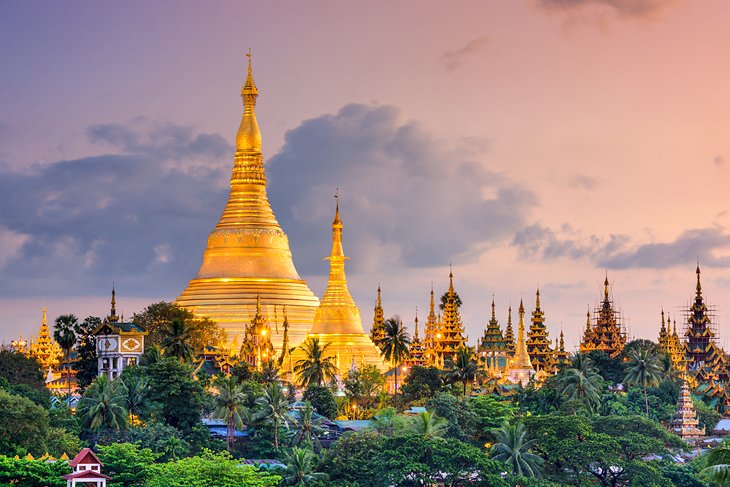
Up until 2011, Myanmar offered only limited access to tourists because of the five-decade-long military dictatorship that commanded the country-so now that it's finally possible to visit, and before it becomes crazy busy with tourists, you definitely should see this fascinating destination.
Yangon was the capital of Myanmar (or Burma) until 2006, when the military government moved it somewhere else. Since the country was under military dictatorship for so long, the city suffered a lot of issues and still boasts a lot of buildings in decay and with inadequate infrastructure.
Still, Yangon is full of beautiful architecture in the form of colonial-era buildings centered around the 2,600-year-old Sule Pagoda . It is the gilded Shwedagon Pagoda (also known as the Golden Pagoda) that dominates the skyline of the city, however-the most sacred Buddhist pagoda in the country, believed to contain relics of the last four Buddhas.
Visitors should make time to visit the Bogyoke Aung San Market , where stalls sell everything from antiques and local handicrafts to Burmese jade, local delicacies, and even natural medicine products. Another great must-do is the Yangon Circular Train , which runs on a 46-kilometer-long loop around Yangon, offering a unique insight into the real daily life of Burmese people.
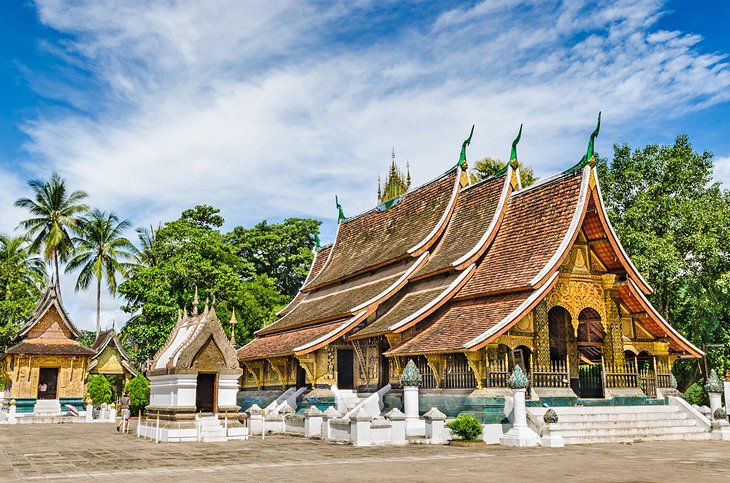
This northern city in Laos is surrounded by a number of villages that together form the UNESCO Town Of Luang Prabang World Heritage Site . Recognized for its mix of rural, French colonial, and religious architecture and heritage, the city is one of Laos' most visited and certainly most beautiful.
Luang Prabang sits at the confluence of the Mekong and Nam Khan rivers and is home to many temples-including Wat Chom Si shrine, located at the top of Mount Phou Si and overlooking the town. Alms ceremonies (where monks take to the streets to ask for food) are so common here that in the early morning, the entire town is covered in streams of orange as the monks make their way through the streets.
Just outside the city, the Bear Rescue Centre (which specializes in helping sun bears rescued from poachers) and the multi-tiered Kuang Si Falls are both worth a visit. If you're up for some trekking, head out to the Pak Ou Caves , famous for their hundreds of miniature Buddha sculptures.
Read More: Top-Rated Tourist Attractions & Things to Do in Laos
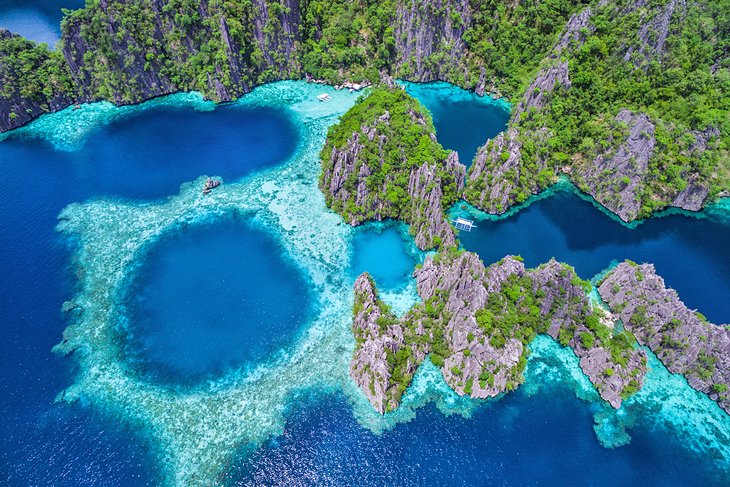
Palawan has been named one of the most beautiful islands in the world so many times, it's hard to ignore its beauty. Technically speaking, Palawan remains under-developed, which means fewer high-end hotels but also slow, sustainable growth to protect the virgin forests, green jungle mountains, and wonderful wildlife.
Palawan is surrounded by quiet turquoise waters that are ideal for snorkeling, swimming, and kayaking. Lots of smaller islands dot the ocean around Palawan, and you can spend an entire day island-hopping and still not see all the amazing beauty the area has to offer.
Miniloc Island , a rustic escape northwest of Palawan, is home to a number of lagoons and soft sandy beaches you can reach on your own or via a motorized water taxi.
For those who prefer underwater adventures, the waters around Palawan hold six shipwrecks of coral-encrusted Japanese ships sunk during WWII. Divers can slip in and out of the engine rooms, bomb holes, and portholes, swimming with fish and turtles-some of the wrecks are as deep as 42 meters.
- Read More: Best Places to Visit in the Philippines
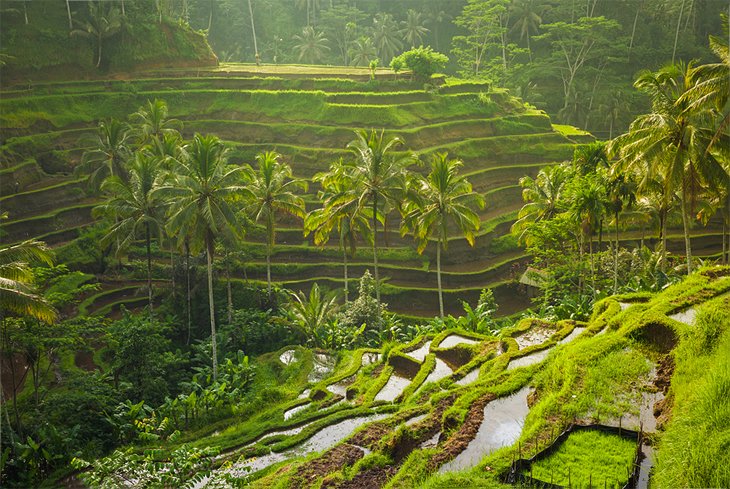
Say "Bali" and people think soft white beaches, corals, and snorkeling-and while it's true that Bali has plenty of beautiful destinations on the sand (including the Nusa Penida beach, with cliffs that resemble the head of the T-Rex), that's not all you can see here. In fact, the lush, green, terraced rice fields in the province of Ubud are just as stunning.
Bali's farmers have been setting rice paddies on terraces for centuries to deal with the hilly terrain of the area-and these areas make for stunning landscapes.
For a donation entry fee that equals pennies, visitors can walk the terraces here for hours, as the green fields extend far beyond what the eye can see. Those who arrive early in the morning will have the place almost to themselves, the soft sound of the rice fields swishing in the wind.
Visitors to Ubud can also check out the Ubud Monkey Forest ; a macaque sanctuary; the traditional royal palace Puri Saren Agung; and the gardens of Pura Taman Saraswati, a water temple famous for its lotus pond and volcanic tuff sculptures of deities.
- Read More: Top-Rated Tourist Attractions in Bali
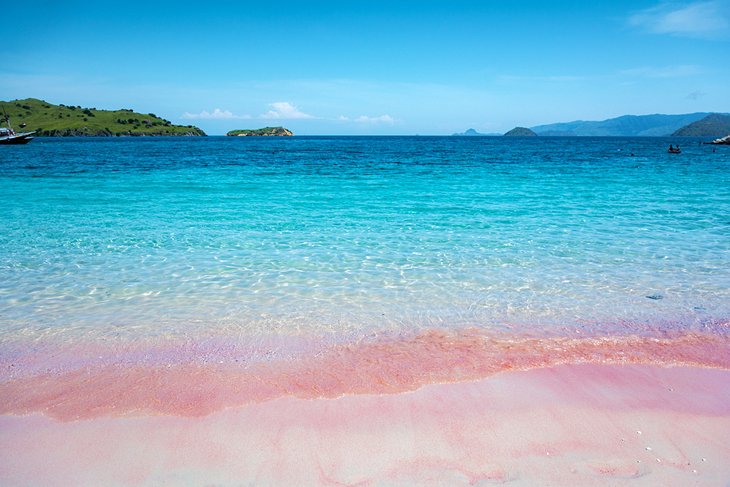
Komodo Island is more than "just one" of the over 17,000 islands that make up Indonesia. This rugged island of just under 400 square kilometers is home to the world's largest lizard , the Komodo dragon. In fact, the population of Komodo dragons here is double the population of permanent human inhabitants, making for a unique sight as you walk through the island's volcanic hills and forests.
Komodo Island is also home to a wide variety of wet ecosystems, including mangrove forests and coral reefs, both of which attract lots of travelers looking to explore, dive, or kayak around the island.
The main sightseeing attraction here, however, is Pantai Merah , one of only seven pink-sand beaches in the world. The cotton-candy sands are the result of an interesting natural phenomenon-when microorganisms, called foraminifera, that live in the coral die, their bright red shells are washed out on the beach and mix in with the white sand, creating the beautiful hue that attracts so many visitors.
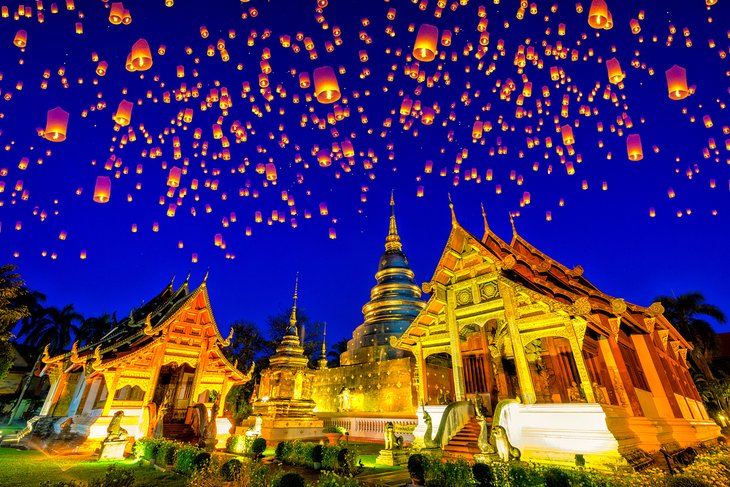
Thailand's northern city of Chiang Mai is often referred to as the cultural capital of the country. Once the seat of the former Lanna Kingdom, Chiang Mai is teeming with centuries-old temples, jungle-shrouded sanctuaries, and mountains in every direction.
A smaller and less chaotic city than Bangkok, Chiang Mai still attracts travelers from all over the world who come for the low-key lifestyle, nature, history, culture, restaurants, and budget-friendly hotels.
Backpackers often make Chiang Mai a main stop on their Thailand travels, as prices are much more attractive than down south on the beaches, and Chiang Mai is a jumping-off point from which to explore the various smaller hill communities that dot the mountains.
One of the must-see temples in Chiang Mai is Wat Phra That Doi Suthep, a golden hilltop shrine that overlooks the entire city below. One of the most sacred spots in Thailand, this temple complex is simply stunning. Visit just before sunset when the monks begin to chant. It is the most magical time to be at the temple.
From Chiang Mai, travelers often set out to explore Mae Hong Son province to the northwest, one of Thailand's most historic provinces, known for its smaller villages and ancient tribal communities.
Accommodation: Top-Rated Places to Stay in Chiang Mai
Read More: Top-Rated Attractions & Things To Do in Chiang Mai
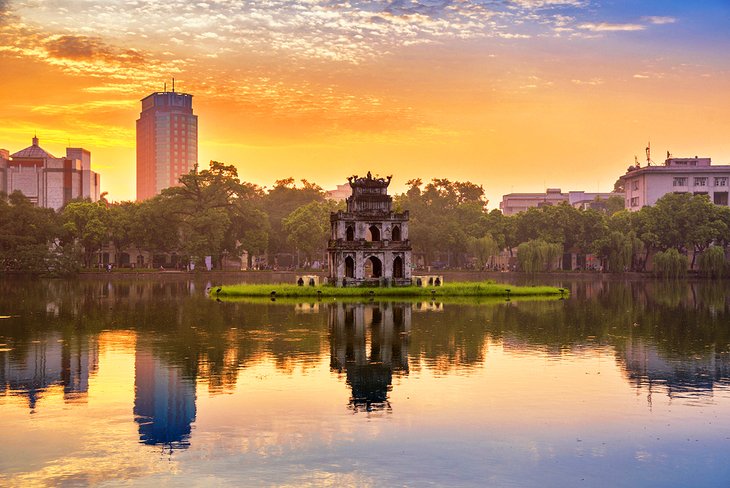
Vietnam's capital sits at an unusual precipice between historic and modern. The thriving city only opened to tourism as recently as the 1990s. Today, Hanoi is a buzzing, chaotic, energetic, beautiful amalgamation of ancient history, a war-torn past, and a modern future. It's one of the best places to visit in Vietnam to really learn about what makes the country tick.
Start in the old quarter, where you will find a heady mix of street vendors, cafés, restaurants, and more motorbikes than you can possibly count. But in between the zipping, zooming, pulsing chaos are pockets of tranquility and peace. Take Hoan Kiem Lake, for example, a 12-hectare lake in the heart of the historic city center. Around the lake are beautiful pagoda gateways, one of which is How Phong Pagoda, one of Hanoi's must-see sites .
The Temple of Literature is one of the most beautiful buildings in the city, too. It is a Confucian temple that was built as a university that dates back to the 11th century. Hanoi is also the city where visitors will find the tomb of Ho Chi Minh, the Hoa Lo Prison Museum, and the Military History Museum.
More Related Articles on PlanetWare.com
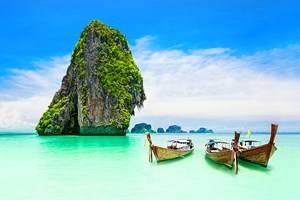
More Great Destinations in Southeast Asia: When it comes to choosing the best places to visit in SE Asia, the list is long and the decision can be tough. If you are traveling through Thailand , consider heading up to Chiang Mai or head over to the Andaman Sea to explore places like the Phi Phi Islands or Phuket , and the beautiful beaches in Krabi .

More on Thailand
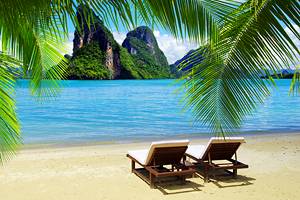

50 Essential travel tips for first time backpackers visiting Southeast Asia
- July 27, 2023
- curious goose
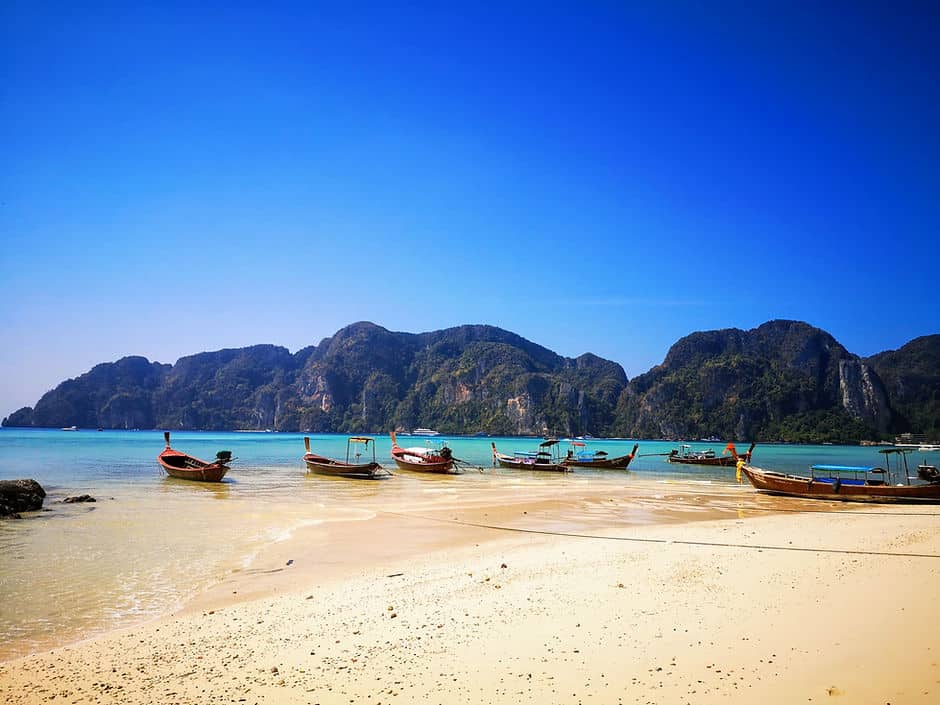
This post may contain affiliate links. I will receive a small commission if you use these links.
Make sure you read these essential tips for Southeast Asia to help plan your trip.
Southeast Asia is one of the most popular destinations for backpackers. It’s easy to see why – gorgeous sandy beaches, cultural temples, delicious food and bustling cities makes for an attractive mix. It’s also a safe and cheap place to travel, meaning that Southeast Asia is a great place for first time travellers getting to grips with backpacking and those on a budget.
Southeast Asia has been on my bucket list for years and in 2022, I spent 7 months travelling in Thailand , Vietnam , Cambodia, Malaysia and Indonesia. Based on my experience, I’ve put together 50 essential travel tips to help you plan your trip to Southeast Asia. These tips cover everything from what food and drink to avoid, to how to keep track of your budget while travelling and travel hacks to make life on the road easier.
These travel tips for Southeast Aisa will prepare you for a great trip and hopefully help to prevent you from getting into any tricky situations!
50 Essential travel tips for first-time backpackers visiting Southeast Asia
Practical information for travel in southeast asia, managing your budget and finances when travelling in southeast asia, top tips for getting around in southeast asia, food and drink in southeast asia, local cultures and traditions in southeast asia, travel health, packing tips.
- Lastly…things to remember when travelling
Travelling takes a lot of organisation and planning. Here’s a few hacks to help you have a smoother travel experience.
1. Get yourself a sim card as soon as you land
Often the best sim card deals can be found in the arrivals hall at the airport, with a ‘tourist sim’. I’d recommend getting a sim card as soon as you arrive in the country, especially if you are taking public transport from the airport / ferry / bus terminal to your accommodation. Most likely, you will be dropped off at a location in the centre of town (or at the side of the road as I experienced several times!) and having the internet to figure out where you are is very helpful.
2. Download an offline version of google maps before you arrive at a new place
Even if you have a sim card with data, you might not always have a signal to access the internet. Make sure that you download an offline version of google maps, covering the area you are travelling to. You might need to download several if the area you are travelling to is vast. Another handy tip is to ‘pin’ key locations onto your map, such as your accommodation, attractions, bus terminals and places to eat! That way, if you can’t access the internet you’ll still be able to find your way to key services and attractions.
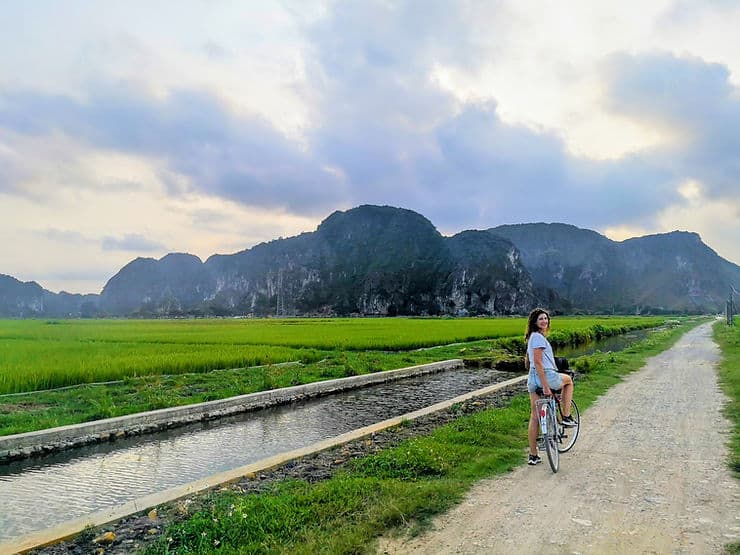
3. Screenshot or note down your accommodation booking confirmation and address
Don’t rely on being able to access the internet to retrieve the information of your accommodation. You’d be surprised how many travellers get off a bus in a new town and don’t know the address or even the name of the place they are staying at and can’t access their emails as they don’t have internet! Take a quick screenshot of your accommodation and travel bookings, or write the important information down in a notebook or in the notes folder on your phone.
4. Print any important documents you need to enter a country
For entering many of the countries in Southeast Asia, you’ll need a visa (and may need other supporting documents too). It always helps to have a printed copy of any important documents as well as the electronic version on your phone. This way, if your phone gets lost / stolen / runs out of battery, you’ll have a backup copy. If you are travelling between countries, your hostel or hotel might be able to print documents for you, or they can usually point you in the direction of a printing shop.
5. Be aware of scams
Travelling in Southeast Asia is an amazing experience and most of the local people you meet will be welcoming, friendly and helpful. However, you will also encounter locals who will try to take advantage of travellers. The most common scams usually involve taxi or tuk-tuk drivers, or money exchange kiosks. When travelling around in Southeast Asia, always negotiate the price and be clear on what the price covers. Only change money in authorised exchange kiosks – your accommodation should be able to help you with this.
How do you know if something is a scam? Usually you can tell if something doesn’t feel right. If you don’t feel comfortable and are unsure, just say no and move on. It also helps if you do your own research and plan beforehand. For example, if you research how much a specific A to B journey should cost in a tuk-tuk and the price you are being quoted is over double, you know they are trying it on.
6. Don’t put tissue paper down the toilet
As a general rule, putting tissue paper down the toilet is a no-no in Southeast Asia. There are some exceptions to this rule, for example in more modern, and usually more upscale resorts. However, in most places, the pipes cannot cope with the paper and they will block, which is not nice for anyone. Use the bin provided or embrace the water gun!
7. Read reviews
Whilst it’s not a good idea to get hung up on one negative review out of 10’s of positive ones, reading reviews is definitely worth doing. Whether this is for accommodation, attractions or transport. Filter the reviews to ‘Newest first’ and make sure you know what to expect before you part with your money.
8. Check the weather when planning your trip to Southeast Asia
Generally speaking, October – March is the best time to travel in Southeast Asia as this is the dry season and the weather is cooler and more manageable. However, research the individual countries you want to visit to plan which month would be best for you to travel.
9. Plan your route but allow for flexibility
Whether you are visiting one country or several countries in Southeast Asia, plan your itinerary beforehand. Having a rough plan of your route is a good idea so that you have an idea of what you would like to see within your time frame. However, don’t be rigid with your plans. Be flexible and embrace opportunities to visit places you hadn’t included in your original itinerary. Having unexpected experiences is one of the best things about travelling!
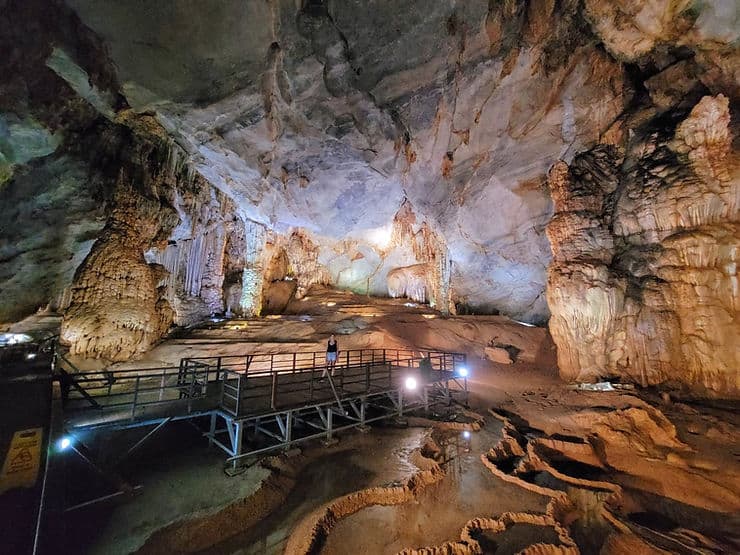
Budgeting for your trip is one of the most important things you can do, both before and during your travels. Make sure that you read these top tips to help you manage your budget and keep track of your spending when travelling.
Need help saving for your dream trip? Check out my 12 super simple tips for how to save for full time travel
10. Have a couple of good debit cards
One of the most important things you will need when travelling is a safe way to access your money. Instead of using your normal bank debit card, which may have expensive fees for use overseas, get yourself a new debit card, purely for travelling. I use a Starling Bank debit card, but I’ve also heard good things from travellers about Revolut and Monzo too. Instead of having all your money on your travelling debit card, simply ‘top it up’ when you need and keep just a small amount on the card. That way, if you lose the card, or it gets stolen, you don’t risk losing a lot of money. For this same reason, having two debit cards you can use in this way is also a great idea (just make sure you keep them in different places!).
11. Pay for large items on a credit card
When booking things like accommodation, travel (especially flights) and activities, always use a credit card. Credit cards offer a much higher protection on spending and if something goes wrong with the supplier (for example, if the service provider goes out of business), your credit card company can help you to claim your money back. I have a Halifax Clarity credit card which is great for travelling and using abroad. Shop around and find a credit card with low or zero exchange fees or charges for using it overseas.
12. Always carry some cash
When travelling in Southeast Asia, it’s a good idea to always have a bit of cash on you. If you are travelling to more remote areas, or buying something from a local shop or stall, you will need to pay for it in cash. Just be aware that many of the ATM’s in Southeast Asia charge for withdrawing money and they have a limit for how much you can withdraw, which is annoying!
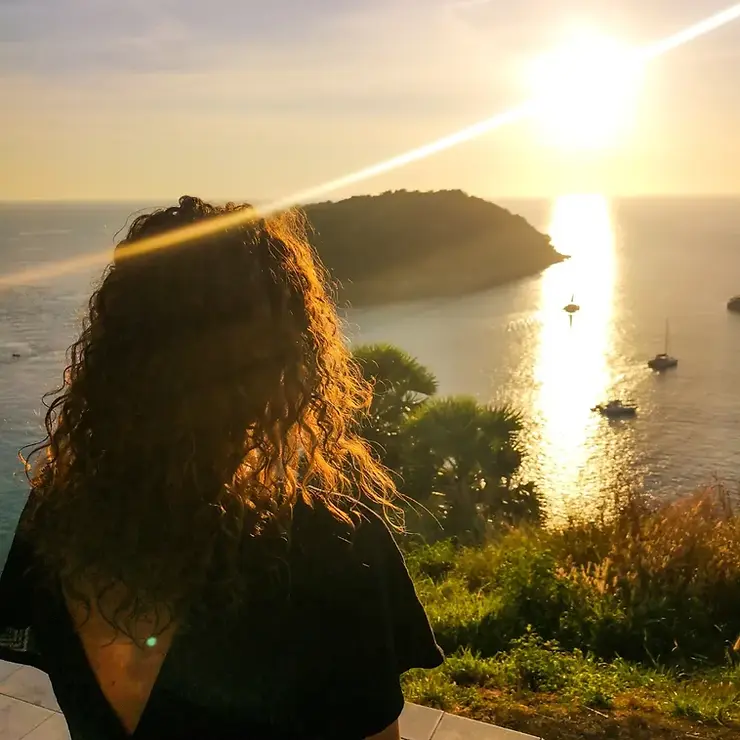
(Image: Windmill Viewpoint, Phuket, Thailand)
13. Make sure you can access your bank account if you lose your phone
Most of us manage our bank accounts via an app on our phones. However, what happens if your phone is lost or stolen? Make sure that you know how to access your bank account online or over the phone.
14. Set yourself a travel budget and track your daily spend
Possibly THE most important element of travelling is budget management! It doesn’t sound exciting (and it’s not!), but it’s vital if you don’t want your trip to end abruptly because you’ve run out of money.
When planning your trip, do your research and set a daily budget. This should be based on the prices of accommodation, food, transport and activities in your destination and also what kind of experience you want to have (on the scale of budget backpacker – luxury holiday). Read my step by step guide on How to budget for full time travel and create your own Travel Budget (you can also download my FREE Travel Budget Spreadsheet Template).
Make sure you record your daily spend to keep you on track. I use the free version of @travelspendapp . Managing your budget means that if you’re careful in some places, you can splurge on more expensive trips in others, such as an overnight luxury cruise to Halong Bay in Vietnam
15. Take advantage of travel rewards programs
There are plenty of rewards programs available to savvy travellers. One of my favourite reward programs is the Booking.com genius program. The more qualified bookings you make through your Booking.com account, the more genius points you can earn, which can get you discounts and upgrades on certain hotels, transport and experiences.
Another great rewards program, if you are from the UK, is Topcashback . Simply login to your Topcashback account and make your booking with one of the travel providers via the Topcashback site to earn cash back on your purchase.
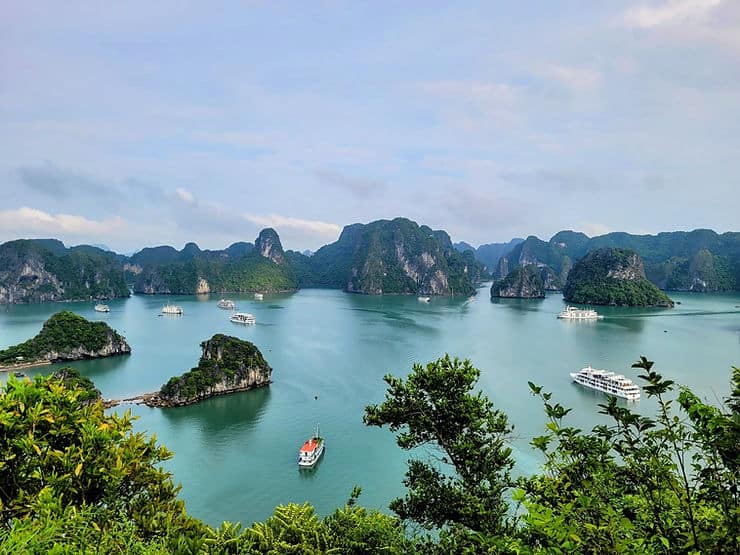
Southeast Asia is a large, diverse continent and even the individual countries within Southeast Asia are massive, so you’re going to want to travel around and explore as much of it as possible. Getting around in Southeast Asia is not always the most straightforward, so here’s some tips to help you navigate public transport.
16. Shop around for the best deal on public transport
During the 7 months I spent in Southeast Asia, I booked a lot of my bus and ferry journeys online. One of the best booking platforms for transport in Southeast Asia is 12go . Camboticket in Cambodia is also another good option. (For booking tours, Viator , Get your Guide and Klook are all great platforms). But don’t just rely on websites. Speak to your hotel or hostel and get their advice. Sometimes they can tell you about transport routes or tour companies that don’t appear on the larger comparison websites. Whatever you are booking, shop around and get a couple of prices for the best deal.
If you are travelling a longer distance, or between countries, don’t assume that travelling by plane will always be more expensive. Sometimes a flight can be cheaper, or a similar price to a long distance train, especially if you have carry-on only bags. It’s also worth taking into consideration the journey time. If a flight is only £30 more but takes 14 hours less than the bus, it may be a better option for you.
17. Travelling from A to B is not as easy as it sounds!
Travelling from A to B sounds easy (and it should be!), however travelling from A to B in Southeast Asia usually ends up being a lot more complicated than it needs to be! Don’t be surprised if you are asked to change buses several times throughout your journey as different drivers and companies take over each section of the trip. I took a journey in Thailand from Railay in Krabi to Koh Samui which took 12 hours and consisted of 1 boat, 5 buses, 1 ferry and a taxi (which was 4 more buses than expected!) Try to stay patient and go with it, it won’t make you feel any better getting stressed about it.
18. Give yourself plenty of time for transfers
As I’ve mentioned, travel in Southeast Asia is usually not a simple process. Often journeys depart later than scheduled and will take a lot longer as the drivers make random stops along the way. If you are planning a journey that has transfers with different companies (for example, a bus journey followed by a ferry), make sure that you leave plenty of time between each leg of the journey, as you are most likely going to be late!
19. Prepare for delays or things to go wrong
You can see a theme emerging here! Most journeys in Southeast Asia are late, or delayed, or there’s been a miscommunication with your booking. Try to be patient and polite with the locals. Most local people I encountered in Southeast Asia were incredibly warm and friendly and willing to help. So, be respectful and don’t be rude if things don’t go to plan, it’s all part of the travelling experience!
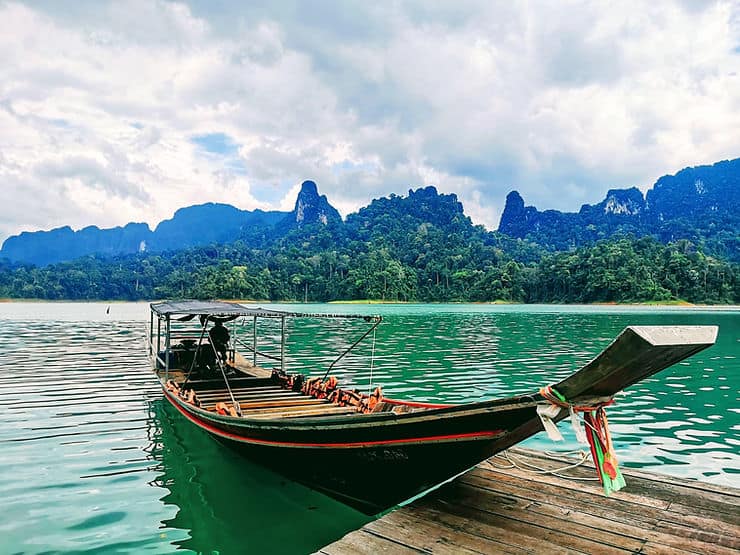
20. Don’t expect formal booking confirmations for public transport
If you’re the kind of person who likes to have written confirmation of everything, then prepare to get out of your comfort zone! As someone who is super organised and over-prepared, I had to learn to accept that formal booking confirmations don’t always exist in Southeast Asia when booking transport. Instead, you’ll be given a flimsy paper slip as confirmation, which at some point will be taken off you and replaced with a coloured sticker (which may later be replaced with another sticker!) They do love a sticker, especially in Thailand! Just take photos of your paper slip or sticker in case you lose it and you’ll be fine.
21. ALWAYS negotiate when ordering a tuk-tuk or taxi!
Rule no.1 when travelling in Southeast Asia – always negotiate! In some of the larger cities you can use Grab, Uber or Gojek which is great as it gives you an idea of what the cost should be. Even if you are getting a ride with a local driver, use the price on Grab/Uber/Gojek to help you negotiate. If that is not available, ask your hostel or hotel how much the prices should be so you have an idea of what is a good price and what is a bad price.
22. Get an international driving licence
If you are considering hiring a car or scooter in Southeast Asia, get yourself an International driving licence. If you are from the UK, you can pick these up in the Post Office for £5. Make sure you keep your licence and your international licence with you at all times when driving. Occasionally local police may stop you and ask to see your licence and if you don’t have it (or the correct one), they may fine you.
23. Don’t feel pressured into riding a scooter
Travelling in Southeast Asia and riding a scooter seem to go hand in hand (if you believe everything you see on Instagram, or read in some blogs). However, don’t feel pressured to ride a scooter if you don’t feel comfortable. The roads in Southeast Asia are uneven and windy and the traffic can be crazy, with people cutting you up and zig-zagging down the road. It is absolutely possible to travel in Southeast Asia without riding a scooter if you don’t want to. If you do want to ride a scooter, make sure your travel insurance covers you and always wear a helmet.
24. Have motion sickness tablets with you on travel days
Even if you don’t normally feel travel sick, you may find yourself feeling queasy. Many of the roads in Southeast Asia are quite hilly and windy and the drivers can be fast and erratic. Also, if you are on a small minibus, it is usually hot and cramped, making you feel even worse. (If you are in the north of Thailand, the Chiang Mai – Pai bus is notorious for making people feel ill). Buses aside, you will likely be taking several boats and ferries during your time travelling in Southeast Asia and some of the boat crossings can be bumpy. Make sure that you have some motion sickness tablets with you for your journey. These can be picked up cheaply from 7/11 in Thailand and also most pharmacies or shops.
25. Pack warm clothing in your day bag on travel days
If you are travelling long distances on a coach or sleeper bus, make sure you keep a warm top or hoodie with you. The buses in Southeast Asia are renowned for having the coldest air conditioning!
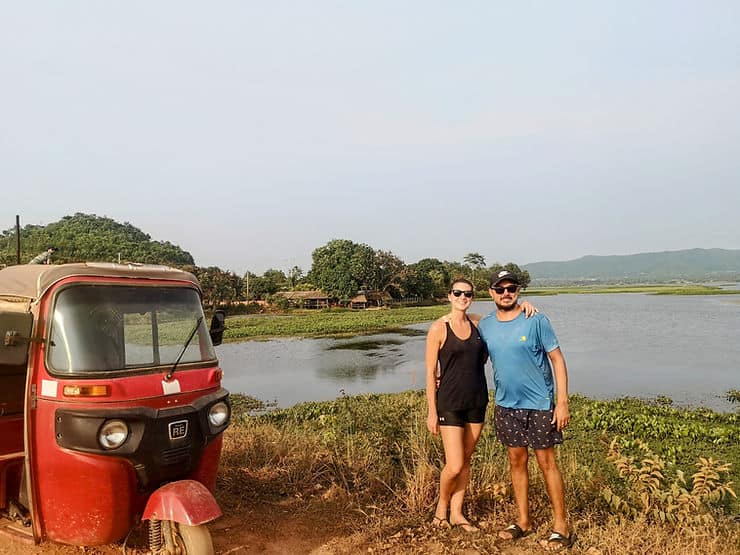
Sampling the food and drink in a new country is all part of the travelling experience and one of the best parts of visiting Southeast Asia is to eat the local food. Here’s a few tips to keep you safe and avoid the dreaded traveller’s belly!
26. Don’t drink the tap water
Unless you want to spend a couple of days being ill, don’t drink the tap water! Bottled water is very cheap to buy, Unfortunately, this does often mean that you will be using a lot of single-use plastic, which is a big problem in Southeast Asia. Some larger cities such as Bangkok, Phuket and Chiang Mai in Thailand have filtered water machines where you can top up your refillable water bottle for a fraction of the cost.
27. Be careful of the fruit!
It can be hard to stay healthy when travelling and the fruit in Southeast Asia is delicious, however, just be careful where you buy it from. There’s plenty of street stalls selling pre-cut fruit. Most of it will be fine, however you don’t know how long it has been sitting there getting warm and also whether it has been washed in clean drinking water. Eating dodgy fruit can make you really sick and wipe you out for several days – believe me! Try to pick places where they cut the fruit fresh in front of you, or buy whole fruit which you can peel/cut yourself.
28. Eat the street food!
The street food scene in Southeast Asia is brilliant (plus its great for your budget too!) The street markets are a lively buzz of noise and smells, creating a great atmosphere. Make sure you go to as many street food markets as you can, it’s all part of the Southeast Asia experience! If you buy meat from a street vendor, make sure that they fry it / cook it in front of you. Eating meat that has been left out for a while is another thing that could leave you chained to the bathroom for a day or two.
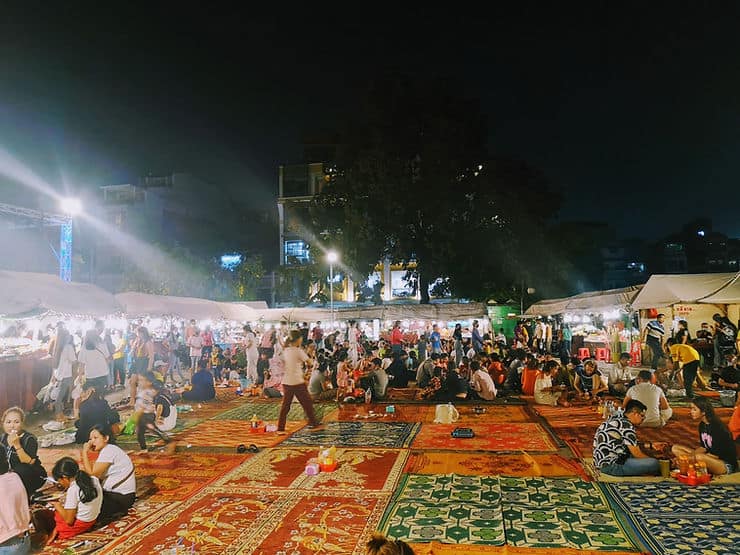
29. Try local dishes
When you visit somewhere new, make sure you know what the local dishes are and try them. Ask the locals you meet what food you should eat whilst you are there. There’s often regional variations of national dishes too.
30. Don’t be put off by the interior (or lack of!) a place
Some of the best food I’ve eaten in Southeast Asia has been whilst sitting outside on a tiny plastic stool at a metal table! In my experience, the small, family-run local restaurants have the best food and even better, they are the most budget-friendly too!
31. Bring a reusable water bottle and bag
As I’ve mentioned, some of the larger cities and towns in Southeast Asia do have places where you can top up your reusable water bottle. There are also some cafes which will allow you to top up for a small charge. Reusable water bottles are also vital for taking on some of the amazing hikes Thailand has to offer. Tip – buy an insulated bottle to keep your water cool!
Take a reusable cotton tote bag too for your shopping, rather than asking for a plastic bag each time you go to the shop. This foldable tote bag is perfect as it has a zip to keep your valuables secure too.
32. Check the spice level!
Spicy food in Southeast Asia is on a different level! A ‘mild’ dish is comparable to a medium in the UK. Don’t be afraid to ask for no chilli or for a dish to not be spicy.
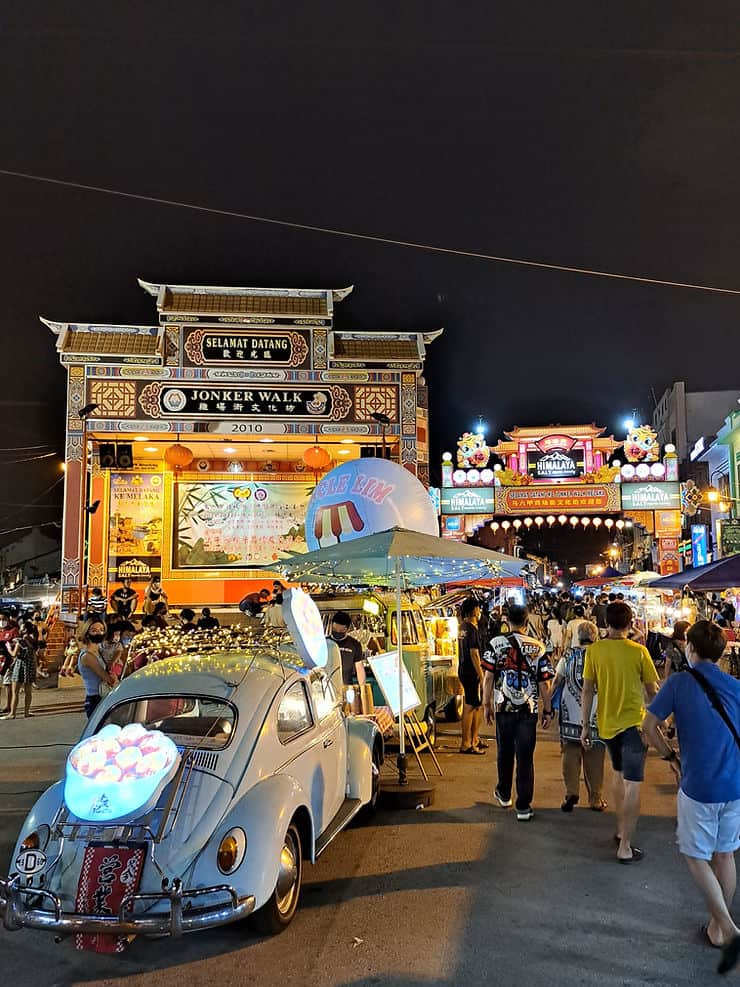
Experiencing a different culture and learning about the history and traditions of a place is one of the best bits about travelling. Read these four things you must do to make sure that you are respectful and get off to a great start with the locals when travelling in Southeast Asia.
33. Learn basic phrases
If you are travelling in another country, even just for a couple of weeks, it’s a great courtesy to know a couple of key phrases, such as Hello and Thank You. Even though English is widely spoken across Southeast Asia, locals love it when you try to speak a little of their own language and will be happy to teach you some new phrases.
34. Be respectful
Southeast Asian culture is very different to western culture and each country in Southeast Asia has their own traditions and cultural differences. Make sure that you know how to behave in certain situations and be respectful. For example, women should not approach, converse with or touch Monks. Women also cannot enter certain shrines or temples whilst menstruating.
Travelling to Bangkok? Make sure you visit these three temples
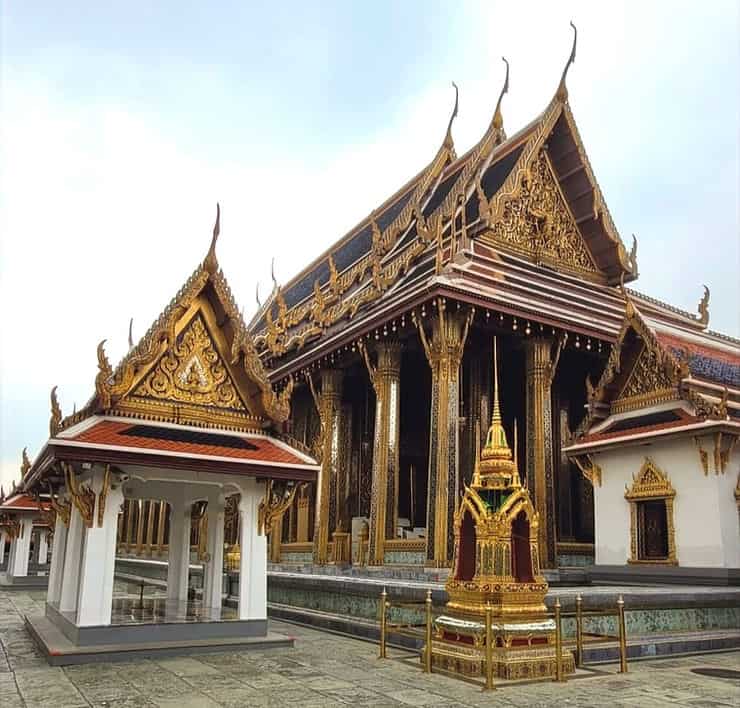
35. Dress appropriately
Whilst both men and women should make sure that they are respectfully dressed when entering a temple or government building, this mostly applies to women. Whether you’re exploring Ankor Wat , in Cambodia or the Grand Palace in Bangkok, women must always cover their knees and shoulders when visiting a temple.
When bathing in certain spots, it is respectful to cover up. Wearing a bikini is acceptable at most public beaches and in your hotel or hostel pool, however, if you are visiting a local bathing spot, you will notice that Southeast Asian women wear shorts and a t-shirt to bathe in. It is polite to do the same.
36. Take off your shoes
This is common practice in many places throughout Southeast Asia, but it is mostly associated with Thailand. Shoes should always be removed before entering a temple, but you will also need to remove shoes before entering other places too. If you are staying in a small guesthouse, or homestay, it is polite to leave your shoes outside. This is the same if you enter a small, local shop and even when you travel on certain boats and buses (especially the sleeper buses in Vietnam).
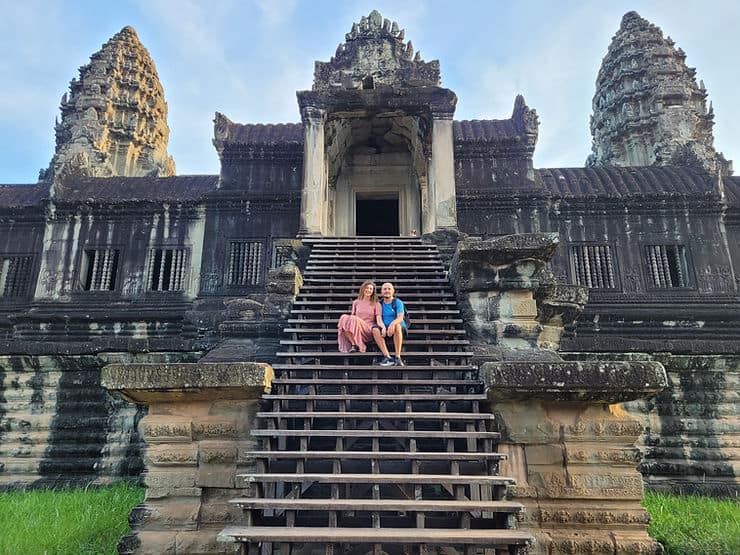
Prepare for your trip to Southeast Asia by making sure that your health requirements and needs are taken care of before you travel…
37. Check what vaccinations you need before you go
When planning a trip to any new country, it is important to make sure you have received all the relevant vaccinations beforehand. If you are in the UK, you can check the NHS website to see which vaccinations are recommended for the country you are visiting and which vaccinations you can get for free on the NHS.
38. Stock up on sunscreen
Suncream is not widely available in Southeast Asia, especially if you are travelling away from the main tourist holiday destinations. It is also very expensive. You will find lots of ‘sun serums’ or ‘daily lotions with spf’ – be careful with these, whilst they do offer some level of protection, they are not full sun creams and are not recommended for using while sunbathing. If you are only travelling for a short amount of time, take several bottles with you from home, if you have room.
39. Take any medication / feminine products with you
If you are travelling to some of the smaller islands, or more remote places in Southeast Asia, there is not always a large pharmacy available. So, if you need medication, make sure that you bring it with you and restock it before you run out. Feminine products can be expensive too, so if you can, bring these with you.
40. Always carry medication for ‘travellers belly’
It’s not nice to talk about but almost every traveller will experience an upset stomach at some point during their travels in Southeast Asia (no matter how careful you are). Although the best advice is to rest and let the bug ‘pass through’, that is not always possible, especially if you have a bus journey to get through. With that in mind, carrying some tablets for diarrhoea will be a lifesaver!
41. Always have a toilet roll with you on travel days!
This goes hand in hand with the above – most toilets in Southeast Asia don’t have toilet paper and there’s usually a small fee for using them, so carry some small change too.
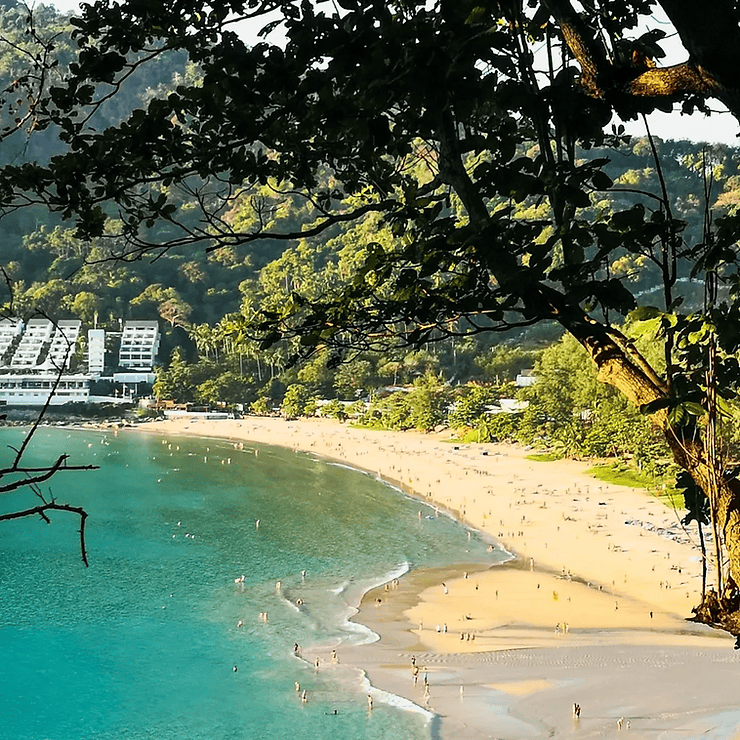
Depending on how long you are travelling in Southeast Asia for, your packing list will vary. This is also true if you are planning a long trip and are visiting other places outside of Southeast Asia too. So, rather than include a full packing list in this post, here’s a couple of top tips to help you pack better.
42. Take a Scarf or sarong
A scarf or sarong is one of the most versatile items you can pack in your bag. It is great for covering your shoulders in a temple, laying on at the beach, throwing on over a bikini, using it as a pillow on travel days or keeping you warm on the buses! Plus it takes up virtually no space in your bag!
43. Pack layers
You definitely don’t need as many clothes as you think you do, and you will end up wearing the same things over and over! Pack light things that you can layer and roll up small in your bag. In terms of shoes, one pair of trainers, one pair of flip flops and one pair of Birkenstock or chunky walking sandals will be suitable for pretty much everything in Southeast Asia. I lived in my Birkenstocks for pretty much the whole year!
44. Leave room for new clothes!
Don’t go shopping for everything before you leave home. The clothes in Southeast Asia are so cheap and let’s face it, most of the clothes you will buy at home will most likely come from Southeast Asia anyway! If there’s anything you’ve forgotten or wished you had packed, you will more than likely be able to buy it in Southeast Asia.
45. Be savvy with your chargers
There’s nothing worse than having a bag full of cables and charging wires! A lot of devices will accept the same charger cable and this is a great way to reduce the number of wires you take. For example, my laptop wire will fit my phone and my Go pro, meaning I only need one wire for three devices. (I do also have a single USB cable that will plug into an adaptor so I can charge two things at one, but this takes up hardly any room). I’d also recommend putting your wires into a small organiser case , so they are easy to locate in your bag.
46. Embrace the packing cube!
Packing cubes are a lifesaver when it comes to packing for travelling. Even if you are sceptical about it at first, you will soon realise how handy they are. It’s a great way to separate (and easily locate!) your clothes in your bag. They also help to condense things down in your bag!
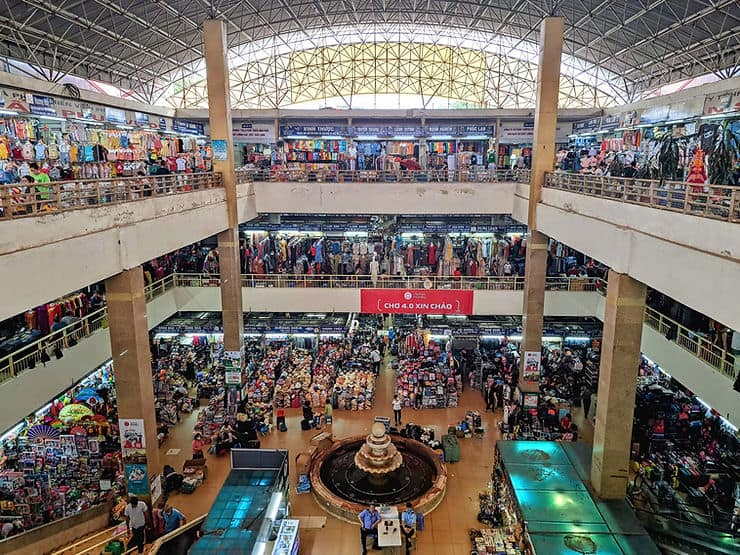
Making the decision to go travelling can be scary but it is also super exciting! Have the best time and remember that comparison is the devil!
47. Chat to others
One of the best parts of travelling is meeting other like-minded travellers. There’s a reason that Southeast Asia is one of the best places to travel solo. There’s so many great hostels and Facebook groups, where you can meet up with other people.
48. Everyone has bad days when travelling
You will have THE BEST time travelling, but there will also be some days that don’t quite go to plan and other days where you are tired or may feel homesick. The best advice I can give you is not to dwell on those days, it is completely normal and usually after a good night’s sleep and a comfy bed, you will feel much better.
49. Don’t compare your journey to others
Everyone’s travel experience is different and your trip will be unique to you. Don’t get caught up in comparing your journey to everyone else’s, just enjoy and embrace your own travel experience.
50. Have fun!
Travel is one of the best things you can do (in my totally biased opinion!). Whether you’re travelling in Southeast Asia for a few weeks or a few months, relax, go with the flow and HAVE FUN!
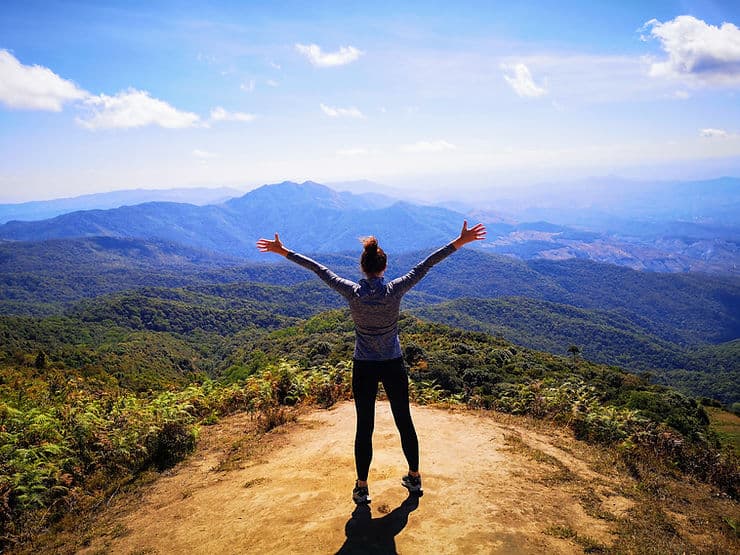
Related Posts
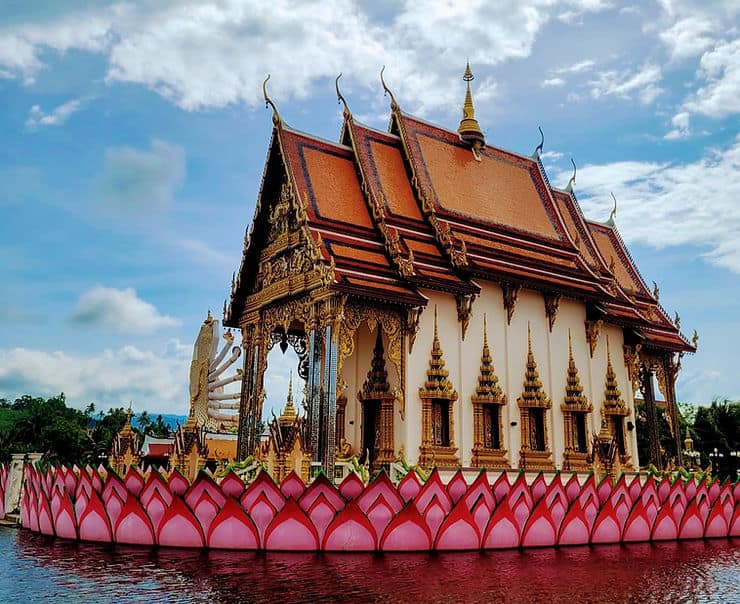
Top 15 things to do on Koh Samui, Thailand
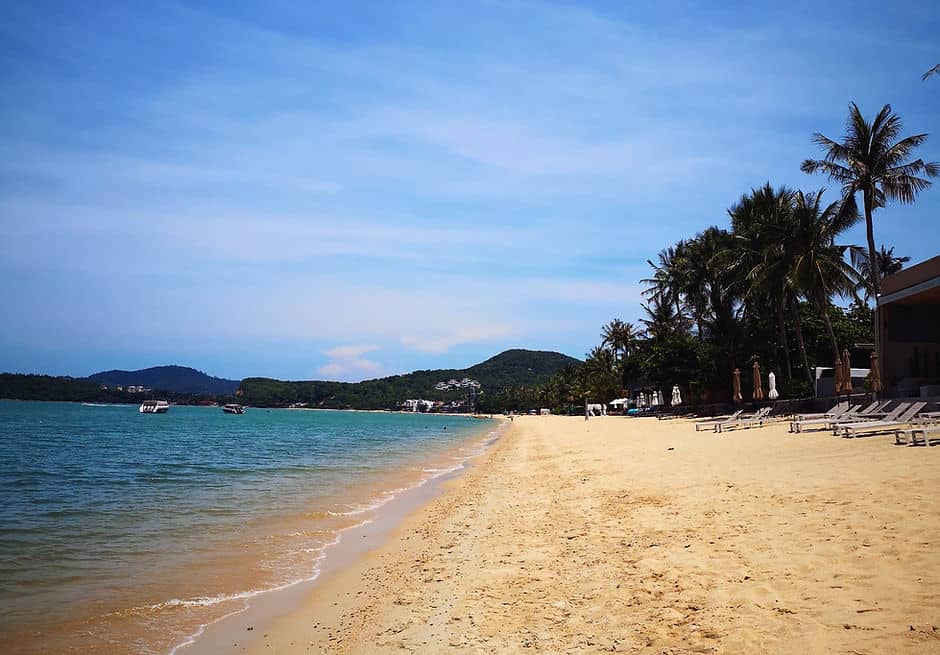
A guide to visiting Koh Samui, Thailand
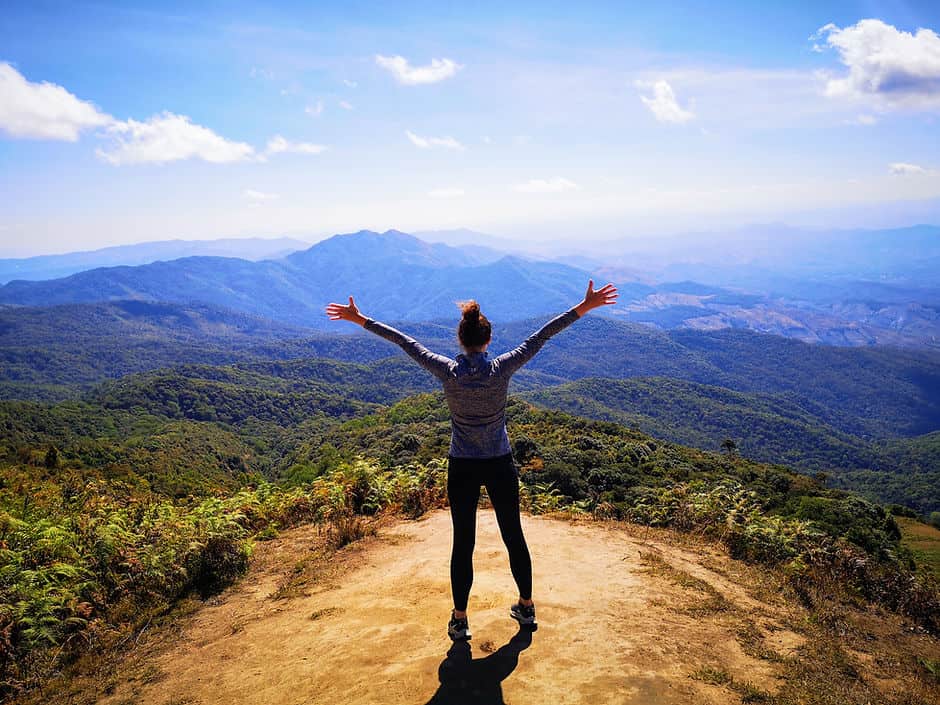
10 Unmissable hikes in Thailand
12 Insane Adventures To Get Your Heart Pumping
12 magical destinations to witness in your lifetime, europe’s best-kept secrets: 10 underrated countries to visit this year, 14 jaw-dropping places that keep south america #1 on my bucket list, the 10 countries you can visit to see the northern lights.

The Best Countries To Visit in Southeast Asia, Ranked

Southeast Asia has long been a travel spot for many thanks to its idyllic beaches with pure white sand, turquoise oceans, authentic food and a culture full of history and diversity. While all areas of the region are arguably a must-see, we’ve ranked the best countries to visit according to beauty, magic, and less crowds.
Brunei is one of the low-key destinations to visit in Asia, but arguably underrated. It has been voted as a country with one of the world’s highest standards of living thanks to its plentiful oil and gas reserves.
The capital, Bandar Seri Begawan, has various points of interest including the stunning Sultan Omar Ali Saifuddin Mosque, the Istana Nurul Iman palace and the historical Brunei museum.
Just half an hour away from Bandar Seri Begawan lies the Tutong district, known for its natural beauty in the form of scenic beaches, its serpentine lake surrounded by swamps and the diversity of its people in the Rumah Budaya cultural village which showcases five ethnic Bornean groups that make up the district.
9. Malaysia
Malaysia is rich in cultural heritage with a mix of Malays, Chinese and Indigenous groups. Known for its tropical rainforests, national parks that are perfect for long hikes and a fantastic wildlife- watching scene, Malaysia is a vibrant country worth a wander.
The most popular national park, Taman Negara is perfect for long-haul treks, wildlife spotting and treetop walks. In this jungle you’ll find ancient trees, beautiful orchids and even the rafflesia, the world’s largest flower.
For those who enjoy city vibes, the capital, Kuala Lumpur is the place to be with its host of shopping malls, street markets and bright lights.
If you’re on the other side of the spectrum and thrive in nature, a visit to the Cameron Highlands in Pahang is a must-do. Not as hot as the lowlands of Malaysia, some have even compared the charm of the resort to that of typical English villages.
Myanmar, also known as Golden Land (or Burma), is often not included in the Southeast Asia travel to-do lists. It’s unfortunate, because it is home to gorgeous landscapes, ancient towns and sacred sites.
Top things to do in Myanmar include hot air balloon riding in Bagan, the Buddhist Sulamani Temple, the incredible golden Botatuang Pagoda and the serene Kandawygi Lake in Yangon.
It’s still relatively new to tourism, thus the majority of locals are open to meeting new people solely to have conversation, provide insight into their culture and give you a smile.
7. Singapore
Technically a city-state off Southern Malaysia, Singapore differs from the rest of Southeast Asia in terms of how developed the country is. Seen as a modern and cosmopolitan city, it’s become a global hub.
Visiting Singapore, you’d need to be prepared to spend more as it’s not as cheap as the rest of South East Asia. If you’re willing to indulge, the city is great for shopping and leisure, with points of interest including Universal Studios, the Sky Deck and the Infinity Pool at Marina Bay Sand. Although urban, you can still expect to see luscious greenery in Singapore that’s present in the rest of the continent.
6. Thailand
Thailand is no hidden treasure, and has been an attractive tourist spot for holidayers and backpackers for years. With good reason, too – the country boasts some of the world’s breathtaking beaches and is famous for it’s wild Full Moon Party in Koh Pha Ngan.
Thailand’s picturesque beaches of the island of Kho Phi Phi were even featured in the 2000 Leonardo DiCaprio film, The Beach. This South East Asian country is no stranger to beautiful architecture, from the Grand Palace and Emerald Buddha in Bangkok to the Pavilion of the Enlightened in Mueang Boran. Nicknamed of the Land of Smiles and Enchantment, Thailand is an unmissable addition to your travel list.
5. Cambodia
photo: samanthabrown.zippykidcdn.com
Rich in history, delicious street food and proud owner of the greenest of jungles, Cambodia is another essential to visit when doing a South East Asia tour. Although the country is visited by millions of tourists each year, many parts remain untouched and unexplored by tourists. Despite being the obvious choice, the Angkor tourist site in Siem Reap is a site not to miss, the epitome of Khmer architecture with over a thousand temples including the popular Angkor Wat.
Another fascinating element Cambodia is the Irrawaddy Dolphin, rare mammals that live in a stretch of the Mekong in the North East. For art enthusiasts, Phnom Penh’s National Museum displays some of the most captivating art, including ancient statues and murals.
4. Laos
Laos is a country that lies between Thailand and Indonesia, and well worth a visit if you’re doing a South East Asia tour. Often overlooked by its neighbour Thailand, Laos has more to offer than you’d expect. The Mekong river is the seventh longest in South East Asia, surrounded by stunning forestry and mountains. Way off the tourist trail, you’ll find the Vieng Xai caves, which were originally intended to be bomb-shelter caves during the Vietnam War. In Laos, you’ll also find Luang Prabang, a remote city 700m above sea level and often thought to be more laid-back compared to other places in South East Asia.
Other interesting parts of Laos include Si Phan Don, a cluster of islands near the Cambodian border in the Pakse province and the Khone Phapheng Falls, the largest cascading waterfalls in South East Asia, in the Champasak region of Southern Laos.
3. Indonesia
photo: cnn.com
Indonesia is a gorgeous country spread across thousands of islands, sitting on both sides of the equator. If you’ve heard all the talk about the beauty of Bali and would like to visit some of its islands, Kuta is your best bet. For those looking for something different and less packed, you will find it in Lombok, with it’s white-sand beaches and crystal clear waters, as well as plenty of hiking trails.
Indonesia also boasts the largest Buddhist temple in the world, the Borobudur in Central Java, and the largest mosque in South East Asia, Masjid Istiqlal in Jakarta.
Thought dragons were merely a fantasy? Think again – the Komodo Island is famous for its volcanoes and the Komodo Dragons of Rinca Island, the largest living lizards.
Vietnam is experiencing a revival since the horror of the Vietnam War forty years ago, with enlightened spirits, upgraded roads, new hotels and riddance of the Communist system.
The country has so much to offer in the form of its culture and beauty, from its temples and pagodas that represents the diversity of religions in the country, to the boat trips that explore the Red River Delta and the famous Ha Long Bay.
The breathtaking mountains of Sa Pa are perfect for a trek, overlooking the terraced rice fields of the Muong Hoa Valley, while Hoi An is the destination for history buffs, with its colonial architecture and iconic Vietnamese tube houses.
1. The Philippines
The Philippines is made up of over 7,000 islands and is best known for its capital, Manila, which, thanks to its high-paced lifestyle and urban architecture, is actually quite different to the rest of the country.
Highlights of the Philippines are Palawan, a dreamy island province with amazing exotic beaches and wildlife (rightly voted The Most Beautiful Island in The World by Condé Nast Traveler), a similar island named El Nido, and The Chocolate Hills (a geographical formation in the Bohol province).
What are your recommendations on which countries to visit in Southeast Asia? What are your favorites? Leave a comment for us below.
For more inspirational photos + travel tips, follow @projectinspo on facebook and instagram .
- GET PAID TO SHOOT
- TRAVEL FOR FREE
- MEET THE FOUNDER
- INSPIRATION

Touropia Travel Experts
Discover the World
29 Best Places to Visit in Southeast Asia

Southeast Asia is a group of diverse countries between the Indian Ocean and the Pacific Ocean, featuring indigenous cultures influenced by Indian, Chinese and Western culture. The region includes the most populous Muslim country in the world, very prominent Buddhist countries, and quite significant Christian, Hindu and Animist communities.
It has long been a favorite corner of the world for globe-tramping backpackers, known for its perfect beaches, tasty cuisine, low prices, and good air connections.
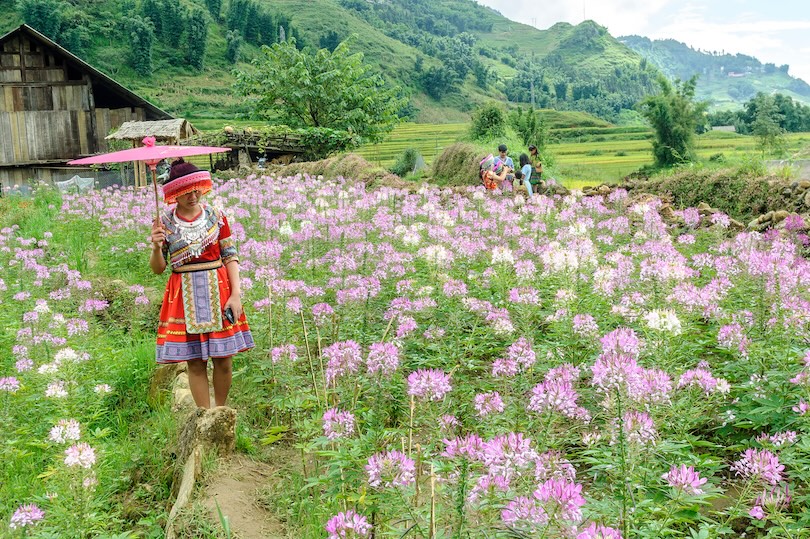
The countries of Southeast Asia represent a totally different culture for Western travelers. Instead of cathedrals, they’ll find temples. Instead of cold temperatures and snow in the winter, for the most part they’ll be bathed in a tropical climate. They may find simple accommodations in remote fishing villages but also luxurious five-star hotels in the bigger cities and on the more popular islands.
Southeast Asia will appeal to active, adventuresome travelers, who want to trek through steamy jungles, dive in some of the world’s best coral reefs, camp or go whitewater rafting on new rivers. But the region also offers the less active travelers something, who, after a day of visiting temples and other cultural sites, just want to relax in comfort in a luxury hotel. An overview of the best places to visit in Southeast Asia
Map of Southeast Asia
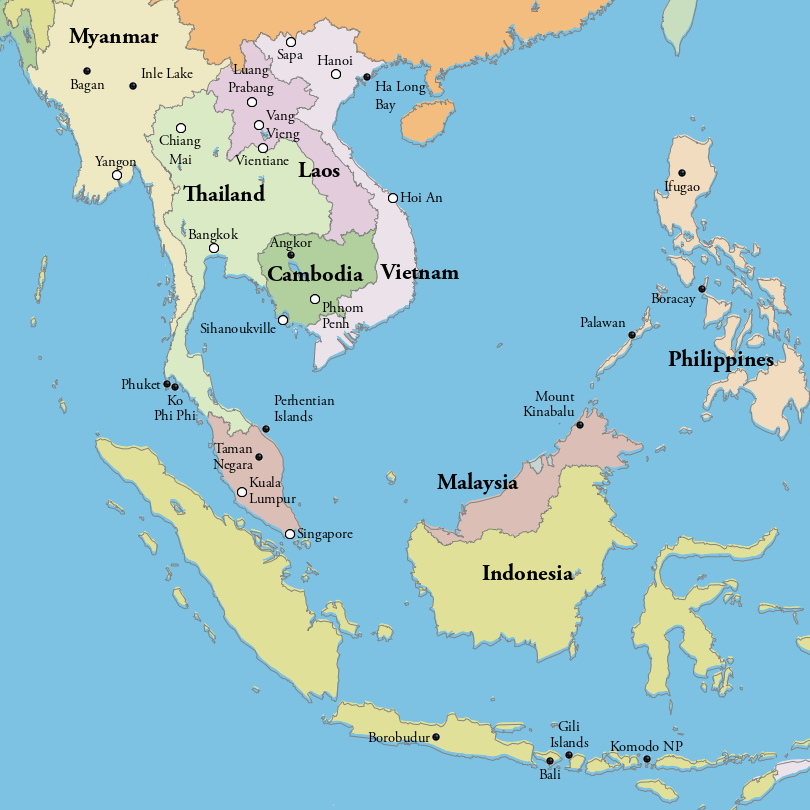
29. Vientiane
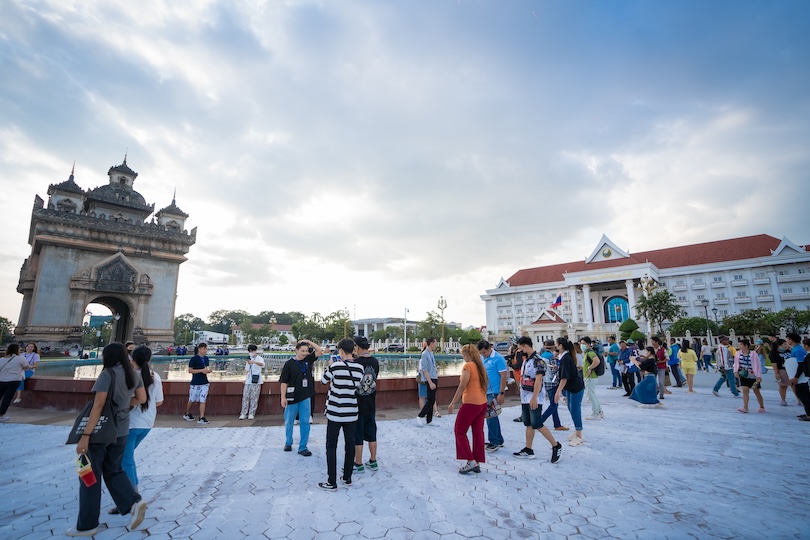
Both the capital and largest city of Laos, Vientiane is an underrated place to visit with lots of different sides to it. Besides boasting beautiful Buddhist temples, it is known for its elegant French colonial-style architecture and vibrant street food scene.
Set right in the south of the land-locked country, its charming tree-lined streets lie along the northern bank of the Mekong River. In recent decades, the city has doubled in size as malls, hotels and office buildings have shot up everywhere. While the traffic is much more chaotic now, its peaceful temple gardens and riverfront promenade are still wonderful to explore.
Other than admiring the glimmering gold Pha That Luang – Laos’ national symbol and most important religious site – you can amble about the many museums and night markets. Wat Si Muang and Buddha Park also attract visitors with their amazing architecture and artworks.
28. Sihanoukville
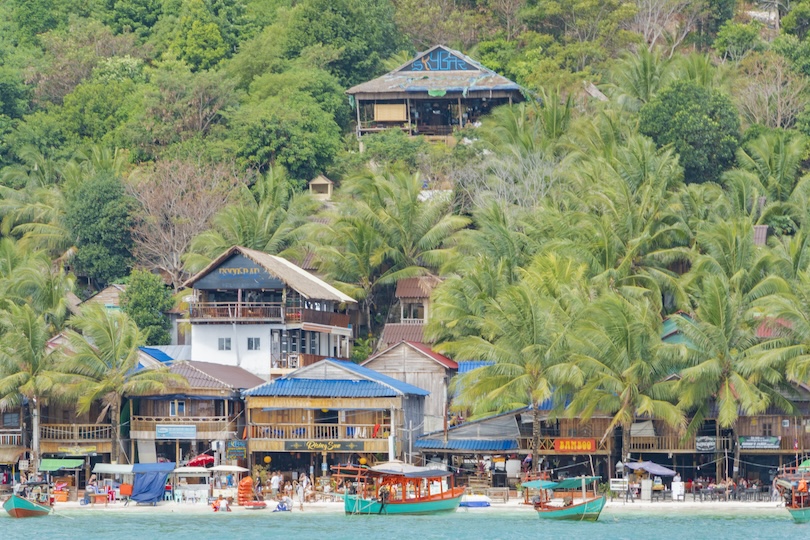
As it is home to many of Cambodia’s best beaches , Sihanoukville is a great spot to relax and unwind after exploring Angkor Wat and Phnom Penh. Lying along the Gulf of Thailand, it has heaps of fun watersports to enjoy with idyllic islands also located nearby.
Also known as Kampong Saom, the popular seaside city was quiet until pretty recently when swanky Chinese resorts and casinos were erected everywhere. Although it’s lost a bit of its laid back charm, there are now tons of restaurants and bars to try out.
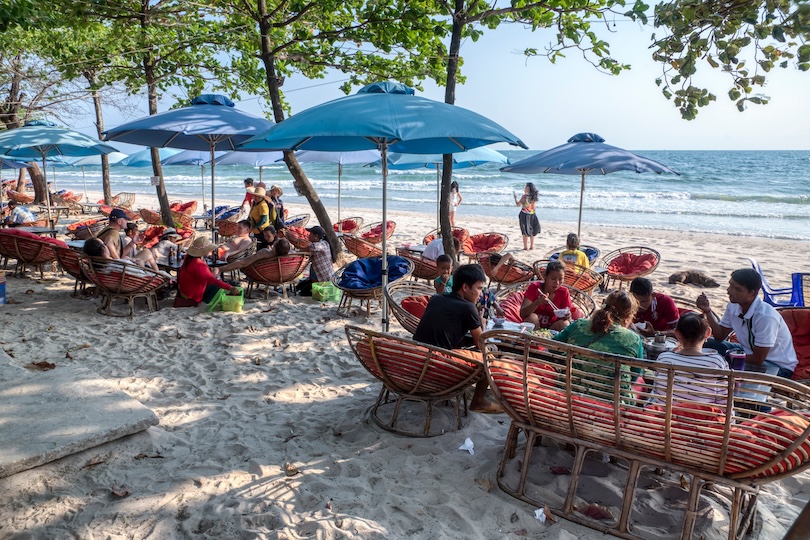
Plenty of pristine beaches still line its coast with Ream National Park also preserving lovely mangroves and colourful coral reefs. Aside from sunbathing, swimming and snorkelling, you can rent jet skis or take boat trips to the gorgeous Koh Rong and Koh Russei islands.
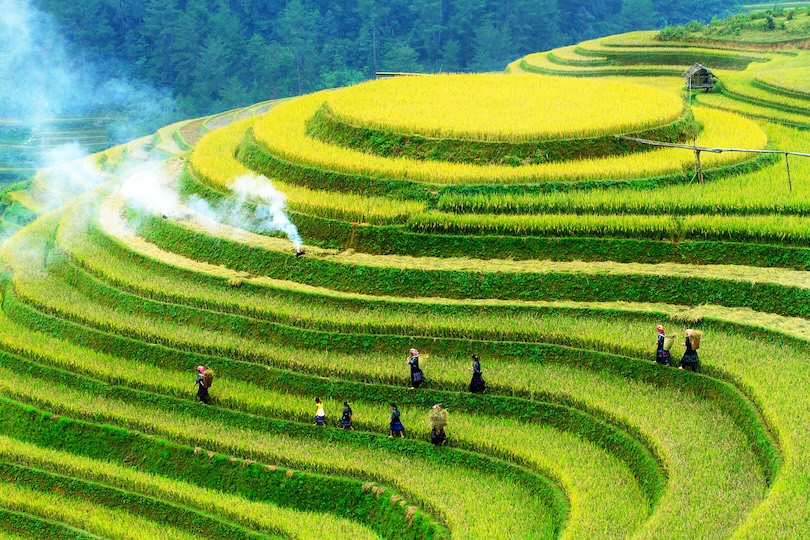
Nestled away amidst the remote mountains and rice terrace-filled valleys of northwestern Vietnam is the scenic town of Sapa . An increasingly popular tourist destination, it is famous for both its stunning landscapes and traditional hill tribe villages.
Overlooked by the rugged Ham Rong Mountain, the small settlement is surrounded by loads of spectacular nature. While some hike to Muong Hoa Valley for its picturesque rice paddies, others climb up the 3,141 meter-high Mount Fansipan – the tallest peak in Southeast Asia.
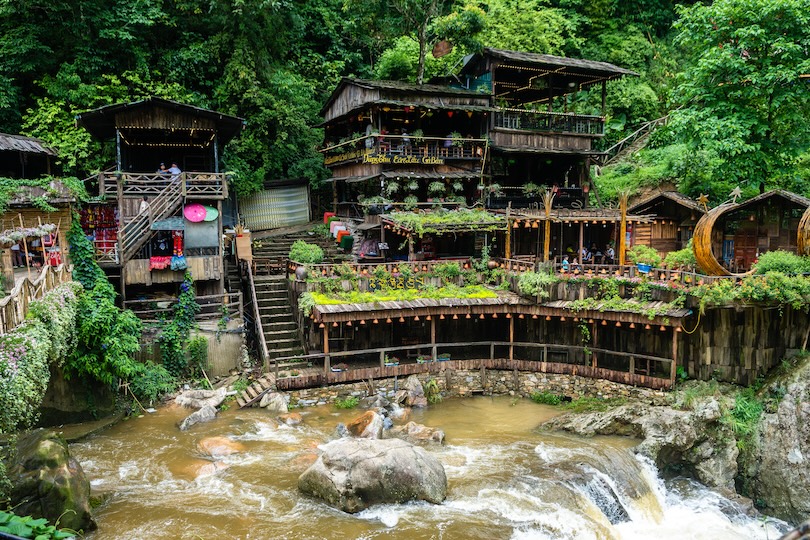
Many also come to learn about the isolated region’s unique cultural heritage and the ethnic minorities that live here. In addition to picking up some local handicrafts at its market, you can stay overnight at the quaint Cat Cat Village or trek to some of the other towns nearby.
26. Perhentian Islands
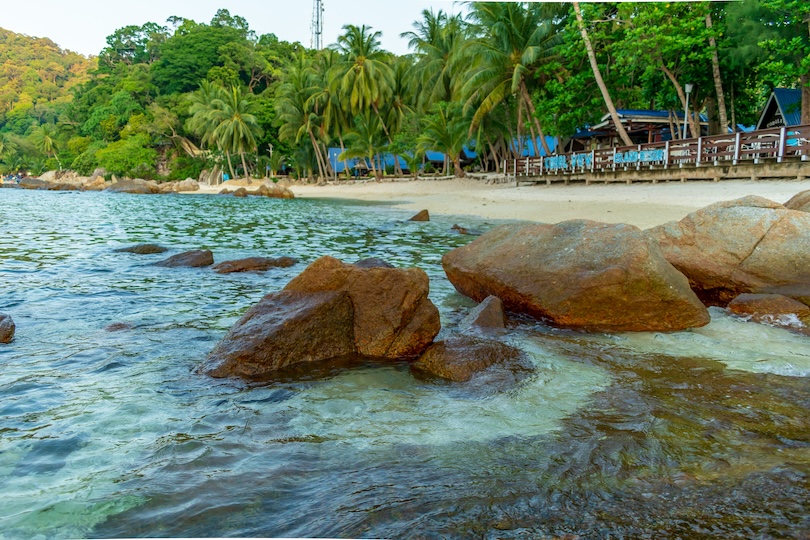
Just a short speed boat ride off the northeast coast of Peninsular Malaysia are the incredible Perhentian Islands . Appearing as if out of a travel brochure, the jungle-clad archipelago and all its breathtaking beaches are surrounded by shimmering, turquoise waters.
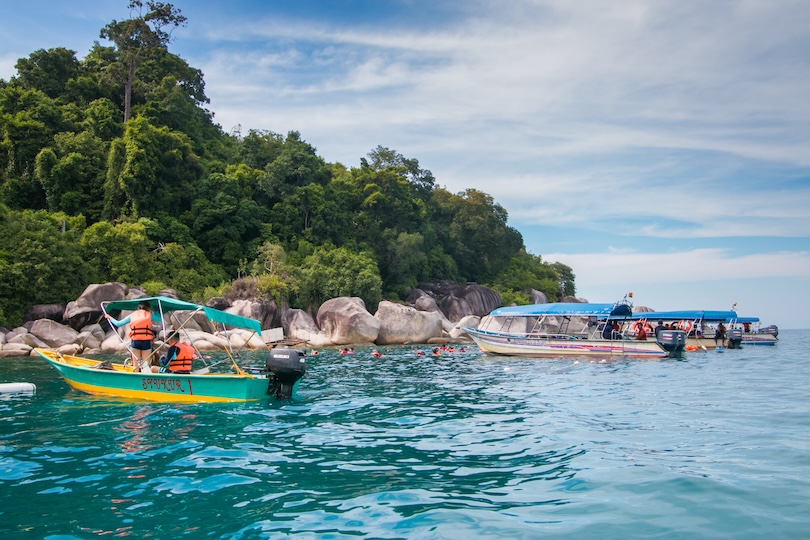
Meaning ‘stopping point’ in Malay, the cluster of coral-fringed islands are completely unspoiled with only the larger Perhentian Besar and Perhentian Kecil being inhabited. Protected as part of Pulau Redang National Marine Park, they have some stupendous snorkeling, scuba diving and sea-kayaking to enjoy.
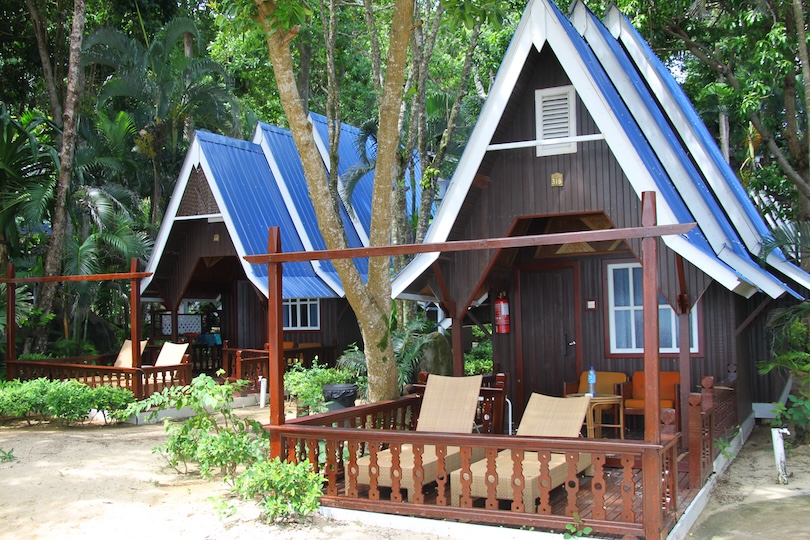
After ogling at all its magnificent marine life, you can hike about its steamy jungle or lounge on picture-perfect beaches. Some epic rock formations also line their sparkling white sands with relaxing resorts and restaurants dotted here and there.
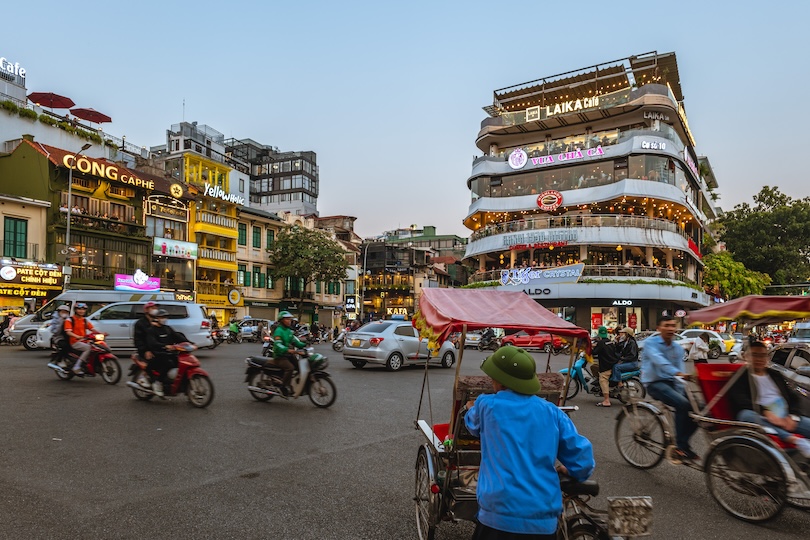
In stark contrast to the tranquil isles, the hectic, high-paced Hanoi threatens to overwhelm your senses. Once you get used to the constant traffic and hooting horns, Vietnam’s capital has much to love about it with millions visiting each year.

One of the oldest cities on Earth, it exhibits a fascinating mix of East and West as concrete communist blocks lie next to French colonial buildings and ancient Asian pagodas. In its Old Quarter, there are atmospheric markets and alleys to explore with the tiny cafes along Train Street always a big draw.
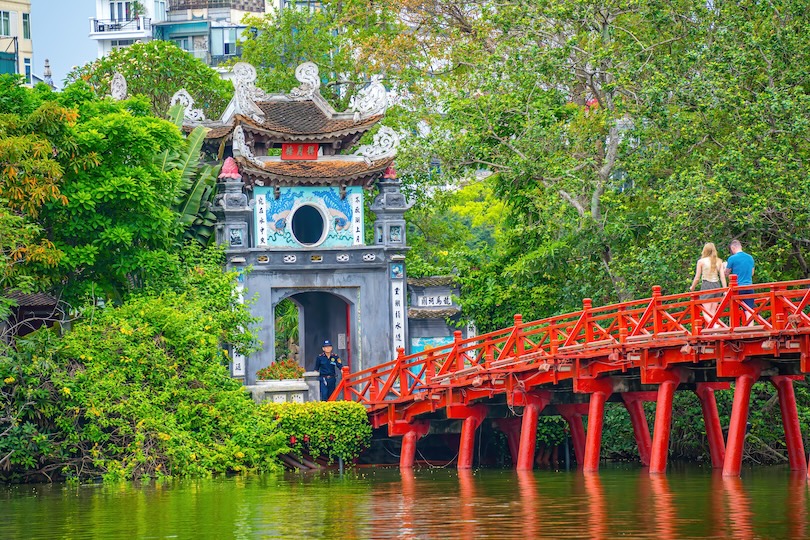
Other than trying terrific street food, there are numerous museums and galleries that cover the history and culture of the country. If the chaos ever gets too much, you can stroll about the handsome Hoan Kiem Lake or Temple of Literature.
24. Vang Vieng
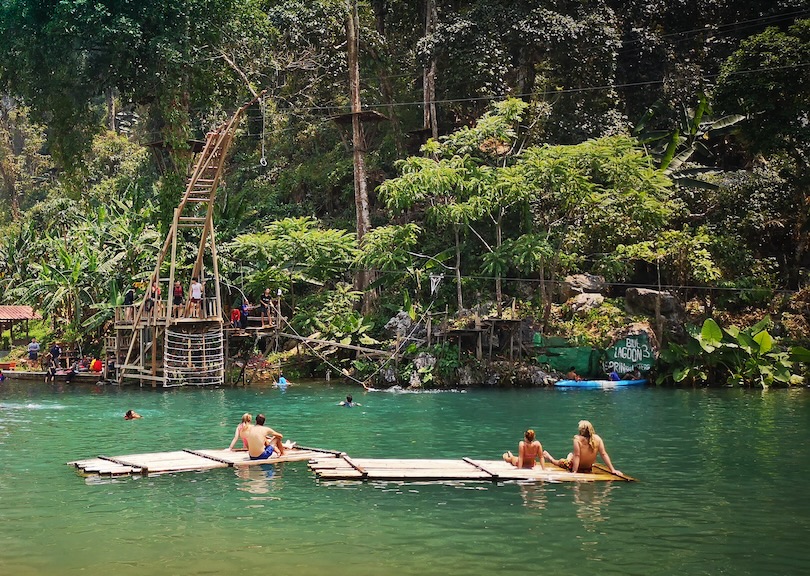
Often called the ‘Adventure Capital of Laos’, Vang Vieng is renowned for its remarkable karst formations and fast-flowing river. Popular with party-seeking backpackers, it has lots of captivating caves and bucolic countryside to see nearby.
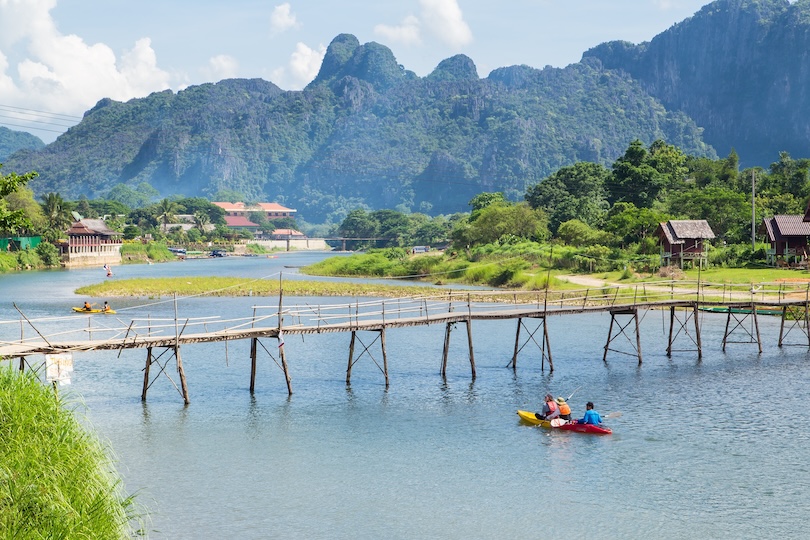
Located a couple of hours’ drive north of Vientiane, the small town lies along the Nam Song River, overlooked by dramatic, soaring mountains. Besides hiking or rock climbing, many go tubing along the river, stopping at various bars along the way.
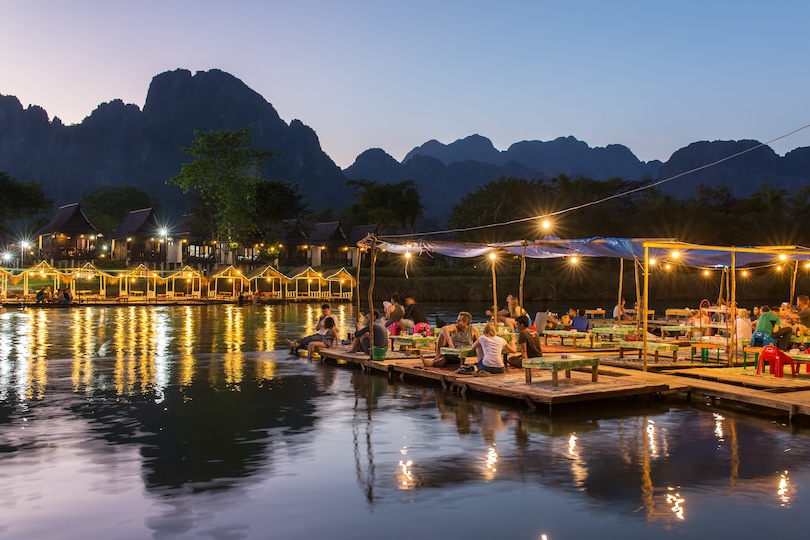
With countless cool caves, waterfalls and viewpoints found in the surrounding region, most people book tours to places like Tham Chang or the Tham Nam Water Cave. Buggies and kayaks are also available for rent while fun ziplines shoot you above its pretty landscapes.
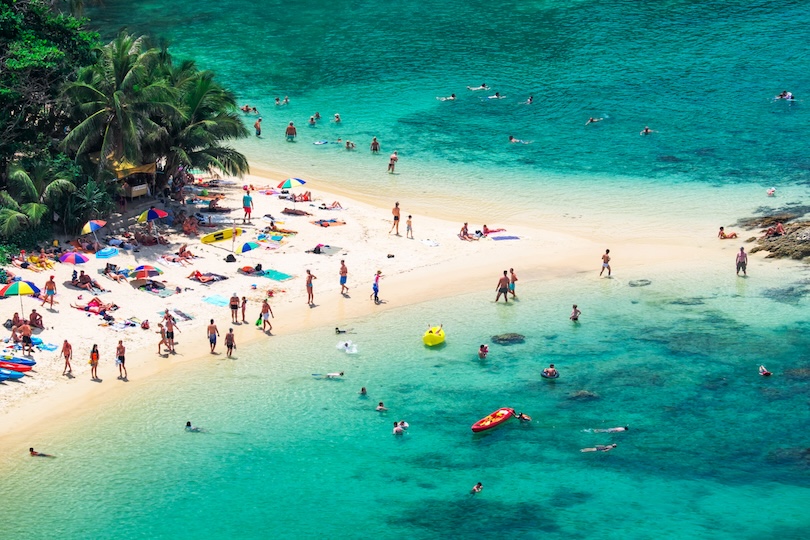
The largest island in Thailand, Phuket has long been a top destination thanks to its beautiful beaches and bountiful dive sites. Connected to the mainland by a couple of short bridges, its many mountains and rainforests overlook the Andaman Sea.
Offering various exciting outdoor activities, the wealthy province’s pristine parks are great for hiking and motorbiking. As well as exploring the lush rainforest, you can snorkel, sail and scuba dive in the warm waters.
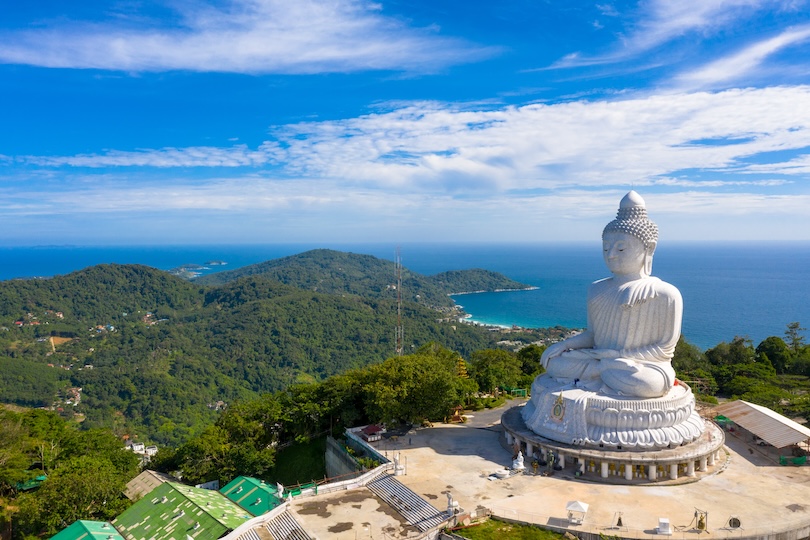
Many also come to pamper themselves at high-end spas, restaurants and hotels with the picturesque Patong Beach being known for lively street markets and loud nightlife scene. Phuket Town, the island’s capital, also has some centuries-old temples, shrines and Sino-Portuguese mansions to see.
22. Kuala Lumpur
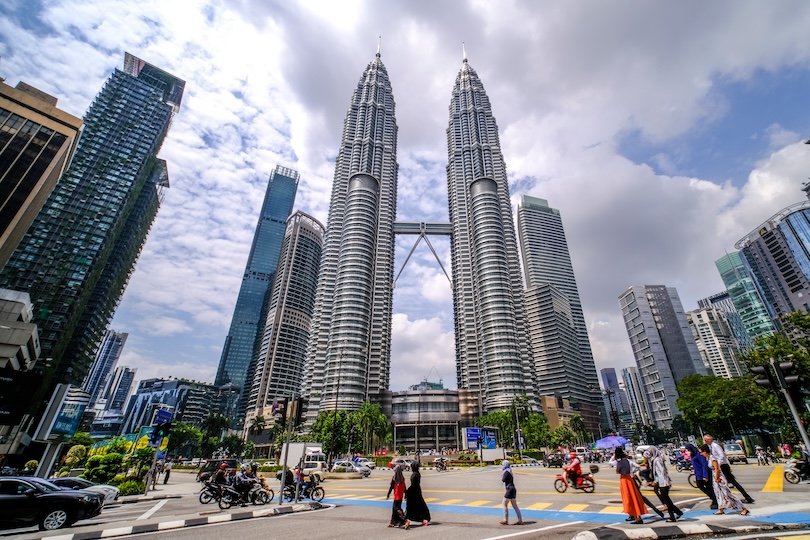
One of the most multicultural cities in the world, Malaysia’s sprawling capital Kuala Lumpur hums with energy at any time of day. Most known for the iconic Petronas Twin Towers, it has everything from old-time temples and markets to modern malls and skyscrapers to explore.
Since being founded as a tiny tin mining outpost in 1857, the dynamic KL has continued to grow and grow. Thanks to its large Chinese, Malay and Indian populations, the city has tons of tasty dishes to try with its architecture and historic sights being just as diverse.
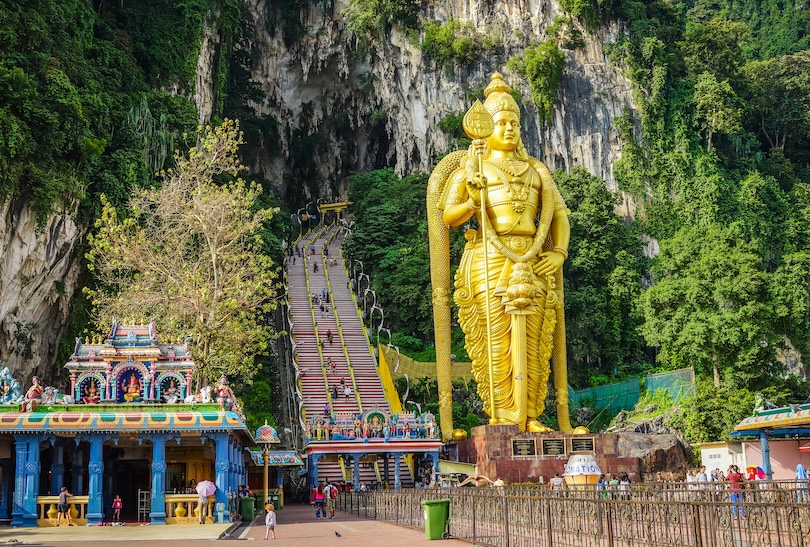
Besides shopping at Berjaya Times Square’s stores or sampling Jalan Alor’s street food, you can enjoy awe-inspiring views from its high-up observation decks. The incredible Batu Caves and Genting Highlands can also easily be visited on day trips from the capital.
21. Gili Islands
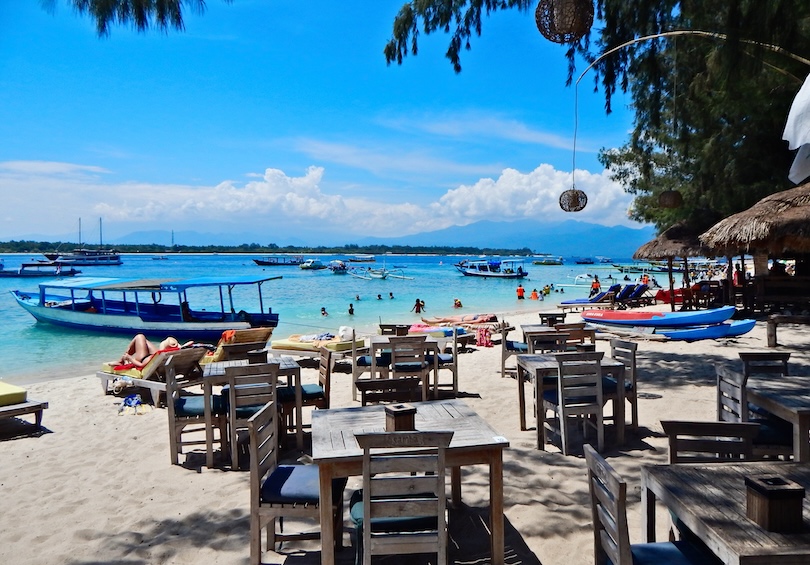
A lovely, laid back place to visit, gorgeous Gili Islands lie just off the northwest coast of Lombok in Indonesia. Fittingly meaning ‘small beautiful islands’, their wonderful white sands and warm, crystal-clear waters are easily reached by either ferry or fast speed boats.
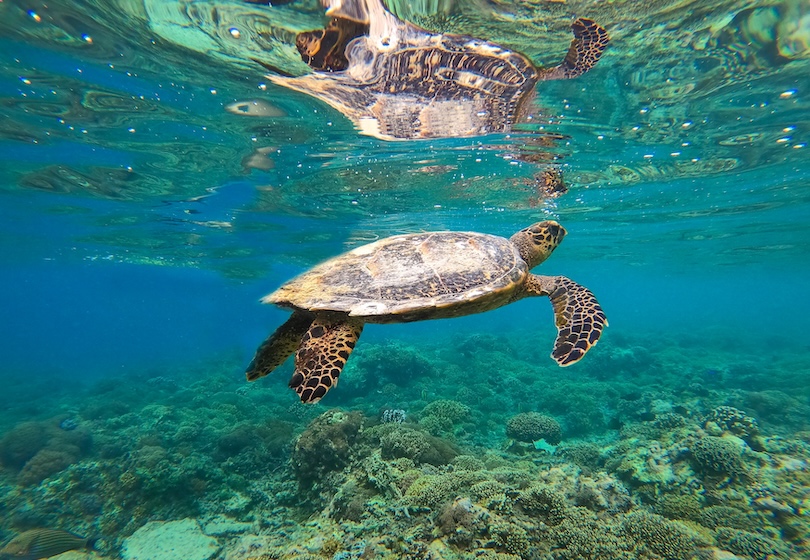
Although they have long been a popular tourist destination, the three secluded isles are still quite undeveloped despite more resorts and restaurants popping up each year. While Gili Air and Gili Meno are very relaxed, Gili Trawangan is much livelier with plenty of bars and clubs hosting party nights.
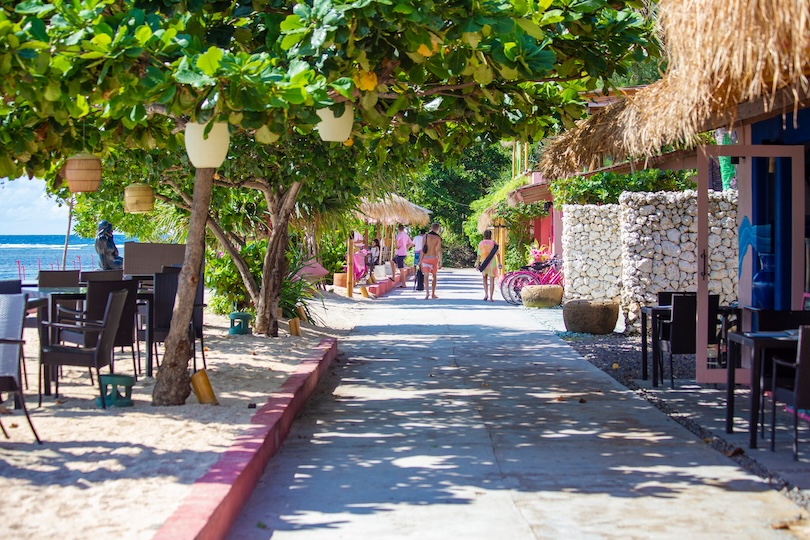
All of them boast some breathtaking scenery and beaches with swimming, scuba diving and sightseeing cruises being their main activities. With no cars at all on the islands, their little cafes and beachside retreats make for a delightful getaway.
20. Phnom Penh
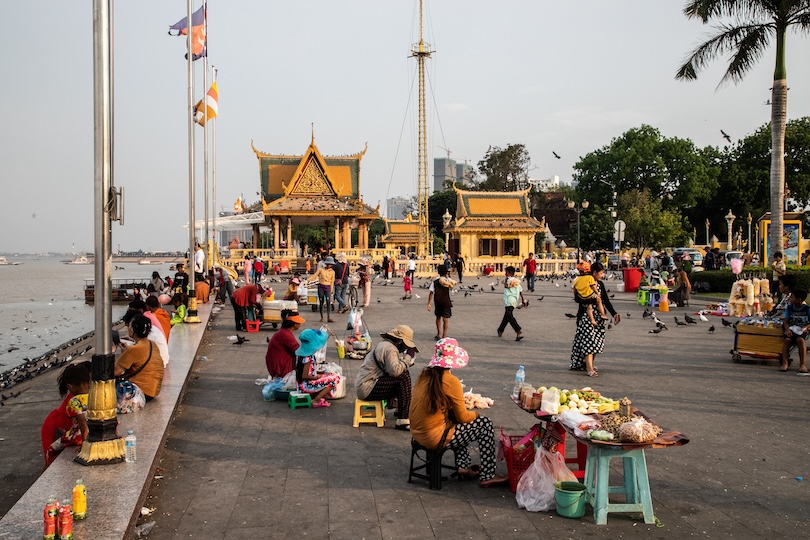
Once known as the ‘Paris of the East’ and ‘Pearl of Asia’, Cambodia’s capital Phnom Penh has slowly overcome the abuse it suffered under the violent Khmer Rouge regime. While it is still a bit rough and rundown in places, the growing metropolis certainly has a lot to offer.
As it acted as a hub for both the ancient Khmer Empire and French colonialists, fine temples and villas were erected around the city. Although many were damaged in the seventies, the wide boulevards and riverfront promenades for which it is famed still remain.
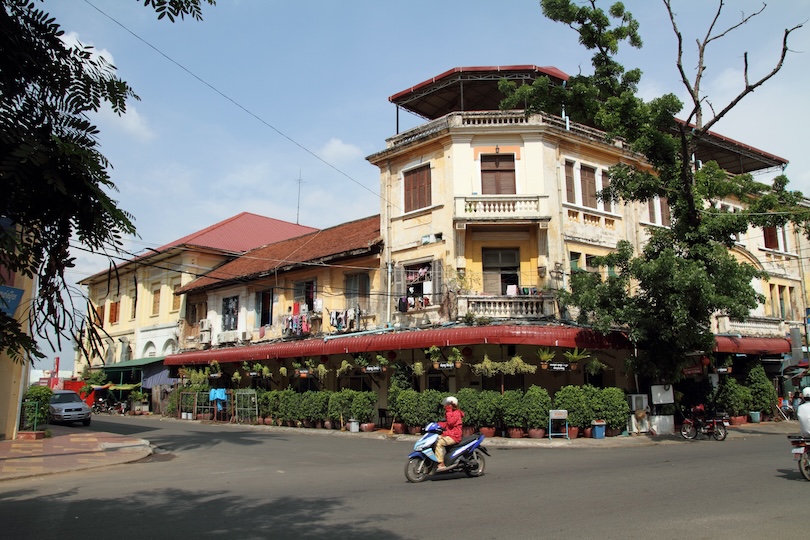
Aside from wandering about its attractive parks or enormous Phsar Thmei market, you can admire its Royal Palace and Silver Pagoda. Visitors can also learn more about its recent sad past at the Killing Fields or in its moving Genocide Museum.
19. Chiang Mai
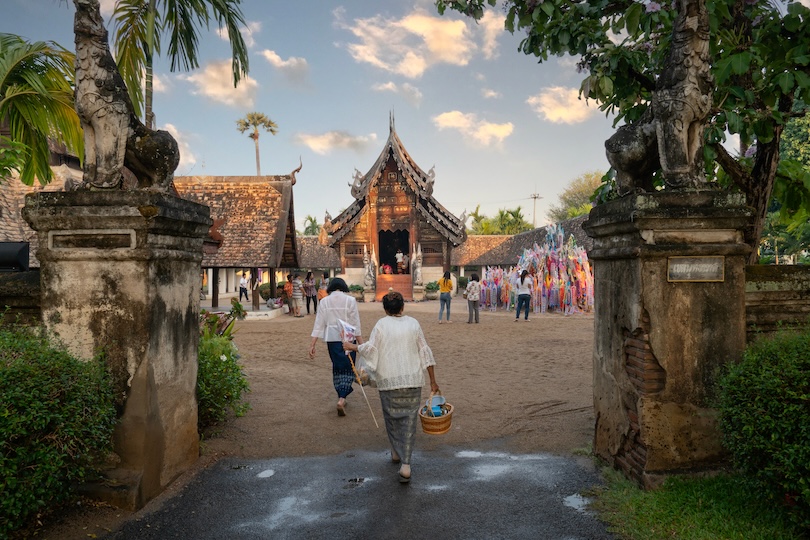
The second-largest city in Thailand, Chiang Mai is located in the mountainous north, amidst scenic countryside. One of Southeast Asia’s must-visit destinations, it is known for not just its atmospheric temples and old town but its fun night markets and street food too.
Once the capital of the Lanna Kingdom, it was founded in the thirteenth century with some of the city walls and moat still intact today. These contain impressive temples like Wat Chedi Luang and Wat Phra Singh. You’ll also find bustling Night Bazaar and all kinds of enticing street food stands to try out nearby.
Outside of the city are natural wonders like Doi Inthanon National Park and Hang Dong Quarry to discover. Many also go trekking to meet remote hill tribes or bathe adorable baby elephants at some of the sanctuaries.
18. Inle Lake
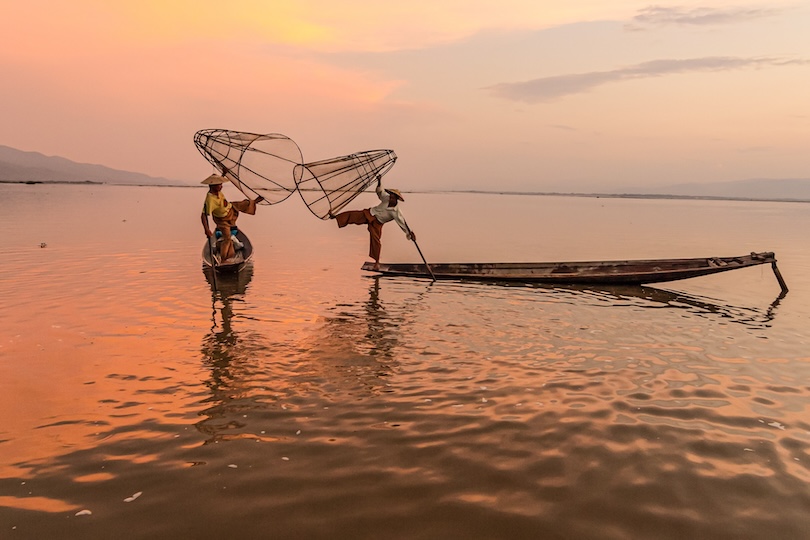
Along with the ancient pagodas and temples of Bagan, Inle Lake has to be one of Myanmar’s most enchanting attractions. Tucked away amidst the rolling Shan Hills, its reflective waters are lined by charming monasteries and temples with floating villages, markets and gardens also bobbing about.
The second-largest lake in the country, it stretches 22 kilometres in length with lots of tribes living around it. Many motorboats and flat-bottomed skiffs take tourists out on the shallow lake so you can see the communities up close and learn more about their traditions.
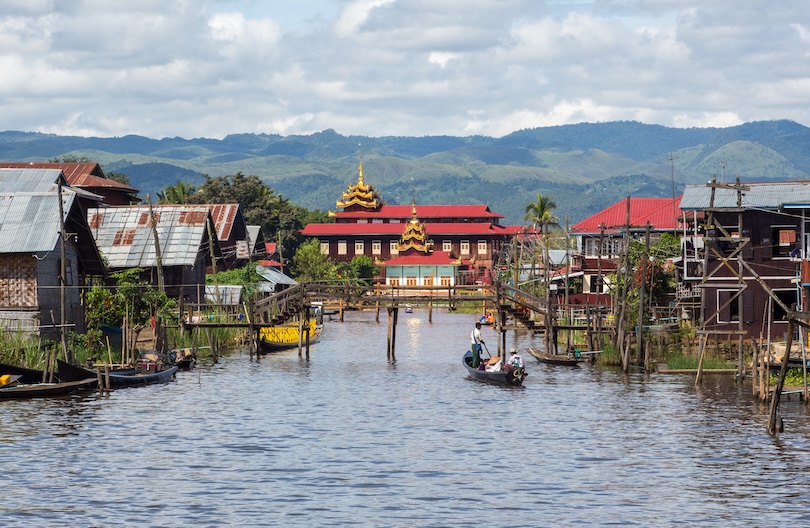
As well as visiting stilt homes and fishermen’s villages, there are centuries-old stupas and pagodas to see too. While puttering about, you can bask in marvellous views of the lake and the mountains far off in the distance.
17. Palawan
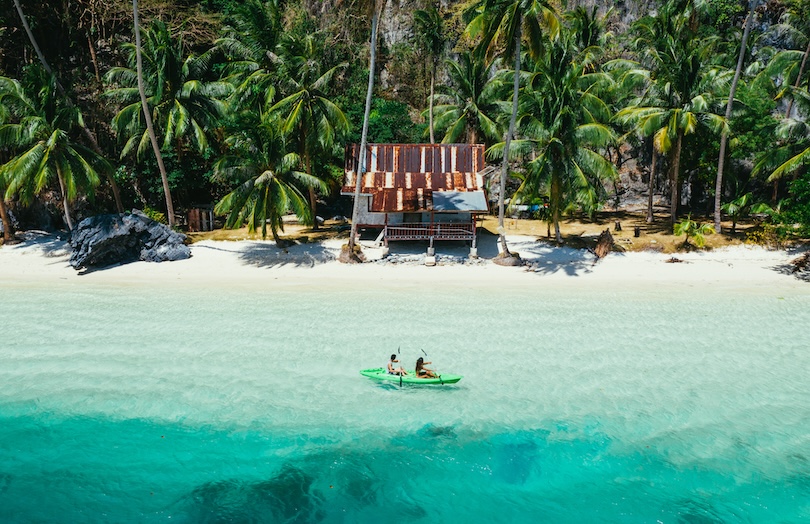
With all the alluring beaches, immense limestone cliffs and azure waters, it is no wonder that Palawan is considered to be one of the prettiest parts of Southeast Asia. The westernmost province of the Philippines, it has around 1,780 mostly unspoiled islands and islets to explore.
Set between the Sulu and South China seas, the long, narrow archipelago stretches almost from Borneo to Mindanao. Characterized by craggy limestone cliffs and colourful lagoons, its white sand beaches and dive sites need to be seen to be believed.
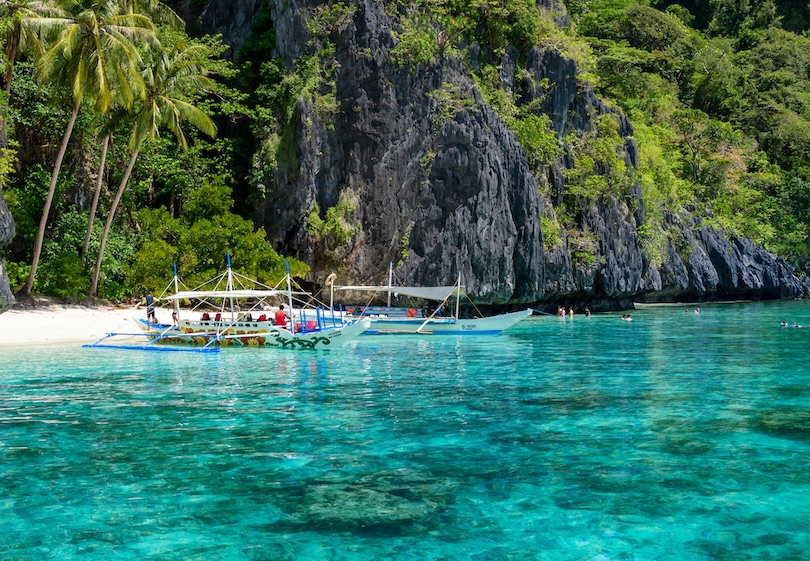
Among the region’s many highlights are the irresistible karst landscapes of El Nido and the underground river at Puerto Princesa. Tubbataha Reefs National Park also attracts divers as do the coral reefs and shipwrecks off of Busuanga Island.

16. Taman Negara
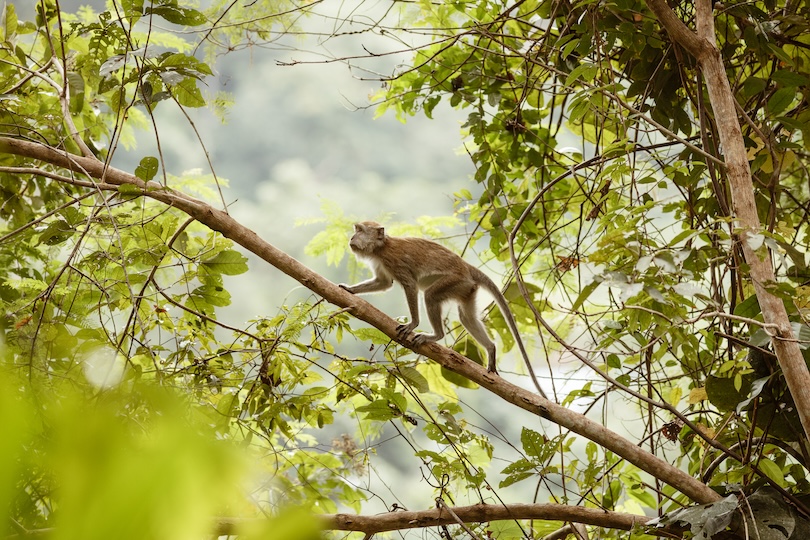
Covering a massive part of Peninsular Malaysia are all the rivers, rainforests and mountains of Taman Negara . A must for nature lovers and outdoor enthusiasts, the country’s largest national park offers a myriad of unforgettable adventure activities.
Established in 1938/1939, it sprawls across three states with Asian elephants, leopards and Malayan tigers all inhabiting its wild confines. The vast park also protects some of the oldest deciduous rainforest in the world. Some estimates reckon it is over 130 million years old!
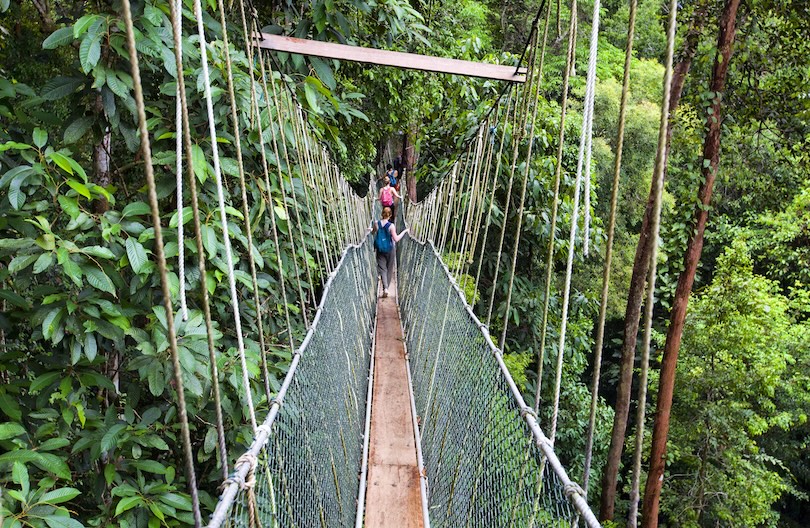
Amidst its endless mountains and jungle, you can explore caves, climb peaks and enjoy cool canopy walks. Many also shoot down its rapids and take nighttime safaris through the dark rainforest to see its nocturnal creatures. There are also the tiny aboriginal villages of Orang Asli to visit where you can learn more about traditional life in Taman Negara.
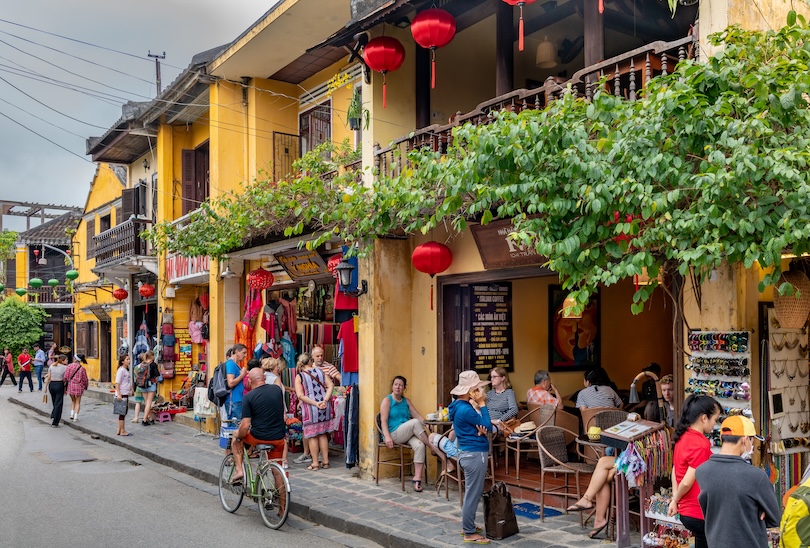
Well-preserved, Hoi An’s little canals and lantern-lit streets are hemmed in by hundreds of historic buildings. A mix of eras and styles, they perfectly reflect the former trading port’s past and all the different peoples and merchants that have lived here over the ages.
Lying along Vietnam’s central coastline, it flourished for centuries until the mouth of the Thu Bon River finally silted up. Its attractive Old Town is home to not just Chinese-style temples and shophouses but French colonial villas and ornate Vietnamese tube houses too. Another of its main sights is its quaint Japanese covered bridge that crosses one of the canals.
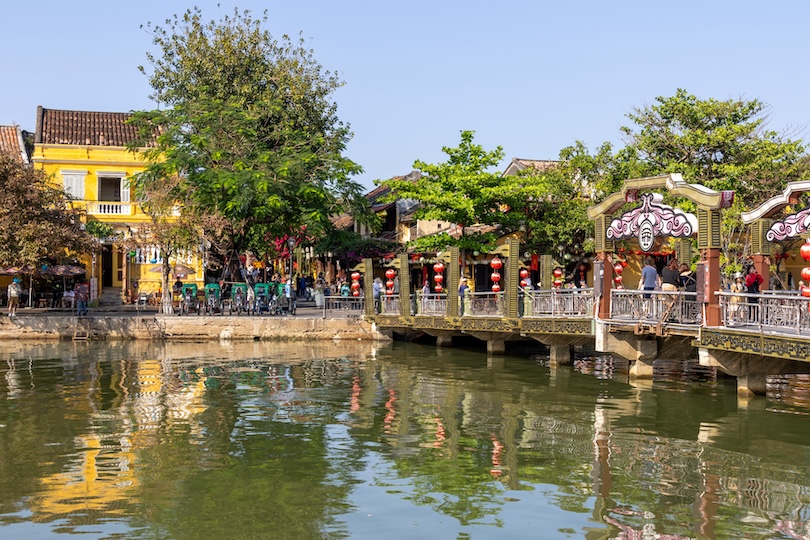
At night, everywhere looks even more magical as lovely lanterns light up its narrow, winding streets and riverside. Besides shopping for souvenirs at its market and trying some delicious street food, many take trips to the majestic My Son ruins nearby.

Formerly known as Rangoon, Myanmar’s largest city Yangon has much more to see than just its shimmering gold Shwedagon Pagoda. Other than the ancient Buddhist shrine, there are plenty of British colonial buildings, parks and religious sites to check out.
Despite being replaced at the capital by Naypyidaw in 2005, it still acts as both the country’s cultural and commercial center. As it exhibits a mix of British, Burmese, Chinese and Indian influences, the city has loads to offer in terms of its historic sights, food and nightlife.
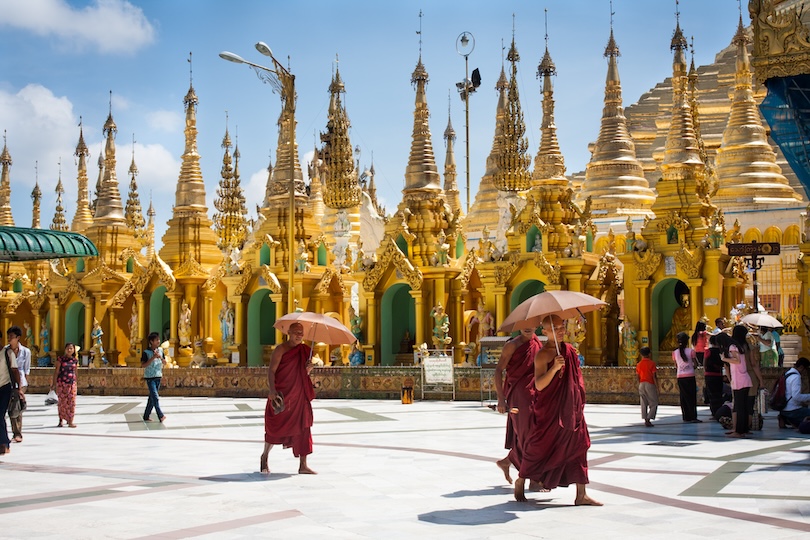
The undoubted highlight, however, is of course the gigantic golden Shwedagon Paya which is perched atop a hill overlooking the city. At its sizeable complex, you can examine its shrines and stupas and bang the giant Maha Ganda Bell for good luck.
13. Boracay
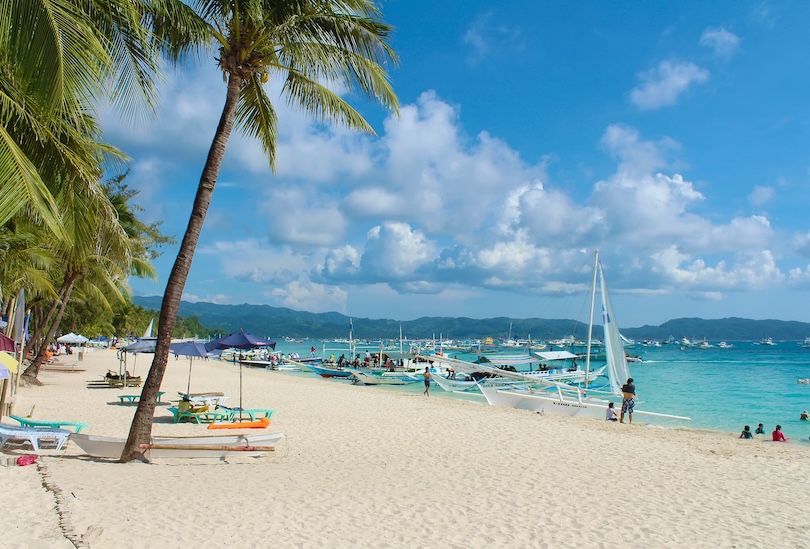
One of the Philippines’ most popular destinations, Boracay boasts some of the best and most beautiful white sand beaches in the world. A tropical paradise, all its relaxing resorts, spas and seafood restaurants lie just an hour’s flight from Manila.
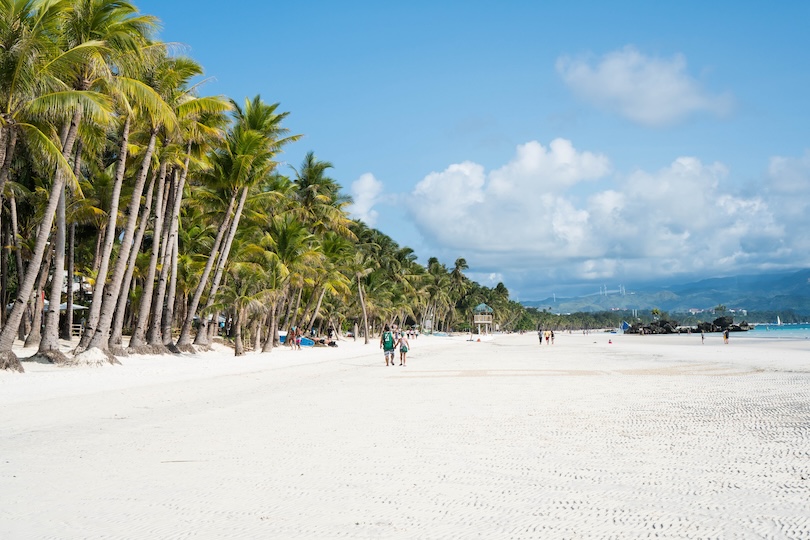
Located just off the northwest coast of Panay, the idyllic isle is lined by soft, powdery sands backed by gently swaying palms. Aside from swimming and splashing in its turquoise waters, you can enjoy everything from sailing and windsurfing to snorkeling, jet skiing and scuba diving.
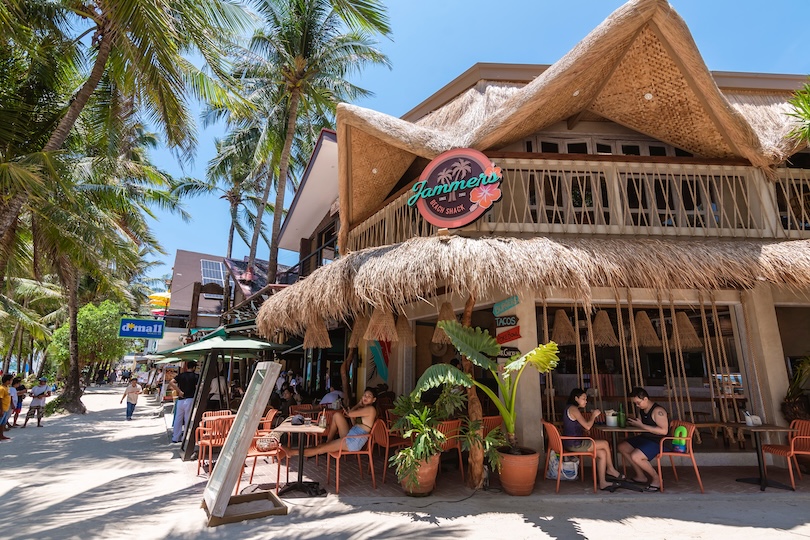
Many holidaymakers also make the most of its many spas and massage stations that border the beach. In the evenings, there are tons of lively bars and restaurants which offer superb music sets and sunset views.
12. Mount Kinabalu
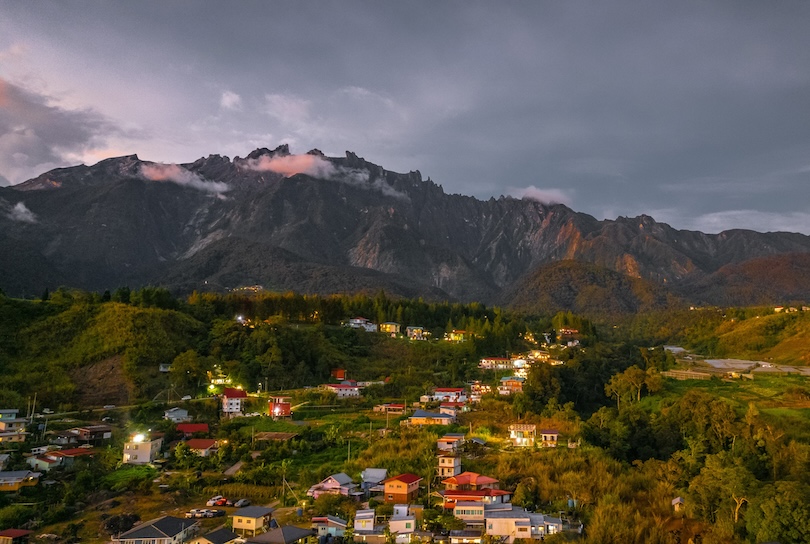
Rising dramatically above the rainforests and rivers of Borneo is the massive great Mount Kinabalu. The highest peak in the Malay Archipelago, it towers 4,095 meters in total with numerous hiking trails winding their way about its rugged slopes.
Considered sacred by the local Kadazan Dusun people, its wild reaches are now protected as part of the national park of the same name. One of the most biodiverse areas on Earth, it is home to around 6,000 plant species. Over 300 kinds of exotic birds also flit about its dense foliage.
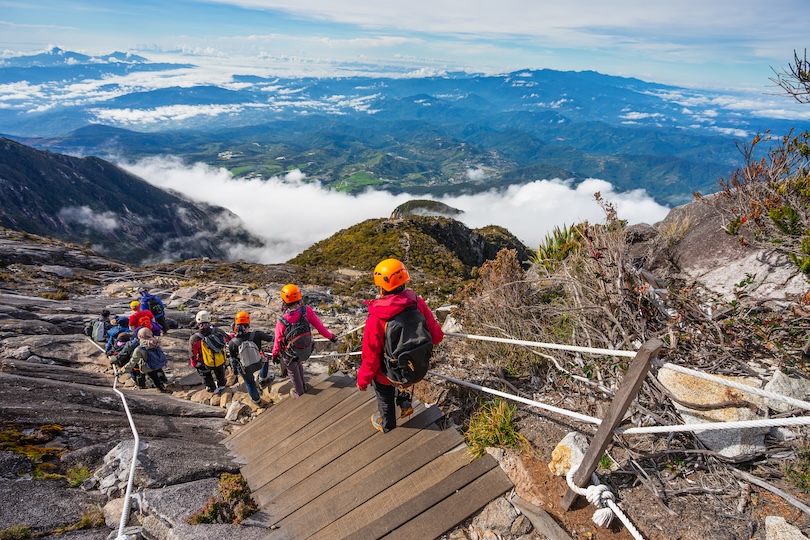
Despite its soaring summit, the mountain is actually quite easy to hike if you are moderately fit. After taking in all its astounding views and nature, you can always go and see adorable orangutans at one of the nearby nature reserves.
11. Komodo National Park
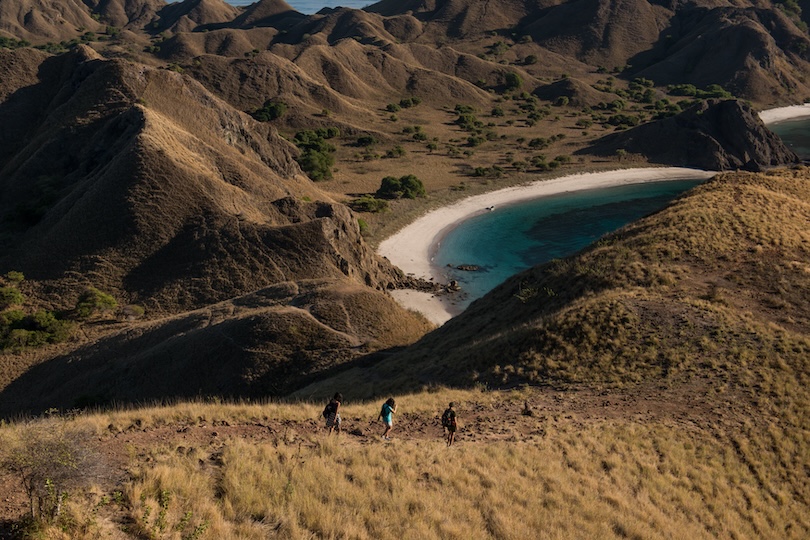
If you’re after a sighting of the world’s largest lizard, then the incredible Komodo National Park is the place to head. Part of the Lesser Sunda Islands in Indonesia, it also preserves some spellbinding mountains, beaches and marine life.
Founded in 1980, the important biosphere reserve includes not just the large islands of Komodo, Rinca and Padar but dozens of smaller ones too. Here, you’ll find thousands of the remarkable creatures which can impressively grow up to three meters in length.
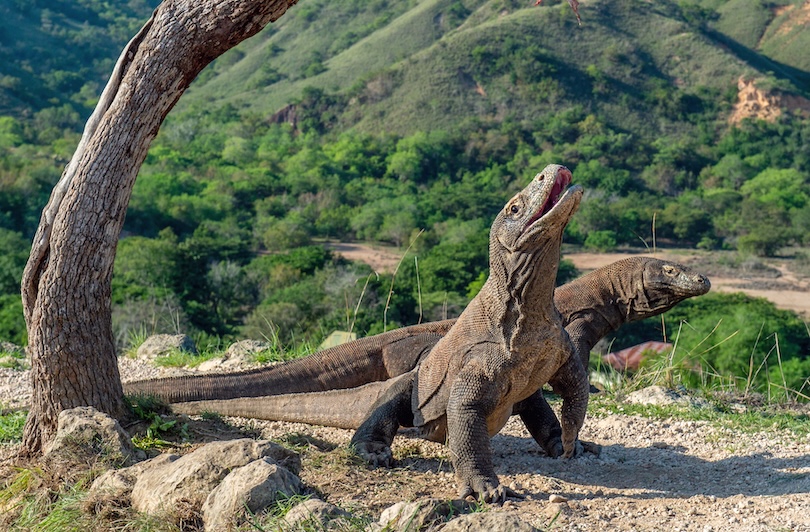
In addition to actually seeing the dragons, you can spot wild horses, water buffalo and other endangered species. Many also camp and kayak at its pristine white sand beaches with the park’s colourful coral reefs being amazing to snorkel and scuba dive above.
10. Singapore

Set off the southern end of the Malay Peninsula is the tiny city-state and island country of Singapore . Often called the ‘Switzerland of Asia’, it is a very prosperous and diverse place with its population speaking English, Mandarin, Malay and Tamil.
Since being established by the British in 1819 as a small trading colony, the city has grown considerably. Still home to one of the world’s busiest ports, its iconic skyline includes famed, futuristic landmarks like Marina Bay Sands Resort and the Gardens by the Bay supertrees.
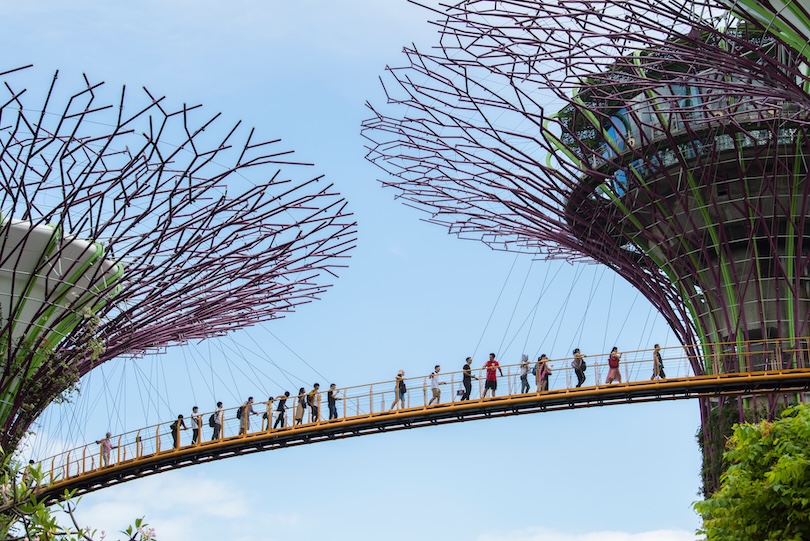
Nearer the ground are cool districts like Chinatown and Orchard Road to amble around with Singapore known for its tasty food and terrific shopping. Although it is one of the world’s most technologically advanced cities, it also has lovely jungles and beaches to enjoy.
9. Ko Phi Phi
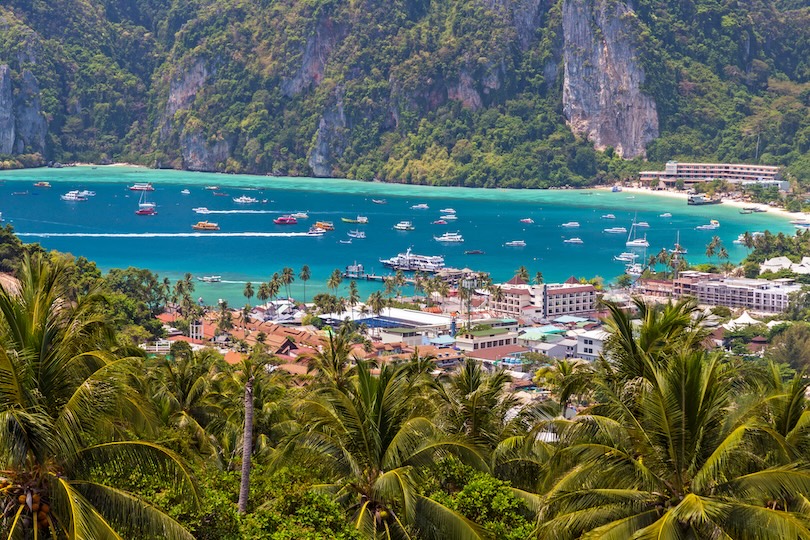
Even more picture-perfect still than Phuket is the nearby archipelago of Ko Phi Phi. Home to some of Thailand and Southeast Asia’s most attractive islands, its charming coves, cliffs and sandy beaches are surrounded by the sparkling Andaman Sea.
Part of Krabi Province , its enchanting isles number five in total with Ko Phi Phi Don being the largest and only one that is inhabited. Towered over by tall karst cliffs clad in greenery, their beaches are often featured on the front of travel catalogues. It’s easy to see why as all their white sands contrast so stunningly with the emerald waters around them.
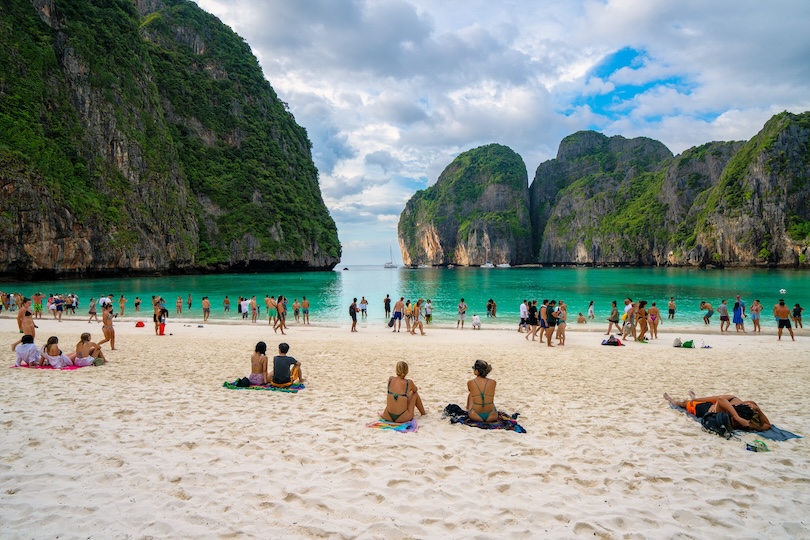
One of the most famous is Maya Bay which was the setting of the hit 2000 film The Beach. As well as sunbathing and swimming, you can take boat trips about the islands and snorkel and scuba dive in their waters. Ko Phi Phi is also known for its lively nightlife and fire shows.
8. Luang Prabang
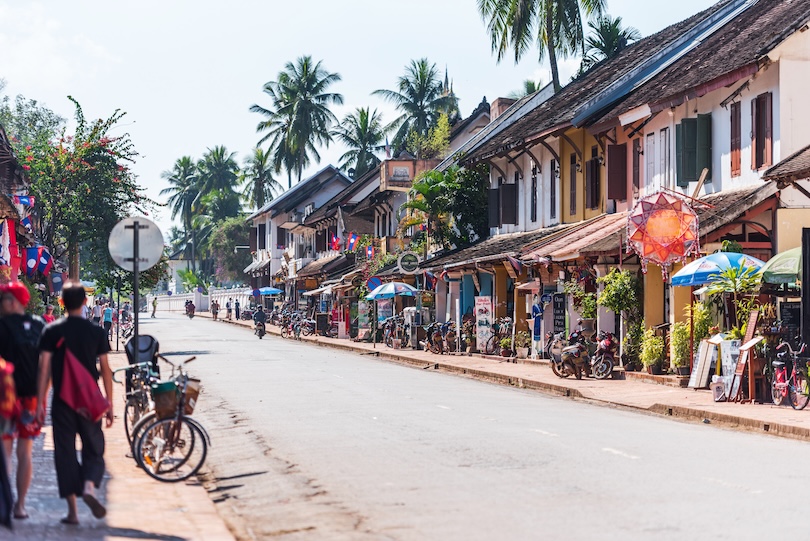
Rightfully renowned for its countless temples and shrines, Luang Prabang is nestled amidst gorgeous green hills in northern Laos. Meaning ‘Royal Buddha Image’, its historic old town is very atmospheric to wander around with several waterfalls also found nearby.
Situated at the spot where the Mekong and Nam Khan rivers meet, it acted as the country’s capital until 1975. At Wat Xieng Thong or the Temple of the Golden City, you can see where the Laotian kings of old were crowned. The nation’s most important monastery, it showcases some exquisite architecture, statues and murals.
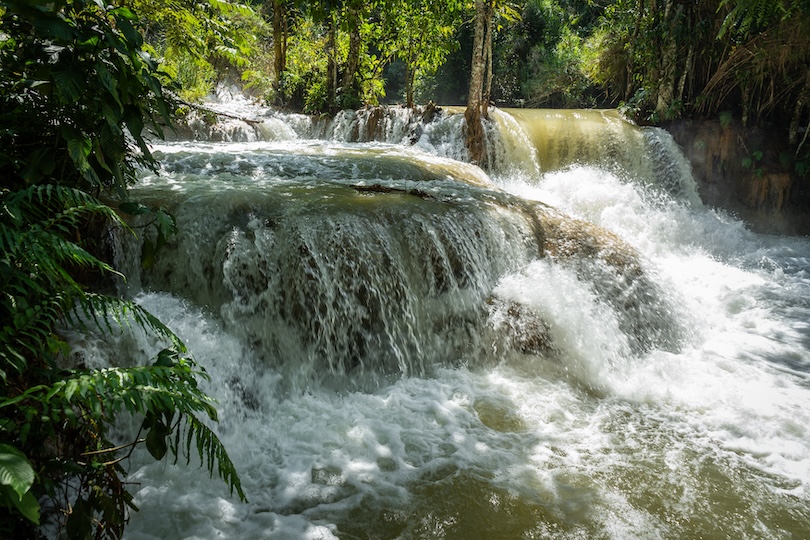
In the Old Quarter, you can still see monks collecting alms in its laidback, stall-lined streets. Once you’ve explored its temples, make sure to take a trip to the fabulous Kuang Si Falls or carved Buddhas in the Pak Ou Caves.
7. Borobudur

The largest Buddhist temple in the world, the absolutely massive Borobudur monument lies in the center of Java, just northwest of Yogyakarta . Just one of Indonesia’s many must-visit sights , its collection of stupas look particularly spectacular at sunrise and sunset.
Dating to the ninth century, its enormous square platforms and circular terraces are made out of two million blocks of dark volcanic stone. Decorating the entire complex are elaborate relief panels and Buddha statues. These depict daily life, the concept of Karma and various fauna and flora from around the island.
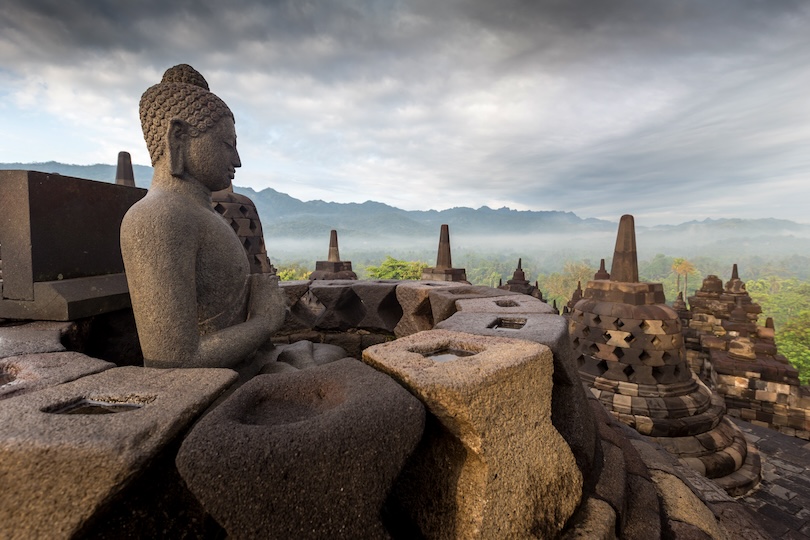
Hidden for centuries under thick layers of ash and rainforest, it is very well-preserved with a couple of museums explaining more about the site. Every June, traditional Javanese dances are performed at Borobudur, highlighting its history and how it was constructed.
6. Ifugao Rice Terraces
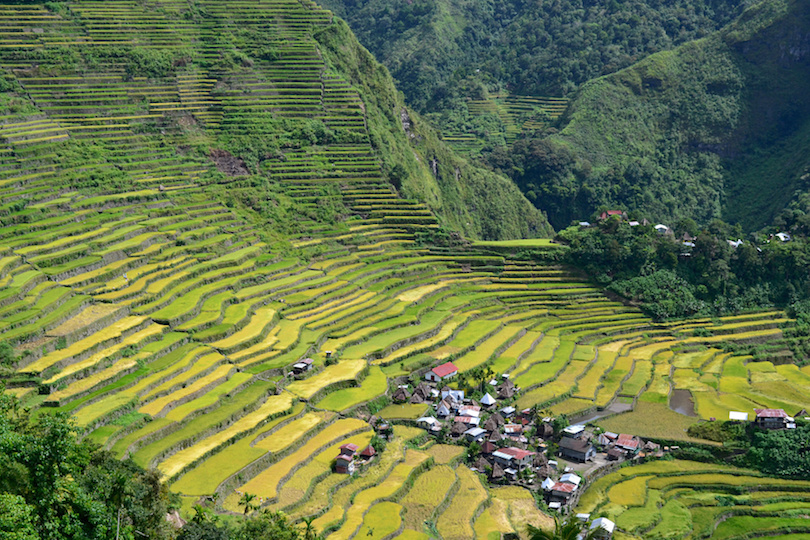
Yet another picturesque place to visit in the Philippines are the beautiful Ifugao Rice Terraces in the northern part of Luzon . Tumbling their way down the sides of steep, sweeping valleys, their vivid green hues make for some phenomenal photos.
For thousands of years now, the Ifugao people have practiced rice farming this way, hidden away amidst the Cordilleras highlands. Carved into the side of the mountains, the irrigated paddies are an astounding feat of engineering. Some even label them the ‘Eighth Wonder of the World’.
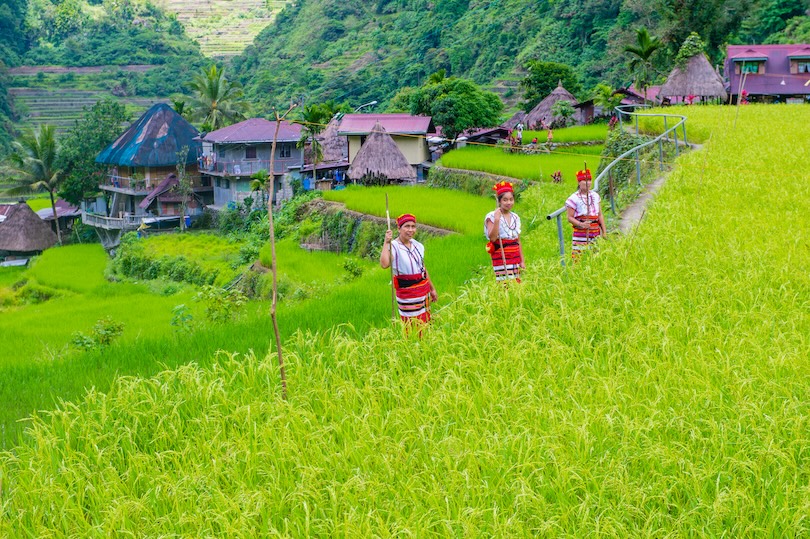
Aside from visiting viewpoints and snapping photos of the remarkable rice terraces, you can trek around and stop by some traditional hill tribe villages. Many sell woodcarvings and handicrafts with plenty of families also offering homestays.
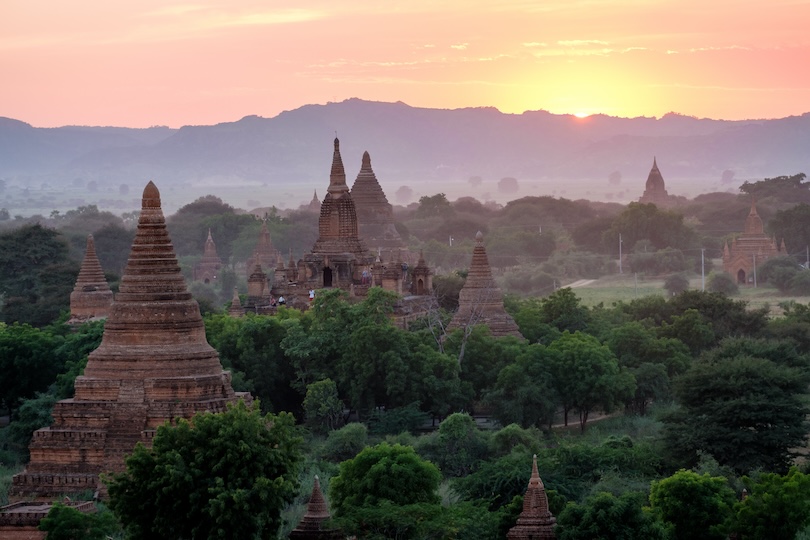
The highlight of most people’s time in Myanmar has to be watching the sunrise above all the stupas, temples and pagodas of Bagan. Rising above the trees and plains about them, its more than 2,200 spires make for an unforgettable sight.
Built between the ninth and thirteenth centuries, the immense archaeological site was once the capital of the powerful Pagan Kingdom. Actually described by Marco Polo himself as the ‘gilded city’, it contained over 13,000 monasteries and temples at its zenith.
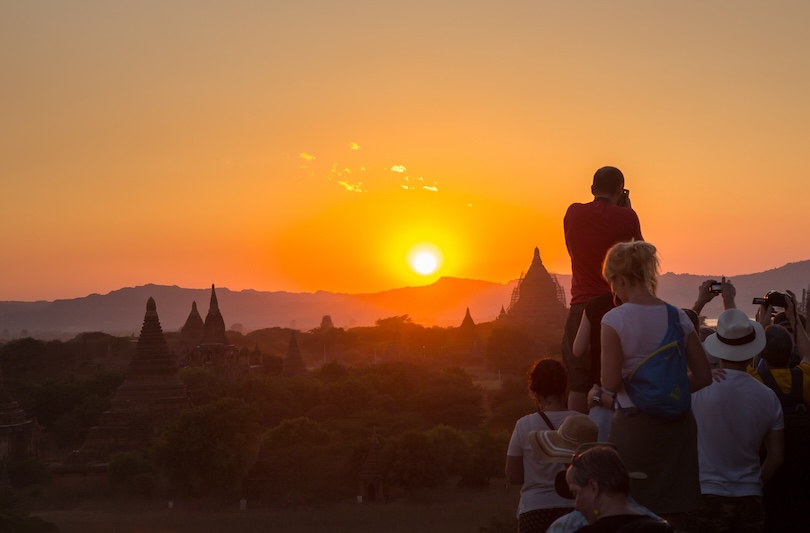
As the complex is so large, you’re best off choosing a few specific places to visit. Among the most popular, impressive and important are Ananda Temple and Dhammayangyi Temple. A lot of people also take hot air balloon rides at dawn to see Bagan from above and enjoy the glint of the rising sun on its stupas.

One of the largest, liveliest cities on the planet, Thailand’s capital Bangkok is certainly not to be missed when in Southeast Asia. Famed for its fantastic street food and nightlife scene, it also has magnificent temples and palaces to check out.
Home to almost 11 million people, its seemingly endless urban sprawl surrounds the Chao Phraya River. Numerous canals also branch off it with many taking peaceful cruises to avoid its intense heat and heavy traffic.
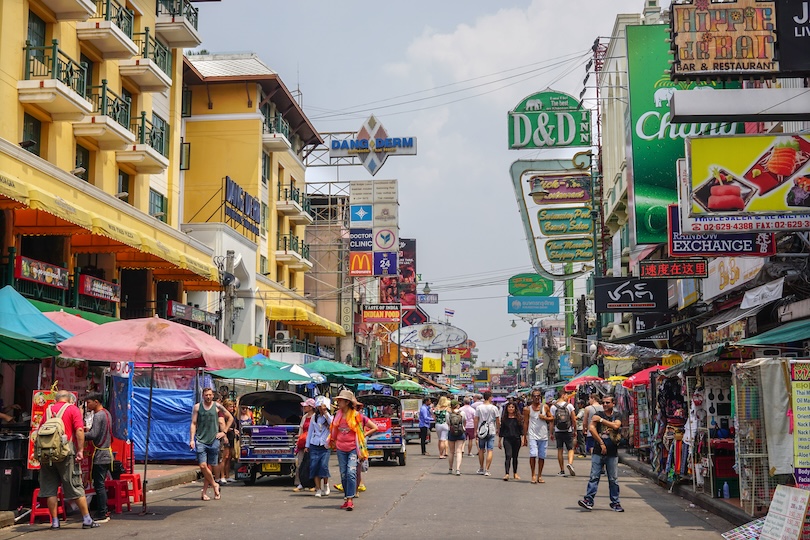
Alongside all its towering skyscrapers, you’ll also find interesting historic sites like Wat Arun and the Grand Palace. Trawling its vibrant markets is loads of fun too as is sipping cocktails at one of the city’s many rooftop bars. With luxury spas and shopping also on offer, Bangkok has something for everyone to enjoy.
3. Ha Long Bay
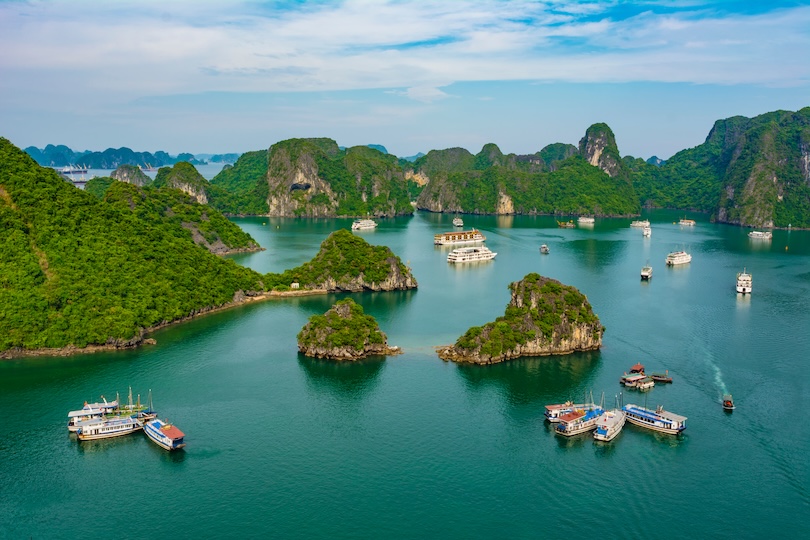
Often listed among the world’s natural wonders, Ha Long Bay’s incredible karst landscapes really are special to explore. One of Vietnam’s top attractions , it lies right in the northeast of the country, not all too far from Hanoi.
Actually meaning ‘ Bay of Descending Dragons ’, its almost endless emerald waters are home to almost 2,000 islets. These mostly consist of craggy limestone outcrops, topped with lush green foliage or jungle. Some also have cool caves for you to enter and stunning swathes of sand to relax on.
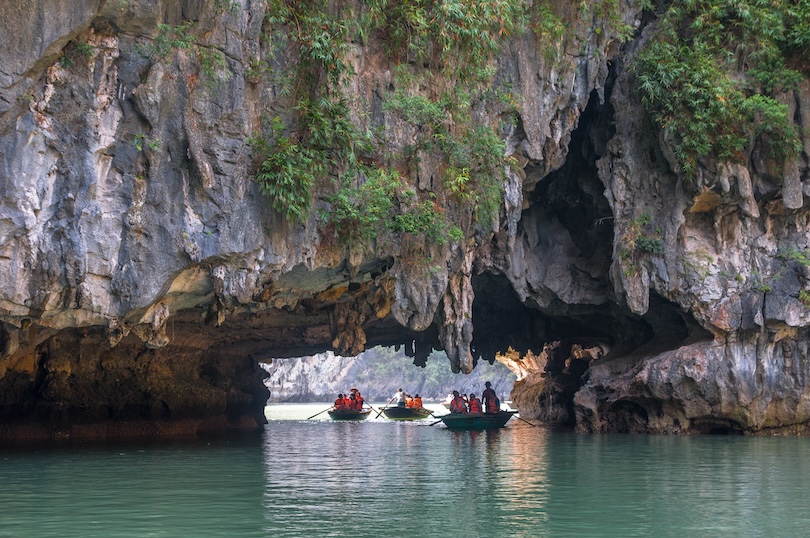
On tranquil junk boat trips about the bay, you can visit its floating villages and kayak about its grottoes. Many also take Tai Chi, yoga and cooking classes aboard the ships while taking in the stupendous scenery all around.

Fittingly known as the ‘ Island of the Gods ’, Bali more than lives up to its name with all its romantic landscapes and revered religious sites. Lying right between both Java and Lombok, its rich culture, resplendent nature and warm hospitality make it the most visited of all the Indonesian islands.
Often described as a tropical paradise, its marvelous mountains and rice terraces give way to rugged cliffs and sandy beaches. Scattered about are thousands of ancient Hindu temples and fabulous valleys, paddies and waterfalls to hike or cycle to.
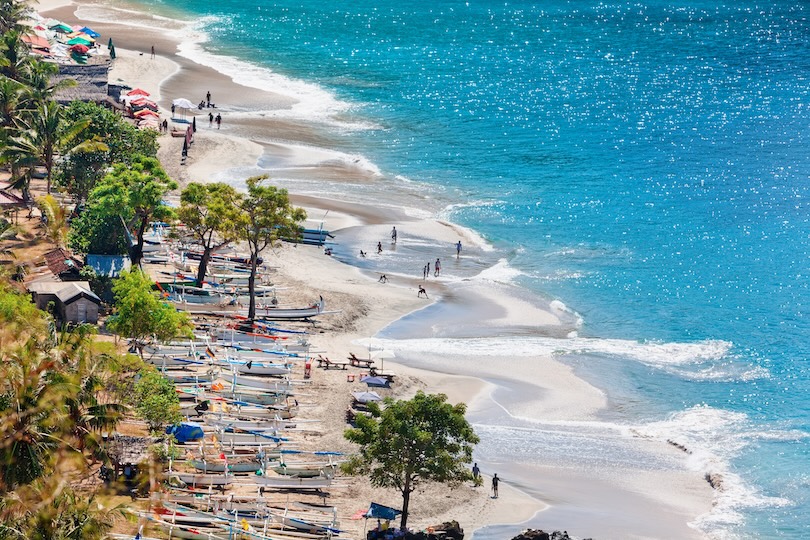
Other than spending time in Ubud , its cultural center and arts and crafts hub, you can enjoy the pounding nightlife and vivid sunsets at Seminyak. Many also attend yoga retreats or surf and party at Kuta Beach.
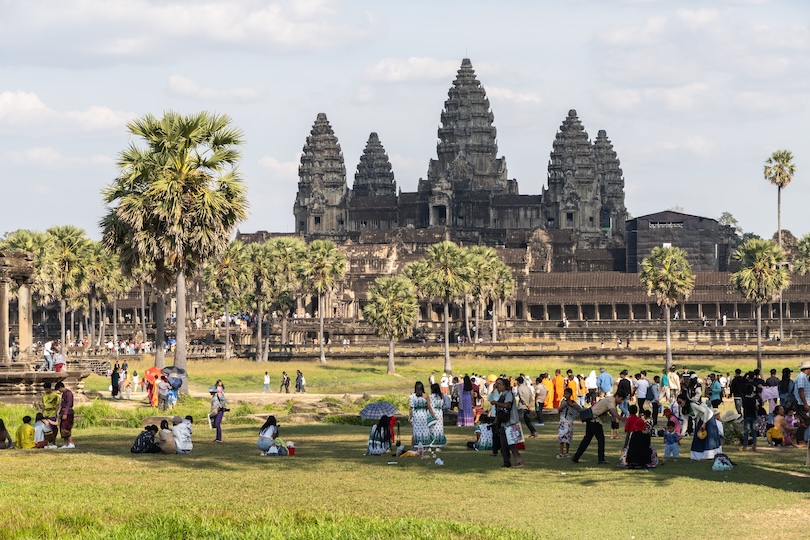
Covering an enormous area, Angkor in Cambodia contains the remains of several capitals of the ancient Khmer Empire. Fascinating to wander around, its hundreds of highly symbolic stone temples can be found just outside of Siem Reap .
Now believed to have been the largest pre-industrial city in the world, the important political and religious center was largely constructed between the ninth and fifteenth centuries. After its decline, the ruins of the temples were eventually reclaimed by the jungle.
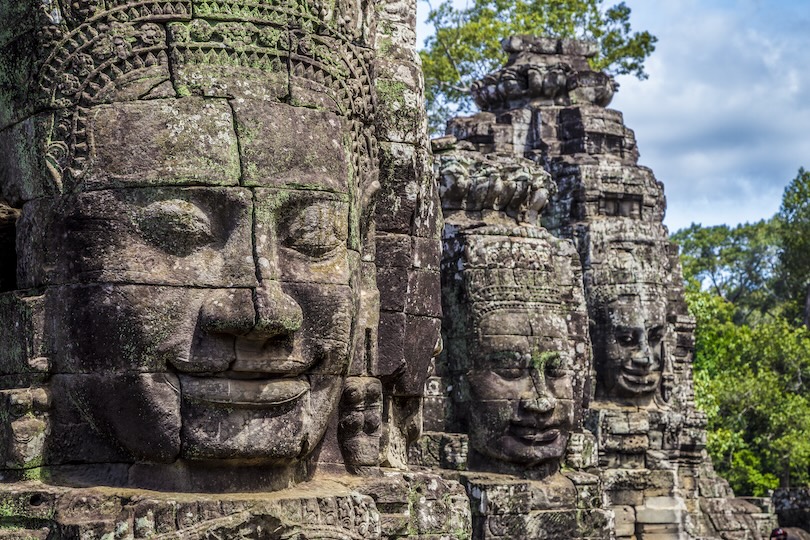
While the iconic Angkor Wat may be its largest and most elaborate structure, there are also tons of other temples like the breathtaking Bayon and tree-covered Ta Prohm to see. All of them exhibit some amazing architecture and are decorated with detailed reliefs, statues and carvings. A place like no other, Angkor is a must-visit when in Southeast Asia.
Share this post:
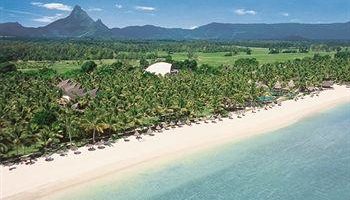
10 Best Mauritius Luxury Resorts
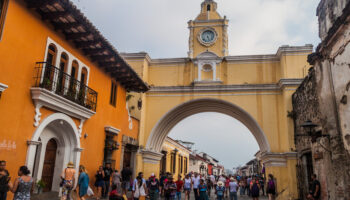
10 Best Places to Visit in Central America
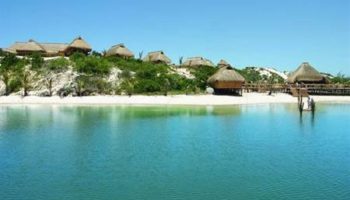
8 Best Mozambique Beach Resorts
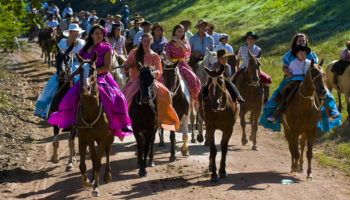
10 Best Places to Visit in Uruguay

8 Most Beautiful Society Islands

15 Best Things to Do in Ethiopia
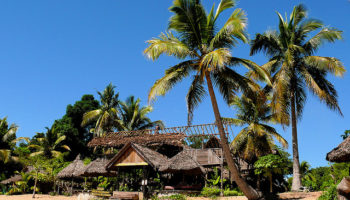
10 Most Beautiful Islands in Africa
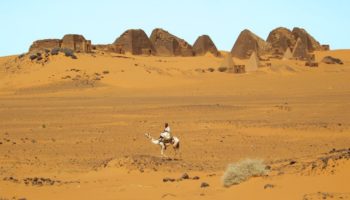
Visit Meroë: The Mysterious Pyramids of Sudan
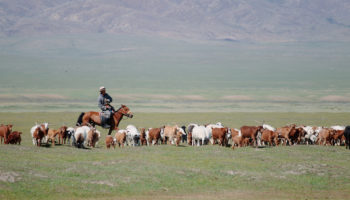
10 Best Places to Visit in Mongolia
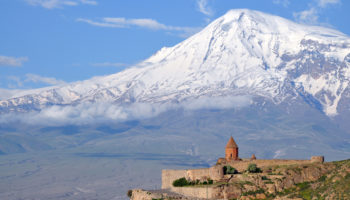
10 Best Places to Visit in Armenia
Reader interactions.
February 15, 2021 at 4:06 am
Stay away from Sihanoukville, it is now a huge building site ruined by the Chinese building Cambodia’s version of Las Vegas.
Cambodia’s main attraction for you tourists are the Angkor Park temples in Siem Reap, amazing temples built in the 12th century.
February 13, 2018 at 7:49 am
There is also a new Elephant eco-park in Phuket.
February 3, 2018 at 8:37 pm
I just visited an elephant sanctuary park near Chang mai in Thailand where we fed, washed and walked with rescued elephants . Never felt so emotionally rewarded … kindest gentlest giants . Say no to cruel elephant trecking where animals are abused both physically and mentally …
March 8, 2017 at 12:18 pm
I agree with Marie. It would be worth searching to see if there is an eco-tourist elephant park where there is no riding. I went to one in Chiang mai and it was fantastic.
Leave a Reply Cancel reply
Your email address will not be published. Required fields are marked *
This site uses Akismet to reduce spam. Learn how your comment data is processed .
Nomadic Matt's Travel Site
Travel Better, Cheaper, Longer
Southeast Asia Travel Guide
Last Updated: November 27, 2023
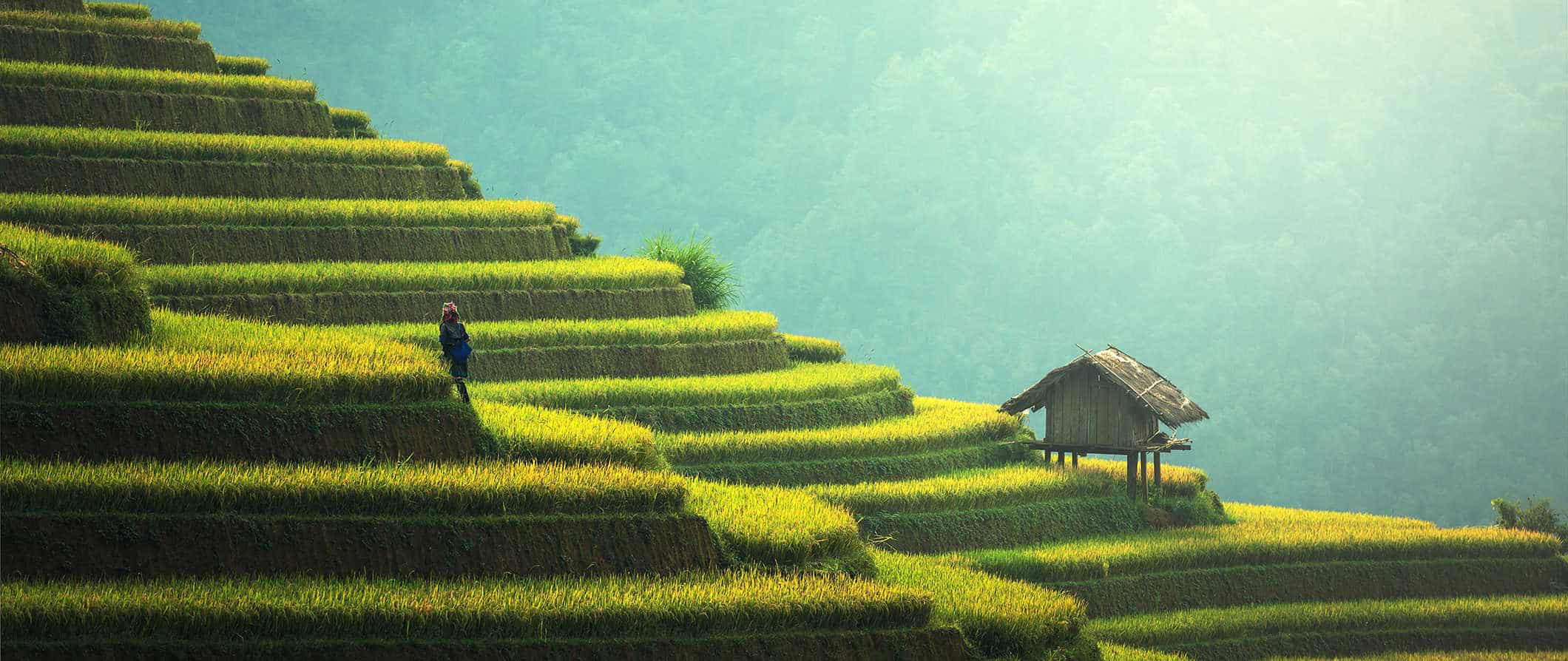
Backpackers have been traveling through Southeast Asia since the late 1960s and early 1970s, leaving a well-worn trail around the region.
Starting in beautiful Thailand, the trail makes its way to up-and-coming Laos, through Vietnam, and to the temples of Angkor Wat. It then winds back into Thailand, where people head south to party in the Thai islands before moving down to Malaysia and Singapore.
There are a few variations to the trail, but this is what it mostly covers.
I’ve been visiting this region since 2004 and spent years living in Thailand . I love backpacking Southeast Asia and have written extensively about it as I know it like the back of my hand.
It’s an especially great region for new travelers because it’s easy to travel around, it’s safe, and there are lots of other travelers you can meet. But it’s also perfect for veteran travelers too as there are tons of off-the-beaten-path destinations that the standard backpacker trail doesn’t cover.
In short, Southeast Asia has something for every traveler — and every budget.
This Southeast Asia travel guide will help you travel the region like a pro, ensuring you save money and make the most of your time in this fun, gorgeous, and lively corner of the world.
Table of Contents
- Things to See and Do
- Typical Costs
- Suggested Budget
- Money-Saving Tips
- Where to Stay
- How to Get Around
- How to Stay Safe
- Best Places to Book Your Trip
- Related Blogs on Southeast Asia
Click Here for Country Guides
Top 5 things to see and do in southeast asia.
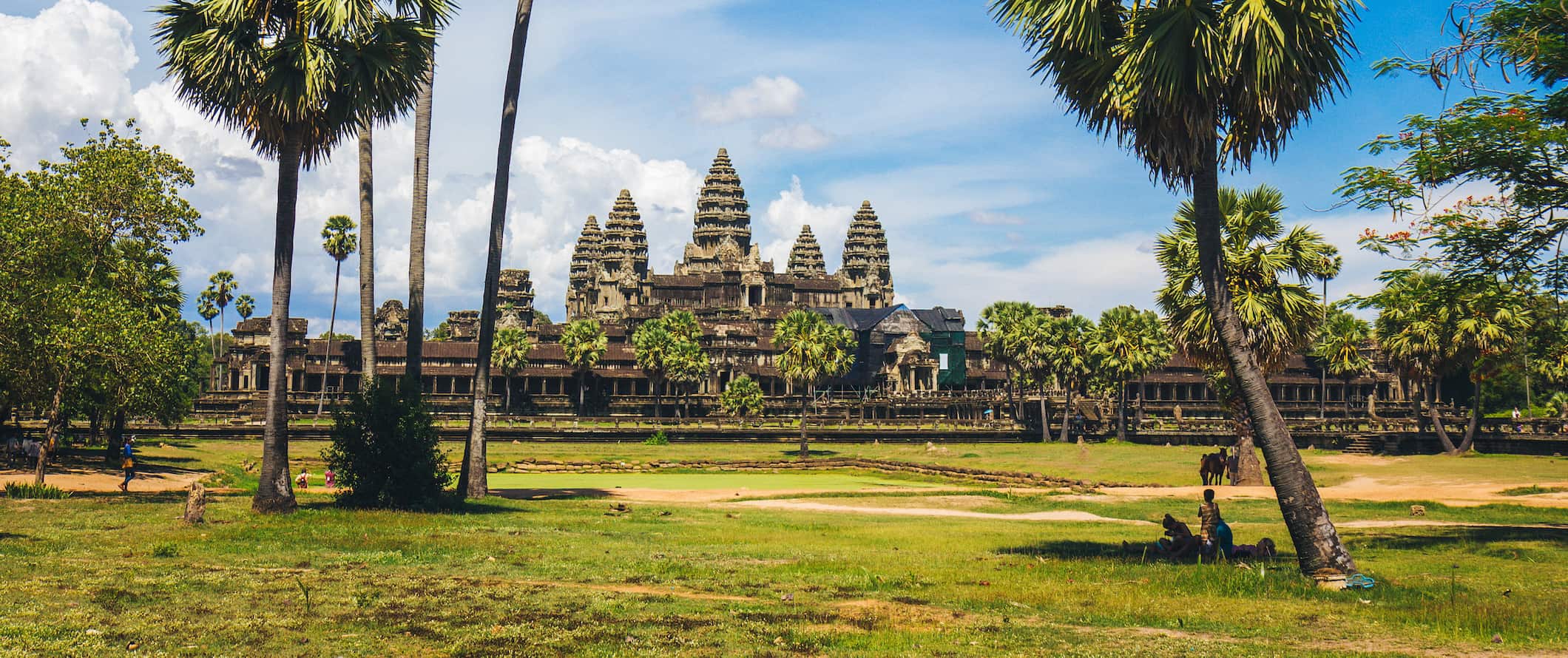
1. Admire Angkor Wat
One of the greatest human creations in history, the Angkor Wat temple complex is best explored over the course of a few days. The area is a UNESCO World Heritage Site created by the Khmer Empire and absolutely enormous. Temples to visit include Angkor Wat, Bayon Temple which has 216 gigantic stone face carvings, and Ta Prohm. I spent three days here and that simply wasn’t enough. A one-day pass is $37 USD, while a 1-week pass is $72 USD. If you’re here for multiple days, be sure to hire a driver and see some of the more out of the way ruins away from the main temple complex (and the crowds).
2. Explore Bangkok
Bangkok is the hub of travel activity in Southeast Asia. You can get anywhere you want from here. Though I hated it at first, the more I’ve spent time here the more I love it. Bangkok is like an onion whose many layers need to be peeled back. Some things not to miss include the spectacular Bangkok Grand Palace, Wat Pho, Chatuchak Market and Asiatique, and a canal trip on the Chao Phraya River. This is a city for foodies and wild nightlife.
3. Relax on some tropical islands
No visit to Southeast Asia would be complete without a visit to at least one of the thousands of tropical islands in the region. My top five include the Perhentian Islands (Malaysia), Rabbit Island (Cambodia), Ko Lanta (Thailand), and Boracay (Philippines). Lombok Island (Indonesia) has a chill vibe with unspoiled, perfect “desert island” beaches. There’s so many islands to visit. Be sure to add at least one to your trip. The country guides will have more information for you.
4. See Ha Long Bay
Sailing trips to this island-filled bay with stunning emerald waters, limestone formations, and marine life give you an appreciation for the natural beauty in Vietnam. Tours from Hanoi start at around $110 USD for two-day trips and increase from there. I love the colorful grottoes, hanging stalactites, and stalagmites of Surprise Cave (Sung Sot), Fairy Cave (Tien Ong), and Heaven Palace (Thien Cung). Make sure you go with a reputable company though as some of the cheaper boats are less than ideal. If you’d rather just visit for one day, day trips from Hanoi cost $55 USD.
5. Wander Kuala Lumpur
Other things to see and do in southeast asia, 1. go jungle trekking.
This region of the world is covered in amazing jungles with diverse wildlife, plentiful camping opportunities, and cool waterfalls. The best jungle treks are found in northern Thailand, Western Laos, and Malaysian Borneo (the latter are also the hardest and most intense). Some of my favorites include Danum Valley (Borneo) for its incredible wildlife; Ratanakiri (Cambodia) for its pristine wilderness and thousand-year-old trees; and Pu Luong Nature Reserve (Vietnam). Costs vary but jungle trekking generally costs $30-50 USD per day.
2. Attend the Full Moon Party
The biggest one-night party in the world welcomes up to 30,000 people with a party that stretches until dawn. Cover yourself in glow paint, grab a bucket of booze, and dance the night away with new friends on the island of Ko Phangan in Thailand. As the name would suggest, the party is on the night of the full moon. If you miss it, there’s always the half-moon party, quarter-moon party, and black-moon party. Really, every night is a party on Ko Phangan . Just avoid the flaming jump rope that occurs — I’ve seen people get burned badly!
3. Learn to dive
There are many great dive sites around the region for those interested in underwater exploration. You can learn to dive here at a fraction of what it would cost back home too. Some of the best places are Ko Tao (Thailand), Sipadan (Malaysia), as well as Gili Islands (Indonesia) and Coron, Palawan (The Philippines). A typical diving course is completed in three days. A PADI course typically runs $275 USD in Thailand, including three nights’ accommodation, though at smaller schools you can often negotiate down to $250 USD. Day trips for certified divers start at $165 USD. For information on Ko Tao, check out this blog post .
4. Eat street food in Singapore
Singapore is a foodie’s heaven. Try the hawker stalls of Singapore as well as Little India and Chinatown for some of the best and cheapest food in Asia. If you’re looking for a nice place to sit down and eat, eat at Singapore’s famed restaurants during lunch when restaurants offer discounts, making them a great deal. You’ll also find the most affordable Michelin-starred restaurants here (Tian Tian Hainanese Chicken Rice and Hawker Chan), offering world-class meals for just a couple of bucks!
5. Overload on temples
You can’t turn a corner without seeing a Buddhist temple in this part of the world. You’ll get temple overload at some point but visit as many as you can as each is unique to the country and region of the temple. There are so many places with high concentrations of ornate and beautiful temples. Check out Chiang Mai’s Wat Doi Suthep Temple and hike up the 300 steps to the golden Chedi that’s 600 years old!; Bagan’s Shwesandaw Pagoda from the 11th century with its stunning golden dome; Angkor Wat’s Ta Prohm is covered in iconic vines and enveloped in ancient jungle roots; Hue’s colorful Thien Mu Pagoda is perched atop a lush green embankment; Hoi An’s Quan Cong Temple with incredible Chinese architecture with hand-carved beauty and skill, and Luang Prabang’s Vat Xieng Thong with its golden, canopied roof. Most are free to enter, however, dress codes are enforced (you need to have your shoulders and legs covered).
6. Dive Sipadan
Located off Malaysian Borneo, Sipadan is one of the best dive sites in the world. If you have your dive certificate, make sure you venture out here. I absolutely love this area because it’s teeming with live turtles, diverse cave systems, sharks, dolphins, colorful coral, bright fish, and everything in between. Not a lot of people make it to this part of Malaysia, but it’s worth it to go the extra mile and make your way off the tourist trail a bit. Don’t miss Barracuda Point and The Drop-Off. Keep in mind that only 176 permits to dive at the island are issued each day, costing 140 MYR per person. The resorts on the neighboring islands each get a specific number of permits per day and require divers to stay with them for a few days. So you’ll need to stay at those resorts and dive into the surrounding areas before they can get you a Sipadan permit.
7. Fall in love with Bali
Bali is the most popular destination in Indonesia, and its famous Kuta beach is known for its wild parties and surfing ( though I think it’s overrated ). However, there is much more to Bali than just wild nights and sun-soaked days. If you’re a thrill seeker, hike up to the top of Mount Batur, an active volcano, for a breathtaking sunrise. Paragliding and white water rafting are also super popular here, as is surfing (it’s an affordable place to learn if you’ve never done it). There are also lots of hot springs to enjoy, the Ubud Monkey Forest (a popular temple and nature reserve home to hundreds of monkeys), and numerous places to scuba dive, including the Liberty wreck and Manta Point.
8. Take in Ho Chi Minh City
Frantic, chaotic, and crazy, Ho Chi Minh City in Vietnam is the embodiment of the controlled chaos that rules Southeast Asia. You can’t quite figure out how this teeming mass of people and cars work together, but it does. Highlights here include touring the tunnels used by the Viet Cong in the 1960s, taking in the view from the Saigon Skydeck, eating your way through the street food scene, and seeing the city’s numerous temples.
9. Admire the sunrise over an Indonesian Volcano
One of the most popular tourist attractions on Java is Mount Bromo and its National Park. Don’t miss out on getting a photo of the smoldering Bromo volcano as it lies surrounded by the almost lunar landscape of the Sea of Sand. Get up early to catch one of the most memorable sunrises of your life. If you’re there in mid-August, you’ll be just in time to see Upacara Kasada, the traditional Hindu ritual of the Tenggerese, a Javanese tribe of the region.
10. Hike in Khao Sok National Park
Located in southern Thailand, Khao Sok National Park is constantly rated as one of the best parks in Thailand, with incredible trekking, camping, limestone karsts, cooling rivers, and a glistening lake. Visit for semi-challenging hikes, tons of wildlife, walking paths, and breathtaking sunsets. Park entrance costs around $6 USD while full-day guided tours are $95 USD. I highly recommend spending at least one night here to get the full experience.
11. Visit Kampot
Most people come to Kampot to enjoy the scenic riverside views, as well as the rolling hills that surround the city. Since you can explore easily enough on foot or by bicycle, Kampot is a great place to slow down and relax. There’s not much to do here but have lazy days by the river, chill, and eat (don’t miss the famous Rusty Keyhole for BBQ!). Don’t miss the pepper farms, as this region of Cambodia is filled with pepper farms where you can learn about the history of the spice, see how it is grown, and pick up what is considered some of the finest pepper in the world. Tours are usually free.
12. Take a cooking class
Food from this region is as varied as the countries themselves and learning how to cook a few dishes is a great souvenir of your time here. Even if you don’t plan to cook back home, you can still spend a day making and eating scrumptious food. Most big cities have cooking schools offering classes of 2-6 hours, often including a trip to the local market beforehand to select ingredients. I absolutely love cooking classes and urge you to take one at least once. They are a fun experience!
13. Take a food tour
If you’d rather eat instead of cook, taking a food tour is a fun way to gain insight into the region’s amazing noodle dishes, fresh seafood, sweets, and street food while learning about the history and culture behind the cuisine. Most major cities in Southeast Asia offer food tours. These include tours around local markets, street stalls, and tours to locally-owned restaurants and cafes where you can sample the local cuisine and connect with a local chef. If you’re nervous about street food, this is a great way to try some in a controlled setting. Tours usually last 2-4 hours and include multiple stops and several different dishes, with prices costing $40-75 USD per person.
14. Visit an elephant sanctuary
While riding an elephant is on many a Southeast Asia bucket list, once you know how much the animals suffer from abuse in order to provide these rides, you might think twice about taking one. An even better way to interact with elephants is to volunteer at or visit the Elephant Nature Park near Chiang Mai in Thailand. It’s a phenomenal place, allowing you to give back to the community and these magnificent animals all at once. After coming here, you will understand why you should NEVER ride an elephant. A one-day visit costs $70 USD.
15. See The Killing Fields
A visit to Choeung Ek, also known as the Killing Fields, may not be the most cheerful way to spend an afternoon, but it makes for an educational and memorable experience. Over 3 million people were killed by Pol Pot’s regime, including countless women and children. I recommend getting a guide so you can really understand what you’re seeing as you explore the area. Also, this horrific tragedy took place less than 50 years ago and is still very present so please be respectful as a visitor. The site is located 10 miles from Phnom Penh. Half-day guided tours start at $66 USD.
16. Swim with Whale Sharks in Donsol
If you’re in the Philippines, check out the Donsol Whale Shark Interactive Ecosystem Project because there are not many experiences quite as adrenaline-inducing as swimming with a whale shark for the first time in crystal waters. These incredible creatures are around 45 feet (14 meters) long and yet incredibly gentle and curious. I loved floating at the surface being able to look below and see them slowly swim below me. Get some people together and rent a boat for a half day, explore the area, and go ‘shark-seeing’ for a good cause.
For a ton more information, visit my country specific travel guides for more detailed information on each place:
- Cambodia Travel Guide
- Indonesia Travel Guide
- Laos Travel Guide
- Malaysia Travel Guide
- Singapore Travel Guide
- Thailand Travel Guide
- Vietnam Travel Guide
Southeast Asia Travel Costs
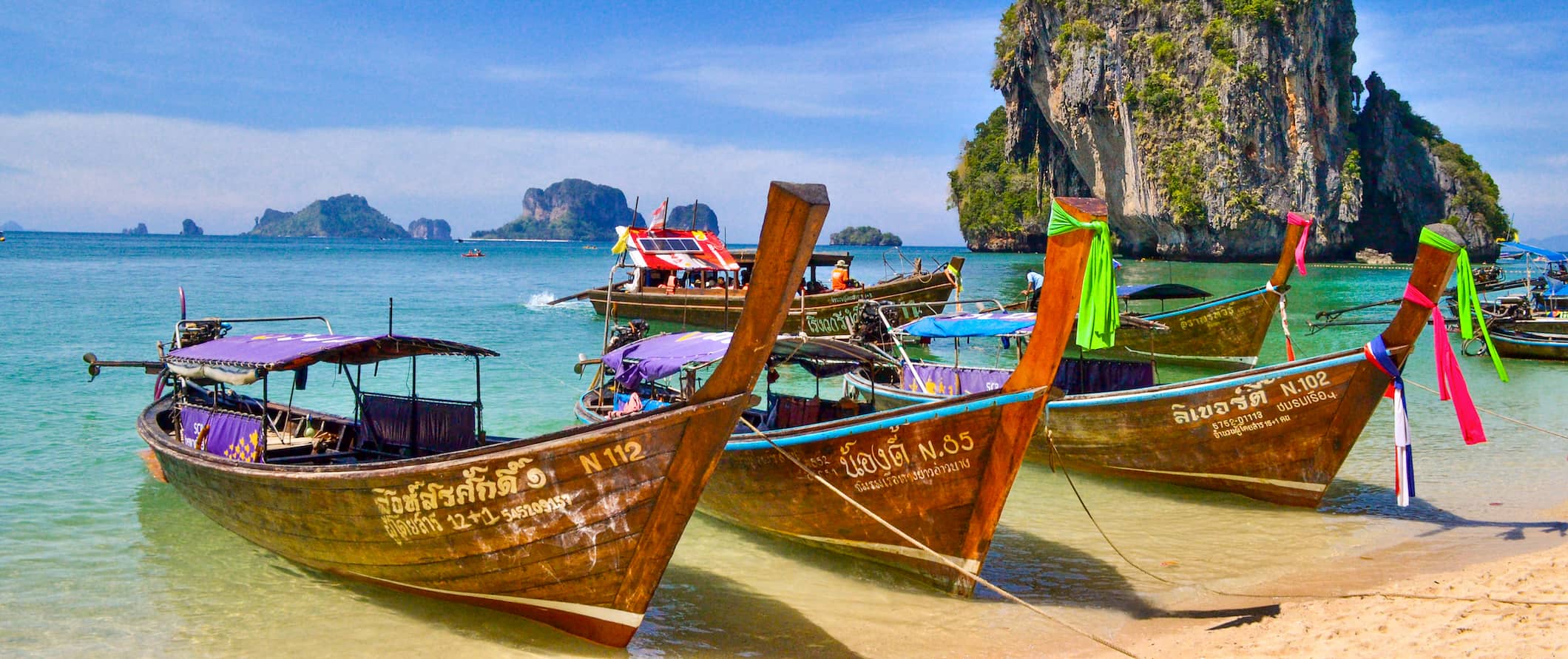
Accommodation – Accommodation in Southeast Asia is really cheap, making it the perfect place to travel if you are on a budget. Hostels are plentiful, as are budget guesthouses and hotels. It’s also very cheap to splash out here if you’re in need of some luxury.
Generally, you can find hostel dorm rooms for as little as $6-8 USD in Cambodia and $3-6 USD in Laos. In Thailand, 4-6-bed dorm rooms are $8-12 USD, while in Vietnam you can expect to pay $5-7 USD. In Indonesia, prices range between $5-10 USD for a 4-6-bed dorm room. Expect to pay at least $15-20 per night for a private room with air conditioning. Free Wi-Fi is standard in most hostels, free breakfast is common, and many hostels even have pools. In more remote areas, hot water isn’t common so make sure to check in advance if that’s an issue for you.
Simple guesthouses or bungalows throughout Southeast Asia generally cost $12-20 USD per night for a basic room with a fan (sometimes air conditioning) and hot water. If you want something nicer that includes a more comfortable bed and a TV, expect to pay $25-35 USD per night.
For backpackers, budgeting around $10 USD per night for accommodation is pretty safe no matter where you go in Southeast Asia. If you’re looking for a higher-end hotel room with more amenities, expect to pay $20-50 USD per night for a room. Anything over that is luxury territory.
Camping is available in certain areas, usually for just a few dollars per night for a basic tent plot without electricity. However, this is about the same price as hostels so it’s not really any cheaper.
Food – While each country’s cuisine varies, overall, Southeast Asian food is aromatic, spicy, and flavorful. Typical spices and herbs include garlic, basil, galangal, cilantro, lemongrass, kaffir lime leaves, chilies, and fish sauce. No matter what region you’re in, you can expect to find a variety of curries, salads, soups, noodle dishes, and stir-fries.
Rice and noodles are central to Southeast Asian food, while the meat is usually pork, chicken, fish, or seafood, which is everywhere on the islands and coastal areas.
While traveling Southeast Asia, street food is the most popular food and cheapest option. On average, these meals cost $1-5 USD. You find these stalls throughout this region lining most streets and every market. They are ubiquitous in the region. In Singapore, street food (from “hawker stands” as they’re known there) costs around $4-5 USD for a meal. Even if you go into small local restaurants, the price doesn’t increase that much.
Food that costs $2 USD at a street stall generally only costs $4-6 USD at a local restaurant. If you went into a restaurant in Thailand, you’d pay around $3-4 USD for a pad Thai that would have cost $1-2 USD on the street.
In Cambodia, street food is around $1-2 USD, while restaurants charge around $3-5 USD for a dish like amok (a coconut milk dish) or luc lac (pepper gravy beef).
Western meals, including burgers, pizza, and sandwiches usually cost around $7-10 USD. But these generally aren’t that great. If you want something that actually tastes as it does back home, expect to spend at least $10-12 USD for your meal.
While cheap, alcohol can take a bite out of your budget if you’re not careful. Those $1-2 USD beers add up! Wine and cocktails are more expensive, generally around $3-5 USD. A cappuccino is typically around $2 USD. Bottled water is plentiful and costs less than $1 USD.
There’s a growing cutting-edge foodie scene in the region and, if you want to splurge, you can do so on some really good meals. Big cities like Bangkok, KL, and Singapore, all have world-class Michelin star restaurants as well some incredible fusion restaurants.
Since dining out is so cheap in the region, there’s no point in grocery shopping unless you’re looking to get some pre-made salads or fruits. Additionally, a general lack of kitchens in most hostels and hotels makes it difficult to cook even if you wanted to. If you do purchase your own groceries, expect to spend around $25 USD per week for basic groceries like local produce, rice, and some meat (while avoiding expensive imported items like cheese and wine).
Backpacking Southeast Asia Suggested Budgets
On a backpacker budget of $45 USD per day, you can stay in hostel dorms, eat out at local markets and street stalls, limit your drinking, do mostly free activities, minimize paid activities, and use public transportation to get around. You’re not going to be able to splash out but you’ll be able to live the typical backpacker experience without really stressing over expenses.
On a mid-range budget of $85 USD per day, you can stay in budget hotels or private hostel rooms, eat more restaurant meals, do more paid activities like cooking classes, take some taxis, and enjoy a few more drinks. You won’t live large, but you won’t be missing out either.
On an upscale budget of $150 USD or more per day, you can stay in nicer hotels with more amenities, eat out as much as you want, do more paid tours including private tours, hire a driver, fly between destinations, and basically do whatever you want. The sky is the limit with this kind of budget!
You can use the chart below to get some idea of how much you need to budget daily, depending on your travel style. Keep in mind these are daily averages — some days you’ll spend more, some days you’ll spend less (you might spend less every day). We just want to give you a general idea of how to make your budget. Prices are in USD.
Southeast Asia Travel Guide: Money-Saving Tips
Backpacking Southeast Asia is cheap. There’s little opportunity to spend a lot of money since everything is already so inexpensive unless you intentionally are trying to splash out on fancy meals and high end hotels. The two reasons why most travelers end up overspending is that they eat a lot of Western food and drink way too much. If you want to save money while traveling in this part of the world, cut down on your drinking and skip the Western food. While country guides have more specific ways to save money, here are some general ways to save money in Southeast Asia:
- Stay with a local – Accommodation is cheap in Southeast Asia but nothing’s cheaper than free! Use Couchsurfing to stay with locals who have extra beds and couches for free. You’ll also meet great people who can show you around and share their insider tips and advice.
- Book tours and day trips as a group – You have more negotiation power when you’re with a group of people buying multiple spots or tickets. Traveling alone? Meet a friend at a hostel and see if they want to join the same tour as you. I’ve met some great friends over the years doing this and highly recommend it.
- Don’t book in advance – Don’t book any tours or activities before you get to your destination. They’ll be much cheaper when you arrive as you’ll be able to negotiate a lower price as you’ll find companies are often offering the same tour and competing. Anything you see online is more expensive than you need to pay!
- Eat on the street – The street food is the best food. The food is the best and cheapest you’ll find. It’s a great way to try new foods and get to chat with locals as well. This is where locals eat so if you want insight into local culture, good food, and savings, eat the street food. Look for where locals are eating to ensure that it’s safe to eat.
- Bargain hard – Nothing is ever at face value here. Bargain with sellers as most of the time, the price they’ve quoted is way higher. There’s a haggling culture in the region so play the game and save some money. It’s important not to convert it in your head to your own currency because it will usually sound cheap even though you might still be getting ripped off. You’ll never get the local price, but you might come close!
- Minimize your drinking – Drinks really add up. Even with cheap drinks, if you’re not aware, you’ll end up spending more money on beer than on food and accommodation. If you want to drink, head to the supermarkets, drink at the hostel, or check out the local happy hours.
- Pack a water bottle – A water bottle with a purifier comes particularly in handy in Southeast Asia since you can’t usually drink the tap water. Save money and thousands of plastic bottles and get a bottle that can purify the tap water for you. My preferred bottle is LifeStraw as it has a built-in filter that ensures your water is always safe and clean.
Where to Stay in Southeast Asia
I’ve been traveling Southeast Asia since 2005 and have stayed in hundreds of places. Here are some of my favorite places to stay in Southeast Asia:
- The Siem Reap Pub Hostel (Siem Reap)
- Onederz Siem Reap (Siem Reap)
- Mad Monkey Siem Reap (Siem Reap)
- Onederz Sihanoukville (Sihanoukville)
- Monkey Republic (Sihanoukville)
- Onederz Phnom Penh (Phnom Penh)
- Sla Boutique Hostel (Phnom Penh)
- The Magic Sponge (Kampot)
- Indigo House Hotel (Luang Prabang)
- Sa Sa Lao (Luang Prabang)
- Sanga Hostel (Pakse)
- Nana Backpackers Hostel (Vang Vieng)
- Dream Home Hostel (Vientiane)
- Traveller Bunker Hostel (Cameron Highlands)
- De’Native Guest House (Cameron Highlands)
- Kitez Hotel & Bunks (Kuala Lumpur)
- Sunshine Bedz Kuala Lumpur (Kuala Lumpur)
- Ryokan Muntri Boutique Hostel (Penang)
- Mad Monkey Hostel (Bangkok)
- D&D Inn (Bangkok)
- Kodchasri B&B (Chiang Mai)
- The Royal Guest House (Chiang Mai)
- Green Leaf (Khao Yai)
- Lonely Beach Resort (Ko Chang)
- The Sanctuary (Koh Phangan)
- Na-Tub Hostel (Koh Phangan)
- Pineapple Guesthouse (Phuket)
- Dream Lodge
- The Pod Capsule Hostel
- The Scarlet
- Under the Coconut Tree Guesthouse (Hoi An)
- Fuse Beachside (Hoi An)
- Pretty Backpackers House (Da Lat)
- Hanoi Old Quarter Hostel (Hanoi)
- Luxury Backpackers Hostel (Hanoi)
- The Hideout (HCMC)
- City Backpackers Hostel (HCMC)
How to Get Around Southeast Asia
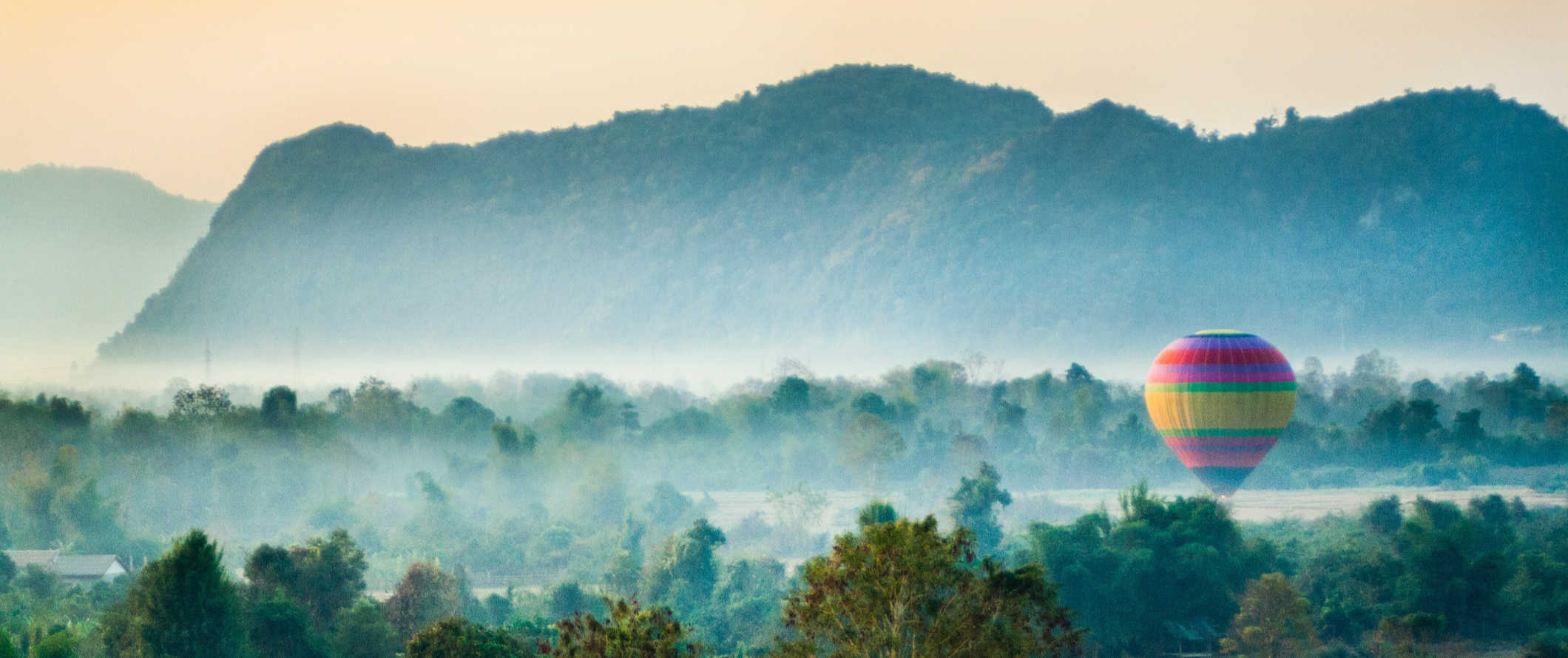
Public transportation – Public transportation costs from a few pennies to a few dollars, with Singapore and Malaysia offering the most comprehensive public transportation systems. In Thailand, local buses cost around $0.25 USD per trip, while the Metro and Skytrain in Bangkok cost $0.50-1.50 USD per trip. In Cambodia, a bus ticket in Phnom Penh costs just $0.40 USD per ride.
Major cities generally have subway systems but mostly you’ll be using the bus or shared taxis to get around.
Tuk-tuks (small, shared taxis with no meter) are available around much of the region and require a bit of haggling. They usually have 3-6 seats and generally cost more than public transportation but are faster. To find a reputable driver, ask your accommodation as they usually know someone. Tuk-tuk drivers can often be hired for the day for a discounted rate (this is what a lot of people do to visit the Killing Fields and Angkor Wat in Cambodia, for example).
Taxi – Taxis in the region are generally safe, though it’s not uncommon to have to haggle. Scams to rip you off aren’t uncommon either, so always ask your accommodation to call you a taxi whenever possible so you know you’ll get a reputable company.
In Singapore and Indonesia, taxi drivers do put on the meter. In Bangkok, you can get taxi drivers to use the meter, but if you’re hailing one in a tourist area, he might try to avoid using it. In Vietnam, the meter is sometimes rigged, but if you can get a reputable company like Mai Linh, you won’t have any problems.
Ridesharing – Grab, DiDi, and Gojek are Asia’s answer to Uber. They work the same way: you hire a driver to take you somewhere via the app, and you can pay via the app or in cash. It’s often more affordable than a regular taxi, though drivers are a bit unreliable as the practice is not as widespread here as in other parts of the world.
Just keep in mind that some drivers are driving motorcycles so be sure to double check what kind of vehicle is picking you up if you don’t want to ride on the back of one.
Bus – The easiest and cheapest way to travel around Southeast Asia is by bus. The backpacker trail is so worn that there is a very well-established tourist bus system to take you anywhere. Buses costs vary between $5-25 USD for a 5-6 hour journey. Overnight buses cost $20-35 USD depending on distance (they often have reclining seats so you can get a decent sleep).
You can check ticket prices and book tickets for all the different bus companies across Southeast Asia at 12go.asia.
Train – Train service is limited in the region and not something to really consider when you travel Southeast Asia. You can take a train up and down the coast of Vietnam and there’s some limited scenic rails in Malaysia. Thailand is the only country that has an extensive train system that lets you travel all its regions (and onward to Singapore) from Bangkok.
The train prices in Southeast Asia are determined by distance and class. Night trains with sleeper cars are more expensive than day trains. The night train to Chiang Mai from Bangkok takes twelve hours and costs $27 USD for a sleeper seat. However, that same train during the day is $8-9 USD. In Vietnam, trains run up and down the coast and cost $60 USD from Hanoi to Ho Chi Minh City.
Flying – The cost of flying around Southeast Asia has come down in recent years due to the rise of low-cost airlines. Scoot, Jetstar, and AirAsia are the biggest. Nok Air has a lot of flights within Thailand , and VietJet Air is popular in Vietnam . Lion Air serves Indonesia , but its safety record is really spotty and I personally would not fly them. If you book early, you can save on fares, as most of the airlines offer deeply discounted fare sales all the time, especially Air Asia.
Just make sure that the airport these budget airlines fly into isn’t too far out of your way (transportation from the secondary airport sometimes negates the savings from using the budget airline itself).
Also, keep in mind that you usually must pay to check your baggage on these cheap flights. If you wait to pay for your luggage at the gate, you end up paying almost double. Travel carry-on only to avoid this added cost.
All in all, I only recommend flying if you are pressed for time or find a super cheap deal. Otherwise, stick to the bus.
Hitchhiking – Hitchhiking in Southeast Asia is safe, though popularity of the practice varies by country (it’s more common in Malaysia, but not so much in Cambodia). Dress respectably, smile while making eye contact with drivers, and use a cardboard sign to tell people where you’re headed. Be prepared for long bouts of no pick-ups, especially if you’re traveling through more rural areas. Pack plenty of water and food. Also, make sure the people picking you up understand you’re hitchhiking and not flagging down a taxi.
Hitchwiki is a great resource for hitchhiking tips.
Car rental I don’t recommend renting a car in Southeast Asia. Rental cars are expensive ($40 USD per day or more) and the roads here are in poor shape. I would never drive around the region.
When to Go to Southeast Asia
The best time of year to visit Southeast Asia is from November to April when temperatures are milder (though temperatures vary drastically by region). It may be mild in Thailand in January and hot in Malaysia but in Northern Vietnam, it’s cold! Also, one of the biggest mistakes people make is not taking into account the rainy season. In some cases it won’t make a big difference but definitely does if it’s a beach trip.
In Indonesia, the best time to visit is April to October. Temperatures average 24-30ºC (75-86ºF), and the weather is mostly dry. July to September is the peak holiday season and when you can expect to pay the highest rates. December to February is the rainy season.
In Malaysia, January-March and June-September are the best time to visit, as these months have the lowest average rainfall. It is still hot and humid during this time though. The rainy season is from October to December. Singapore’s climate/weather is much like Malaysia’s.
In Vietnam, the weather varies by region. In Central Vietnam (including Hoi An and Nha Trang), January-May is the best time to visit because it is dry and the temperatures average 21-30°C (70-86°F). June to August is also a decent time to visit. If you want to stick around Hanoi, March to April is great, or October to December (for mildest temperatures). The rainy season is May-September.
Thailand has three seasons: hot, hotter, and hottest. It’s always warm, though the weather is nicest between November and February (which is also peak tourist season). Bangkok is “coolest” and driest during this time (but still averaging a hot 29°C/85°F each day). April and May are the hottest months, and the rainy season is June-October. The gulf islands get pretty rainy from August to December.
The dry season in Cambodia is from November-May and the cool season is from November-February (and when most people visit). Temperatures during this time are still high, but humidity is lower. Laos has the same cool season as Cambodia, with the dry season running from November-April.
In the Philippines, it’s mostly warm all year long with an average daily high of 26°C (80°F). There are rainy and dry seasons and temperatures are hot and dry from March-May and cooler December-February. The best time to visit is between January-April when it’s less humid. Monsoon Season is July-October.
For more information on when to go to places, visit the specific country guides.
How to Stay Safe in Southeast Asia
Southeast Asia is an incredibly safe place to backpack and travel — even if you’re traveling solo and even as a solo female traveler. Violent crime is super, duper rare. Petty theft (including bag snatching) is the most common type of crime in Southeast Asia, especially around popular tourist landmarks. Always keep your valuables out of reach on public transportation and in crowds just to be safe. Never leave your valuables unattended while at the beach and always keep a hold of your purse/bag when out and about as bag snatching is common.
That said, outside touristy areas, theft is really rare. Heck, it’s pretty rare in touristy areas too! But a little vigilance goes a long way and it’s better to be safe than sorry.
There are some common scams around that you’ll want to be aware of, such as the motorbike scam. This involves a bike rental company trying to charge you for damage to the bike that you didn’t cause. To avoid this, always take photos of your rental before you leave so you can protect yourself from baseless claims.
Another common scam involves a tuk-tuk driver taking you somewhere you didn’t want to go in hopes you’ll buy something from the shop/restaurant he dropped you off at (he gets a commission if you do). Simply refuse to buy anything and demand to go back to where you were — or find another driver.
For other common travel scams, read this post about major travel scams to avoid in the region .
Solo female travelers should feel safe here, though it’s generally a good idea to avoid walking around alone at night just to be safe. It’s always a good idea to carry some extra cash to get home in a taxi if you need to. Additionally, always keep an eye on your drink at the bar and never accept drinks from strangers. Be sensible when it comes to dating while traveling and meeting people in public places. As I’m not a woman, please check out some solo female travel blogs to get the best insight.
Overall, the people who get in trouble here tend to be involved with drugs or sex tourism. Avoid those two things and you should be fine. Keep in mind that it’s not always obvious how old someone is or if they’re a sex worker so be mindful when getting involved in romantic interactions. Also, penalties for drug use in this region are stiff so even if you’re here to party, skip the drugs.
Always trust your gut instinct. Make copies of your personal documents, including your passport and ID. Forward your itinerary along to loved ones so they’ll know where you are.
For more in-depth coverage of how to stay safe in Southeast Asia, check out this post that answers some frequently asked questions and concerns.
The most important piece of advice I can offer is to purchase good travel insurance. Travel insurance will protect you against illness, injury, theft, and cancellations. It’s comprehensive protection in case anything goes wrong. I never go on a trip without it as I’ve had to use it many times in the past. You can use the widget below to find the policy right for you:
Southeast Asia Travel Guide: The Best Booking Resources
These are my favorite companies to use when I travel. They consistently have the best deals, offer world-class customer service and great value, and overall, are better than their competitors. They are the companies I use the most and are always the starting point in my search for travel deals.
- Skyscanner – Skyscanner is my favorite flight search engine. They search small websites and budget airlines that larger search sites tend to miss. They are hands down the number one place to start.
- Hostelworld – This is the best hostel accommodation site out there with the largest inventory, best search interface, and widest availability.
- Agoda – Other than Hostelworld, Agoda is the best hotel accommodation site for Asia.
- Booking.com – The best all around booking site that constantly provides the cheapest and lowest rates. They have the widest selection of budget accommodation. In all my tests, they’ve always had the cheapest rates out of all the booking websites.
- Get Your Guide – Get Your Guide is a huge online marketplace for tours and excursions. They have tons of tour options available in cities all around the world, including everything from cooking classes, walking tours, street art lessons, and more!
- SafetyWing – Safety Wing offers convenient and affordable plans tailored to digital nomads and long-term travelers. They have cheap monthly plans, great customer service, and an easy-to-use claims process that makes it perfect for those on the road.
- LifeStraw – My go-to company for reusable water bottles with built-in filters so you can ensure your drinking water is always clean and safe.
- Unbound Merino – They make lightweight, durable, easy-to-clean travel clothing.
Get the In-Depth Budget Guide to Thailand!

My detailed 350+ page guidebook is made for budget travelers like you! It cuts out the fluff found in other guidebooks and gets straight to the practical information you need to travel around Thailand. You’ll find suggested itineraries, budgets, ways to save money, on and off-the-beaten-path things to see and do, non-touristy restaurants, markets, bars, safety tips, and much more! Click here to learn more and get your copy today.
Southeast Asia Travel Guide: Related Articles
Want more info? Check out all the articles I’ve written on Southeast Asia travel and continue planning your trip:

The 4 Best Hostels in Singapore
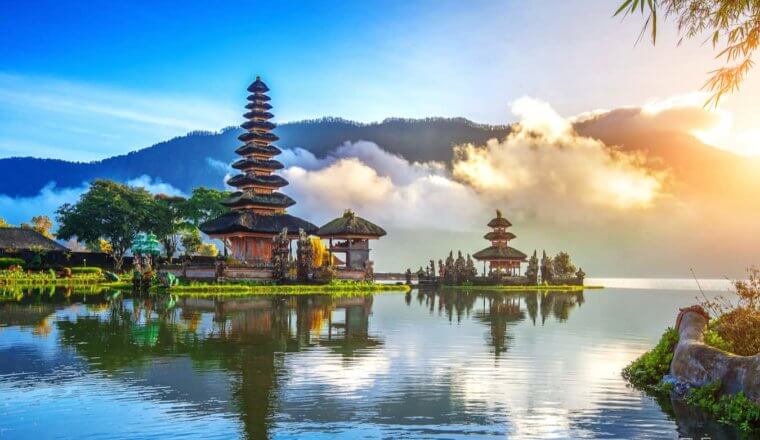
The 6 Best Hostels in Bali
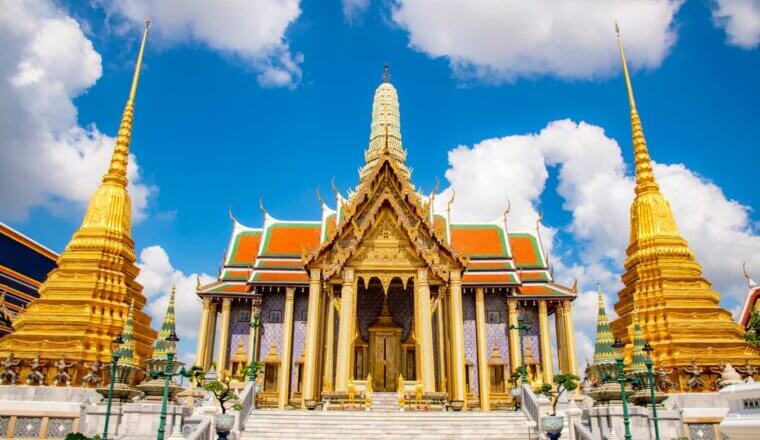
The 22 Best Things to Do in Bangkok
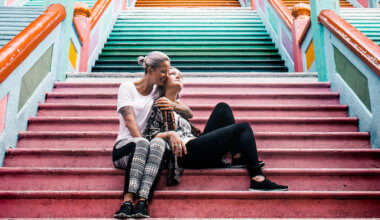
5 LGBTQ Travel Tips for Asia

Is Southeast Asia Safe for Travelers?
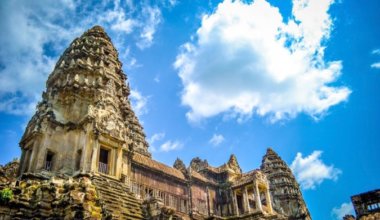
Backpacking Cambodia: 3 Suggested Itineraries for Your Trip
Get my best stuff sent straight to you, pin it on pinterest.
- Where To Stay
- Transportation
- Booking Resources
- Related Blogs

- 29 Reasons Why You Must Travel Southeast Asia
- Angkor Wat Sunrise by Bicycle
- India – Everything You Need To Know Before You Go
Myanmar – Everything You Need To Know Before You Go
- Vietnamese Food – 17 Must-Try Food and Drinks in Vietnam
- The Ultimate Guide to Exploring Ho Chi Minh City On a Budget
- Vietnam – Everything You Need To Know Before You Go
Southeast Asia – Everything You Need To Know Before You Go
- How to Stay Safe in Southeast Asia
Responsible Travel in Southeast Asia
- 20 Common Scams in Thailand And How To Avoid Them
- Ijen Volcano Blue Fire Hike in Indonesia
Etiquette in Southeast Asia
- Orangutan Trek in Bukit Lawang (And What It’s Like To Get Chased By One)
- 14 Free and Cheap Things To Do In Ho Chi Minh City
Indonesia – Everything You Need To Know Before You Go
- Laws in Singapore You Must Know Before You Go
- Thean Hou Temple in Kuala Lumpur
- The Ultimate Travel Guide for Singapore on a Budget
- 19 Fun And Free Things To Do In Singapore
- The Ultimate Guide to Exploring Kuala Lumpur On A Budget
- 14 Fun And Free Things To Do In Kuala Lumpur
- The 3 Most Beautiful Must-See Temples in Kuala Lumpur
- Malaysia – Everything You Need To Know Before You Go
Southeast Asia is the ultimate travel destination. It’s packed with culture, stunning landscape and temples, delicious food, friendly people, and it’s very safe and easy to travel. Southeast Asia has some of the most beautiful beaches, waterfalls and sunsets in the world, as well as volcanoes, jungles, caves, unique animals, lively nightlife and some of the best scuba diving in the world. And it’s the ultimate budget traveler’s destination because it’s very affordable to travel. Southeast Asia really is the full package.
As a solo female traveler, I’ve traveled Southeast Asia for 5.5 months over 4 different trips. I’ve explored Vietnam, Laos, Thailand, Malaysia, the Philippines, Myanmar, Indonesia, Borneo, Brunei, Singapore and Siem Reap in Cambodia. Southeast Asia is one of my favorite regions in the world.

In no particular order, here are 29 reasons why you need to travel Southeast Asia:
IT’S PERFECT FOR YOUR FIRST TRAVEL ADVENTURE
Southeast Asia is fun, beautiful, cheap, safe and very easy to travel which is a great formula for your first travel adventure. And it’s great for backpacking.
Southeast Asia definitely attracts a younger crowd, particularly in Thailand. The most popular backpacker trail is Thailand, Cambodia, Laos and Vietnam, as well as Bali in Indonesia.
IT’S GREAT FOR SOLO TRAVEL
As a solo traveler, it’s so easy to meet other travelers, so you’ll likely never be alone, unless you want to be.
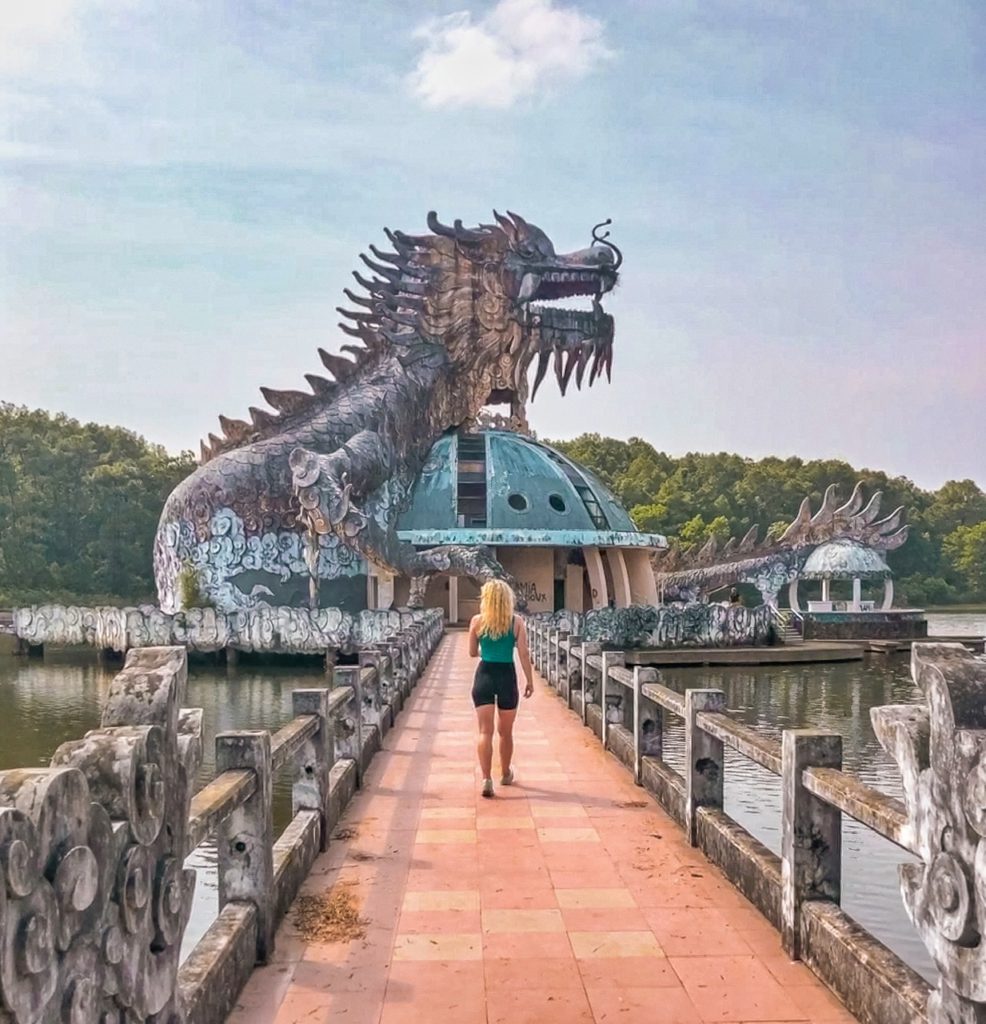
IT’S FUN AND CAREFREE
Southeast Asia is one of the most carefree places you can travel. It’s impossible to not have the time of your life and be happy when you travel Southeast Asia.
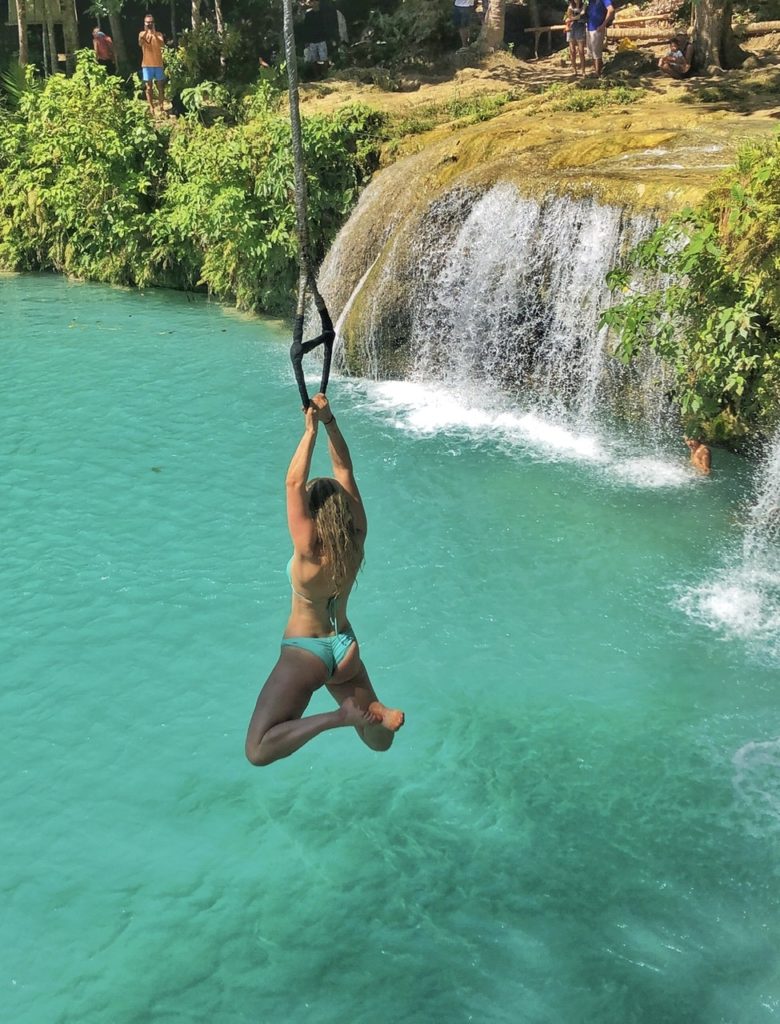
However, that being said, don’t let go of your common sense just because you’re on vacation.
It’s very easy to go with the flow and wing it during your travels in Southeast Asia. So don’t plan too much so you can leave room for spontaneity.
Female travelers will find Southeast Asia freeing because they can ditch the hot hair tools and embrace their wavy/curly hair. And they can give up or cut way back on makeup because it’s so hot and humid. Beachy hair and a sun-kissed glow is all you need.
The landscape in Southeast Asia is stunning and so varied between countries and even within each country. There’s the expected and the obvious scenery like jungles and beautiful white sand beaches with turquoise water, but there’s also lush green rice fields and mountains, vast caves, turquoise waterfalls, active volcanoes and more.
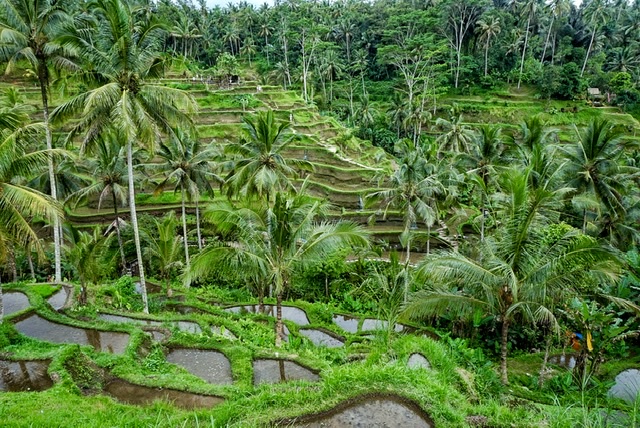
Southeast Asian people are some of the most cheerful, welcoming, warm and friendly people in the world. And how the locals treat you as a traveler has a major impact on your experiences in a place.
When you travel Southeast Asia, you will taste some of the best food in the world. It’s sure to be a highlight of your trip because Southeast Asia is the ultimate foodie’s paradise. You can expect lots of tasty rice and noodle dishes, flavorful spices and sauces, fresh tropical fruit and much more. Thailand, Vietnam, Malaysia, Singapore and Indonesia all have world class cuisines.
You don’t need to spend a lot of money to eat well in Southeast Asia. Forget the fear mongering and what you’ve heard about avoiding street food because the best and most authentic food in Southeast Asia is street food and it would be a hate crime to avoid it. Street food and the dishes from very modest hole-in-the-wall restaurants only cost $1-2US per meal. The night markets have the best street food.
The same rule also applies to the fresh fruit and fruit juice. You’ll be fine. But also, take Dukoral (which protects against traveler’s diarrhea) before your travels. I always take Dukoral and indulge in street food and fresh fruit. And I accidentally ate undercooked chicken in Malaysia and I was fine.
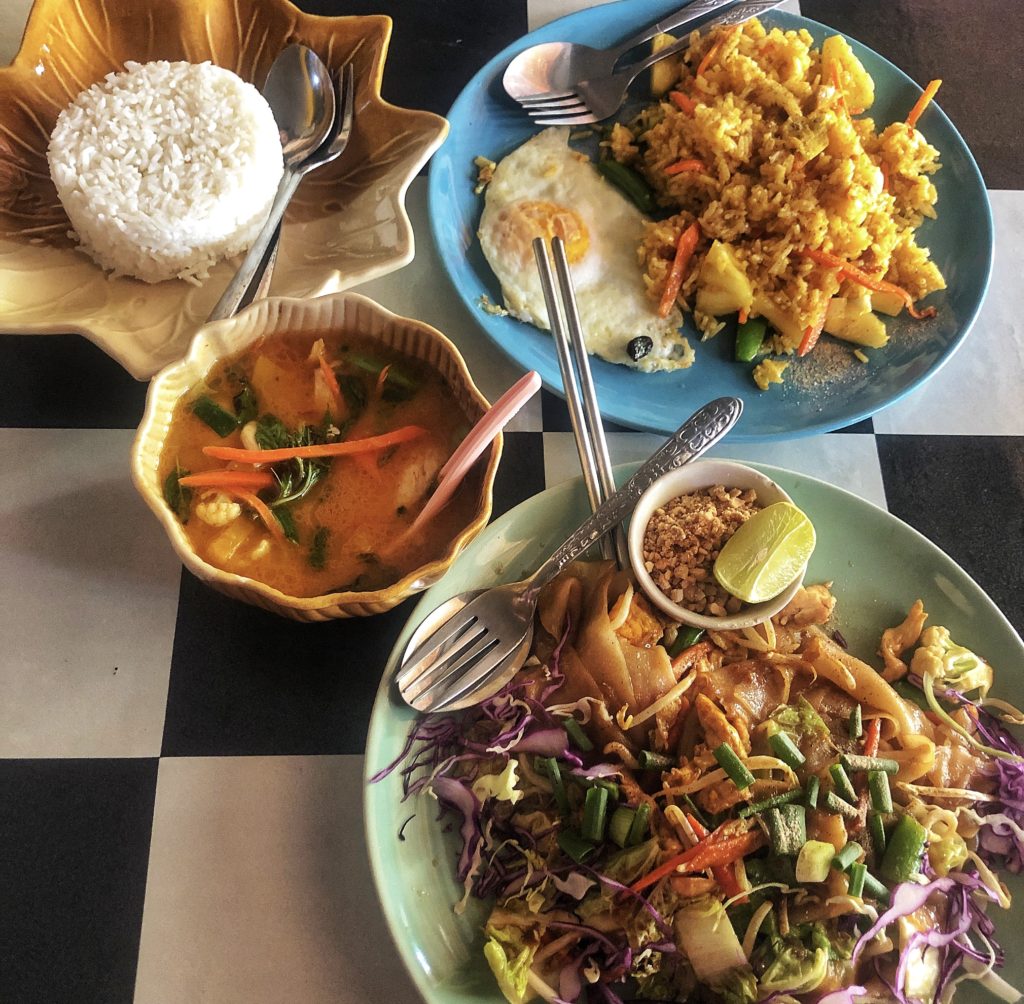
MUST-TRY FOODS IN SOUTHEAST ASIA
Thailand – pad thai, pad see ew, khao soi, green papaya salad, mango sticky rice, and all the curries and soups
Vietnam – banh mi, cao lau, bun thit nuong, pho, mi quang, banh xeo, goi cuon
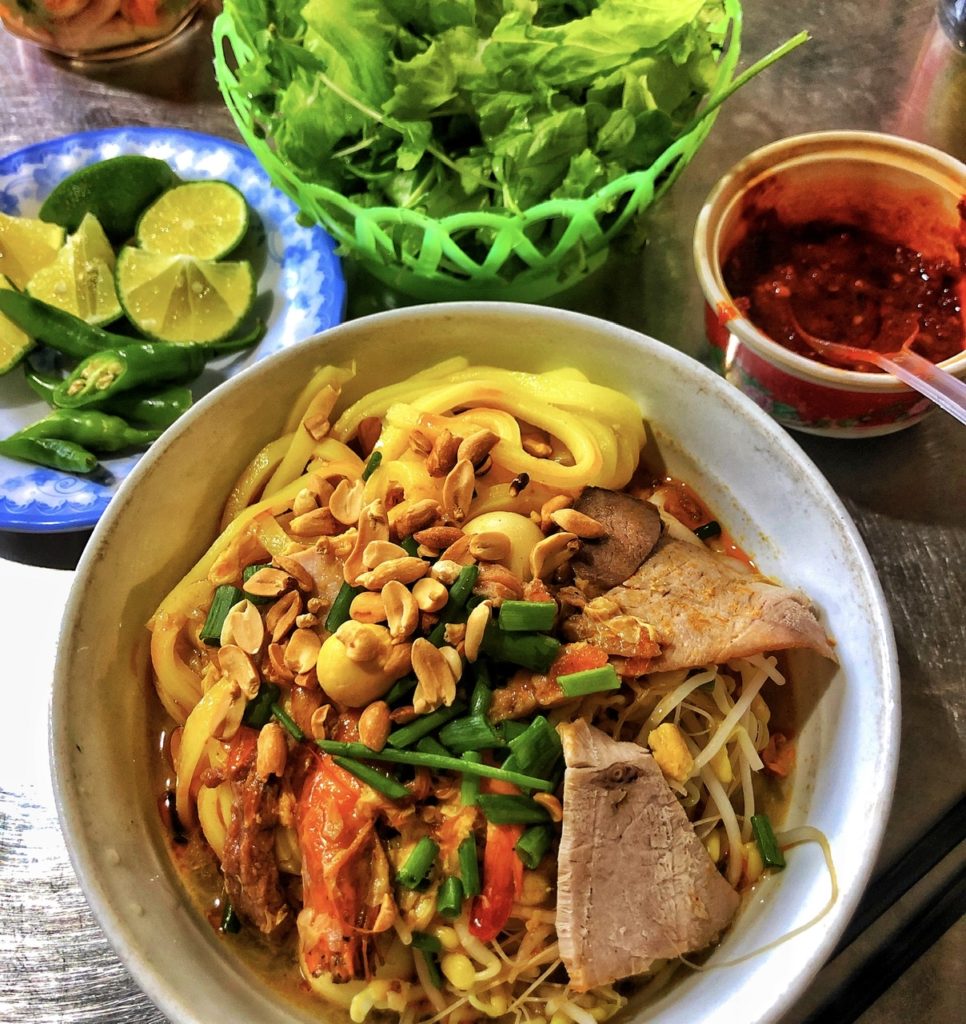
The Philippines – chicken adobo, pancit, kinilaw, lechon, halo halo, lumpia
Malaysia – nasi lemak, char kway teow, hokkien mee, laksa, Indian food (there’s a large Indian population), the street food in Penang
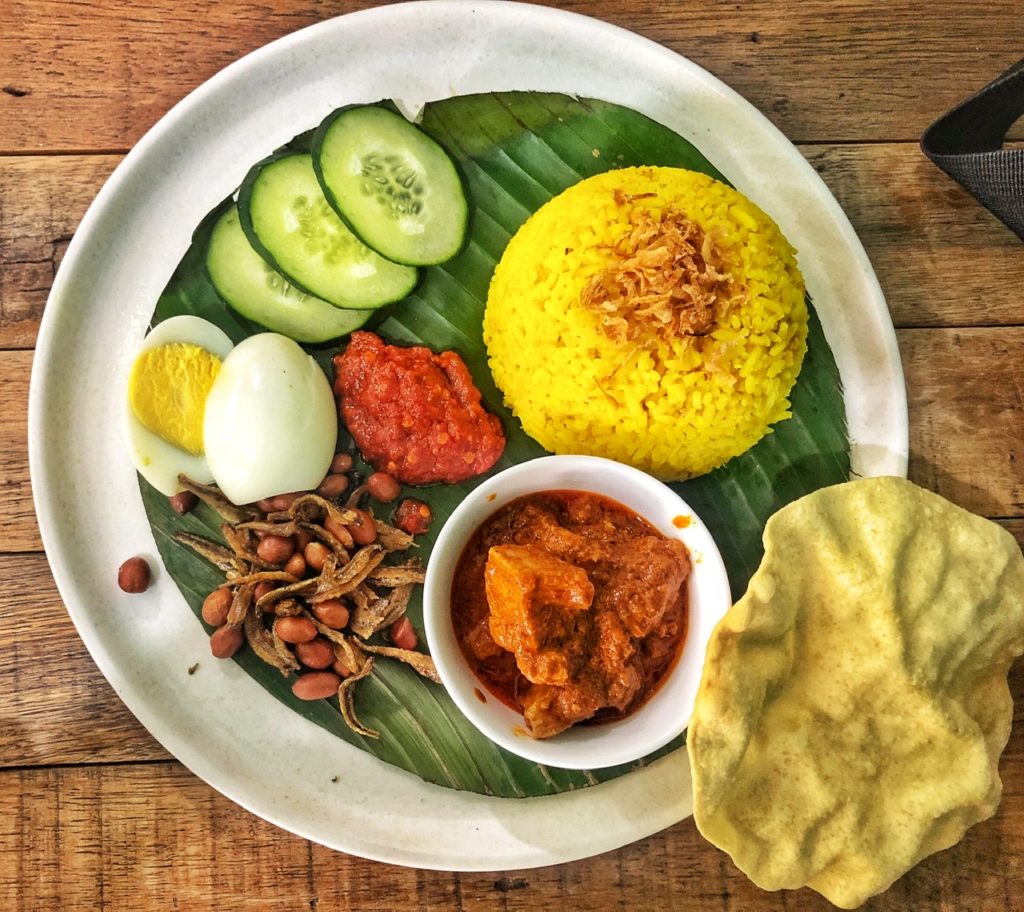
Indonesia – nasi goreng, beef rendang, gado-gado, soto tangkar, ayam goreng
Singapore – char kway teow, chili crab, satay, laksa
Myanmar – mohinga, tea leaf salad, Burmese curry, Shan rice, sweet snacks, tea shop meals
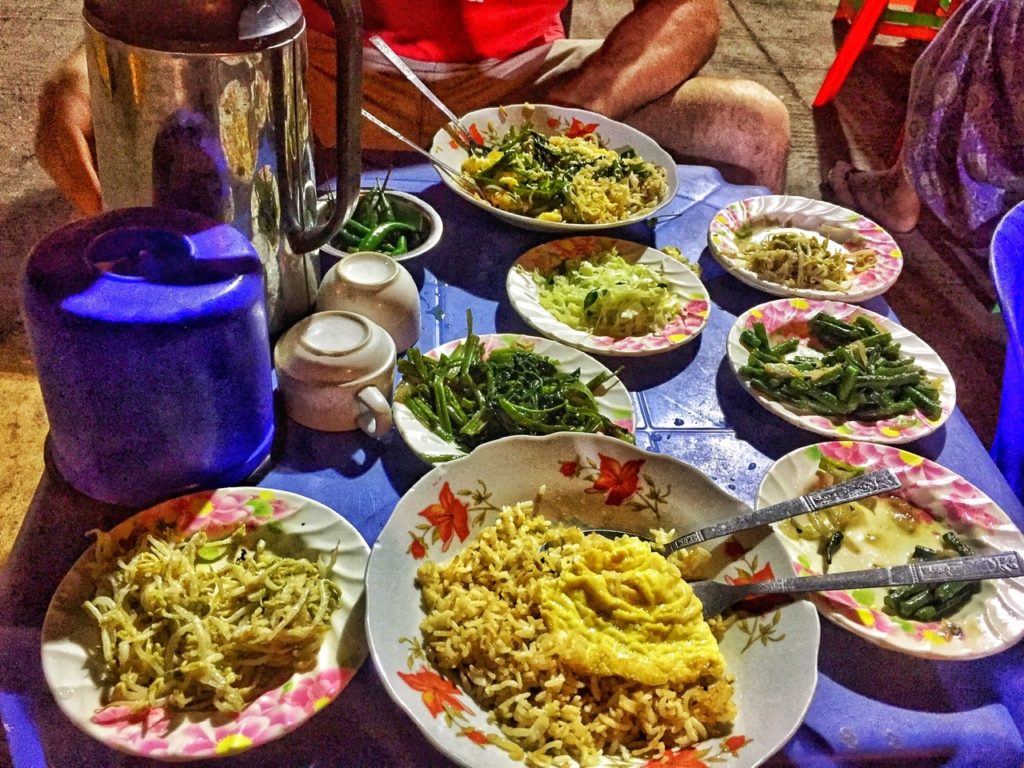
Cambodia – amok, bai cha, kway teow
Laos – laap, nam khao, sticky rice, green papaya salad
Brunei – nasi katok, ambuyat, pulut panggang, penyaram, bamboo chicken and all the fruit!
Taking a cooking class is a fun, cheap and useful activity to do in Southeast Asia 🙂
See 17 Must-Try Food and Drinks in Vietnam
IT’S BUDGET FRIENDLY
Think you don’t have enough money to travel? Think again. The majority of Southeast Asia is ridiculously cheap to travel. Bangkok is one of the cheapest places to fly into from anywhere in the world. And if you’re a budget traveler, hostel dorm rooms cost $3-7US/night (or $15-20US+/night for guesthouses, which can be split between two people), meals cost $1-3US, and scooter rentals cost $3-5US/day (which can also be split between two). And beer is dirt cheap at $0.50-1US for the local brew.
In many places in Southeast Asia, you can live on $15-25US per day, depending on where you stay and how much you drink/party and shop. That’s only $450-750US/month, which is most likely significantly cheaper than the cost of living for one month in your home city. And if you’re on a super budget, it’s possible to travel Southeast Asia for even less than $15US/day if you’re into couchsurfing .
However, Singapore is the exception to this as it’s more expensive, but it’s certainly not impossible to travel on a budget.
See How To Save Money For Travel , How To Plan Your Travel Budget and How To Save Money While Traveling .
Southeast Asia is a very safe region to travel. However, this doesn’t mean you should let your guard down because petty crime does exist. Most importantly, use your common sense, don’t make things easy for people and don’t act like you’re invincible and you should be fine.
For tips on how to stay safe and avoid dangers and scams, see How To Stay Safe in Southeast Asia.
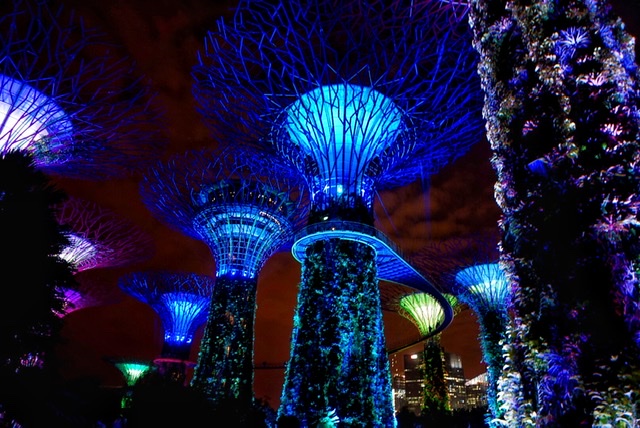
IT’S EASY TO TRAVEL
Southeast Asia is very easy to travel because it’s very well-connected with buses and quick, cheap flights. For most trips between towns, you take a bus. However, if you have a longer distance to cover and if you’re short on time and not on a super budget, you can find a cheap, quick flight instead. Air Asia is like the RyanAir of Asia, except it’s not trash. And there are loads of other low cost airlines in Southeast Asia as well.
THE ADVENTURE ACTIVITIES
You can go tubing inside a cave in Laos, rope swinging at waterfalls, caving in Laos and Vietnam, hiking active volcanoes in Indonesia and the Philippines, canyoneering in the Philippines, surfing, scuba diving and snorkeling and more!
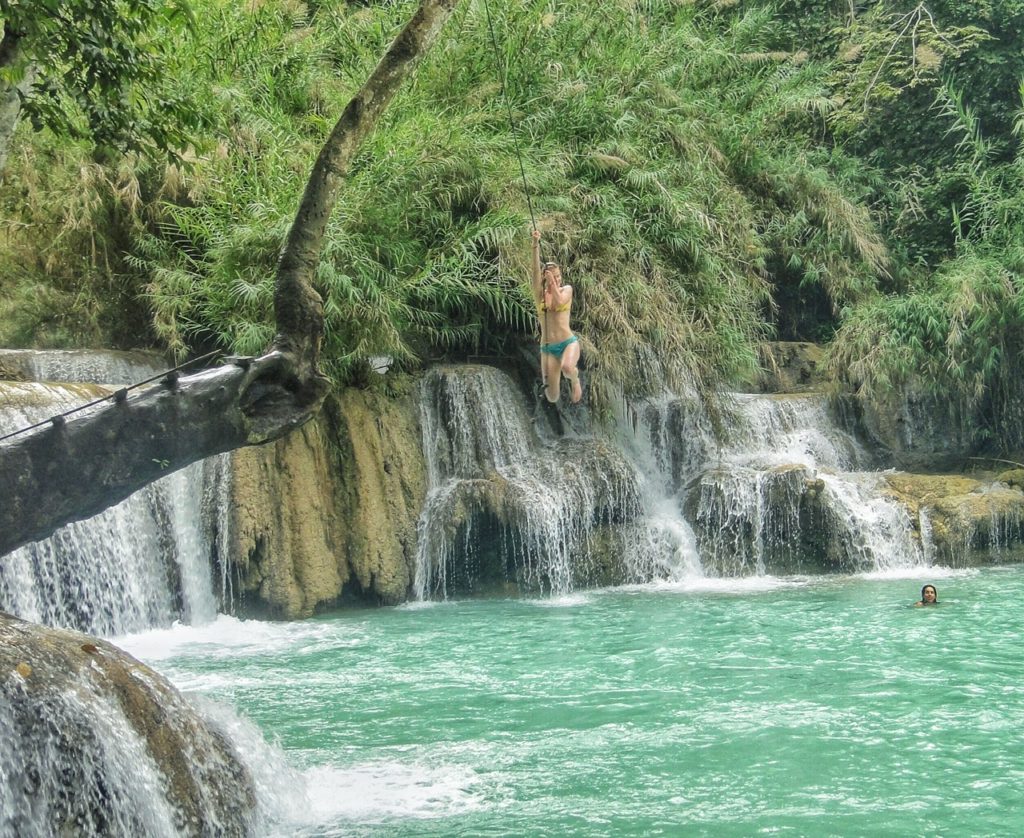
THE WATERFALLS
The majority of the waterfalls in Southeast Asia are turquoise pools in stunning lush, green settings. Indonesia and the Philippines have some of the most beautiful waterfalls in the world.
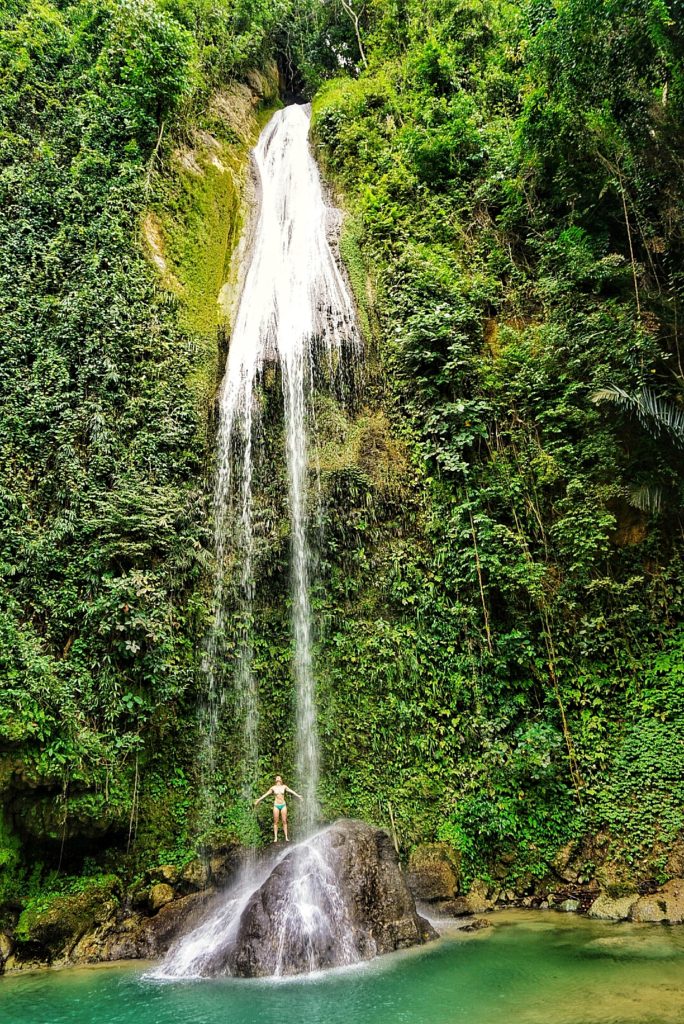
THE VOLCANOES
There are some really amazing active volcanoes that you can hike in Indonesia and the Philippines (I promise it’s not as scary as it sounds). Active volcanoes are some of the most beautiful and fascinating nature you can see.
My second favorite volcano in the world is Ijen in Indonesia , where you can see the blue fire (my first favorite is the Acatenango hike to see Fuego volcano erupt, which is in Guatemala).
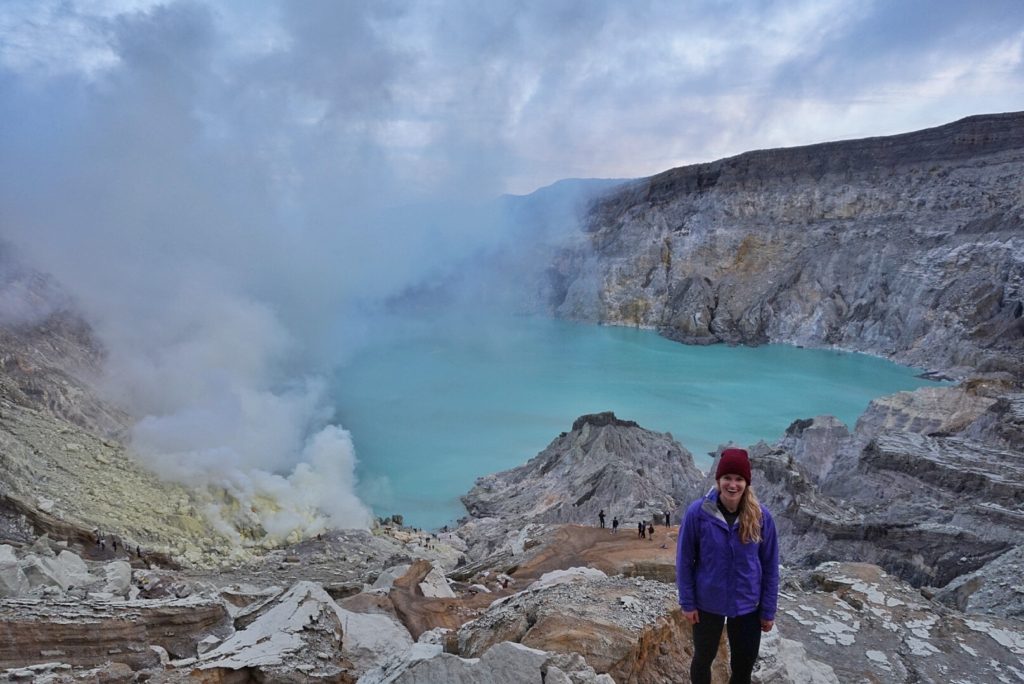
You can visit Pinatubo and Taal in the Philippines and Bromo, Kelimutu, Batur, Rinjani and Merapi in Indonesia.
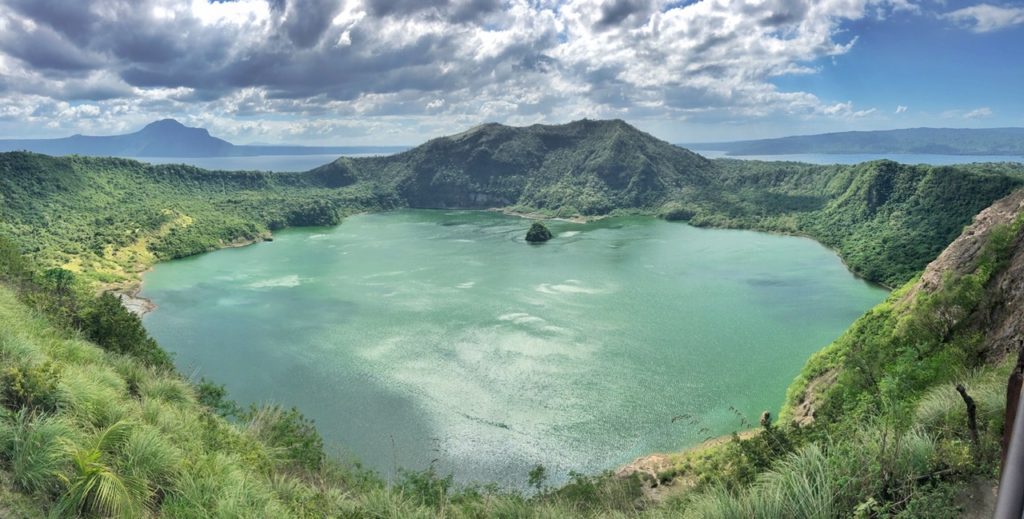
FEELING COLD BECOMES FOREIGN
As someone who hates the cold and thrives in the warm sun, this is very exciting. The majority of Southeast Asia is very hot and very humid so it’s like summer all year. However, there is a chance you will find yourself in a cooler place, which may take you by surprise. The northern/mountainous areas of Thailand, Myanmar, Laos, Vietnam, Malaysia, Indonesia and the Philippines can get near freezing at times, depending on the time of year. So make sure you bring a sweater or two and a pair of pants or leggings, which you’ll also need for overnight buses.
For tips on how to survive the heat and humidity, see How to Deal With Heat And Humidity While Traveling .
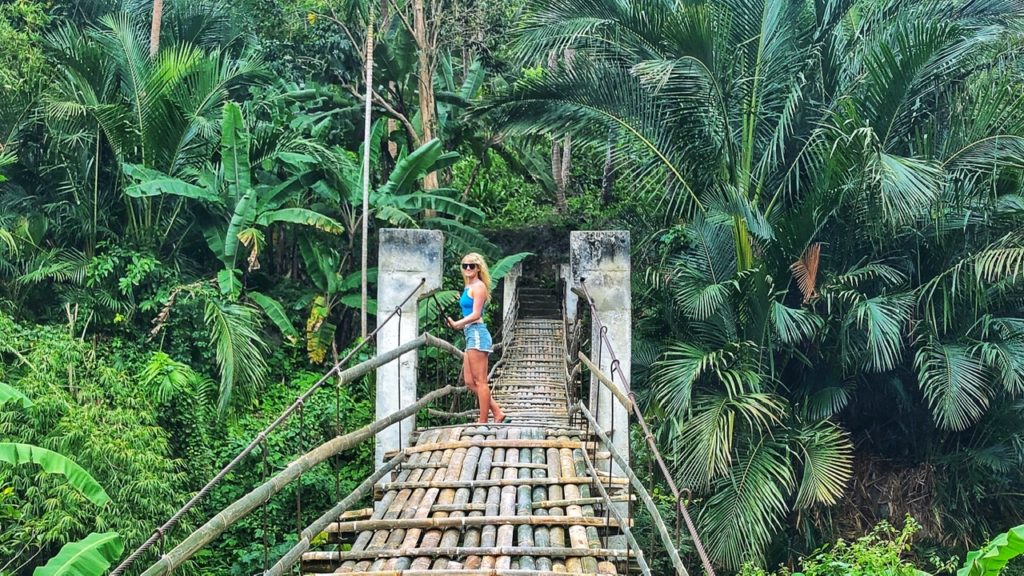
THE HOSTELS
If you’re a backpacker or budget traveler in Southeast Asia, the hostels are the best! And they’re an unbelievable value at $5-7US/night for a dorm room. At the best hostels, this price often includes breakfast, tons of free and fun activities, events, a bar, parties and sometimes a pool. Having a great time and meeting fun people is guaranteed.

YOU NEVER HAVE TO DO ANYTHING FOR YOURSELF AGAIN
Because Southeast Asia is so cheap, you can forget about doing your own laundry, cooking and cleaning. The hostels typically don’t have communal kitchens, so cooking for yourself isn’t even an option because you can get a delicious fresh meal for $1-2US.
And often when you book a bus to another city through your hostel, a tuktuk will pick you up and take you to the bus station. You don’t even have to cut your own fruit because someone will do that for you too. It’s a really nice and appreciated break from all the chores and errands that take up a ton of your time in every day life at home.
The fruit in Southeast Asia is amazing! You’ll find all your basic but delicious tropical fruits like bananas, mangoes and pineapples, but you’ll also find loads of funky and alien fruits like jackfruit (one of my favorites), rambutan, mangosteen, longan, starfruit, dragon fruit, rose apple, custard apple, passion fruit, and the infamous durian.
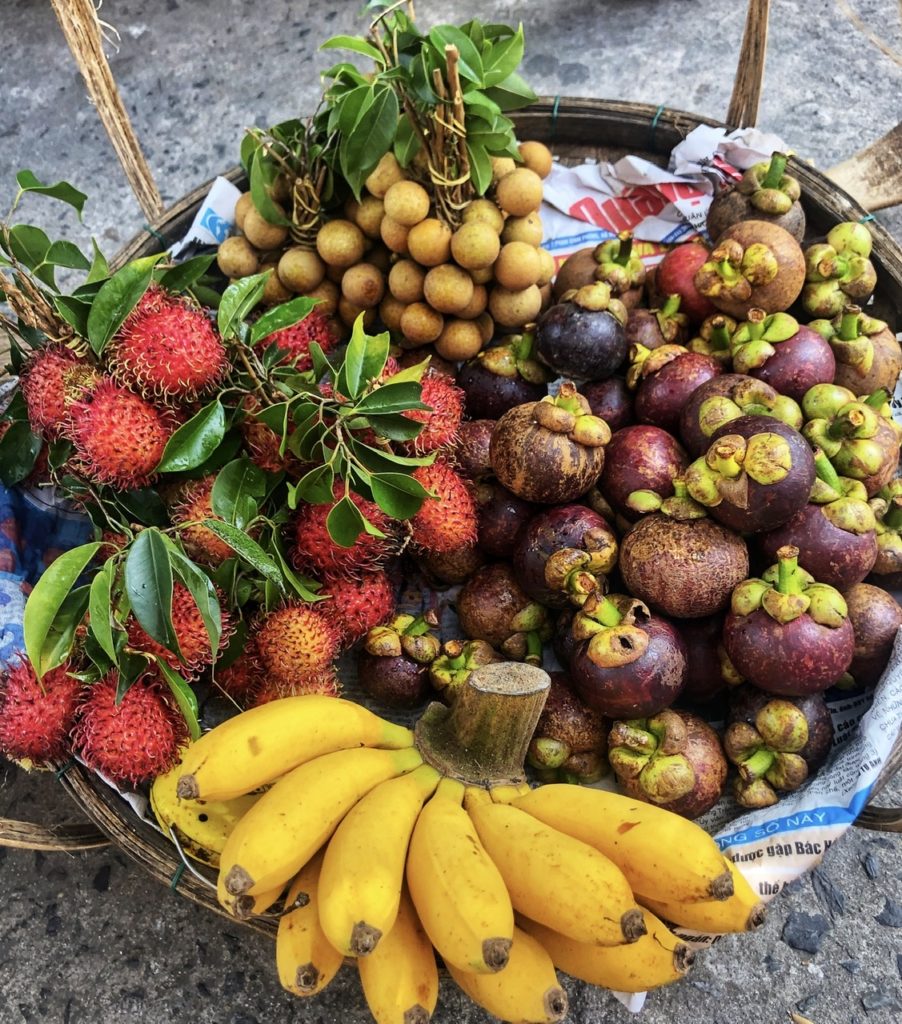
Borneo gets even more extra with its alien fruit selection. This is where you’ll find the best and most unique fruit in Southeast Asia. Some people travel to Borneo purely for the fruit. You’ll find chempedak and terap, which are close relatives of jackfruit (and two of my favorites), as well as many different kinds of durian and much more. See here for more unique Bornean fruits .
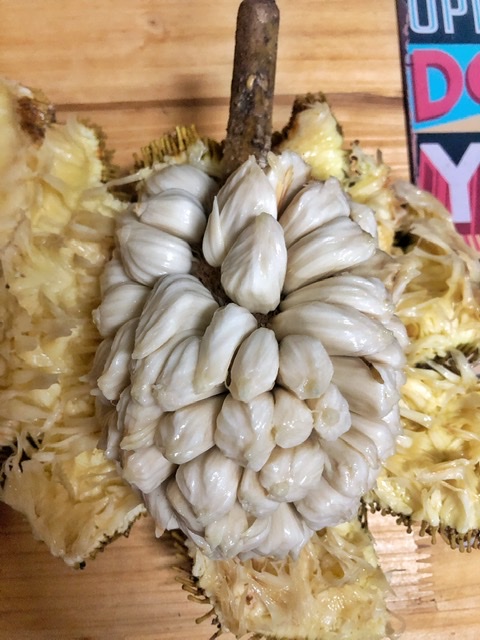
The fruit can be a highlight of your trip, so try them all!
Imagine all the fresh fruit listed above, but in juice and smoothie form.
You also must try fresh coconut water straight from a coconut, which is also great for replenishing electrolytes.
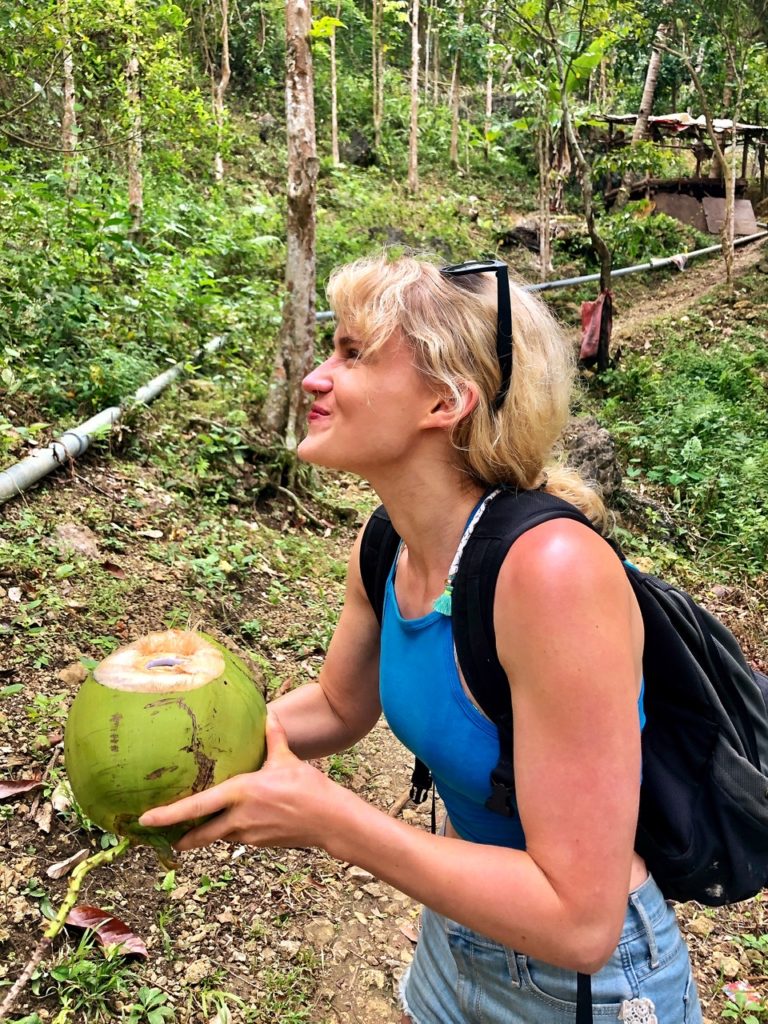
Thai iced tea is very refreshing on a hot and humid day.
Teh tarik (milk tea) in Malaysia is delicious hot or cold.
Coffee lovers will love Indonesian and Vietnamese coffee.
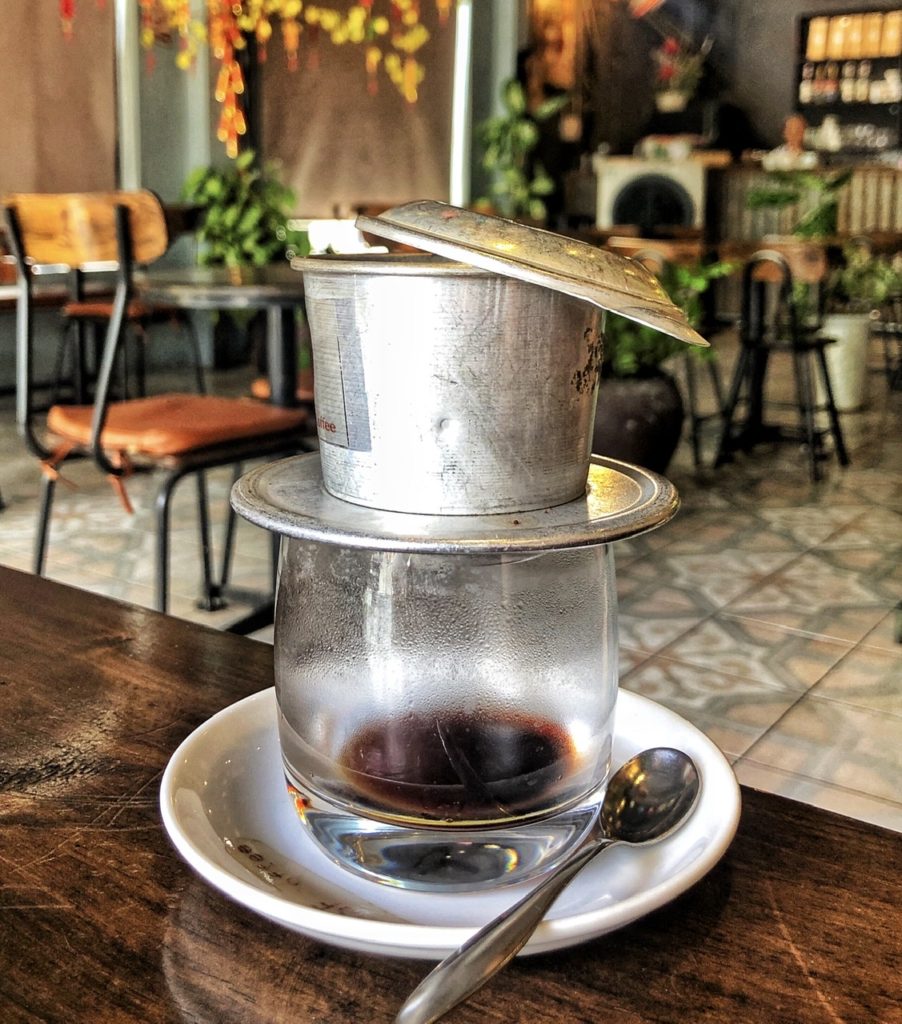
And of course there’s the adult beverages like the notorious buckets in Thailand (literally a beach bucket full of alcohol and a soda mixer), cheap rum in the Philippines, and the cheap local beer.
THE MARKETS
The markets are so full of life, culture, tradition, color and delicious, authentic food. The night markets are lively and the best place for street food.
Observe, eat and buy souvenirs, clothes, textiles, art, jewelry and more.

THE BEACHES
If you’re traveling to Southeast Asia, the beaches are likely high on your list and they do not disappoint. You’ll find the best beaches in Indonesia, the Philippines and Thailand.
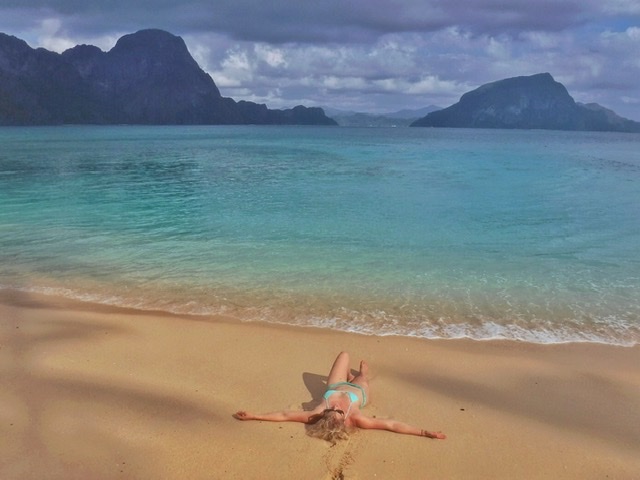
THE SUNSETS AND SUNRISES
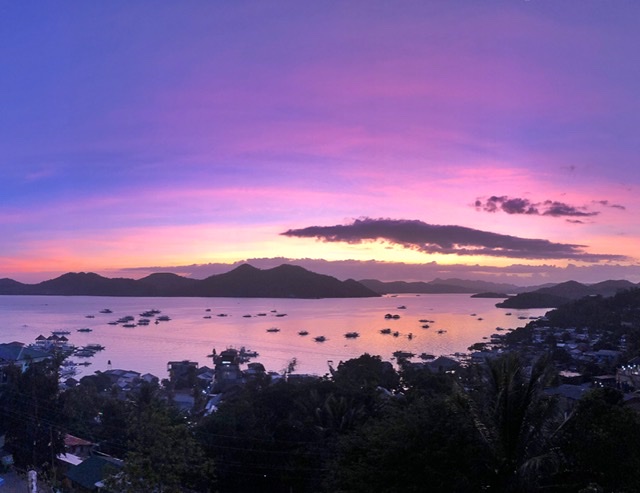
THE SCUBA DIVING AND SNORKELING
It’s a beautiful and very different world underwater and Southeast Asia is spoiled when it comes to underwater scenery and beautiful sea creatures.
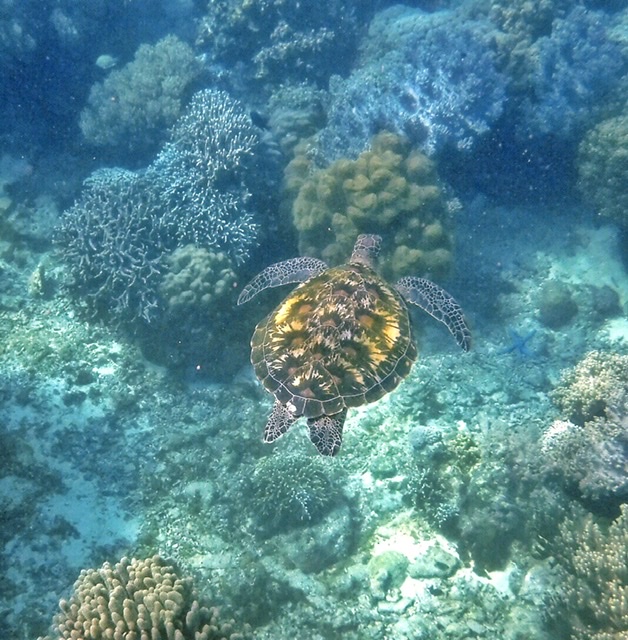
Koh Tao in Thailand is one of the best and cheapest places in the world to learn how to scuba dive. The Perhentian Islands in Malaysia, Komodo in Indonesia, Sipadan in Malaysian Borneo, and Malapascua Island in the Philippines are also great places to scuba dive and snorkel.
LEARNING HOW TO CROSS THE STREET IS A RITE OF PASSAGE
Forget Angkor Wat and Halong Bay. The most impressive sight in Southeast Asia is watching pedestrians cross the hectic streets of the busy cities as hundreds of motorbikes speed toward and around them in every direction. If you’re a fresh off the boat traveler and you see a pedestrian crossing a busy street in these big cities, it legitimately looks like that person is committing suicide because traffic is coming at them from all directions. And there aren’t always traffic lights or crosswalks.
The trick is to walk into the traffic at a steady pace because the drivers are very experienced, so you have to trust that they’ll drive around you. If you panic and stop, that’s when accidents can happen. You can follow locals crossing the street until you feel comfortable crossing on your own.
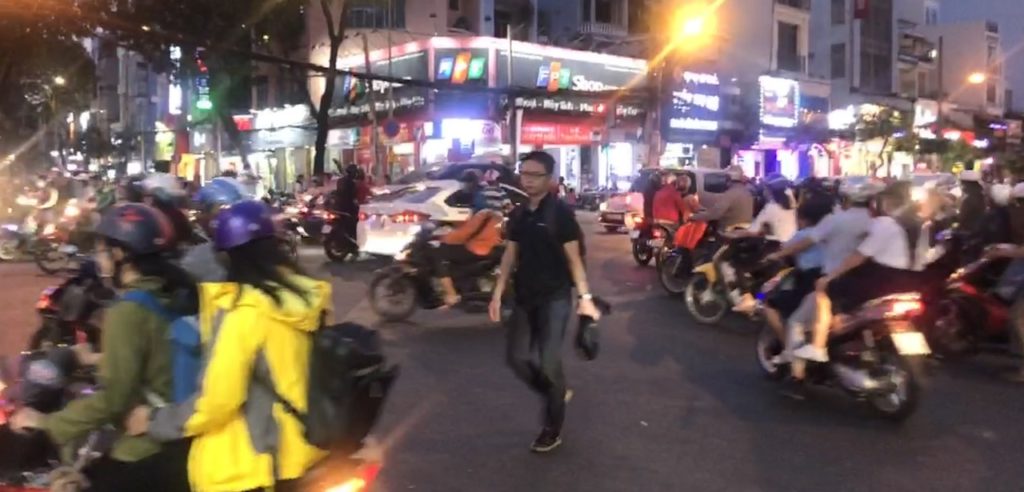
THE MASSAGES
$7US one hour full body massages are a thing in Southeast Asia. The best massages are in Thailand, but many of the other Southeast Asian countries try to copy the Thai massage. Don’t forget to tip your masseuse.
THE ORANGUTANS
These sexy gingers only exist in Southeast Asia, specifically in Sumatra in Indonesia and in Borneo. However, sadly, they are endangered, but there are conservation efforts to help. See what it’s like to visit them in the wild (and get chased by one) in Sumatra, Indonesia here .
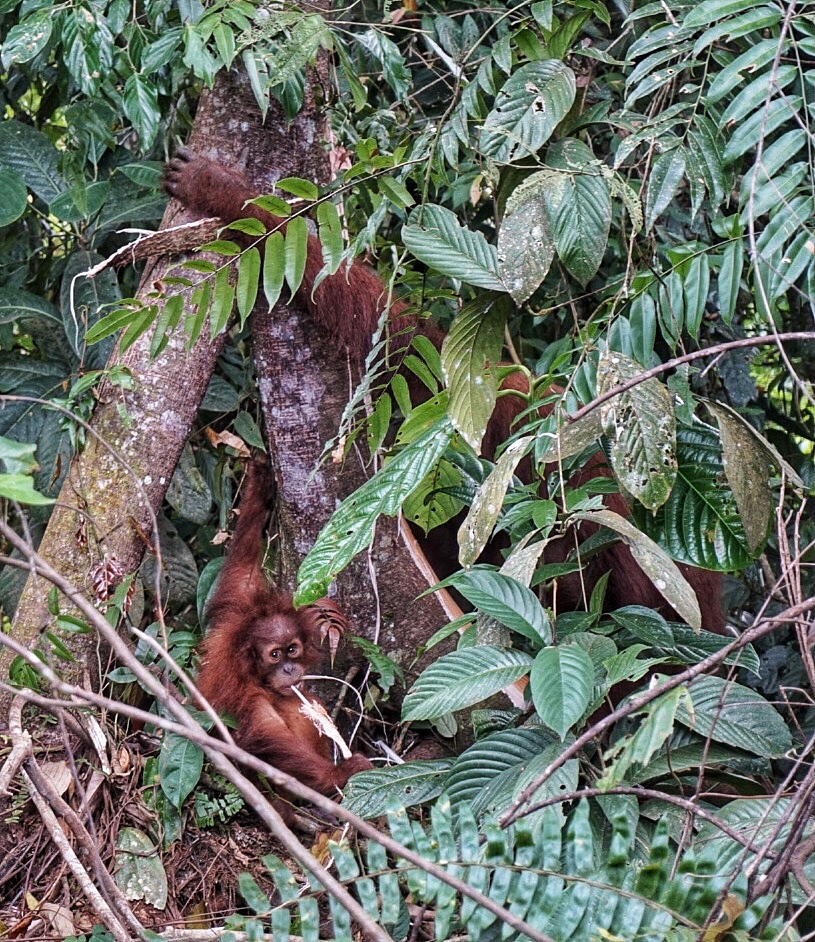
THE TEMPLES
Due to the varied religions in Southeast Asia, you’ll find very diverse temples as well. And the architecture is so beautiful and ornate.
THE BEST TEMPLES IN SOUTHEAST ASIA
Malaysia – Kek Lok Si, Thean Hou, the Batu Caves and the many beautiful mosques
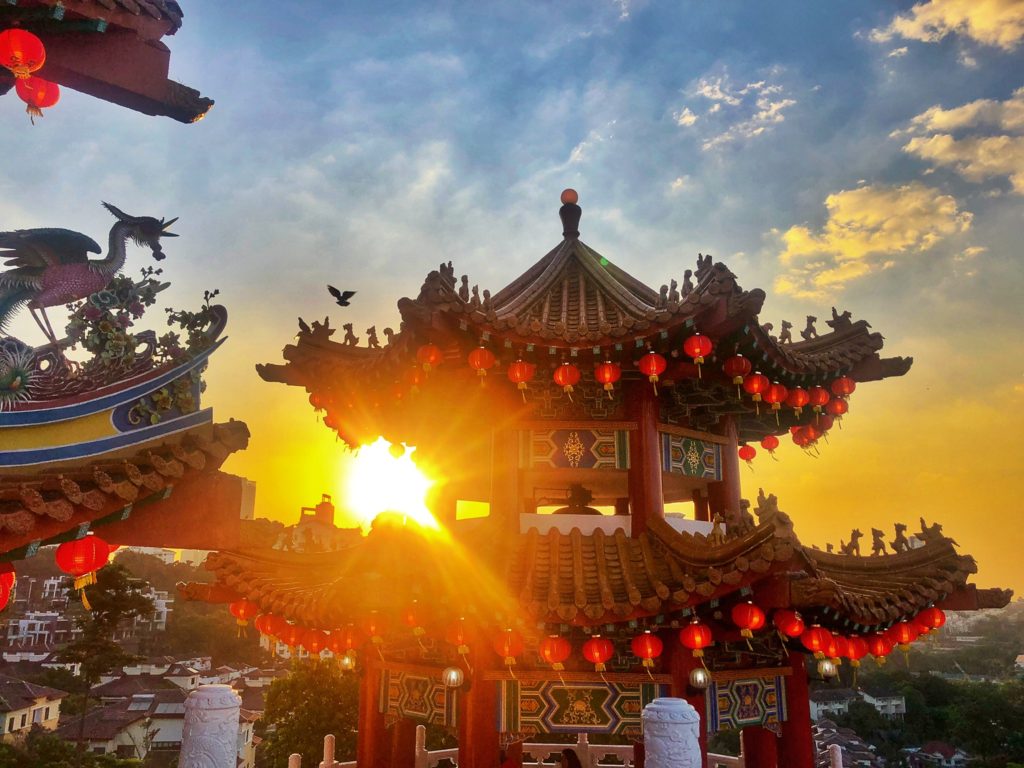
Myanmar – Bagan, Shwedagon, Hsinbyume, and Kyaiktiyo
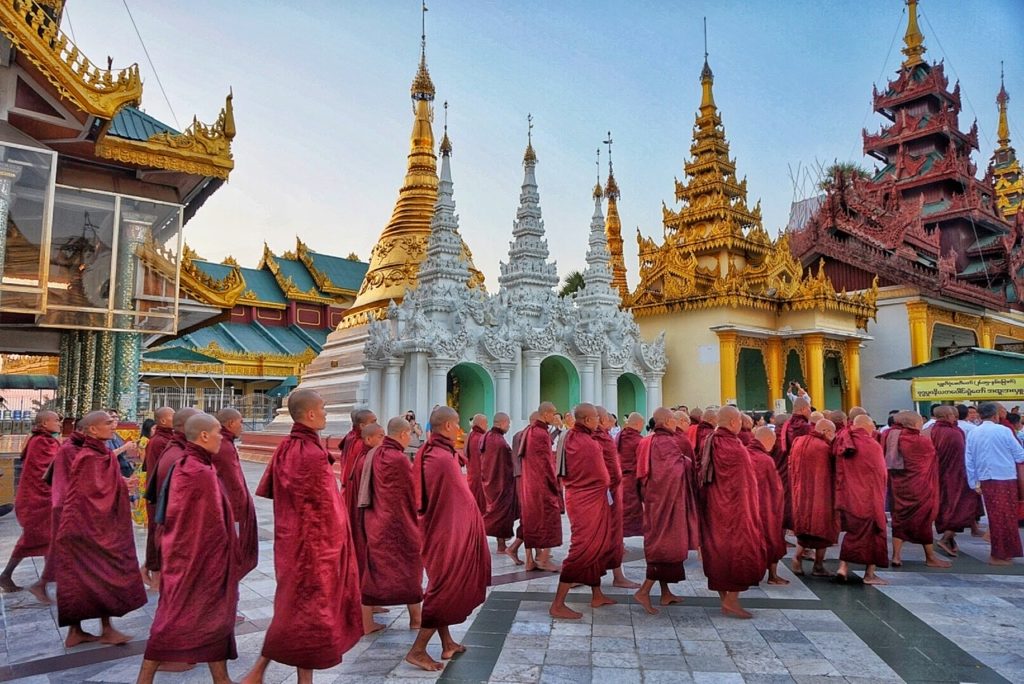
Thailand – Wat Phra Kaew, Wat Pho, Wat Arun, Sukhothai, Ayutthaya, Wat Rong Khun (the white temple), Doi Suthep and the many temples in Chiang Mai
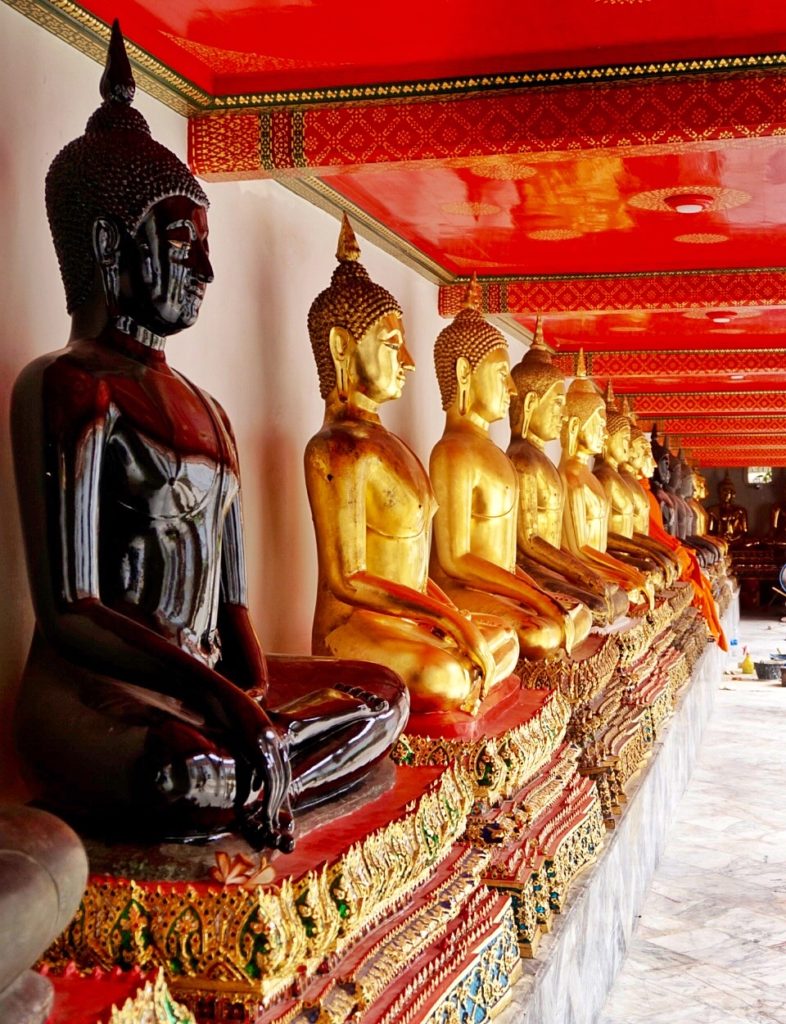
Cambodia – Angkor Wat
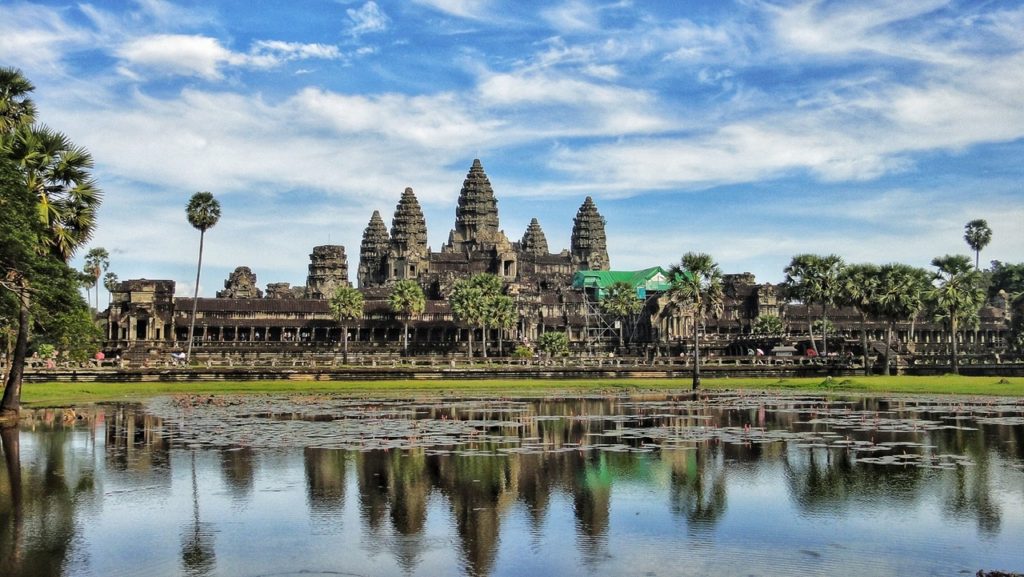
Singapore – Sri Mariamman and Buddha Tooth Relic Temple
Indonesia – Borobodur, Prambanan and the many temples in Bali
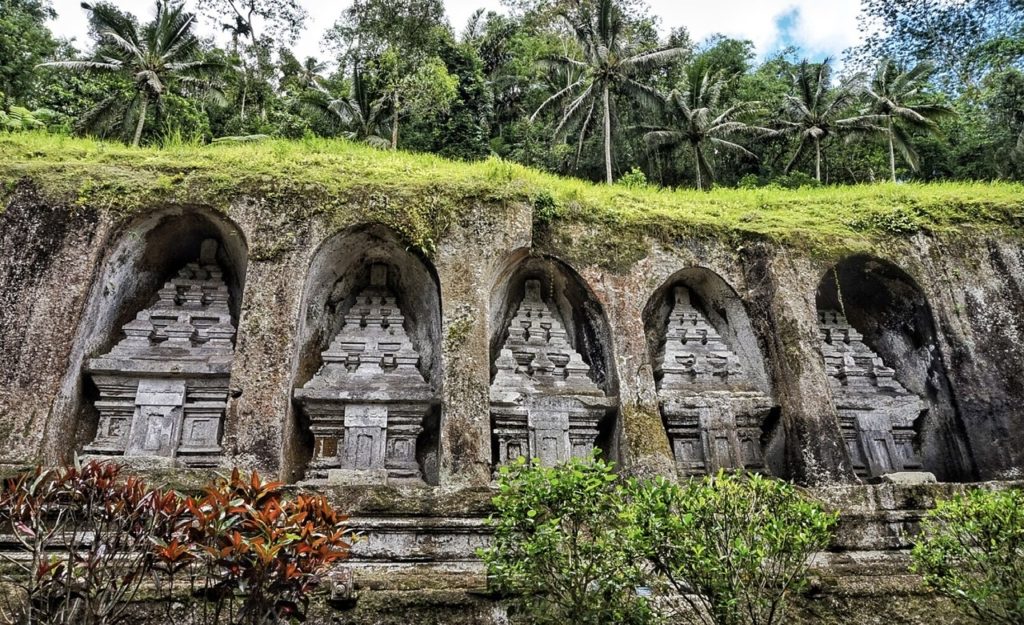
Vietnam – Tran Quoc Pagoda, Temple of Literature, Jade Emperor Pagoda
Laos – Pha That Luang, Xieng Khuan (Buddha Park) and the many temples in Luang Prabang
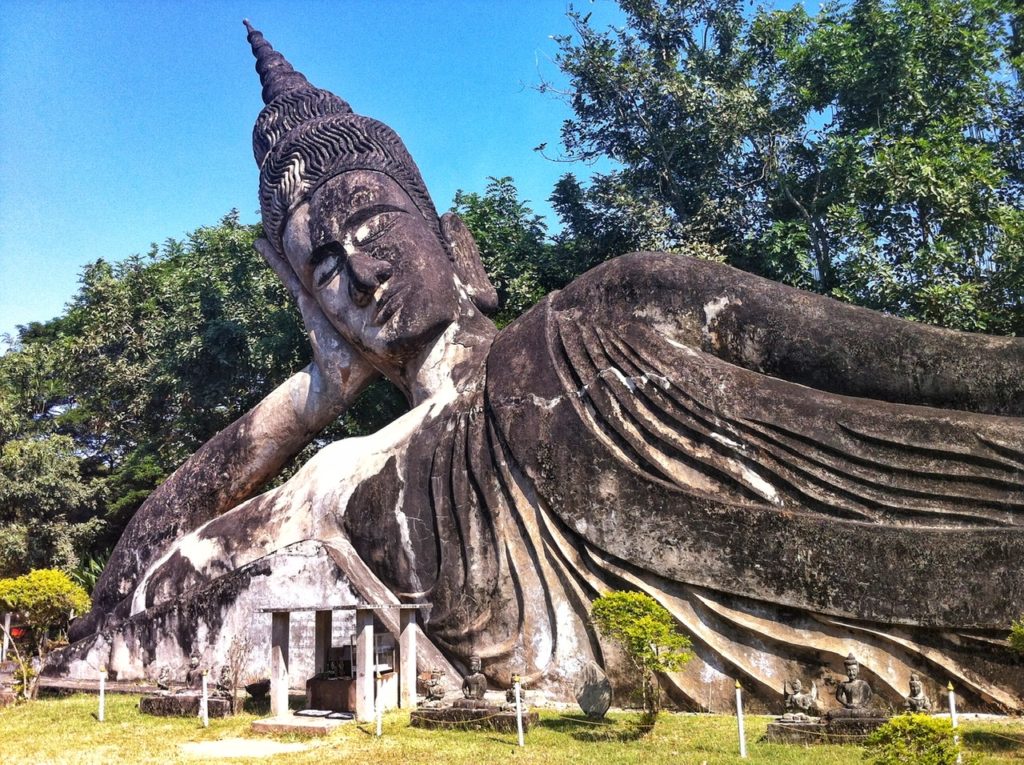
Brunei – Sultan Omar Ali Saifuddin Mosque, Jame’Asr Hassanil Bolkiah Mosque
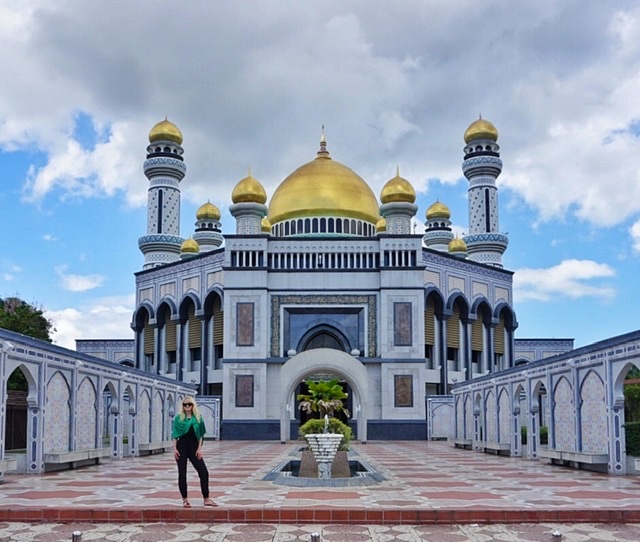
The Philippines – Philippine Chinese Spiritual Temple
Men and women need to dress with covered shoulders and knees to visit the temples. Some popular temples will have coverings you may borrow.
THE ELEPHANTS
You’ll have many encounters with elephants in Southeast Asia and they’re some of the sweetest animals. But please do not ride them because it’s animal cruelty.
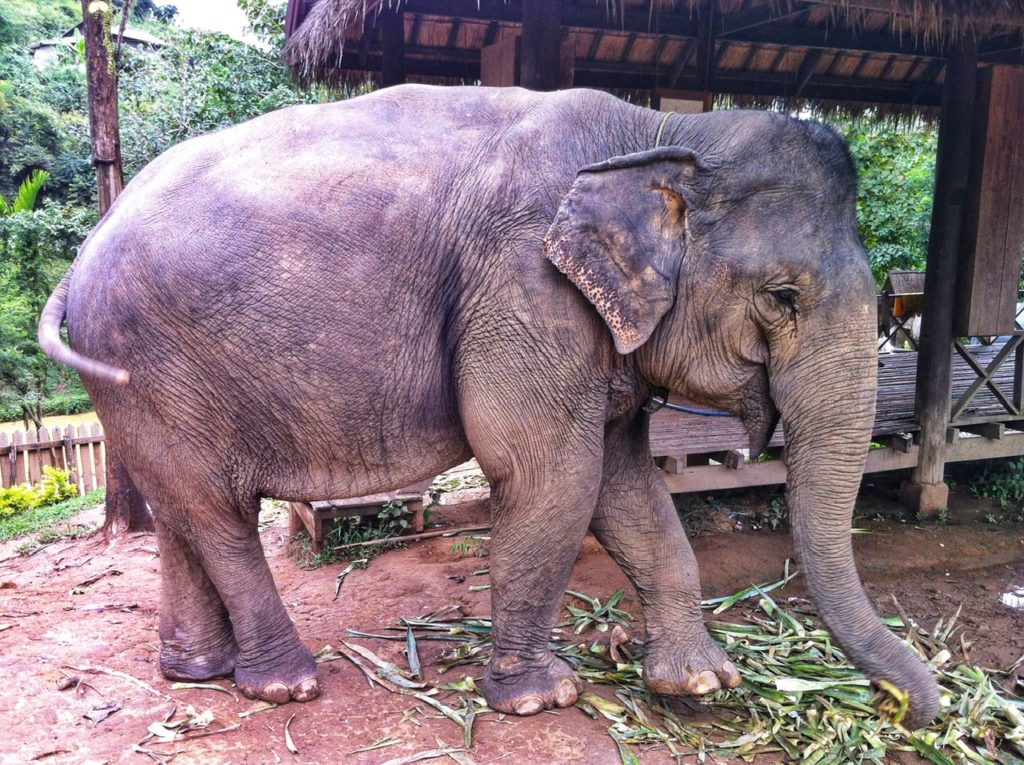
THE NIGHTLIFE
Aside from Myanmar, Brunei and the quiet small towns, Southeast Asia has a great nightlife scene and it’s a lot of fun. And unless you’re visiting fancier upscale places, the bars and clubs aren’t pretentious so there’s no dress code or lineups, which is so refreshing.
Aside from Thailand, which is party central, you can also find great nightlife in Cambodia, Vietnam, Bali, some islands in the Philippines and most of the big cities in Southeast Asia. In Kuala Lumpur, many of the bars have ladies nights where women get free drinks.
THE SHOPPING
Oh the shopping 😍 Southeast Asia is one of the best places in the world to buy clothes, textiles, spices, decor, art and more. I love shopping at the local markets when I’m traveling because all of the unique treasures you buy will remind you of your travels and adventures once you’re back home.
The colors in Southeast Asia are so vibrant and cheerful. Almost everything is colorful- the food, fruit, art, clothing, textiles, scenery, temples, and buildings, etc. It’s an instant mood booster 🙂
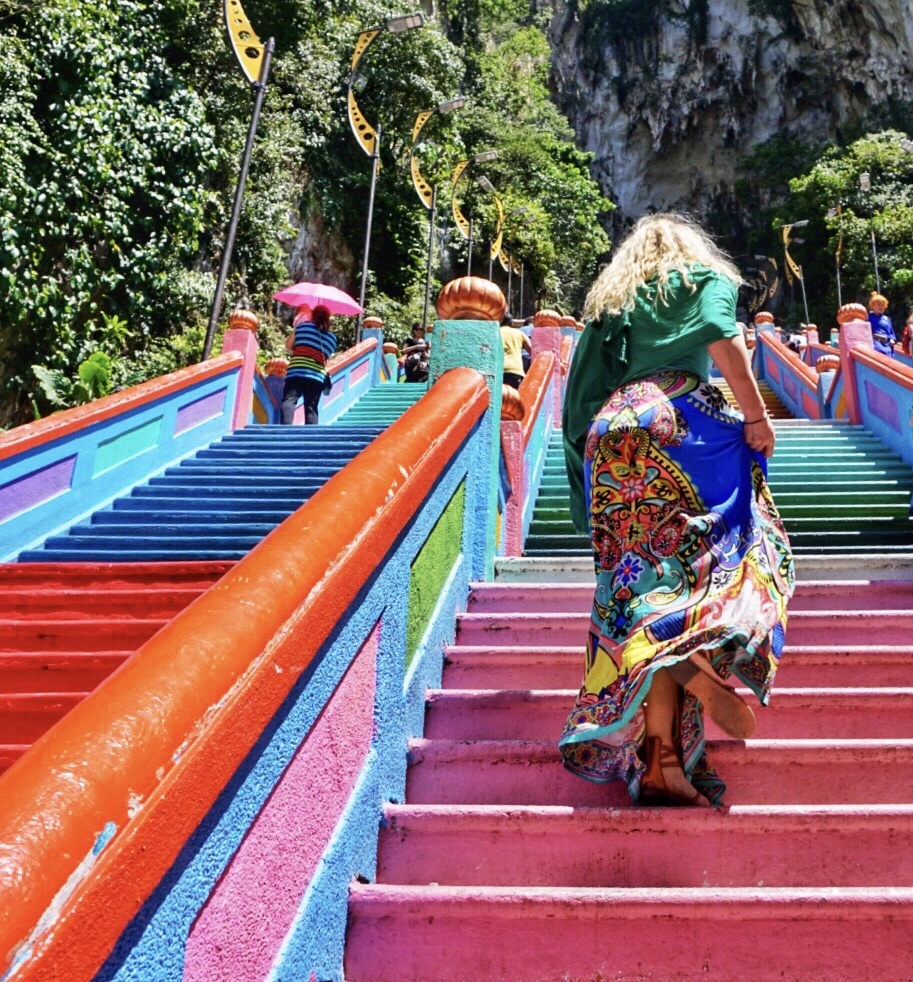
MORE ON TRAVELING SOUTHEAST ASIA
What to Expect While Traveling in Developing Countries
Vietnam – Everything You Need to Know Before You Go
The Ultimate Guide To Singapore on a Budget
How To Stay Safe in Southeast Asia
20 Popular Scams to Avoid in Thailand
Related Posts
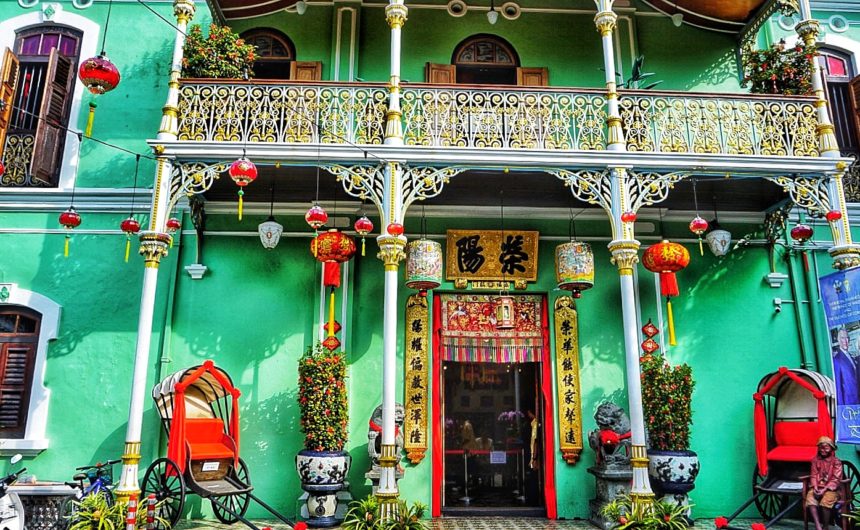
6 thoughts on “ 29 Reasons Why You Must Travel Southeast Asia ”
Looks amazing! I would love to travel around here someday.
It’ll change your life! 🙂
Great post! I can’t wait until I finally get to explore Southeast Asia someday (hopefully). I’m a big coconut fan so that’ll work out smoothly as well 😛
Thanks! You’ll love it
Love your post. Great food is so true, for me it was in Vietnam. The people everywhere were great, some a bit edgy but still nice. Thailand for me was my least favorit, and I still enjoyed it.
Thanks! And thanks for sharing your experiences. Yeah Thailand is extremely touristy unfortunately.
Leave a Reply Cancel reply
Your email address will not be published. Required fields are marked *
Save my name, email, and website in this browser for the next time I comment.
Ultimate Southeast Asia Bucket List: 100+ AMAZING Things to Do (2024)
Planning a trip to Southeast Asia can be overwhelming as there are so many beautiful places to visit and amazing things to do. To get you started I’ve created this epic guide containing over 100 things to see and do in Southeast Asia which are perfect for any Southeast Asia Bucket List . Some of these I have visited and done myself and the rest are destinations and experiences that I have researched and added to my Southeast Asia bucket list.
I have organized this large bucket list by country but I have also created a list of my top 10 places to visit in South East Asia if you are not sure where to start.
Southeast Asia Travel Bucket List (2024)

What Countries are in the Southeast Asia?
Southeast Asia consists of 11 countries in Southeastern Asia: Cambodia, Laos, Vietnam, Myanmar, Thailand, Malaysia, Brunei, East Timor, Indonesia, Philippines and Singapore.
Top 10 Places to Visit in Southeast Asia
Below are my top 10 destinations to visit in Southeast Asia that should be at the very top of your bucket list.
- Angkor Wat, Cambodia.
- Luang Prabang and nearby Kuang Si Waterfalls in Laos.
- Halong Bay in Vietnam.
- Bagan, Myanmar.
- Batad Rice Terraces in Banaue, Philippines.
- Batu Caves near Kuala Lumpur, Malaysia.
- Gardens by the Bay in Singapore.
- Borobudur Temple in Indonesia.
- White Temple in Chiang Rai, Thailand.
- Grand Palace in Bangkok, Thailand.
Southeast Asia Bucket List Experiences by Country
Below are the top bucket list experiences in Southeast Asia grouped by country:
Brunei Bucket List
- See Sultan Omar Ali Saifuddien Mosque and Jame’ Asri Sultan Hassanal Bolkiah, two beautiful mosques located in the capital city of Bandar Seri Begawan.
- Do a homestay at Kampong Ayer, a large network of stilt villages over the Brunei River.
- Visit Istana Nurul Iman (the residence of the Sultan of Brunei and largest residential palace in the world) during the first 3 days of the annual Eid Al-Fitr celebration. This is the only time the inside of the palace is open to the public for three days of the year.
- Visit Ulu Temburong National Park on a day trip from Brunei .
Cambodia Bucket List

- See Angkor Wat at sunrise or sunset .
- Explore Siem Reap.
- Spot Irrawaddy dolphins .
- Visit Kep and Kampot.
- See the Royal Palace and Silver Pagoda at Phnom Penh.
- Bike or drive through the Cardamom Mountains.
- Take a boat up the Sangker River from Siem Reap to Battambang.
- Ride the Bamboo train in Battambang.
Indonesia Bucket List
- See the sunrise and hike up Mount Bromo .

- Hike Mount Batur in Bali at sunrise.
- Get close to monkeys at Ubud Monkey Forest (Sacred Monkey Forest Sanctuary).
- Take a photo on the Bali Swing.
- Visit the Tegallalang Rice Terraces in Ubud.
- Photograph Tanah Lot Temple (one of the largest temples in Bali built on a huge offshore rocks) at sunset.
- Explore Nusa Lembongan by motorbike. Read: Things to Do in Nusa Lembongan & Nusa Ceningan
- Visit Nusa Penida off the coast of Bali. Is is less touristy than the main island. Read: Guide to Nusa Penida, Indonesia
- Spot a Komodo Dragon (the largest lizard in the world) at Komodo National Park. Komodo National Park also has great scuba diving and a pink beach .
- See the ancient monuments in Borobudur, a UNESCO World Heritage site, and the Prambanan temple complex.
- Visit Lombok Island- explore waterfalls and visit the incredible Pink beach.
- Trek to the summit of the active Rinjani volcano (second highest volcano in Indonesia) in time for sunrise.
- Visit the Gili Islands. You can swim with turtles, go wreck diving, and sit on a swing in the ocean.
- Go scuba diving or snorkelling at the Raja Ampat Islands.
- Hike Kawah Ijen Volcano before dawn to see electric blue flames that rise from the crater at night. After the sun comes up admire the turquoise lake in the crater, which is also the world’s largest acidic lake.
- See the three volcanic crater lakes at Kelimutu. They are different colors and the color changes.
- Visit Uluwatu Temple (Uluwatu Pura), perched on a coastal cliff and watch a performance of kecak, a traditional dance. This tour combines both.
- See Lake Toba (or Danau Toba) – the largest lake in Indonesia and the largest volcanic lake in the world.
- Visit the Thousand Islands.
- Go diving with manta rays.
Laos Bucket List

- Explore the beautiful city of Luang Prabang (the entire town is a UNESCO World Heritage site).
- Take a dip at Kuang Si Falls, beautiful waterfalls right outside of Luang Prabang.
- Take the slow boat from Thailand to Luang Prabang.
- Visit Vientiane, the underrated capital of Laos.
- See Pha That Luang or Great Stupa in Vientiane – it is an important national monument in Laos and a national symbol.
- Visit Buddha Park near Vientiane.
- Go river tubing in Vang Vieng .
- Visit Don Det (4,000 Islands).
- Spot a gibbon at Bokeo Nature Reserve.
- See That Ing Hang Stupa in Savannakhet.
- See the Plain of Jars .
- Rent a motorbike to explore the Bolaven Plateau motorbike loop.
Malaysia Bucket List
- Visit Petronas Twin Towers, the world’s tallest twin towers in Kuala Lumpur. Read: The Perfect Itinerary for 3 Days in Kuala Lumpur
- See the Batu Caves. Click here to book a half day tour from Kuala Lumpur.
- See awesome street art in Penang.
- Visit the historical city of Melaka . Click here to book a full day tour from Kuala Lumpur.
- See the Crystal Mosque in Kuala Terengganu, one of the most beautiful mosques in the world.
- Ride the SkyCab cable car and walk across the Sky Bridge in Langkawi. Read: Best Things to do in Langkawi in 3 Days: A Complete Itinerary
- Climb Mount Kinabalu , the highest mountain in Borneo.
- Visit Cameron Highlands known for its tea plantations. Click here to book a full day tour from Kuala Lumpur.
- Visit Tioman Island .
- Go snorkeling or scuba diving at Tunku Abdul Rahman Marine National Park .
- Take a Kinabatangan River Cruise and spot wildlife.
- Visit the Deramakot Forest Reserve .
- Visit Sepilok Orangutan Rehabilitation Center in Sabah.
- Visit the Labuk Bay Proboscis Monkey Sanctuary in Sabah to see proboscis monkeys which are only found in Borneo.
- Visit Bako National Park .
Myanmar (formerly Burma) Bucket List
Warning: Some parts of Myanmar are not safe to visit since the February 2021 military coup and resulting civil war (which is still ongoing). Make sure to do your research if you decide to visit Myanmar now. Otherwise just add these to your bucket list for the future.
- Watch the sunrise and sunset over the temples in Bagan .

- Take a hot air balloon ride over the temples at sunrise in Bagan.
- Take a boat cruise between Bagan and Mandalay.
- See the sunrise at U Bein bridge (the world’s longest teak bridge) in Mandalay.
- Watch the sunset over Mandalay from the top of the Mandalay Hill.
- Visit Inle Lake .
- Take a hot air balloon ride over Inle Lake.
- See the Shwedagon Pagoda at Yangon.
- See the Golden Rock Pagoda (or Kyaiktiyo Pagoda) a small pagoda perched on the top of a boulder covered with gold leaves and an important Buddhist pilgrimage site. Click here to book a tour from Yangon.
- Visit Pindaya Caves full of thousands of gold Buddha statues of various sizes.
- Hang out at Ngapali Beach voted one of the best beaches in Asia by Tripadvisor users.
- See the sunset at Kyauk Maumghnama Pagoda,twin pagodas that sit atop massive boulders right on the beach.
- Take a river cruise on the Irrawaddy river.
- Take a train ride over the Gokteik Viaduct , the highest bridge in Myanmar.
Philippines Bucket List
- Walk through the Batad Rice Terraces in Banaue.
- Visit Palawan. Read: Top 10 Things to Do in Palawan
- Underwater river tour through caves in Puerto Princesa, Palawan.

- See the Chocolate Hills in Bohol.
- Hike Taal Volcano. Click here to book a tour from Manila.
- Visit the capital of Manila .
- Visit the picturesque city of Legazpi.
- Visit the colonial city of Vigan, an UNESCO World Heritage Site .
- Island hopping, snorkeling and canyoning in Cebu. Read: Top 10 things to do in Cebu.
- Go island hopping. There are so many more islands to visit!
- See the hanging coffins of Sagada .
- Go diving at Tubbataha Reefs Natural Park, probably the best place to go diving in the Philippines and one of the best dive sites in Asia according to CNN .
- Go sand boarding in Ilocos Norte.
- Swim with the sea turtles at Apo Island.
- See whale sharks at Donsol.
- Visit Surigao and see the blue Enchanted River .
- Visit Bulusan Volcano Natural Park.
- See Taluksangay Mosque (known for its bright red dome) in Zamboanga.
Singapore Bucket List

- See the nightly light and music show at the futuristic looking Supertree Grove at the Gardens By the Bay.
- See the nightly light and water show at Marina Bay Sands.
- Swim in the world’s largest rooftop infinity pool at the Marina Bay Sands hotel (you need to be a hotel guest to swim in the pool).
- Eat at one of Singapore’s hawker centers .
- Admire the Singapore skyline from a rooftop restaurant or bar like CÉ LA VI Restaurant and SkyBar .
Read: 2 Days in Singapore: The Perfect Itinerary from a Local
Thailand Bucket List
- Visit the Grand Palace and nearby Wat Pho (with its famous Reclining Buddha) and Wat Arun in Bangkok.
- Walk on the infamous Khao San Road in Bangkok.
- Visit the Damnoen Saduak Floating Market , the largest and most famous of Thailand’s iconic floating markets.

- Explore Khao Yai National Park , one of largest and most visited national parks in Thailand and a great place to view wildlife, including gibbons, elephants, deer, bears, macaques and more.
- Visit the the Historic City of Ayutthaya, a UNESCO World Heritage Site .

- Go temple hopping in Chiang Mai .
- Feed and bathe elephants at a responsible and ethical sanctuary like Elephant Nature Park .
- Relax in Pai, a small hippie town.

- See the stunning Wat Rong Khun (also known as White Temple) located near Chiang Rai.
- Ride the Thai-Burma Railway (Death Railway). You can visit on a tour from Bangkok .
- Explore Phang Nga Bay. One of the highlights is James Bond Island (a needle formed limestone rock in the sea featured in the James Bond movie The Man with the Golden Gun).

- Celebrate Yi Peng and Loy Krathong (Lantern Festival) .
- Beach hop and rock climb in Krabi.
- Climb the 1200+ steps to the summit of the Tiger Cave Temple (Wat Tham Suea) in Krabi.
- Take a speedboat to Phi Phi Islands.
- Visit Cheow Lan Lake, a highlight when visiting Khao Sok National Park .
- Get soaked at the Songkran Water Festival .
- Party all night at the beach at a Full Moon Party at Koh Phangan.
Timor-Leste Bucket List
- Visit the uninhabited Jaco (or Jako) Island .
- Visit Dili (the capital).
- Take a day trip to Atauro Island for snorkelling & hiking.
- Climb the 500+ steps to the top of Cristo Rei , a tall statue of Jesus Christ.
Vietnam Bucket List
- Take a Halong Bay Cruise .
- Visit Hanoi. Must see attractions include the Old Quarter, Temple of Literature, Hoa Lo Prison Museum, and Hoan Kiem Lake.
- See the rice fields of Tam Coc, in the picturesque Ninh Binh province. You can visit on a day trip from Hanoi .
- Visit Ho Chi Minh City (formerly Saigon). Must see attractions include the War Remnants Museum and The Independence Palace.
- Take a day trip from Ho Chi Minh City to the Cu Chi Tunnels, and learn about the history of this underground system dug during the Vietnam War. Visitors can experience the tight squeeze firsthand by crawling through the tunnels.
- Explore Hoi An. This city is a full of cheap tailors and is a good place to get affordable custom made clothing.
- Visit Lan Ha Bay surrounding Cat Ba Island – it is just as beautiful but less touristy than Halong Bay.
- Take a river cruise on the Mekong.
- Go trekking in Sapa and meet the local ethnic tribes.
- See the sand dunes in Mui Ne .
- Walk along the new Cau Vang “Golden Bridge” in the Ba Na Hills near Danang. This bridge looks like it is being held up by 2 giant hands.
- Explore the imperial city of Hue, a UNESCO World Heritage site.
- Ha Giang Extreme motorbike loop .
So there you have it – the ultimate Southeast Asia travel bucket list. If there is an experience or place I should include let me know in the comments below!
Planning a trip to Southeast Asia? Click here to book ground and sea transportation tickets online .
Need more travel inspiration? Check out some of my other travel bucket lists:
- Travel Goals: 100 Things to Do Before You Die
- Best Places to Visit in Australia
- Europe Bucket List
- Africa Bucket List
- Ultimate USA Travel Bucket List: 125+ Best Places to Visit in the United States
- Best Places to Visit in South America

Related Posts

savvyglobetrotter
I’ve had my eye on visiting Southeast Asia for a while now but it’s so hard to decide where to go. This gives me an idea what I can expect in each place. Thanks for the suggestions!
Just close your eyes and point to a map – that’s what I do! 🙂
Wow, what a list of things to see and do while in South East Asia! I haven’t ventured to that side of the world (yet…), but when I do I definitely want to do a of these, including the Gardens By The Bay 🙂 x
As somebody who went to Mount Kinabalu I wholeheartedly agree that should be in this top 100!
Leave a Reply Cancel reply
Your email address will not be published. Required fields are marked *

Currently you have JavaScript disabled. In order to post comments, please make sure JavaScript and Cookies are enabled, and reload the page. Click here for instructions on how to enable JavaScript in your browser.
This site uses Akismet to reduce spam. Learn how your comment data is processed .
51 Best Places to Visit in Southeast Asia

- 0 Pinterest
Southeast Asia is an enchanting tapestry of modern cities, ancient wonders and sprawling wilderness.
Think you know it all? Think again. Veering off the tourist trails reveals the true spirit of this diverse region, and trust us, it’s a treasure trove.
Beyond the lively metropolises, you’ll find a mosaic of arts and history, with gems like Borobudur and the Angkor temples. And oh, the cuisine! From street food stalls to upscale eateries, your taste buds are in for a treat.
Natural wonders? They’re in abundance. Halong Bay’s cliffs, Bali’s rice terraces and more are waiting just around the corner.
So, dive deep into the best places to visit in Southeast Asia , where nature and rich heritage blend into a thrilling adventure.
1 – Bangkok, Thailand

In Bangkok, bustling street markets and ancient temples vie for space among towering skyscrapers.
Admire the gilded splendor of the Grand Palace and Wat Arun , and get lost in the labyrinthine Chatuchak Weekend market.
Embark on a delicious food tour in this bustling Asian metropolis, with the options ranging from grabbing a tasty Pad Thai from a roadside stall, to enjoying the growing fine dining scene.
This city of contrasts blends the old with the new, offering explorers an exciting adventure at its heart.
- Bangkok tours
See also: Fun things to do in Bangkok and best day trips from Bangkok
2 – Bali, Indonesia

Bali, the enchanting island of the Gods, where the verdant landscape of terraced rice paddies meets the golden hue of pristine beaches, captivating at every turn.
In this tropical nirvana, the sacred intertwines with the everyday, presenting a unique blend of culture and nature. Delve into the spiritual core of Bali at Tanah Lot and Uluwatu Temples, perched precariously on rugged cliff edges overlooking the Indian Ocean, their mystical charm only amplified by the dramatic sunsets.
Ubud , the cultural heart of the island, invites you to stroll through the vibrant art markets or discover tranquility in the Sacred Monkey Forest. For those in pursuit of serenity, the placid Lake Batur, encased by the towering Mount Batur, provides an idyllic retreat.
Venture to Seminyak and Kuta for an exhilarating mix of lively beach clubs and impressive surf spots.
Feast on a plethora of food experiences in Bali, from warung-served sate to high-end Indonesian fusion cuisine, encapsulating the rich flavors of the archipelago. From rejuvenating yoga retreats amidst lush landscapes to the rhythmic beat of traditional Kecak dance shows , Bali offers a kaleidoscope of experiences that enchant, stimulate, and inspire.
See also: Fun things to do in Bali , Best places to visit in Bali
3 – Phuket, Thailand

Phuket, where the turquoise water hugs the golden sand.
Explore the famous Phi Phi Islands , soak in the vibrant offshore coral gardens, or simply relax on Patong Beach.
The Chinese-Portuguese architecture of Phuket Old Town offers a surprising cultural contrast, while the bustling night market serves up a variety of flavors on a food tour.
Don’t miss the impressive Big Buddha , a symbol of the island’s spirituality. From adventurous water sports to breathtaking sunsets, Phuket promises a diverse and exciting experience.
- Phuket tours
See also: Fun things to do in Phuket , Best boat trips in Phuket with map , Best day trips from Phuket
4 – Luang Prabang, Laos

Located at the confluence of the Mekong and Nam Khan rivers, Luang Prabang is a jewel of history.
The city’s golden temples, such as Wat Xieng Thong, exude peace, while the Royal Palace Museum offers a glimpse into its regal past.
Stroll through the evening handicraft market and don’t miss the magical beauty of Kuang Si Waterfall .
From participating in ceremonies that celebrate dawn to exploring local Laotian cuisine in one of the many food tours!
Luang Prabang offers a soul-soothing retreat.
- Luang Prabang tours
5 – Koh Samui, Thailand

Replete with emerald waters and lush landscapes, Koh Samui is a tropical adventure every day.
Relax on Chaweng Beach and admire the famous Big Buddha temple. Take a sightseeing tour to discover the mysteries of hidden Buddhist gardens tucked away in the hills, or visit the bustling Fisherman’s Village for a taste of local life.
Don’t forget the meal scene, where there are many gastronomic experiences in Ko Samui. From spicy curries at beachside restaurants to international cuisine at luxury resorts, Koh Samui has something for everyone.
- Koh Samui tours
See also: Fun things to do in Koh Samui
6 – Pattaya, Thailand

With azure waters and sunny beaches, Pattaya is a paradise for those seeking both relaxation and adventure.
Admire the stunning Sanctuary of Truth , a testament to Thai craftsmanship, or immerse yourself in the botanical wonderland of Nong Nooch Tropical Garden .
With a vibrant nightlife on the Walking Street and many shows in Pattaya, the city offers an abundance of entertainment
Of course, the bustling Jomtien Night Market offers plenty of delicious food, from the market to fine dining experiences in Pattaya.
Not far from the hustle and bustle of the city, the tranquility of Buddha Mountain awaits.
Indeed, from its bustling city center to its picturesque suburbs, Pattaya has a world to discover.
- Pattaya tours
See also: Fun things to do in Pattaya
7 – Phnom Penh, Cambodia

At the confluence of the Mekong and Tonle Sap rivers, Phnom Penh is a city of vivid contrasts.
Explore the majestic Royal Palace , the solemn Killing Fields , and the Tuol Sleng Genocide Museum , each telling a different story about Cambodia’s past.
Stroll through the bustling Central Market to discover unique handicrafts and savor the city’s delicious cuisine in one of many food tours, a fusion of Khmer traditions and French influences.
Phnom Penh’s vibrant charm and captivating history make for an immersive experience.
- Phnom Penh tours
See also: Fun things to do in Phnom Pehn
8 – Hanoi, Vietnam

Hanoi, a city imbued with age-old architecture and contemporary fervor, presents an eternal charm, making it one of the best places to visit in Southeast Asia.
The narrow streets of the Old Quarter are filled with dynamic energy, echoes of its historic past can be felt in every corner.
The calm waters of Hoan Kiem Lake, the Ho Chi Minh Mausoleum and the peaceful atmosphere of the Temple of Literature speak to the city’s vast heritage.
Enjoy a food tour with steaming hot pho in a bustling street restaurant or watch a traditional water puppet show .
A harmonious blend of French colonial influences and Asian descent, Hanoi captivates and leaves lasting impressions.
- Hanoi tours
See also: Fun things to do in Hanoi
9 – Malacca, Malaysia

Discover a melding of past and present in the historic city of Malacca.
Stroll down Jonker Street, lined with antique shops and night markets, and explore the iconic A’Famosa Fortress and the Dutch-inspired Stadthuys.
Be sure to sample the city’s unique cuisine, a fusion of Malay, Chinese and Portuguese influences.
Malacca, a UNESCO World Heritage Site, is a treasure trove of cultural experiences. From a romantic Malacca River cruise to the colorful costumes at Nyonya dance performances, you’ll encounter a city steeped in heritage.
- Malacca tours
10 – Chiang Mai, Thailand

Under the gaze of majestic Doi Suthep , Chiang Mai offers a peaceful retreat.
Explore the ancient capital, visit tranquil temples such as Wat Chedi Luang, and take traditional cooking classes .
In the evening, stroll through the bustling Warorot Market and discover a new world of flavors with some amazing food tours.
Immerse yourself in its cultural offerings, from the vibrant Songkran Festival to the tranquil Lanna Folk Museum.
Chiang Mai is a city that rewards those who delve deep into its character.
- Chiang Mai tours
See also: Fun things to do in Chiang Mai
11 – Vientiane, Laos

Blending traditional Laotian rhythms with French colonial influences, Vientiane is a fascinating city to explore.
Embark on a city tour to discover the golden glow of the national symbol, Pha That Luang, and the intricate details of Wat Si Saket, the city’s oldest surviving temple.
Stroll through the bustling morning market and admire the Patuxai monument, which is inspired by the Arc de Triomphe.
Don’t miss the opportunity to experience the mesmerizing Mekong River sunset. Vientiane is a multi-sensory city that offers cultural experiences with a relaxed atmosphere.
- Vientiane tours
12 – Siem Reap, Cambodia

The gateway to the majestic Angkor Wat , Siem Reap is a city of wonders.
Explore the spectacular ruins of this ancient temple complex, an architectural marvel that needs no introduction.
Visit a floating village on Tonle Sap Lake or immerse yourself in Cambodia’s art scene at Artisan’s Angkor. Try going on a pub crawl in the Pub Street which is guaranteed to offer a vibrant and unique experience, local markets are brimming with Khmer crafts and flavors, get to know these crafts and flavors on a unique food tour.
More than just a stepping stone to Angkor, Siem Reap is a melting pot of cultures in its own right.
- Siem Reap tours
See also: Fun things to do in Siem Reap
13 – Lombok, Indonesia

A tranquil paradise of turquoise waters and green hills, Lombok offers an idyllic escape.
Hike the majestic Mount Rinjani , soak up the sun on the pristine beaches of the Gili Islands , or discover the indigenous culture at the Sasak village .
With vibrant coral reefs and tranquil waterfalls, Lombok is a place for both adventure and relaxation.
- Lombok tours
See also: Fun things to do in Lombok
14 – Ho Chi Minh City, Vietnam

Past and future converge in Ho Chi Minh City, a metropolis of colonial architecture and sophisticated skyscrapers.
Experience its rich history at the War Remnants Museum and Independence Palace, or explore the maze of Cu Chi Tunnels .
Join a food tour in Ho Chi Minh City to sample fragrant pho or head to Ben Thanh Market for local sweets and trinkets.
From bustling streets to quiet pagodas, Ho Chi Minh City offers an exciting journey of discovery.
- Ho Chi Minh City tours
See also: Fun things to do in Ho Chi Minh CIty
15 – Bohol, Philippines

Easily reached on a day trip from Cebu, Bohol is rich in natural heritage, home to the famous Chocolate Hills and adorable tarsiers.
Stroll along the white sandy beaches, soak in colorful coral gardens and visit the atmospheric Hinagdanan Caves.
A visit to the 16th-century Baclayon Church provides a glimpse into the region’s Spanish influence.
Whether you seek adventure or serenity, Bohol offers a rich island experience.
16 – El Nido, Philippines

Welcome to El Nido, the crown jewel of the Philippines, where limestone cliffs tower majestically over turquoise lagoons, hiding secret beaches and enchanting coves.
Here, an island-hopping boat tour is more than just an activity, it’s a voyage of discovery through an aquatic wonderland. Dive beneath the crystal-clear waters to explore an underwater paradise teeming with vibrant coral reefs and diverse marine life.
Immerse yourself in the tranquility of the hidden lagoons, and make sure to book a sightseeing tour so you don’t miss this one!
Where the silence is broken only by the soft lapping of azure waters against the kayak. Traverse the lush trails of Cadlao Island for panoramic vistas that capture the raw beauty of this tropical utopia.
As the sun dips, dine on fresh catch-of-the-day, grilled to perfection under a canopy of stars.
From the awe-inspiring Big Lagoon to the shimmering sands of Nacpan Beach, El Nido is a spicy cocktail of adventure and relaxation that leaves you yearning for another sip.
- El Nido tours
17 – Kuala Lumpur, Malaysia

Under a skyline dotted with glittering skyscrapers, Kuala Lumpur thrives.
The Petronas Twin Towers , a symbol of Malaysia`s ambition, soar over the city, while beneath, bustling street markets like Jalan Alor burst with flavor and color.
Don’t forget to stroll through the historic streets of the Old Town and the historic ‘Merdeka Square’.
Grab a bite of Indian Curry on a food tour, experience a mix of cultures with a Chinese temple there and a Malay art gallery just nearby.
For a different experience, Leave the city behind and venture to Batu Caves , a sanctuary of nature and spirituality.
Kuala Lumpur’s diversity is truly a feast for the senses.
- Kuala Lumpur tours
See also: Fun things to do in Kuala Lumpur
18 – Penang, Malaysia

Unparalleled exploration awaits in the heart of Penang, where multicultural heritage comes alive.
Explore the UNESCO World Heritage Site of George Town, where colonial architecture and street art tell the story of the city’s past.
Discover the spiritual side of Penang at the gorgeous Kek Lok Si Temple , a hilltop sanctuary of tranquility. Let your taste buds lead the way as Gurney Drive is famous for its delicious street food gastronomic experiences.
A melting pot of traditions, cultures and cuisines, Penang offers a unique blend of experiences for every traveler.
- Penang tours
See also: Fun things to do in Penang
19 – Krabi, Thailand

Krabi is a seaside paradise with limestone cliffs jutting into emerald waters, perfect for beach lovers.
Go island hopping in the Andaman Sea, sunbathe on the shores of Railay Beach or explore the charming Thung Teao Forest Nature Park.
Dive into vibrant coral reefs or hike to Tiger Cave Temple for panoramic views.
Combining adventure and relaxation, Krabi is a must-visit destination.
- Krabi tours
See also: Fun things to do in Krabi
20 – Singapore

From its futuristic gardens to its towering skyscrapers, Singapore is a wonder that bridge East and West.
Explore the diverse neighborhoods of Little India , the vibrant colors of Chinatown , and the historic shops and vibrant nightlife of Clark’s Quay, with many music and shows, creating an enchanting cityscape.
Marina Bay Sands and Supertree Grove at Gardens by the Bay are must-sees.
Don’t forget the Hawker Centre, where you can enjoy myriad flavors. Singapore is much more than just its skyline. A hidden gem awaits the adventurous.
See also: Fun things to do in Singapore
- Singapore tours
21 – Langkawi, Malaysia

An archipelago of 99 islands, Langkawi offers a buffet of natural and cultural attractions.
Climb a skybridge or ride the Langkawi Cable Car for panoramic views or explore the mesmerizing mangroves at Kilim Geoforest Park.
Immerse yourself in local legends at Eagle Square or relax on the sandy beaches of Pantai Cenang.
With its diverse landscapes and bustling night markets, Langkawi offers a wide range of experiences.
- Langkawi tours
See also: Fun things to do in Langkawi
22 – Hoi An, Vietnam

Hoi An is alive with history and culture, with lantern-lit streets and centuries-old architecture.
Stroll through the ancient city, a UNESCO World Heritage Site, or explore the lush rice paddies nearby.
A cooking class introduces you to the culinary heart of Vietnam as you cruise along the Thu Bon River and enjoy the beautiful scenery.
With the vibrant streets of Da Nang and the imperial majesty of Hue just a short drive away, a visit to Hoi An promises a rich experience.
- Hoi An tours
See also: Fun things to do in Hoi An
23 – Sihanoukville, Cambodia

Sihanoukville, where the Khmer spirit blends seamlessly with pristine natural beauty, is a beach lover’s paradise nestled in South West of Cambodia.
Saunter along the soft, white sands of Otres Beach, where the turquoise waves of the Gulf of Thailand whisper tales of serenity.
Witness the golden sun sinking into the ocean’s embrace from the lively Serendipity Beach, dotted with vibrant beach bars.
Go on a food tour and indulge in the flavors of Khmer cuisine at local markets or beachfront eateries, savoring everything from amok to kampot pepper crab. From fiery sunsets to fiery curries, Sihanoukville provides a tantalizing escape that sets the senses alight.
- Sihanoukville tours
24 – Vang Vieng, Laos

Beneath towering karst peaks, Vang Vieng captivates with its wild beauty.
Go on a kayaking tour along the serpentine Nam Song River, explore the mystical Tham Phu Kham Cave, or seek the thrill of rock-climbing.
Dine on fiery Laotian cuisine, setting your senses ablaze, or relax at a riverside bar under a sunset-painted sky.
From adrenaline-fueled exploits to its pulsating nightlife, Vang Vieng promises an intoxicating adventure, the perfect blend of natural allure and exciting escapades.
- Vang Vieng tours
25 – Ko Lipe, Thailand

A jewel in the Andaman Sea, Koh Lipe promises a paradisical retreat.
Snorkel among vibrant coral reefs, lounge on powdery beaches and explore the local Chao Lay community for an authentic experience.
Small but abundant, Koh Lipe is a peaceful escape from the hustle and bustle of everyday life.
26 – Yangon, Myanmar

Yangon, one of the best places to visit in Southeast Asia, is a city that captivates with its blend of British colonial architecture, radiant pagodas, and diverse experiences.
Be awestruck by the golden splendor of Shwedagon Pagoda , immerse yourself in the lively energy of Bogyoke Market in one of the many food tours, and find tranquility by the serene Kandawgyi Lake.
As Myanmar’s largest city, Yangon effortlessly merges the pulse of modern life with deep-rooted culture and history, offering an authentic peek into the heart of this enchanting country.
- Yangon tours
27 – Boracay, Philippines

Nestled in the azure waters of the Western Visayas region, Boracay is a tropical paradise known for its powdery white sand beaches and crystal-clear waters.
Beyond its vibrant nightlife and watersports, there are many attractions waiting to be discovered.
Explore the stunning beauty of Puka Shell Beach, a tranquil retreat known for its unique shells, or visit the tranquil Ilig Iligan Beach, a hidden gem perfect for snorkeling tours.
For panoramic views of the island, a hike to Mount Luho, the island’s highest peak, is a must see. Experience the excitement of kitesurfing at Bulabog Beach. Embark on a mesmerizing paragliding experience at sunset and admire the breathtaking colors of the sky.
After a long day, enjoy fresh seafood at the D’Talipapa Market. Choose your meal at the bustling seafood bazaar. From adventures to tranquil excursions, Boracay offers wealth of experiences for all types of travelers.
- Boracay tours
28 – Sa Pa, Vietnam

Located in the northern highlands of Vietnam, Sa Pa is a perfect blend of natural wonder and cultural diversity.
A mosaic of rolling hills, rice terraces and rugged mountain peaks create a landscape of magical beauty.
Trek through the Muong Hoa Valley and marvel at the majestic Fansipan, the roof of Indochina.
Experience local life in the rustic villages of Tapin and Cat Cat, home to Red Dao and Hmong communities, where centuries-old traditions are still part of daily life.
Don’t miss the bustling Sapa Market, embark on a food tour, which features a colorful display of local handicrafts and fresh produce.
Boasting stunning landscapes and rich culture, Sapa is a paradise of discovery.
- Sa Pa tours
29 – Bagan, Myanmar

Step into the timeless world of Bagan, where more than 2,000 ancient pagodas and temples dot the skyline.
Pass the impressive Ananda Temple or climb Shwesandaw Pagoda for a breathtaking sunset. Beyond its spiritual heritage, Bagan also offers opportunities to explore traditional Burmese handicrafts at morning markets.
Visit Mount Popa , an extinct volcano with a monastery atop it, or delve into Bagan’s rich history at the Archaeological Museum.
Looking for a unique experience? Book a sunrise hot air balloon ride over Bagan temples.
- Bagan tours
30 – Borneo, Malaysia

Heed the call of the wild in Borneo, a nature lover’s paradise.
Hike through the dense rainforest of Danum Valley, home to diverse wildlife including orangutans, pygmy elephants and clouded leopards.
Visit the sacred summit of Mount Kinabalu or step into the underground wonders of Deer Cave.
Immerse yourself in the vibrant seas of Sipadan Island or float down the Kinabatangan River to see the wildlife along the coast. Experience the unique culture of the indigenous people at the Sarawak Cultural Village.
Rich in biodiversity and traditional heritage, Borneo promises unforgettable adventures.
31 – Kuantan, Malaysia

Discover a charming sanctuary in Kuantan, where sparkling beaches and a rich heritage beckon visitors.
Soak up the sun at Teluk Chempedak, visit the magnificent Sultan Ahmad Shah State Mosque.
Enjoy rich local cuisine at night markets and take a river cruise through mangrove forests.
Kuantan offers an exhilarating journey that combines natural beauty with cultural experiences.
- Kuantan tours
32 – Palawan, Philippines

An oasis of pristine beaches and azure waters, Palawan will enchant any explorer.
Discover the UNESCO-listed underground rivers of Puerto Princesa and the spectacular lagoons of El Nido.
Dive in the middle of Tubbataha Reef or immerse yourself in the culture of local tribes.
Seek ultimate tranquility and relax on the shores of Coron Island. With its diverse marine life and breathtaking scenery, Palawan is a tropical utopia.
- Palawan tours
See also: Fun things to do in Puerto Princesa
33 – Kuching, Malaysia

Offering a medley of culture and history, the city of Kuching is a fascinating travel destination.
Visit the Sarawak Museum, the bustling Main Bazaar and the graceful Kuching Mosque.
Stroll along the waterfront, taste Sarawak Laksa and explore Bako National Park.
A gateway to modern city life and pristine nature, Kuching has a variety of attractions to satisfy any curiosity.
- Kuching tours
34 – Nusa Islands, Indonesia

A charming trio near Bali, the Nusa Islands are a treasure trove of natural wonders.
From the pristine beaches of Nusa Lembongan to the rugged cliffs of Nusa Penida and the serene atmosphere of Ceningan Island, each isle has its own charm.
Swim with manta rays, explore the Blue Lagoon, or climb the Kelingking ‘T-rex’ cliffs for panoramic views.
The Nusa Islands promise an unforgettable island-hopping adventure.
See also: Best boat trips in Bali
35 – Komodo, Indonesia

With its roaming dragons and sparkling pink beaches, Komodo is a world of adventure.
Come face-to-face with ancient Komodo dragons, dive into the colorful underwater world of the Coral Triangle and navigate rugged terrain.
Swim in the crystal-clear waters of Pink Beach or hike to Padar Island for breathtaking views.
Komodo is more than just a tourist destination. It’s a leap into the realm where nature reigns supreme.
36 – Perhentian Island, Malaysia

The Perhentian Islands rank high on the list of the best places to visit in Southeast Asia, especially for those who adore coastal retreats.
Especially for those who love seaside hideaways. Immerse yourself in the vibrancy of coral reefs with snorkeling, see vibrant marine life with a dive or find tranquility on picturesque beaches.
These islands cater to adventure seekers and peace seekers alike. Create an enchanting vacation and add a touch of magic to your Southeast Asian trip.
37 – Yogyakarta, Indonesia

Yogyakarta is a city where tradition melds with modernity to create a rich culture.
Explore the magnificence of Borobudur Temple , the world’s largest Buddhist monument, or discover the intricacies of Hindu mythology at Prambanan Temple .
Wander the bustling streets, sample local delicacies and soak up Javanese art at bustling markets.
Yogyakarta is a journey into the soul of Indonesia.
- Yogyakarta tours
See also: Fun & unusual things to do in Yogyakarta, Indonesia
38 – Kanchanaburi, Thailand

A city full of history and natural beauty, Kanchanaburi is a captivating travel destination.
Visit the solemn Death Railway and the moving War Cemetery, symbols of its wartime past.
From admiring the beauty of the seven-tiered Erawan Waterfall to exploring the ancient ruins of Prasat Muang Singh, Kanchanaburi offers a deep dive into Thailand’s past and its enchanting landscapes.
- Kanchanaburi tours
39 – Phú Quốc, Vietnam

With its tropical forests meeting white-sand beaches, Phu Quoc may look like something out of a dream. But this island is even more spectacular than you could imagine.
Discover the magical beauty of Suoi Chan Waterfall, immerse yourself in a food tour at Duong Dong Market, and learn about the island’s past at the Phu Quoc Prison Museum.
Dive among vibrant coral reefs, relax on the scenic Bai Sao Beach and enjoy fresh seafood at Ham Ninh Fishing Village.
Don’t forget to visit the local pepper plantations and the famous Phu Quoc National Park. With its laid-back charm and pristine beauty, Phu Quoc is a hidden paradise waiting to be discovered.
- Phú Quốc tours
See also: Fun & unusual things to do in Phu Quoc, Vietnam
40 – Ko Pha Ngan, Thailand

An island where full moon parties light up the night and quiet beaches soothe the soul, Koh Pha Ngan is a dream destination.
Dance under the stars at Haad Rin, rejuvenate at a yoga retreat or immerse yourself in the colorful underwater world around Sail Rock.
Explore the lush Than Sadet National Park or seek tranquility at Wat Phu Khao Noi.
Enjoy fresh seafood at Thong Sala Night Market and go on a kayaking tour at Aonai Wok. Whether you’re looking for a party, nature or spiritual exploration, Koh Pha Ngan offers a variety of exciting experiences.
- Ko Pha Ngan tours
41 – Ha Long, Vietnam

Ha Long Bay is a natural wonder, with thousands of limestone karsts rising from emerald waters.
Cruise among picturesque islands, explore the fascinating Sung Sot Caves and visit floating villages.
From kayaking tours through towering karst terrain to hiking in Cat Ba National Park, Ha Long Bay offers a dreamy trip through Vietnam’s iconic landscapes.
- Ha Long tours
See also: Best Ha Long Bay luxury cruises
42 – Ko Chang, Thailand

An island of serene beauty where rainforests cover rugged mountains and white sandy beaches spill into azure waters, Koh Chang is a breathtaking spectacle.
Explore the dense trails of Mu Koh Chang National Park, dive into the mesmerizing Klong Phlu Waterfall or simply soak up the sun on the beach.
Adventure-seekers can immerse themselves among vibrant coral reefs, while tranquility-seekers can find peace in quiet fishing villages.
From seafood festivals to elephant trekking and firefly watching at Salak Phet, Koh Chang is an island full of diverse attractions just waiting to be discovered.
- Ko Chang tours
43 – Phi Phi Islands, Thailand

With emerald waters crashing against stunning limestone cliffs, the Phi Phi Islands offer a captivating cocktail of beauty and adventure.
Explore enchanting Maya Bay, snorkel the colorful reefs, or hike to Phi Phi Viewpoint for breathtaking views.
Relax at Monkey Beach or dance the night away at the lively beach bars. Combining leisure and thrills, the idyllic Phi Phi Islands will leave you wanting more.
44 – Hua Hin, Thailand

Royal tradition? Enchanting beaches? Hua Hin has it all.
Book a food tour and stroll through the bustling night market, walk along the historic Hua Hin Train Station and visit the Mrigadayavan Palace.
Relax on Hua Hin’s pristine beaches, play a round of golf or explore the breathtaking Phraya Nakhon Caves.
Offering a relaxed atmosphere and a touch of luxury, Hua Hin is a unique seaside experience.
- Hua Hin tours
45 – Mui Ne, Vietnam

A seaside gem where rusty hills mingle with turquoise waters, Mui Ne promises an unforgettable vacation.
Explore otherworldly landscapes of white and red sand dunes, visit Fairy Stream, and explore local fishing villages.
Kitesurf over the vibrant waters or sample the region’s freshest seafood.
Mui Ne is an oasis of tranquil scenery and exhilarating experiences.
46 – Raja Ampat, Indonesia

An archipelago of colorful biodiversity, Raja Ampat is a diver’s paradise.
Admire the diverse marine life, explore Mysore Island or sail to the enchanting Pianemo Islands.
Hike through lush rainforest to see unique wildlife and discover the ancient petroglyphs of Misool.
Raja Ampat offers unparalleled underwater exploration and awe-inspiring natural beauty.
See also: Most beautiful places in Asia
47 – Panay, Philippines

There’s always something new to discover on Panay Island, whether it’s cultural traditions or natural wonders.
Wander the enchanting streets of Iloilo City, hike to the breathtaking Nadsadjan Falls, or explore the scenic rice terraces of Banaue.
Don’t miss Kalibo’s vibrant Ati Atihan Festival, a colorful celebration of the island’s indigenous culture.
A fascinating blend of history, nature and culture, Panay is rich in experiences.
- Panay tours
48 – Kampot, Cambodia

Kampot is a city of subtle charm that blends Cambodian countryside tranquility with French colonial influence.
Wander the quiet streets, sail the Kampot River and explore the mystical Phnom Chung Ngok Cave Temple.
Taste the famous Kampot peppers from a local farm and don’t forget to learn about the city’s vibrant food scene.
Kampot is a peaceful escape from the hustle and bustle of modern life, offering an enchanting glimpse into Cambodia.
49 – Sarawak, Malaysia

In the land where verdant rainforests play host to a symphony of wildlife, Sarawak is a dream for the intrepid explorer.
Make your way to Niah National Park, where the grand Niah Cave awaits. Venture into this prehistoric wonder, where ancient cave paintings and archeological discoveries whisper tales of civilizations past. The cave’s immense chambers and surreal stalactite formations are nothing short of awe-inspiring.
Feast on a medley of flavors at a local hawker center, where Sarawak laksa and kolo mee offer a tantalizing taste of the region’s culinary diversity. Whether you’re a nature enthusiast, a history buff, or a foodie, Sarawak, with its cultural tapestry and natural splendor, provides a captivating adventure that defies expectations.
- Sarawak tours
50 – Cebu, Philippines

Where cerulean seas caress sugar-white beaches, Cebu is a tropical dream brought to life. This Philippine gem is a confluence of diverse experiences that set the senses ablaze.
Wander through the remnants of history in Fort San Pedro, where stone walls whisper tales of the past. Immerse in the city’s fervor at the Basilica Minore del Santo Niño, especially during the vibrant Sinulog Festival.
But Cebu’s allure extends beyond the city’s bounds. Embark on a journey to Kawasan Falls , a cascading spectacle of pure nature nestled amidst verdant jungles. Dive into the clear waters of Moalboal, where swirling sardine shoals create an underwater spectacle.
Tantalize your taste buds with lechon, the island’s spicy, succulent roast pig, a gastronomic delight that’s equally fiery and addictive.
From the energetic beats of local street dances to the tranquil moments on secluded beaches, Cebu offers a sizzling blend of adventure, culture, and culinary wonders.
See also: Fun things to do in Cebu
51 – Koh Lanta, Thailand

Ah, Koh Lanta! This hidden jewel in Thailand’s crown is a breath of fresh air compared to its more bustling siblings.
Here, you’ll find beaches where the only footprints might be yours. Picture yourself lounging under a palm tree, the sea breeze gently teasing your hair, as the sun dips below the horizon in a spectacular show of colors.
It’s not just about lazy days, though; the local sea-gypsy culture offers a peek into a life beautifully untouched by time.
Think bustling markets, where the chatter and laughter are as colorful as the wares on display. And the food? Oh, it’s a dance of flavors – every bite tells a story of the sea and the island’s rich heritage.
Koh Lanta isn’t just a place; it’s a mood, a vibe, a slice of paradise that calls for those who yearn for a taste of the authentic Thai way of life.
Final thoughts
As we draw the curtains on this vibrant voyage, it’s our sincere hope that the best places to visit in Southeast Asia have kindled your wanderlust for this mesmerizing region.
From bustling metropolises and centuries-old landmarks to pristine nature and eclectic gastronomy, Southeast Asia offers something for every kind of traveler.
Soak up the sun on pristine beaches, seek tranquility in ancient temples, and enjoy delicious street food, each with its own unique insight into the diverse cultures that make up this dynamic region of the world. can be obtained.
Wherever your Southeast Asian excursion takes you, every moment will enrich the whole journey. We wish you a pleasant trip.
Winter is here! Check out the winter wonderlands at these 5 amazing winter destinations in Montana
- Travel Guide
Southeast Asia Itineraries: From 2 Weeks To 3 Months
Published: October 26, 2023
Modified: December 28, 2023
by Aggy Isbell
- Plan Your Trip
- Travel Tips
Introduction
Welcome to Southeast Asia, a vibrant and enchanting region that promises a kaleidoscope of cultures, breathtaking landscapes, and unforgettable adventures. Whether you’re a first-time traveler or a seasoned explorer, Southeast Asia offers a plethora of experiences that will leave you mesmerized and longing for more.
As you plan your trip to Southeast Asia, it’s important to determine the duration of your adventure. With a region as diverse as this, it’s essential to consider how much time you have to fully immerse yourself in the beauty and wonder that awaits.
From two weeks to three months, this comprehensive guide provides you with curated itineraries to help you make the most of your time in Southeast Asia. Each itinerary is designed to showcase the highlights of the region while offering flexibility for your personal preferences and interests.
Whether you’re seeking bustling cities, pristine beaches, mystical temples, or lush jungles, Southeast Asia offers an abundance of options. From the iconic temples of Angkor Wat in Cambodia to the serene islands of Thailand, the mist-covered mountains of Vietnam to the vibrant street markets of Bali, the adventures are endless.
But Southeast Asia isn’t just about the sights – it’s the people and their warm hospitality that truly make it special. As you traverse through this enchanting region, you’ll be greeted with smiles and open arms, discovering the rich tapestry of cultures and traditions that make each country unique.
So, whether you have a short break or an extended period of time, prepare to be captivated by Southeast Asia’s charm and embrace the spirit of adventure. Let’s dive into the itineraries that will take you on a journey of a lifetime.
Planning Your Trip
Before embarking on your Southeast Asia adventure, careful planning is essential to ensure a smooth and enjoyable journey. Here are some key aspects to consider when planning your trip:
- Visa Requirements: Research the visa requirements for each country you plan to visit and make sure you have the necessary visas in advance. Some countries offer visa-on-arrival services, while others require pre-arranged visas.
- Travel Budget: Determine your budget for the trip, including accommodation, transportation, meals, and activities. Southeast Asia offers a wide range of options, from budget-friendly guesthouses to luxury resorts, so plan accordingly.
- Best Time to Visit: Take note of the weather patterns in Southeast Asia and plan your trip accordingly. The region experiences a mix of tropical climates, with monsoon seasons affecting different countries at various times of the year.
- Transportation: Research transportation options within and between countries. Southeast Asia has an extensive network of budget airlines, buses, trains, and ferries, making it easy to get around. Consider the most efficient and cost-effective modes of transport for your itinerary.
- Health and Safety: Check if any vaccinations are recommended before traveling to Southeast Asia. Familiarize yourself with local customs and laws to ensure a safe and respectful journey. Purchase comprehensive travel insurance to cover any unforeseen circumstances.
- Must-See Attractions: Research the top attractions in each country to prioritize what you want to see and do. Southeast Asia offers a wide range of experiences, from exploring ancient temples to trekking through dense jungles or relaxing on pristine beaches.
- Local Customs and Etiquette: Southeast Asian countries have unique cultural customs and etiquette. Familiarize yourself with the local traditions, dress codes, and social expectations to show respect and avoid any misunderstandings.
By taking the time to plan and prepare, you’ll have a more rewarding and stress-free experience in Southeast Asia. Now, let’s delve into the itineraries to help you make the most of your time in this captivating region.
2-Week Itinerary
If you have two weeks to explore Southeast Asia, you can still experience the highlights of the region. Here’s a suggested itinerary to make the most of your time:
- Bangkok, Thailand: Start your journey in the bustling capital city of Bangkok. Explore its vibrant markets, visit iconic temples like Wat Arun and the Grand Palace, and indulge in delicious street food.
- Siem Reap, Cambodia: Fly to Siem Reap to witness the awe-inspiring Angkor Wat. Spend a few days exploring the ancient temples of Angkor and immerse yourself in the rich history and culture of Cambodia.
- Hoi An, Vietnam: Fly to Hoi An, a charming and picturesque town known for its well-preserved ancient town. Stroll through its narrow streets, visit the Japanese Covered Bridge, and take a lantern-lit boat ride along the Thu Bon River.
- Halong Bay, Vietnam: Travel to Halong Bay and embark on a memorable cruise through the limestone karsts and emerald waters of this UNESCO World Heritage Site. Kayak through hidden caves, swim in the bay, and admire the breathtaking scenery.
- Bali, Indonesia: Fly to Bali and soak in the island’s beauty and spirituality. Relax on stunning beaches, visit ancient temples like Tanah Lot and Uluwatu, and indulge in rejuvenating spa treatments.
- Singapore: End your trip in Singapore, a vibrant city-state known for its modern architecture and diverse culinary scene. Explore the Gardens by the Bay, visit the iconic Merlion Park, and try local dishes at the famous hawker centers.
This itinerary allows you to experience the cultural richness and natural beauty of Southeast Asia within a limited timeframe. However, keep in mind that it’s a fast-paced itinerary, and you may need to adjust depending on your preferences and travel style.
Remember to allocate a few days in each destination to fully immerse yourself in the local culture and explore beyond the tourist hotspots. Southeast Asia is a region that deserves to be savored, so take the time to create lasting memories along the way.
1-Month Itinerary
If you have a month to explore Southeast Asia, you can delve deeper into the region and discover its hidden gems. Here’s a suggested itinerary to help you make the most of your time:
- Singapore: Start your journey in Singapore, a modern and cosmopolitan city-state. Explore its vibrant neighborhoods, visit iconic attractions like Marina Bay Sands and Sentosa Island, and indulge in the diverse culinary scene.
- Hanoi, Vietnam: Fly to Hanoi, the capital of Vietnam. Immerse yourself in the bustling streets of the Old Quarter, try local street food, and take a cyclo ride around Hoan Kiem Lake. Don’t miss a visit to the iconic Ho Chi Minh Mausoleum and the Temple of Literature.
- Luang Prabang, Laos: Travel to Luang Prabang, a UNESCO World Heritage Site known for its temples and stunning natural landscapes. Explore the charming town, visit the sacred Pak Ou Caves, and witness the alms-giving ceremony at sunrise.
- Chiang Mai, Thailand: Fly to Chiang Mai, the cultural hub of northern Thailand. Explore the ancient temples, take part in a traditional Thai cooking class, and visit the vibrant night markets. Don’t miss an opportunity to interact with elephants at an ethical elephant sanctuary.
- Angkor Wat, Cambodia: Fly to Siem Reap and spend several days exploring the magnificent temples of Angkor. Marvel at the intricate carvings of Angkor Wat, explore the jungle-covered ruins of Ta Prohm, and catch a mesmerizing sunrise at Angkor Thom.
- Yangon, Myanmar: Fly to Yangon and experience the charm of Myanmar’s largest city. Visit the iconic Shwedagon Pagoda, explore the bustling Bogyoke Market, and take a stroll along the picturesque Kandawgyi Lake.
- Phuket, Thailand: Fly to Phuket and relax on the beautiful beaches of this popular island destination. Enjoy water sports, take a boat tour to Phi Phi Islands, and savor delicious Thai cuisine by the sea.
- Ubud, Bali, Indonesia: Fly to Bali and spend a few days exploring the cultural heart of the island, Ubud. Visit the famous Monkey Forest, explore the lush rice terraces, and unwind with a traditional Balinese massage.
This itinerary allows you to experience a variety of cultures, landscapes, and cuisines across Southeast Asia. Make sure to allocate enough time in each destination to truly immerse yourself in the local experiences and discover the hidden gems that make each place special.
Remember to be flexible and open to new adventures along the way. Southeast Asia has a way of surprising travelers with unexpected encounters and unforgettable moments, so embrace the journey and create memories that will last a lifetime.
2-Month Itinerary
If you have two months to explore Southeast Asia, you have ample time to delve deep into the region and experience its diverse cultures, landscapes, and traditions. Here’s a suggested itinerary to help you make the most of your time:
- Bangkok, Thailand: Start your journey in the vibrant capital city of Bangkok. Explore the bustling streets, visit iconic temples, and immerse yourself in the local street food scene.
- Luang Prabang, Laos: Travel to Luang Prabang, a charming and historic city in Laos. Experience the peaceful atmosphere, visit ancient temples, and witness the daily alms-giving ceremony.
- Hanoi, Vietnam: Fly to Hanoi and explore the culture-rich capital of Vietnam. Stroll through the old quarter, visit Hoan Kiem Lake, and indulge in delicious Vietnamese cuisine.
- Hoi An, Vietnam: Travel to the picturesque town of Hoi An, known for its well-preserved ancient town. Explore its narrow streets, visit local markets, and immerse yourself in the vibrant atmosphere.
- Siem Reap, Cambodia: Fly to Siem Reap to witness the wonders of Angkor Wat. Spend several days exploring the vast temple complex and discovering the rich history of the Khmer Empire.
- Phnom Penh, Cambodia: Travel to Phnom Penh, the capital city of Cambodia. Visit the Royal Palace, explore the sobering Tuol Sleng Genocide Museum, and take a sunset cruise along the Mekong River.
- Yangon, Myanmar: Fly to Yangon and discover the fascinating blend of traditional and colonial architecture. Visit the iconic Shwedagon Pagoda and explore the bustling markets of the city.
- Bagan, Myanmar: Travel to Bagan and witness the awe-inspiring temples scattered across the ancient city. Watch the sunrise and sunset over the temples, and take a hot air balloon ride for a panoramic view.
- Chiang Mai, Thailand: Fly to Chiang Mai and immerse yourself in the rich cultural heritage of northern Thailand. Visit the majestic Doi Suthep Temple, explore the vibrant night markets, and participate in a traditional Thai cooking class.
- Beaches of Southern Thailand: Travel south to the stunning beaches of Thailand’s islands and coastlines. Relax on the pristine shores of Phuket, Koh Phi Phi, Krabi, and Koh Samui.
- Bali, Indonesia: Fly to Bali and experience the captivating beauty of the island. Visit the volcanic peaks of Mount Batur, explore the lush rice terraces of Ubud, and immerse yourself in the vibrant arts and culture scene.
This itinerary allows you to explore the highlights of Southeast Asia while also providing ample time to delve deeper into each destination. Take advantage of the longer duration to truly immerse yourself in the local culture, engage in meaningful interactions, and create unforgettable memories.
Don’t be afraid to veer off the beaten path and discover lesser-known gems along the way. Southeast Asia is full of surprises and hidden treasures, and two months will allow you to truly embrace the spirit of adventure in this captivating region.
3-Month Itinerary
If you have three months to explore Southeast Asia, you have the luxury of time to fully immerse yourself in the diverse countries and cultures of the region. Here’s a suggested itinerary to help you make the most of your extended journey:
- Singapore: Begin your adventure in the modern and cosmopolitan city-state of Singapore. Explore its iconic landmarks, enjoy the vibrant food scene, and take a stroll through the stunning Gardens by the Bay.
- Malaysia: Cross the border and explore the vibrant melting pot that is Malaysia. Visit the bustling capital of Kuala Lumpur, experience the cultural diversity of Penang, and explore the pristine jungles of Borneo.
- Bangkok, Thailand: Travel to Bangkok and dive into the vibrant street markets, ancient temples, and delicious street food of Thailand’s bustling capital city.
- Cambodia: Explore the rich history and breathtaking temples of Cambodia. Spend time marveling at the Angkor Wat complex in Siem Reap, visit the capital of Phnom Penh, and venture off the beaten path to discover hidden gems.
- Vietnam: Make your way through Vietnam, experiencing the bustling cities, serene landscapes, and rich history. Explore Hanoi, cruise through the majestic beauty of Halong Bay, and discover the bustling streets of Ho Chi Minh City.
- Laos: Travel to Laos and experience the serene and peaceful atmosphere of Luang Prabang. Take part in traditional alms giving to monks, visit the beautiful Kuang Si Waterfalls, and explore the ancient temples.
- Myanmar: Journey to Myanmar and explore the mystical land of temples and pagodas. Discover the ancient city of Bagan, visit the bustling streets of Yangon, and immerse yourself in the unique culture of this enchanting country.
- Indonesia: Fly to Indonesia and explore the diverse beauty of its islands. Relax on the pristine beaches of Bali, hike to the summit of Mount Bromo in Java, and encounter the unique wildlife of Komodo National Park.
- Philippines: Travel to the Philippines and discover its stunning beaches, crystal-clear waters, and vibrant marine life. Visit Palawan, dive in the Tubbataha Reefs Natural Park, and explore the vibrant city of Manila.
- Thailand’s Islands and Beaches: End your journey by exploring the idyllic islands and pristine beaches of Thailand. Relax on the shores of Koh Phi Phi, indulge in water sports in Phuket, and soak up the sun on the beautiful beaches of Koh Samui.
This three-month itinerary offers a comprehensive exploration of Southeast Asia. It allows you to experience the unique cultures, historical sites, stunning landscapes, and breathtaking beaches that make this region so special.
Remember to give yourself enough time in each destination to truly immerse yourself in the local culture, engage in meaningful interactions with locals, and embrace the adventurous spirit of Southeast Asia. Enjoy this once-in-a-lifetime journey and create memories that will last a lifetime.
Final Thoughts
As your journey through Southeast Asia comes to an end, take a moment to reflect on the incredible experiences, memories, and connections you’ve made along the way. Southeast Asia offers a tapestry of cultures, landscapes, and traditions that leave a lasting impression on every traveler.
Whether you embarked on a two-week adventure or indulged in a three-month exploration, this region has undoubtedly touched your heart and ignited a sense of wanderlust within you. From the bustling streets of Bangkok to the peaceful temples of Luang Prabang, from the ancient wonders of Angkor Wat to the pristine beaches of Bali, each destination has its own unique charm and allure.
But beyond the sights and attractions, it’s the warmth and hospitality of the people that truly make Southeast Asia special. The friendly smiles, the genuine camaraderie, and the shared moments of laughter create lifelong memories. It’s these connections with locals and fellow travelers that make Southeast Asia a place that so many yearn to return to.
As you wrap up your journey, take some time to savor the flavors of Southeast Asia. Indulge in the aromatic spices, the fresh tropical fruits, and the diverse culinary traditions that make the region a true food lover’s paradise. Whether it’s pad Thai, nasi goreng, or bun cha, the flavors will forever remind you of your time spent in this vibrant corner of the world.
As you reminisce on your Southeast Asia adventure, remember to embrace the spirit of exploration and curiosity that brought you here. Keep the memories alive by sharing your experiences with others, inspiring them to embark on their own journeys of adventure and discovery.
Finally, let Southeast Asia be a reminder that the world is vast and full of wonders waiting to be explored. As you bid farewell to this captivating region, set your sights on new horizons and continue your love affair with travel.
Until we meet again, Southeast Asia. Thank you for the memories and the inspiration to keep exploring the world.

- Privacy Overview
- Strictly Necessary Cookies
This website uses cookies so that we can provide you with the best user experience possible. Cookie information is stored in your browser and performs functions such as recognising you when you return to our website and helping our team to understand which sections of the website you find most interesting and useful.
Strictly Necessary Cookie should be enabled at all times so that we can save your preferences for cookie settings.
If you disable this cookie, we will not be able to save your preferences. This means that every time you visit this website you will need to enable or disable cookies again.
- Skip to primary navigation
- Skip to main content
- Skip to primary sidebar
The Hangry Backpacker
Go Alone. Get Lost. Eat.
The Best Places to Travel in Southeast Asia
February 21, 2019 By Hangry Backpacker 1 Comment
[Updated – July 2020] Thinking about a visit to Southeast Asia? Good choice! The next part is to figure out exactly where to go. With so many reasons to visit to the region, choosing where to travel in Southeast Asia is not the easiest of tasks.
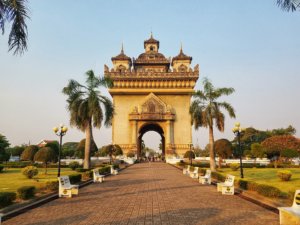
Whether your motivation is food, fun, history or something else, it can be hard to narrow down the choices. We’ll help you figure it out below:
Where to Travel in Southeast Asia for Food
Southeast Asia has great food. It is easy to understand why Pad Thai and Pho are found in cities across the world. And few (legal) endeavors in life are so pleasurable as slurping down a hot bowl of bun cha or khao soi.
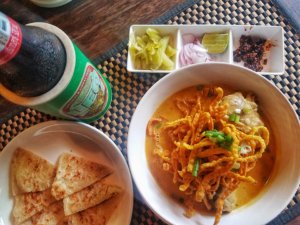
Some of Southeast Asia’s greatest exports are edible, and, naturally, the real thing from the source is going to be better. So what country is the best place to travel in Southeast Asia for food?
Great food can be found in any country in the region. However, when food-focused travelers are deciding where to travel in Southeast Asia, it is much easier to narrow down the list when you’re looking for the best.
Travelers craving a taste of something unique and unmatched should consider Thailand and Vietnam . Thai food has become a trendy Western choice and receives a lot of international attention, whereas Vietnamese food enjoys a slightly less notoriety.
Comparing Vietnamese and Thai food is difficult, as the two cuisines are drastically different. Thai food varies more within the country from north to south, while twists on dishes in Vietnam are not as significant from Hanoi down to Ho Chi Minh City (Saigon).
Most foodies will jump to proclaim spicy Thai food, with its powerful flavors, as the best in the region. In many ways, Thai food deserves to be in the conversation of best food in the world – it really is that good . In Southeast Asia, Vietnamese food remains a strong challenger. For one, it is cheaper, and that’s always a good thing. The country also bakes some of the best bread in the world, and that means pastries, too. Perhaps more importantly, street food in Vietnam is better.

Neither Thailand nor Vietnam has better food. Each country has unique, fantastic cuisine. For travelers looking to try new and delicious foods, these two nations should be at the top of the list.
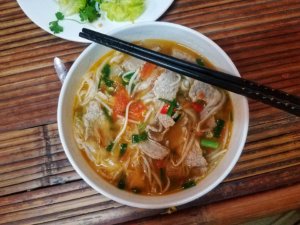
Myanmar has a few bright spots, and Malaysian food, a blend of Indian, Chinese and Southeast Asian, is also pretty damn good.
Foodies looking for the best place to travel in Southeast Asia should be aware that, as a whole, Laos and Cambodia are a little stale. There’s plenty to offer for backpackers, curious travelers and culture enthusiasts – they’re fantastic places to visit, in general – but food in these countries is mediocre compared to their neighbors.
There’s no need to panic or go hungry, but temper your expectations. The food just doesn’t stand out. Much of what is considered to be local cuisine is also found in neighboring countries. Cuisine in Laos and Cambodia doesn’t compare to the cuisine in places like Thailand or Vietnam.
The Best Place to Travel & Party in Southeast Asia
For some reason, thousands of travelers head to Southeast Asia to party. The allure of doing illegal drugs and soliciting prostitutes of unknown gender, in a place that (literally) has deathly punishments, is lost on me. Nevertheless, travelers head to Southeast Asia to go wild and be free.
Thailand, Cambodia, Laos and other countries are infamous for drug use and sex tourism, so, naturally, that’s a draw for a special breed of vile tourist. Don’t be that kind of tourist.
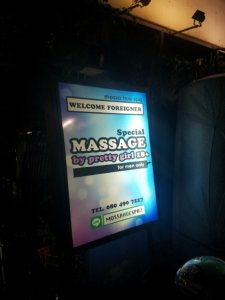
**I strongly discourage anyone from partaking in any type of sex tourism. Not only are deadly STDs on the rise in Southeast Asia, this abhorrent business will only grow if travelers continue to support it.
I also advise against using illicit drugs in Southeast Asia. Party hardy travelers die every year from overdoses in the region. The punishments for being caught with these substances, even a small personal quantity of marijuana, can land you in jail for years. Not worth it. You can go to Amsterdam and legally smoke weed until you melt. Don’t take the risk.**
Now that the warnings are out of the way, where is the best place to travel and party in Southeast Asia?
Thailand, obviously, is on the list. Phuket may not be serene anymore, but it is still a hot spot for fun. Bangkok, as the backpacking travel hub of Southeast Asia, has plenty of nightlife to satisfy the desire for a crippling hangover. Head to Khao San Road for a plethora of grimy options to start the night.
In Vietnam, Saigon has a lively scene of overpriced bars in the city’s backpacker corner. Hanoi is tamer than Saigon, but Beer Street is a good place to start. Regardless of what country it is, $0.25-0.50 beers are a win in my book.
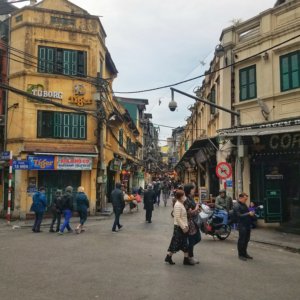
Cambodia’s party scene is pretty well limited to Siem Reap, primarily around Pub Street, now that things in Phnom Penh have calmed down. The island of Koh Rong, and to a lesser extent the smaller island of Koh Rong Samloem, is the place for a beach party in Cambodia.
If you’re heading to Malaysia, forget about partying unless you have deep pockets. It’s too expensive. The same can be said for Singapore, per usual.
Vang Vieng is a once-infamous party town in Laos. Now, the drunken river scene is all but gone. There are a few bars left, but police are cutting down on illicit activities. The once-wild atmosphere has dwindled to a few, pungent holes in the wall.
Searching for the best place to travel and party in Southeast Asia is not a hard task. Most travelers head to Thailand. This is not likely to change anytime soon. However, a party can be found nearly anywhere. Having fun is part of travel, but keep your wits about you. Tourists are easy targets.
Where to Travel in Southeast Asia for Beaches
There are a lot of options for beaches in Southeast Asia. Laos is the only landlocked country, and nearly other country in the region has a few decent beaches.
Thailand is, by far, the most popular place to travel in Southeast Asia for a beach getaway. The country’s ease of access and quality infrastructure makes it an easy destination for international travelers, and there are plenty of islands from which to choose.
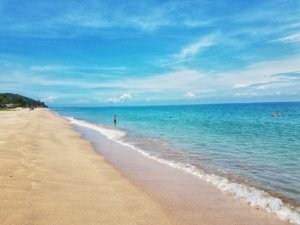
Phuket may have been inundated and spoiled by tourists, and Phi Phi Island may be so fragile that it is now periodically closed to rehabilitate the habitat , but there are other islands we tourists have yet to destroy!
Whether it’s Ko Lanta, Ko Samui or another sultry utopia, Thailand has a lot of beautiful islands and is a beach-lovers dream.
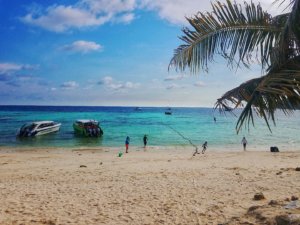
Once the tropical crown jewel of Southeast Asian travel destinations, Bali evokes ideas of luxury, sunshine, empty beaches and pristine water. Today, travelers are just as likely to find thousands of other tourists and seas of trash as they are paradise.
Fortunately, Indonesia has over 17,000 islands. Even if Bali has lost its magic, it shouldn’t be too tough to find the perfect beach in Indonesia.
There are great beaches elsewhere in Southeast Asia, but most places are less popular for a reason. Malaysia has nice beaches, but costs run higher; and many of the nicer beaches in Malaysia are more difficult to reach. Cambodia also great beaches, but they are fewer and the infrastructure is less developed. Vietnamese beaches are just okay . Myanmar, while home to thousands of islands and pristine tropical paradise, seriously lacks the necessary infrastructure to support much beach tourism.
Ultimately, the best place to travel in Southeast Asia for a beachy, sun-filled stay is Thailand or Indonesia. The beauty is unquestionable, but the infrastructure make these countries the most logical choice for travelers.
Travel in Southeast Asia for History Lovers
Asian history, including that of Southeast Asia, goes back thousands of years. For travelers with an interest in history, there are a few destinations in Southeast Asia that stand above the rest.
Angkor Wat is the single most well-known historical attraction among all Southeast Asian travel destinations. The ancient capital of the Khmer Empire draws over two millions visitors annually. The once-mysterious and forgotten jungle megacity is now a hugely popular destination on the outskirts of a highly developed city. Even with massive popularity and large crowds , Angkor remains a fun place to visit. The various structures date back hundreds of years, with some parts of the city over a thousand years old.
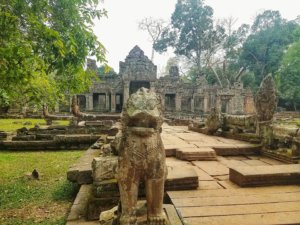
Another spectacular, timeworn place to travel in Southeast Asia is the ancient capital of Bagan, in central Myanmar. Bagan is home to thousands of temples and structures from the Pagan Kingdom, dating back about a thousand years.
In a rural area of Myanmar, Bagan lacks the development and oversight of similar ancient places. Once visitors pay the fee and enter the area, they are left entirely to themselves. While some structures are unstable and off limits, tourists are still able to climb atop several temples and find striking scenes over Bagan. Best of all, Bagan has very few visitors in comparison to Angkor. During low-seasons, the Myanmar treasure of Bagan is virtually free of tourists.
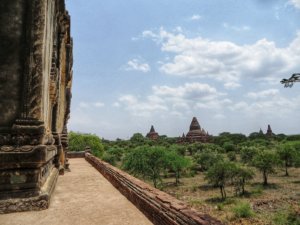
Laos’ Plain of Jars is an even older ancient site in Southeast Asia, but visiting does not compare to Angkor or Bagan. The large “jars” are undoubtedly a curious sight, but there isn’t much else to warrant the tedious trip to visit this corner of Laos.
More recent history is also visible across the region. Remnants of European colonialism provide a lot of interesting history and beautiful architecture, but the ancient history is a more unique draw.
For the incredible ancient sites of Angkor and Bagan, Cambodia and Myanmar are the best places to travel in Southeast Asia for history enthusiasts.
Off the Tourist Trail
Despite am enormous increase in popularity, Southeast Asia is still off the tourist trail for most travelers. But which country in Southeast Asia is the best to visit to travel off the beaten path and avoid the masses?
It’s fairly easy to get lost, avoid crowds and find something unique in Southeast Asia. But it is easier in some countries than others.
Laos is the best place in Southeast Asia to travel to avoid other tourists. Aside from Vang Vieng and Luang Prabang, Western tourists in the country are few and far between. Even the other popular places in the country bring in few tourists.

Si Phan Don, better known as Four Thousand Islands , is popular with travelers, but its remote location in the middle of the Mekong River in extreme southern Laos makes it difficult for numbers to swell.
The Plain of Jars , near Phonsavan in Northeastern Laos, is growing in notoriety. However, again due to a remote location, there are few tourists in the area.
Motorbike excursions are also a popular method of touring rural Laos where travelers will encounter very few tourists. Even in Vientiane, the capital and largest city of Laos, tourists are scarce compared to big cities in neighboring countries.
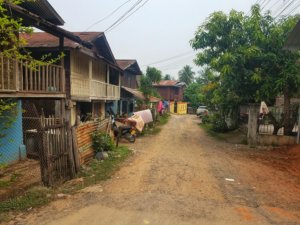
Myanmar is another Southeast Asian travel destination with few tourists. Bagan is the most popular attraction for tourists in Myanmar. With ongoing conflicts in multiple regions of the country – several areas are off limits to outsiders – many travelers avoid the nation. With a population of over five million, Yangon (formerly, Rangoon) is the center of political and economic life in the country. Nevertheless, few tourists make it to Myanmar, leaving it as a destination yet spoiled.
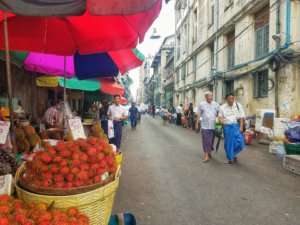
As a whole, Southeast Asia is no longer an unusual or uncommon place to travel. Millions of foreigners visit each year, but it is still easy to lose the crowds by venturing away from popular tourist centers.
Laos and Myanmar are two fascinating countries, but the allure is lost among most travelers. With few visitors even in the most popular spots, they are the best places to visit in Southeast Asia to get away from the tourist trail.
Where to Travel Cheap in Southeast Asia
With the major exception of Singapore, most of Southeast Asia is budget friendly. But what is the cheapest of the cheap?
Thailand is the most well-known country in Southeast Asia for budget-friendly travel. Much of the credence behind that notion can be attributed to travelers who don’t stray far from Thailand at all.
Bangkok is wild, massive and still cheap. The Insta-famous Thai islands are beautiful and fairly inexpensive compared to a pricey week in the Caribbean or Mediterranean. There’s no debate that Thailand is affordable, but it’s not the cheapest place to travel in Southeast Asia.
Thailand’s rise in popularity coincides with an increase in prices. It is still cheap, but extravagant meals for a buck and $5 a night for a nice room with air conditioning are things of the past.
For a country in Southeast Asia that better stretches your dollar, head to Vietnam .
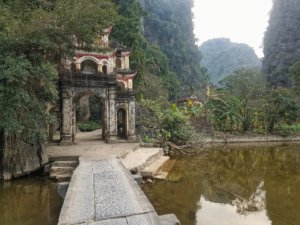
Vietnam is incredibly cheap. Traveling in Vietnam lacks a certain quality of infrastructure and level of comfort, but this only increases the sense of adventure. If traveling on a budget is the goal, it’s easy to stick to it in Vietnam.
Food in Vietnam is not only fantastic, it’s a budget travelers dream. Local specialties are often found streetside for just a dollar or two. When dining out, prices are still very low considering the quality, freshness and overall spread on the table.

Prices vary across Vietnam, especially between Ho Chi Minh City and Hanoi . Even in the most touristy areas, cheap eats are plentiful. Accommodation in Vietnam is also cheaper. Decent hostels in Hanoi can be found for $5-7 USD per night. In Saigon (HCMC), the cost is a few dollars more, but still cheaper than most hostels of equivalent quality in other Southeast Asian travel destinations. Hotels, as usual, can be as expensive as a traveler desires, In Vietnam, a quality hotel with air conditioning in a decent part of town does not break the bank.
Without even considering airfare from home, travel transportation costs can really add up during a trip. In Vietnam, transportation is super cheap. If you take local buses and trains, it is alarmingly cheap – sometimes, a couple dollars can take you halfway through the country. Most backpackers take tourist buses. For a few dollars more, and still far from luxury, they are more spacious and comfortable than local options.
Where to Travel for Comfort in Southeast Asia
When roughing it and stretching dollars is not your style – if traveling in comfort sounds more appealing – options for where to travel in Southeast Asia are fewer. Most big cities sport at least one or two fancy hotels, but deeper travel requires more consideration than finding a nice hotel.
Overall comfort in a country has more to do with infrastructure than thread-count. The infrastructure in Malaysia, Thailand and (especially) Singapore is, in large part, considerably better than in surrounding nations.
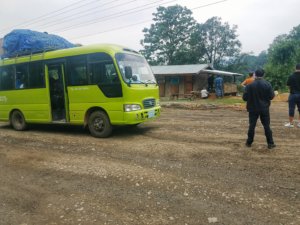
Hours and hours on bumpy roads take a toll on any traveler. Thailand and Peninsular Malaysia have smoother roads. This goes a long way on cross country trips. These countries also have reasonably comfortable rail travel. *I cannot speak to the quality of infrastructure in Malaysian Borneo.
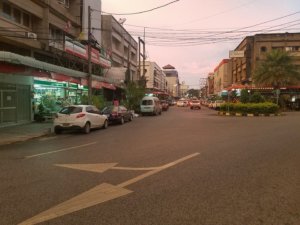
You can always pay a little extra for comfort. Air conditioning, for instance, is not common in Southeast Asia. Hostels usually offer A/C for a premium. Short flights are available to avoid long bus rides. Jack Daniels and Hennessy is around for those willing to pay. But you can forget about safe drinking water anywhere.
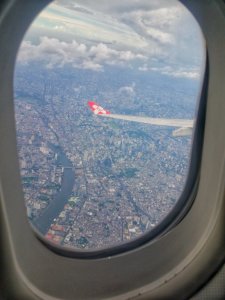
Singapore, Malaysia and Thailand may be more comfortable for travelers in an arbitrary sense, but it’s nearly impossible to designate a single place in Southeast Asia as the best place to travel for luxury.
If you’re wondering what is the best place to visit or where to travel in Southeast Asia, comfort should be a lesser consideration. That would only lead to frustration. Other places in the world are better suited for luxurious and comfort-focused travel. Instead, consider the many other, far better reasons to travel halfway across the world to Southeast Asia.
Where to Go in Southeast Asia
Everywhere! Ideally, visiting as many places as possible will yield the best overall experience and the most comprehensive understanding of the region. There are too many reasons to count to travel to Southeast Asia. The region has become one of the most popular areas in the world for tourism. Travelers are drawn for many reasons, and the greatest challenge is time.
With beautiful beaches, sprawling cities, mysterious ruins and heaps of delicious food, any trip to Southeast Asia can be the trip of a lifetime.
With a little research and a better understanding of the region prior to your arrival, you can choose the Southeast Asian travel destination that best fits your desires of travel.
Reader Interactions
Leave a reply cancel reply.
Your email address will not be published. Required fields are marked *
Notify me of follow-up comments by email.
Notify me of new posts by email.
This site uses Akismet to reduce spam. Learn how your comment data is processed .
Before Footer

These Are The 14 Most Beautiful Southeast Asia Destinations
The many famous tourist destinations in Southeast Asia reflect the region's beauty which offers everything from exploring ancient forests to relaxing on unspoiled beaches with rainbow lakes and breathtaking panoramas. In addition, some parts of Southeast Asia are less accessible to the general public, allowing travelers the freedom to experience both the well-trodden paths and the less-traveled backroads of Southeast Asia. It can take time to narrow down the best options for sights to see to make the most of one's stay in this region. We've done the hard (but enjoyable) work for travelers and prepared a list of Southeast Asia's ten best destinations .
UPDATE: 2023/04/23 7:00 PM EST BY BRIDGET O'NEILL
Now, discover 14 of the most beautiful southeast asia destinations.
Choosing the best places to visit in Southeast Asia is no easy feat. This list has been updated and expanded to accommodate every type of traveler's dream itinerary. Anthropological nuts who long to immerse themselves inhospitable cultures located in far-flung locations, beach babes who thrive in hidden coves, and night owls who love nothing more than a non-stop party will all be satisfied after perusing this list.
Related: Stay At These 10 Eco-Friendly Philippines Resorts For A Sustainable Southeast Asia Vacation
Siargao Island, The Philippines
A tear-shaped island in the Philippine Sea, Siargao is located 196 kilometers southeast of Tacloban and is widely regarded as the country's surfing epicenter. Jacking Horse and Daku are stunning locations popular with surfers due to their large waves. There are many other different activities for individuals who aren't particularly surfing-savvy. Travelers can relax at the many resorts on the island , cool down in the pools of Magpupungko or head to Tayangban Cave Pool, a half-submerged grotto surrounded by mangroves, to swim, climb, and cliff jump.
- Where to stay: Retreat Siargao Resort
- Address: Malinao Rd, General Luna, Mindanao 8419 Philippines
- Amenities: Free parking, Free Internet, Pool, Free Breakfast, Beach
Koh Yao Yai, Thailand
Tucked away between the tourist havens of Phuket and Krabi lies Ko Yao Yai Island, a tiny, undiscovered sanctuary that exemplifies the pristine natural beauty for which the Thai islands are known. Ko Yao Yai has sandy beaches, beautiful resorts and spas, mangroves, rubber plantations, and fishing settlements. Dive destinations, such as the King Cruiser Wreck near Anemone Reef and the pinnacles of Shark Point, dot the coral-rich seas nearby. The island's native Muslim population has built booming industries by growing rubber trees and fishing.
- Where to stay: Santhiya Koh Yao Yai Resort & Spa
- Address: 88 Moo 7 Prunai Subdistrict, Ko Yao Yai 83000 Thailand
- Amenities: Free Internet, Hot tub, Fitness Center, Free Breakfast, Beach, Canoeing, Babysitting
Bagan, Myanmar
Bagan, now a UNESCO World Heritage Site, served as the capital of Myanmar's first monarchy. Over ten thousand Buddhist pagodas and temples were constructed here between the eleventh and thirteenth centuries. The Bagan Archaeological Zone, covering an area of 41 km2, is home to nearly 3,500 surviving monuments. The Dhammayangyi Temple, Bagan's largest and most well-known temple, is notable for its enigmatic bricked-up interior and can be seen anywhere in the city. The white Shwesandaw Paya pagoda offers stunning views of the city's hills and temples, and it also serves as the ideal vantage point for watching the sun go down.
- Where to stay: Heritage Bagan Hotel
- Address: Bagan-Nyaung Oo Airport Road, Nyaung U, Bagan 11101 Myanmar
- Amenities: Free Parking, Free Internet, Fitness Center, Free Breakfast, Pool, Bicycle Rental, Karaoke
Penang Island, Malaysia
Just off the Malay Peninsula in the Strait of Malacca sits the Malaysian island of Penang. Guests to Penang will find a surprising juxtaposition in the city's mingling of many Asian cultures. George Town, the state capital of Penang, features several buildings with distinct foreign styles, including the British Fort Cornwallis, the Chinese clan temple Khoo Kongsi, and the Indian-style Kapitan Keling Mosque. The Goddess of Mercy Temple in China, the Kek Lok Si Buddhist Temple, and the Sri Mahamariamman Hindu Temple are also important places of worship.
- Where to stay: PARKROYAL Penang Resort
- Address: Batu Ferringhi Beach, Batu Ferringhi, Penang Island 11100 Malaysia
- Amenities: Free Parking, Free Internet, Fitness Center, Free Breakfast, Pool, Beach
Hanoi, Vietnam
Hanoi, the capital city of Vietnam, started welcoming tourists in the 1990s and is now one of the best spots to visit for those who want a deep understanding of Vietnamese culture. Guests can find many hotels, shops, eateries, and bikes in the historic district. It's no secret that the Temple of Literature is also among the city's most stunning structures. It was initially constructed as a university in the 11th century and is now a Confucian temple. Ho Chi Minh's tomb is also in Hanoi.
- Where to stay: La Siesta Premium Hang Be
- Address: No 27 Hang Be Street Old Quarter, Hoan Kiem, Hanoi 100000 Vietnam
- Amenities: Parking, Free Internet, Fitness Center, Free Breakfast, Babysitting,
Bolaven Plateau, Laos
The Bolaven Plateau (in Lao, Phu Phieng Bolaven) is a lush region that spans sections of all four southern provinces and is well-known for its mild climate, stunning waterfalls, and excellent coffee. The historic village mansions and the coffee plantations are must-sees, but the region's spectacular waterfalls are the icing on the cake. Reserve a room in a luxurious resort on the Mekong River's scenic banks and enjoy a motorcycle ride over the 500-kilometer fresh, wild road the nation offers, starting from Paske.
- Where to stay: The River Resort
- Address: Ban Phaphinnoy, Champasak Town 1601 Laos
- Amenities: Free Parking, Free Internet, Free Breakfast, Pool, Bicycle Rental, Spa
Angkor Wat, Cambodia
Take a trip to Cambodia and spend some time in Siem Reap, a resort town in the country's northwest and the entry point to the Angkor temple complex, which served as the capital of the Khmer Empire between the 9th and 15th centuries. Among the many historical sites in Southeast Asia, Angkor is among the most significant. Covering an area of over 400 km2, much of it forested, Angkor Archaeological Park is home to the impressive ruins of several ancient Khmer capital cities. Another highlight is the Bayon Temple in Angkor Thom, with its myriad sculptural decorations.
- Where to stay: Viroth's Hotel
- Address: Street 24 Wat Bo Village, Siem Reap 17254 Cambodia
- Amenities: Free Parking, Free Internet, Free Breakfast, Pool, Bicycle Tours
Related: 10 Dreamiest Southeast Asia Resorts For A Luxurious Vacation
Nusa Islands, Indonesia
Nusa Islands are a famous group of three islands located off Bali's southern coast in Indonesia. The three islands, Nusa Penida, Nusa Lembongan, and Nusa Ceningan, are all great places to go on an exciting trip. The Nusa Islands have recently become increasingly popular among tourists. Still, some parts feature tranquil white sand beaches bordered by turquoise waters, while others feature dramatic cliff faces and surf breaks, naturally formed infinity pools, and enchanting hidden lagoons. Guests on the islands can swim, snorkel, or scuba dive with the gentle giants of the sea, the manta rays, that call this part of Indonesia home.
- Where to stay: Hai Tide Beach Resort
- Address: Mushroom Bay, 80001, Indonesia
- Amenities: Free Internet, Free Breakfast, Pool, Beach, Bicycle Rental
Singapore is unlike any other Southeast Asian country. This city-state on an island is cutting edge and global in outlook, with high-rise hotels and malls coexisting with breathtakingly beautiful natural landmarks. For instance, Sentosa Island is home to various attractions, including a two-kilometer beach, a renovated coastal fort, Southeast Asia's first 4D theater, a butterfly park, an insect kingdom, and even a Universal Studios Singapore theme park. The world's largest indoor waterfall is in Singapore's airport, which also features a five-story indoor garden, a mirror and haze maze, and a huge butterfly garden with over a thousand species flying freely among tropical vegetation.
- Where to stay: Marina Bay Sands
- Address: 10 Bayfront Avenue, Singapore 018956 Singapore
- Amenities: Valet Parking, Free Internet, Pool, Fitness Center, Bar/Lounge, Casino, and Gambling
Tegalalang Rice Terraces, Bali, Indonesia
Located about 20 minutes north of Ubud, the Tegalalang Rice Terrace is one of Bali's most picturesque and famous spots. The rice paddies at the UNESCO World Heritage Site are expansive and undulating because of a complex irrigation system and the dedication of farmers who have been tending the terraces for centuries, if not millennia. Here, visitors can spend hours strolling the decks for the gift of a few cents, taking in the panoramic views of verdant fields that stretch as far as the eye can see. People who get there early in the morning will have the place to themselves, enjoying the gentle swishing of the rice fields in the breeze.
- Where to stay: Aksari Resort Ubud
- Address: Jl. Raya Desa Kenderan No.88x, Kenderan, Tegalalang 80571 Indonesia
- Amenities: Free parking, Free Internet, Hot tub, Fitness Center, Free Breakfast, Hiking, Bicycle Tours
Orchid Island, Taiwan
Orchid Island or Lanyu off the coast of Eastern Taiwan is without a doubt one of the most beautiful places in Southeast Asia. Home of the Yami people who have populated the island for over 1,000 years this volcanic island is a technicolor kaleidoscope of blues and greens that is well worth the (occasionally rough) ferry trip to get there. Visitors should rent a scooter to experience every inch of this unique wonderland and make their way through craggy rock formations where the local goat population loves to catch a snooze. Scuba diving off the coast with the Blue Ocean Dive Center is an awesome activity where visitors can enjoy the epic coral reefs surrounding the island. After a day of exploring travelers must sample some flying fish, a local delicacy at the center of many Yami rituals.
- Where to stay: 蘭嶼町Ah度背包客棧 - Lanyu DAD's Backpacker
- Address: 95242, Taiwan, Taitung County, Lanyu Township, 東清村3鄰東清59號 2•+886 915 270 812
- Amenities: Wifi, A/C, Guitar, Scuba Storage, Stand Up Paddleboard Experiences, Memory Foam Mattresses
Travelers to Orchid Island must be respectful of the Yami culture and not take photos of locals without permission. It is considered to be extremely rude.
Ninh Bình, Vietnam
Ninh Bình is considered to be the Ha Long Bay of the land and it's one of the best-kept secrets in Southeast Asia for those who long for unrivaled nature and off-the-charts hospitality. A visit to nearby Tràng An Scenic Landscape Complex includes a once-in-a-lifetime boat ride/cave tour where travelers will experience Vietnam's ancient capital city of Hoa Lu. A row through the 100-meter-long Hang Bong or Shadow Cave is another thrilling aspect of the 2-3 hour tour on a bamboo rowboat. Travelers will lie on their backs as they glide through the epic cave back out into the turquoise lagoon. Visitors must rent a scooter to explore the rest of Ninh Bình and dart through verdant rice paddies that surround the glorious karsts in the area.
- Where to stay: Tam Coc Sunshine Homestay
- Address: 6WCQ+G4G, Ninh Hải, Hoa Lư, Ninh Bình, Vietnam
- Amenities: Outdoor Pool, Free WiFi, Spa, Airport Shuttle, Breakfast, Bar
Siquijor Island, Philippines
Siquijor Island has a magical past, and it is certain to enchant every traveler with its untouched jungle that echoes with the soothing sounds of cascading waterfalls. Siquijor is close to bustling Cebu, but it feels worlds away. Tranquil crystal waters gently roll onto white sand beaches making for a relaxing and rejuvenating respite during a Philippines adventure. Cambugahay Falls is a super popular tourist destination on the island and its three-tiered waterfall and swimming area are perfect for those who want to see and be seen. For those who want to live like the locals a five-minute jungle hike leads to the peaceful Lugnason Falls where one can float on its sky-blue waters below the falls and truly feel like they're having an otherworldly experience.
- Where to stay: TAGBALAYON Lodging House
- Address: Tubod, San Juan, Siquijor, 6227 Siquijor, Philippines
- Amenities: Complimentary Welcome Drinks, Scooter Rental, Outdoor Activities, Local Food, Free WiFi
Siquijor is also known as 'The Island of Witches'. Healers abound on the island and visitors can have a spiritual experience through rituals performed with natural elements found around Siquijor. Every Holy Week in April there is a 'Healing Festival' that is not to be missed.
Ko Lipe, Thailand
This southern Thai island near Malaysia is a tropical paradise full of natural wonders that make it a must on any list of top Southeast Asia destinations. Snorkeling, kayaking, voracious reading on white sand beaches, there is something for everyone on Ko Lipe. Travelers can head to Walking Street in the evening after sunset on Pattaya Beach for outstanding local delicacies, live music, and amazing bars. The reefs here are much healthier than those on other Thai islands and 25% of the world's tropical fish species can be found around Ko Lipe. Travelers can book a variety of underwater excursions with Lipe Dive Station.
- Where to stay: Akira Lipe Resort
- Address: 370 Moo 7, Koh Sarai Sub-district, Muang, Satun, 91000 Ko Lipe, Thailand
- Amenities: Swimming Pool, Beachfront, Free WiFi, Airport Shuttle, Fitness Center, Bar

I've traveled to 9 out of 10 countries in Southeast Asia. Here are the 5 biggest mistakes I made along the way.
- I've traveled solo to nine countries in Southeast Asia.
- I've made many mistakes, from traveling during monsoon season to forgetting to bring enough cash.
- Travelers should make sure they plan ahead and research each country's culture.

Over the last two years, my journey as a travel enthusiast and Business Insider's travel reporter in Singapore has brought me to almost every country in Southeast Asia.
In total, there are 10 countries in Southeast Asia , and I've traveled to nine of them — Singapore, Philippines, Malaysia, Vietnam, Thailand, Indonesia, Cambodia, Laos, and Brunei. Myanmar remains the only country in the region I have not visited, and while I am keen to explore it, I have held off on visiting because of the country's ongoing civil war.
I've watched the sun rise in Angkor Wat in Cambodia and cared for elephants in Chiang Mai, Thailand. I've explored the Bornean jungle in Brunei and crawled the Cu Chi Tunnels in southern Vietnam.
But it hasn't always been easy. I've made several mistakes traveling across the region , especially as a solo traveler. Here are five mistakes I made and how to avoid them.
1. Going during monsoon season and not planning for the weather.
In July, I traveled to Thailand on a reporting trip to cover the budding cannabis industry . There, I was met with heavy rain nearly every day. In Bangkok, I was staying in a hostel in Chakkrawat , a district with narrow, meandering streets, which made it difficult to walk anywhere in the pouring rain.
I didn't plan for the weather, so I didn't have an umbrella or poncho with me and had to rush to get one at the last minute. I also had a packed itinerary with a lot of travel between meetings, which was a hassle in the constant downpour.
Before traveling to Southeast Asia, make sure to avoid two seasons — the monsoon season, which often comes with strong typhoons in countries like the Philippines, and the burning season, where farmers burn land for fertile soil. This is a common occurrence in countries like Laos, Thailand, and the island of Borneo, which is shared between Brunei, Indonesia, and Malaysia.
When I traveled to Laos in April last year during the burning season , most of my plans — including a hot air balloon ride — were canceled because of the thick smog. I also didn't have an N95 mask with me, and I ended up with a sore throat.
If you do plan to come during these seasons, make sure to pack accordingly and plan a flexible schedule.
2. Traveling during Ramadan and expecting the same practices everywhere.
Having grown up in Singapore, I'm familiar with the practices during Ramadan , the holy month for Muslims, where they fast for most of the day. I studied Malay for seven years, and in school, I often fasted with my Muslim classmates and ate only in private.
Still, in many cities in Singapore, Malaysia, and Indonesia , non-Muslims are free to dine in public, so long as they do so respectfully. But on my trip to Brunei in April — at the height of the burning season and in the middle of Ramadan — there were more practices I needed to observe.
Most restaurants were closed, and diners weren't allowed to eat there even if they were open — only take-out was allowed. Eating in public was a major faux pas even for non-Muslims, and if you want to drink some water, you can only do so when nobody is around.
It wasn't easy, especially as Brunei was sweltering at 100 degrees Fahrenheit on some days. I made do by returning to the hotel for lunch and grabbing a big dinner with the locals at the night market after they had broken their fast.
3. Not packing enough modest outfits when visiting temples and mosques.
Southeast Asia is pretty liberal, and you can wear whatever you want in many places. In popular destinations like Phuket, Thailand, and Bali, Indonesia, lots of tourists walk around in bikini tops and shorts, and locals mostly tolerate it.
But there are certain places you do need to cover up, like places of worship, which include temples and mosques. When I visited Angkor Wat — the famed temple complex in Cambodia — in February last year, I found some tourists being told off by the local tour guides for wearing shorts and tank tops — "Tomb Raider" style.
I've learned to err on the right side of caution and bring a sarong wherever I go. It's an easy way to cover up and make an outfit more modest when you need to.
4. Forgetting to pack medication, especially when I plan to eat street food.
Southeast Asia has some of the world's most flavorful food. In every country, you can find food that is cheap and delicious, and that includes Singapore , the world's most expensive city. In countries like Malaysia and Vietnam, street food dishes can cost as little as a dollar.
I eat mostly street food when I travel in Southeast Asia, so medicine for tummy-related illnesses is a must. I've only gotten sick twice from eating street food — and it was the same dish both times— and unfortunately, those were the few times I didn't have medicine with me.
I'm a pretty adventurous eater. I've eaten everything from pufferfish stew to frog porridge and dishes made with intestines off the street. I've learned to wash the utensils provided before digging in and make sure the food is cooked to order and heated up before being served.
5. Relying on my card and not bringing enough cash with me.
In Singapore, I don't really use cash and often use Apple Pay, mobile payments, and cards. But I've found that many stores in other countries in Southeast Asia only accept cash.
For example, on my third trip to Vietnam, I spent an hour trying to make payment via bank transfer after the staff at a luxury perfume shop — which was selling items priced upwards of $200 — informed me at the last minute that they didn't accept card or contactless payment.
I've also found the majority of street vendors in the region only accept mobile payment — which is limited to local banks — or cash. I've learned to change a considerable amount of money before leaving the airport and keep whatever I didn't use for my next trip.
- Main content
Thailand, Cambodia, Vietnam: Could Southeast Asia be introducing a Schengen-style visa system?
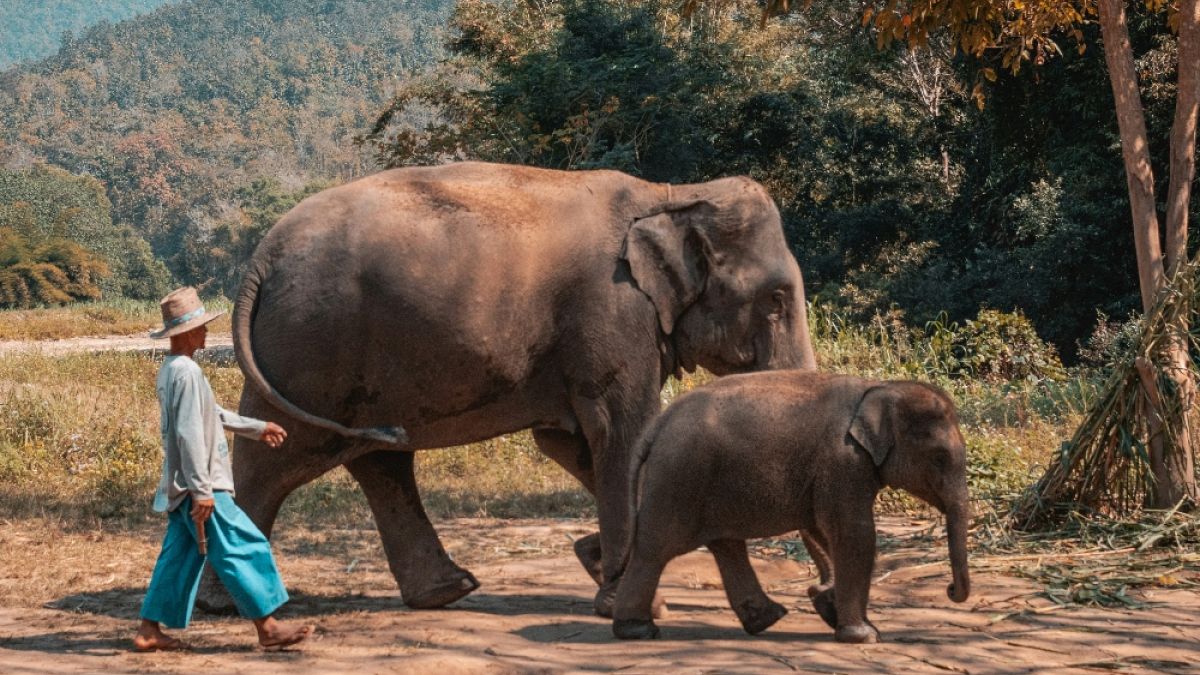
Local reports in Thailand say a new Schengen-style visa system in Southeast Asia could boost tourism - and the wider economy.
Thailand is looking to boost tourism across Southeast Asia with a new visa scheme.
The Asian nation is advocating for a Schengen-style visa along with five neighbouring countries.
If the proposed system were to go ahead, Cambodia, Malaysia, Myanmar, Vietnam and Laos could all become far more easily accessible from Thailand.
Local media reported this week that the Prime Minister of Thailand put forward the plan to improve the country’s chance of achieving its target of 80 million tourists a year by 2027.
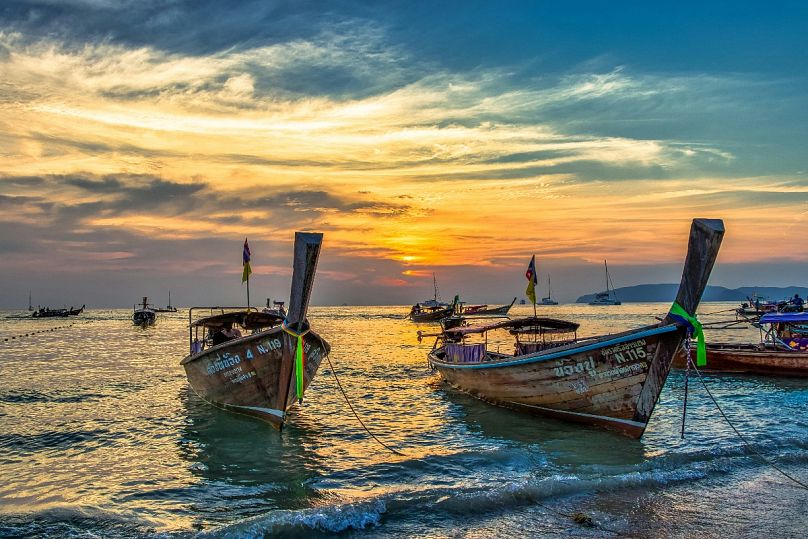
What would a Schengen-style visa system look like in Southeast Asia?
Thailand’s Prime Minister Srettha Thavisin is said to be pushing for the joint-visa programme, with the aim of attracting bigger-spending tourists from far flung countries.
Talks with leaders of the neighbouring nations are said to have gone well. The six countries were, in total, visited by some 70 million tourists last year, with Thailand and Malaysia playing host to the majority of that number.
Thailand is facing serious economic challenges amidst a faltering manufacturing sector and diminishing exports. Its popularity with travellers has been crucial for its survival, with the tourist industry making up about 12 per cent of its economy as well as accounting for around 20 per cent of jobs.
The other countries set to be included in the Schengen-style scheme would likely benefit from such a boost, too.
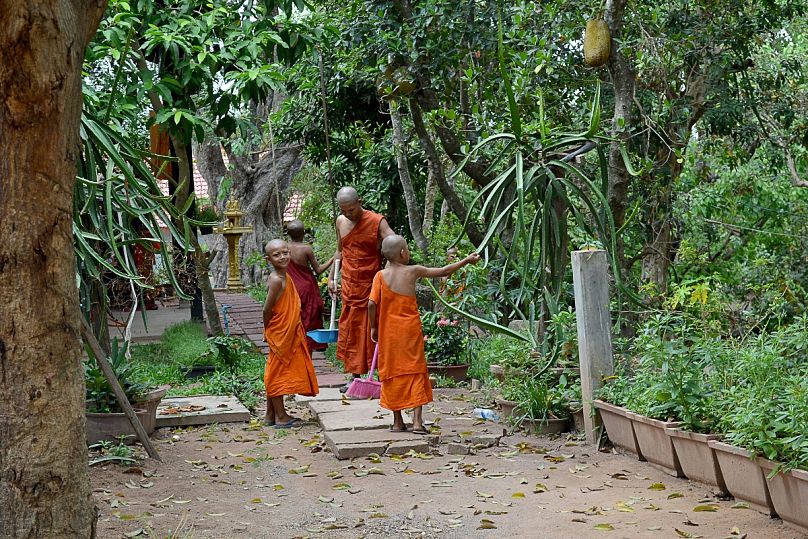
Currently, Europeans can visit Thailand on a 30-day visa exemption, with extensions only available at an extra cost and only in certain locations.
Likewise, Cambodia and Laos offer 30-day e-visas or visas on arrival, while Vietnam offers a 45-day stay visa-free and Malaysia offers 90 days. European tourists must apply online for a Myanmar 28-day tourist visa.
Regional travel experts say any new scheme should instead give 90-day-long visas, meaning that tourists would be able to spend more time in each country they choose to visit.
However, the actual implementation of the process might not be so clear cut.
In Southeast Asia, it may well be a slow process, with bilateral agreements taking time to thrash out in the often complicated political world.
- Paws and popcorn: Thai cinema goes pet-friendly
- Stunning beaches, history and world-class bars: The ultimate guide to Thailand's must-see sights
What other changes has Thailand made to international visa agreements?
This week, the Thai authorities revealed that they are planning to remove visa requirements with Australia. While no date has been set as yet, that agreement will likely strengthen the trade deals between two countries as well as boosting tourism.
In March, China and Thailand introduced a mutual, permanent visa-free entry system, meaning citizens can travel between the two countries for stays of up to 30 days. Since put in place, travel bookings have shot up from both nations.
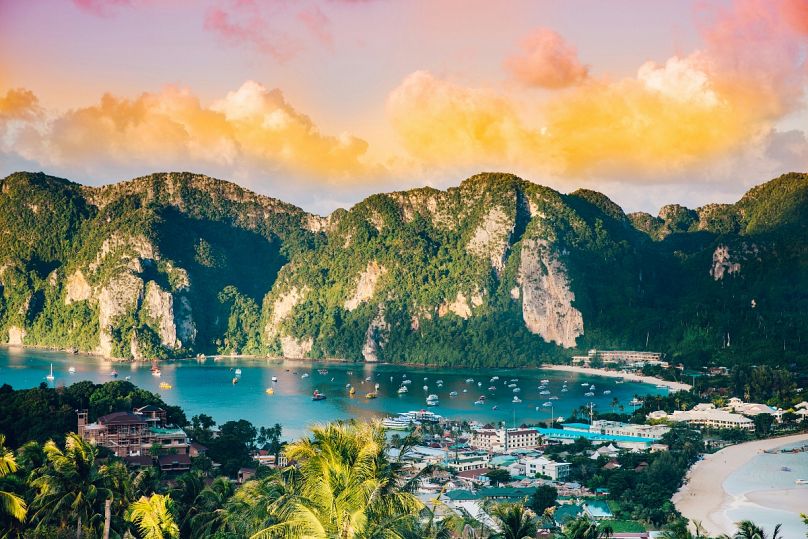
That policy came following a similar implementation in November 2023, where Indian visitors can also travel to Thailand without applying for a visa. These positive moves could inspire more visa-focussed discussions in the near future.
It’s certainly working well for Thailand, which saw a significant increase in international tourists during the first quarter of 2024, welcoming over nine million people.
Chinese tourists - around 1.7 million - accounted for the largest number of visitors to Thailand, followed by travellers from Malaysia, Russia, South Korea and India.
You might also like
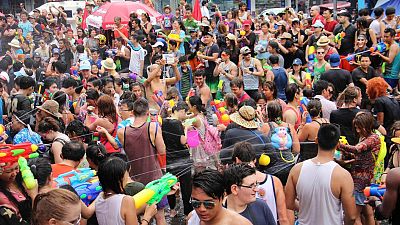
Thai New Year returns this month with water fights and parties
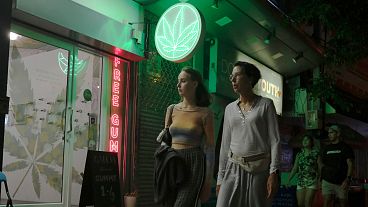
Cannabis: Thailand U-turns on legalisation after just 18 months
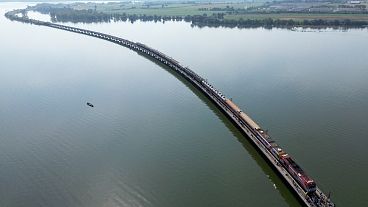
Thailand’s ‘floating train’ is a unique railway experience
- Election 2024
- Entertainment
- Newsletters
- Photography
- Personal Finance
- AP Investigations
- AP Buyline Personal Finance
- Press Releases
- Israel-Hamas War
- Russia-Ukraine War
- Global elections
- Asia Pacific
- Latin America
- Middle East
- Election Results
- Delegate Tracker
- AP & Elections
- March Madness
- AP Top 25 Poll
- Movie reviews
- Book reviews
- Personal finance
- Financial Markets
- Business Highlights
- Financial wellness
- Artificial Intelligence
- Social Media
Water guns are in full blast to mark Thai New Year festivities despite worries about heat wave
It’s water festival time in Thailand where many are marking the country’s traditional New Year, splashing each other with colourful water guns and buckets in an often raucous celebration that draws thousands of people, even as this year the Southeast Asian nation marks record-high temperatures causing concern. The festival, known as Songkran in Thailand, is a three-day shindig that starts on Saturday.
A man reacts as a bucket of water is splashed on him during the Songkran water festival to celebrate the Thai New Year in Prachinburi Province, Thailand, Saturday April 13, 2024. It’s the time of year when many Southeast Asian countries hold nationwide water festivals to beat the seasonal heat, as celebrants splash friends, family and strangers alike in often raucous celebration to mark the traditional Theravada Buddhist New Year. (AP Photo/Wason Wanichakorn)
- Copy Link copied
A man reacts as water is splashed on him during the Songkran water festival to celebrate the Thai New Year in Prachinburi Province, Saturday April 13, 2024. It’s the time of year when many Southeast Asian countries hold nationwide water festivals to beat the seasonal heat, as celebrants splash friends, family and strangers alike in often raucous celebration to mark the traditional Theravada Buddhist New Year. (AP Photo/Wason Wanichakorn)
A woman reacts as a bucket of water is splashed on her during the Songkran water festival to celebrate the Thai New Year in Prachinburi Province, Thailand, Saturday April 13, 2024. It’s the time of year when many Southeast Asian countries hold nationwide water festivals to beat the seasonal heat, as celebrants splash friends, family and strangers alike in often raucous celebration to mark the traditional Theravada Buddhist New Year. (AP Photo/Wason Wanichakorn)
A couple react as a bucket of water is splashed on them during the Songkran water festival to celebrate the Thai New Year in Prachinburi Province, Thailand, Saturday April 13, 2024. It’s the time of year when many Southeast Asian countries hold nationwide water festivals to beat the seasonal heat, as celebrants splash friends, family and strangers alike in often raucous celebration to mark the traditional Theravada Buddhist New Year. (AP Photo/Wason Wanichakorn)
People holding umbrellas walk in front of Mahakan Fort in Bangkok, Thailand, Friday, April 5, 2024. Thailand, Cambodia and other countries in this region are celebrating with their annual water festivals as they also suffer through the global heat wave. (AP Photo/Sakchai Lalit)
A visitor with an umbrella walks downstairs of the Golden Mount inside the Buddhist Wat Saket temple complex in Bangkok, Thailand, Tuesday, April 9, 2024. Thailand, Cambodia and other countries in this region are celebrating with their annual water festivals as they also suffer through the global heat wave. (AP Photo/Sakchai Lalit)
A woman walks through spay water for cooling down from hot temperatures in Bangkok, Thailand, Tuesday, April 9, 2024. Thailand, Cambodia and other countries in this region are celebrating with their annual water festivals as they also suffer through the global heat wave. (AP Photo/Sakchai Lalit)
People holding umbrellas walk by the Grand Palace in Bangkok, Thailand, Friday, April 5, 2024. Thailand, Cambodia and other countries in this region are celebrating with their annual water festivals as they also suffer through the global heat wave. (AP Photo/Sakchai Lalit)
Women enjoy ice cream in Bangkok, Thailand, Tuesday, April 9, 2024. Thailand, Cambodia and other countries in this region are celebrating with their annual water festivals as they also suffer through the global heat wave. (AP Photo/Sakchai Lalit)
A motorcyclist drives over the shadow of train tracks in Bangkok, Thailand, Tuesday, April 9, 2024. Thailand, Cambodia and other countries in this region are celebrating with their annual water festivals as they also suffer through the global heat wave. (AP Photo/Sakchai Lalit)
Yem Sam-eng, 43, pours water over his cow for bathing at his home in Run Ta Ek village in Siem Reap province, northwestern Phnom Penh, Cambodia, Tuesday, April 2, 2024. Thailand, Cambodia and other countries in this region are celebrating with their annual water festivals as they also suffer through the global heat wave. (AP Photo/Heng Sinith)
It’s water festival time in Thailand where many are marking the country’s traditional New Year, splashing each other with colorful water guns and buckets in an often raucous celebration that draws thousands of people, even as this year the Southeast Asian nation marks record-high temperatures causing concern.
The festival, known as Songkran in Thailand, is a three-day shindig that starts Saturday and informally extends for a whole week, allowing people to travel for family celebrations. The holiday is also celebrated under different names in neighboring Myanmar, Cambodia and Laos, which like Thailand have populations that are predominantly Theravada Buddhist.
Songkran is immensely popular — predicted this year to attract more than 500,000 foreign tourists and generate more than 24 billion baht ($655 million) in revenue, according to the state tourism agency. Past Thai governments have been reluctant to call for dialing down the fun even during crises such as droughts and the pandemic
Though the festival originated as a way to pray for a rainy season that helped crops and included activities such as cleansing images of the Buddha and washing the hands and feet of elders, Songkran these days is now often associated with public drunkenness, sexual assault in the guise of merrymaking, and a spike in traffic fatalities, noticeable to the point that the extended holiday has been dubbed the “seven dangerous days.”
The festival usually falls at the hottest time of the year when temperatures can creep above 40 degrees Celsius (104 Fahrenheit).
A woman walks through spay water for cooling down from hot temperatures in Bangkok, Thailand, Tuesday, April 9, 2024. (AP Photo/Sakchai Lalit)
But this year, the unusual heat wave, with expected record temperatures for the next few months, has triggered apprehension. The United Nations Children’s Fund warned Thursday the sweltering weather could put millions of children’s lives at risk, asking caregivers to take extra precautions.
The UNICEF statement said in the Asia-Pacific region, “around 243 million children are exposed to hotter and longer heatwaves, putting them at risk of a multitude of heat-related illnesses, and even death.”
Heat waves can be lethal as they affect the ability to breathe, making the old and young particularly vulnerable.
Benjamin Horton, director of the Earth Observatory of Singapore where natural phenomena such as climate change are studied, said three factors determine heat waves; El Nino, a natural, temporary and occasional warming of part of the Pacific, an increase in global temperatures and human-induced climate change .
The poor are particularly vulnerable to heat waves, exacerbated in many Southeast Asian cities where concrete buildings make the weather more stifling and few trees provide shade, he said.
Horton added that the past year saw record-high global average temperatures and the heat waves in Southeast Asia were mirroring that trend, adding that “it is only going to get worse.”
The entirety of the Mekong Delta, which includes Vietnam as well as Myanmar, Laos, Thailand and Cambodia, saw extreme heat, with parts of Laos and Thailand seeing temperatures that were 5-7 degrees Celsius (41-44.6 degrees Fahrenheit) more than the average between April 3-9, according to the Mekong Dam Monitor program of the Stimson Center in Washington D.C.
This extreme heat also means less water for hydropower dams to produce energy.
“Heat waves put a significant strain on power systems, from surging energy demand to compromising grid capacity. Hydropower generation is particularly impacted” when heat results in drought over multiple years, according to Dimitri Pescia, director for Southeast Asia at the German-based thinktank Agora Energiewende
“The cumulative effects, amplified by climate change, cause great distress to society and ecosystems,” he said.
A man reacts as water is splashed on him during the Songkran water festival to celebrate the Thai New Year in Prachinburi Province, Saturday April 13, 2024. (AP Photo/Wason Wanichakorn)
Singapore’s Horton said earth-warming carbon emissions needed a drastic cutting down as people learned to adapt to the new climate which included learning the dangers of overly hot weather and for authorities to create an emergency response to warn people about high temperatures beforehand and provide them with areas to cool down when needed.
Last week, the Philippines suspended classes in more than 5,800 public schools and shifted to home-based and online learning to protect millions of students from the scorching heat.
Schools in several cities, including the congested capital Manila, shifted classes to early morning to avoid sweltering noontime and afternoon temperatures. Also, tens of thousands of students in grade and high schools were allowed to alternate between going to school and online classes every other day, officials said.
Manila Mayor Honey Lacuna-Pangan, a medical doctor, said they have limited outdoor activities especially if the heat index rises to an extreme level. “If people don’t have urgent tasks outside, the best precaution really is to stay indoors.”
Associated Press writers Sopheng Cheang in Phnom Penh, Cambodia and Jim Gomez in Manila, Philippines contributed to this report. Asia Business Climate correspondent Aniruddha Ghosal reported from Hanoi, Vietnam.

Mountain View, CA
Mountain View
Around the Globe
Hurricane tracker.
Severe Weather
Radar & Maps
News & features, winter center, news / weather news, searing heat is back across southeast asia and it’s not going away anytime soon.
Sweltering heat is back in Southeast Asia, one of the regions most vulnerable to climate change.
By Heather Chen, CNN
Published Apr 12, 2024 8:13 AM PDT | Updated Apr 12, 2024 8:13 AM PDT

A resident attempts to pump underground water from a dried reservoir in Vietnam's central Ninh Thuan province during a heat wave and drought on April 6. (Photo: Stringer/AFP/Getty Images via CNN Newsource)
(CNN) — The death of a toddler from extreme heat highlighted the risk of climate-related illnesses across Malaysia. The same week, Vietnam declared a state of emergency after abnormally high temperatures in the south dried up entire rice fields. And in the Philippines, hundreds of schools suspended classes after daily temperatures soared past 107 degrees Fahrenheit (42 degrees Celsius).
Sweltering heat is back in Southeast Asia, one of the regions most vulnerable to climate change. And it is not going away any time soon, scientists have warned.
Home to more than 675 million people across 11 countries, the region has seen temperatures reach unprecedented levels – with little respite from merciless heat and humidity, climatologist Maximiliano Herrera told CNN.
Thailand has been worst hit, Herrera said, adding that heat forecasts there have been especially dire. Temperatures across the country had been “breaking non-stop records” for 13 months – and heat and humidity levels were relentless, he said.
“We thought temperatures last year were unbearable but (what we are seeing) this year has beaten that – temperatures in Bangkok won’t drop below 30 degrees Celsius, even at night for the rest of April,” Herrera told CNN.
“The trend is inescapable. The region has to prepare for terrible heat for the rest of April and most of May.”
On April 3, as Thailand entered its annual dry season, the capital Bangkok clocked temperatures of around 109 degrees Fahrenheit – prompting many to stay indoors in air-conditioned comfort.
In nearby Vietnam, the heat wave brought intense droughts to the south – driving temperatures up to nearly 104 degrees Fahrenheit and wreaking havoc on the country’s vital agriculture industry. Vietnam is one of the world’s largest rice exporters and low rainfall spells trouble for farmers in its Mekong delta region.
Rice fields and rivers have dried up, according to Vietnamese media reports, and farmers have been struggling without rainwater for their crops.
Record heat waves in 2023 caused severe power outages in several cities. This year, Vietnamese meteorologists have attributed the unusually long dry spell to El Niño, a natural climate pattern that originates in the Pacific Ocean along the equator and influences weather all over the world.
But alongside these natural variations, the world continues to blast through climate records, with deadly heat waves becoming the norm.
‘No definitive end’
Though average temperatures in Southeast Asia have risen every decade since 1960, experts say one of the most worrying characteristics of the heat wave now sweeping across the region is its prolonged duration - with no end in sight.
Researchers from Swiss climate research group IQ Air attributed the current heat wave to “a combination of factors which include human-induced climate change and the El Niño event.”
“This phenomenon has led to unprecedented high temperatures across the region,” IQ Air said in a statement on April 5. “There is currently no definitive end date projected as an abatement to the heat will depend on factors such as weather patterns and (government) mitigation efforts.”
One mitigation effort being considered in Malaysia is cloud seeding, injecting particles into clouds – usually from an airplane – to make it rain.
“Our air assets are always ready,” said Adly Zahari, the deputy defense minister. “Cloud seeding should take into account various weather factors such as cloud conditions and the wind before it is carried out.”
At least two heat-related fatalities have been reported in the country – a 22-year-old man from the northern state of Pahang and a 3-year-old boy, in neighboring Kelantan. Both died of heatstroke, according to health officials.
Officials in Sabah, a state on Borneo island, also reported close to 300 fires that started at farms, plantations and forests throughout February.
Climate change has made “Malaysia vulnerable to extreme heat,” the country’s Deputy Prime Minister Ahmad Zahid Hamidi said on the sidelines of a talk in late March following heatstroke cases. “We are thankful that we have not yet reached the third level of extreme heat waves but this could happen at any time.”
But there is still much to be done, say some living in the capital Kuala Lumpur.

A tourist shields herself from the blazing sun outside the Wat Pho Buddhist temple in Bangkok, Thailand. (Photo: Lillian Suwanrumpha/AFP/Getty Images via CNN Newsource)
Like many Malaysians, university student Aidil Iman Aidid has been trying to adapt to the ongoing heat, especially in recent weeks when he fasted for Ramadan . “This year’s Ramadan has been the hottest and most challenging,” he told CNN, while staying hydrated was especially tricky, given that hot days “now feel much longer.”
“We are living in extreme weather conditions,” said Aidil, adding that he often woke up thirsty and tired after taking naps during the fasting period.
“There’s so much to be done and I really want to see governments across the region not just adapting (but also) establishing greater climate resilience against extreme hazards,” he said.
In Singapore, some schools have told students to wear cooler, looser gym gear until further notice, given persistently high temperatures in recent weeks.
“We are continuing to monitor the heat situation and well-being of students and staff closely – especially those who may be more vulnerable to the effects of higher temperature conditions,” an Education Ministry spokesperson told CNN.
Similar actions were taken by hundreds of schools in the Philippines, including dozens in the capital Manila, that canceled classes after temperatures reached unbearable levels.
But watchdog groups have expressed concerns about children’s safety.
“Educators and local authorities have been forced to take the extreme decision to shut hundreds of schools because this extreme heat means children are simply unable to concentrate in the classroom and their health is also at risk,” said a statement by Save The Children Philippines.
“We need to see urgent action now to limit warming to a maximum of 1.5°C above pre-industrial levels.
“Failing to do this will have dramatic consequences for children’s health, safety and wellbeing.”

The-CNN-Wire™ & © 2024 Cable News Network, Inc., a Warner Bros. Discovery Company. All rights reserved.
Weather News
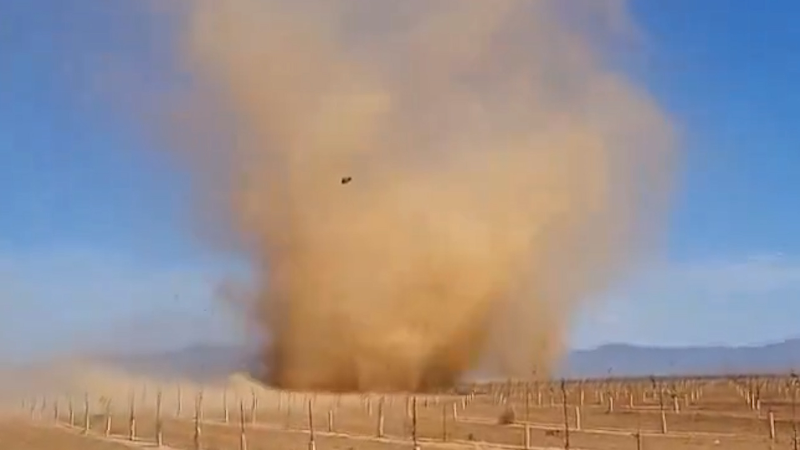
Dust devils roll down Arizona highway

Invisible Iceberg: The mirage that sank the Titanic

Massive waves crash over French seawall
Top Stories
Trending Today
Accuweather early, accuweather prime, solar eclipse 2024.
Severe thunderstorms eyeing the central US
13 hours ago

19 hours ago

Howling winds to raise risk of wildfires, damage over Great Plains
12 hours ago

2 visitors captured on video destroying ancient rock formations at Lak...
17 hours ago

Severe storms to rattle mid-Atlantic into midweek
24 minutes ago

Featured Stories
Infamous wooden plank from 'Titanic' sold for over $700,000
2 weeks ago

Ocean heat driving global coral bleaching event

Mysterious symbols show ancient humans’ awareness of dinosaurs

This fungus can transform cicadas into ‘saltshakers of death’
18 hours ago

Six rare sawfish deaths in 7 days have scientists baffled amid bizarre...

We have updated our Privacy Policy and Cookie Policy .
Get AccuWeather alerts as they happen with our browser notifications.
Notifications Enabled
Thanks! We’ll keep you informed.

IMAGES
VIDEO
COMMENTS
Thailand received the most foreign visitors of all SE Asian countries in 2022. In 2019, the SE Asian tourism industry was booming. When Covid hit, most countries locked down in April 2020. 2021 was the most brutal year. Phuket International Airport closed for Covid lockdowns in April 2020.
Credit: Depositphotos. Before the COVID-19 pandemic, the tourism industry across Southeast Asia was booming. In 2019, the Philippines received 8.2 million foreign visitors, Indonesia 16.1 million ...
Most visited country in Southeast Asia was Indonesia in 2021, with over 1.5 million tourist arrivals. Thailand was on top in 2020 but dropped to second place.
Tourism in Southeast Asia Southeast Asia has fast become a tourist hotspot. The region alone generates huge amounts of income from the tourism industry. In this way, many countries across the ...
The recovery rates of tourism in Southeast Asia varied across countries. Cambodia demonstrated an outstanding recovery, nearly achieving full recovery with a rate of 92.48%. Vietnam and Indonesia also showed strong recovery rates at 82.25% and 74.11%, respectively. Southeast Asia offers a rich tapestry of experiences for travelers.
The number of annual tourist arrivals to Southeast Asia doubled from 2010 to 2019, peaking just before the pandemic at 137 million. This growth was expected to continue at least until 2030, in ...
Northern Vietnam. There are many excellent choices for a 2-week adventure in Southeast Asia. If you've never been to the region, then Thailand and Bali are always a good bet (albeit very touristy). You can check out my Thailand itinerary for a rough template for a 2 week or longer trip to Thailand.
Part of the problem for Southeast Asia's tourism industry is that China, a major source of visitors, has imposed so many restrictions on its citizens who travel overseas — including a 14-day ...
Southeast Asia's culture is dominantly influenced by the Indians and Chinese as well as its colonizers, and also natives of the Malay archipelago. For at least 2000 years (and to this day), Southeast Asia has acted as a conduit for trade between India and China. Large-scale immigration, however, only began with the advent of the colonial era.
14. Chiang Mai, Thailand. 15. Hanoi, Vietnam. Map of Places to Visit in Southeast Asia. 1. Angkor Wat, Cambodia. Buddhist monk in Angkor Wat. Located in northwestern Cambodia, the city is best known for being the gateway to the Angkor region, but Siem Reap has much to offer on its own.
It's also a safe and cheap place to travel, meaning that Southeast Asia is a great place for first time travellers getting to grips with backpacking and those on a budget. Southeast Asia has been on my bucket list for years and in 2022, I spent 7 months travelling in Thailand, Vietnam, Cambodia, Malaysia and Indonesia. Based on my experience ...
Laos is the perfect destination for adventurers. Thanks to its many pristine jungles and karst mountain landscapes, it may well be the best country in mainland Southeast Asia for hiking and trekking. It's also an excellent place for other outdoor activities like kayaking, zip-lining, caving, and rock climbing.
Southeast Asia has long been a travel spot for many thanks to its idyllic beaches with pure white sand, turquoise oceans, authentic food and a culture full of history and diversity. While all areas of the region are arguably a must-see, we've ranked the best countries to visit according to beauty, magic, and less crowds. 10. Brunei
An overview of the best places to visit in Southeast Asia: 29. Vientiane [SEE MAP] james_antrobus / Flickr. Vientiane, the capital of Laos, is located on the Mekong River near the border with Thailand. A former French holding, it is a graceful city that is now the country's economic center. Visitors to Vientiane won't want to miss the Pha ...
A one-day pass is $37 USD, while a 1-week pass is $72 USD. If you're here for multiple days, be sure to hire a driver and see some of the more out of the way ruins away from the main temple complex (and the crowds). 2. Explore Bangkok. Bangkok is the hub of travel activity in Southeast Asia.
These fares are affordable (in many cases, $20 or less for a one-way fare) and will minimize your travel time so you can spend more time enjoying your trip. Use airport Wikipedia pages to figure out what your options are to hop around Southeast Asia. Thrifty Tip #3: Not all budget airlines are created equal.
Southeast Asia has some of the most beautiful beaches, waterfalls and sunsets in the world, as well as volcanoes, jungles, caves, unique animals, lively nightlife and some of the best scuba diving in the world. And it's the ultimate budget traveler's destination because it's very affordable to travel. Southeast Asia really is the full ...
Top 10 Places to Visit in Southeast Asia. Below are my top 10 destinations to visit in Southeast Asia that should be at the very top of your bucket list. Angkor Wat, Cambodia. Luang Prabang and nearby Kuang Si Waterfalls in Laos. Halong Bay in Vietnam.
His storytelling is influenced by a wide range of interests, which gives his work a unique and engaging style. Discover the best places to visit in Southeast Asia: #1 Bangkok, #2 Bali, #3 Phuket, #4 Luang Prabang, #5 Koh Samui, #6 Pattaya #7 Phnom Penh, and much more!
Southeast Asia is full of surprises and hidden treasures, and two months will allow you to truly embrace the spirit of adventure in this captivating region. 3-Month Itinerary. If you have three months to explore Southeast Asia, you have the luxury of time to fully immerse yourself in the diverse countries and cultures of the region.
Thailand, obviously, is on the list. Phuket may not be serene anymore, but it is still a hot spot for fun. Bangkok, as the backpacking travel hub of Southeast Asia, has plenty of nightlife to satisfy the desire for a crippling hangover. Head to Khao San Road for a plethora of grimy options to start the night.
UPDATE: 2023/04/23 7:00 PM EST BY BRIDGET O'NEILL Now, Discover 14 Of The Most Beautiful Southeast Asia Destinations. Choosing the best places to visit in Southeast Asia is no easy feat.
Within this broad outline, Southeast Asia is perhaps the most diverse region on Earth. The number of large and small ecological niches is more than matched by a staggering variety of economic, social, and cultural niches Southeast Asians have developed for themselves; hundreds of ethnic groups and languages have been identified. Under these circumstances, it often is difficult to keep in mind ...
China emerges as the preferred choice over the U.S. if the Southeast Asia region were forced to align itself in the ongoing U.S.-China conflict, new survey findings showed. This is the first time ...
Southeast Asia is pretty liberal, and you can wear whatever you want in many places. In popular destinations like Phuket, Thailand, and Bali, Indonesia, lots of tourists walk around in bikini tops ...
Read more: Cheapest Way to Travel to Southeast Asia. 2. Koh Phi Phi Islands, Thailand. This archipelago that encompasses a total of six islands is by far one of the most beautiful ones in this part of Thailand. That's not saying that other places nearby like Phuket or Krabi Town don't have much going on.
A backpacker walks through the Khao San Market in Bangkok, Thailand. Tile Pile passes on his beginner backpacking tips for Southeast Asia to his son as he starts his first solo trip.
Thailand is looking to boost tourism across Southeast Asia with a new visa scheme. The Asian nation is advocating for a Schengen-style visa along with five neighbouring countries. If the proposed ...
It's water festival time in Thailand where many are marking the country's traditional New Year, splashing each other with colorful water guns and buckets in an often raucous celebration that draws thousands of people, even as this year the Southeast Asian nation marks record-high temperatures causing concern.
Sweltering heat is back in Southeast Asia, one of the regions most vulnerable to climate change. And it is not going away any time soon, scientists have warned. Home to more than 675 million ...